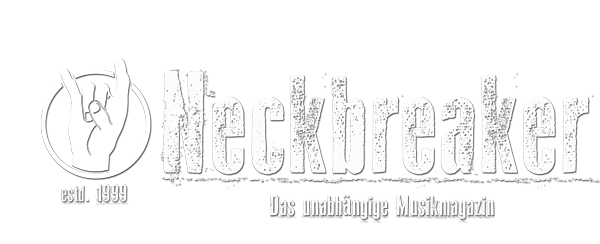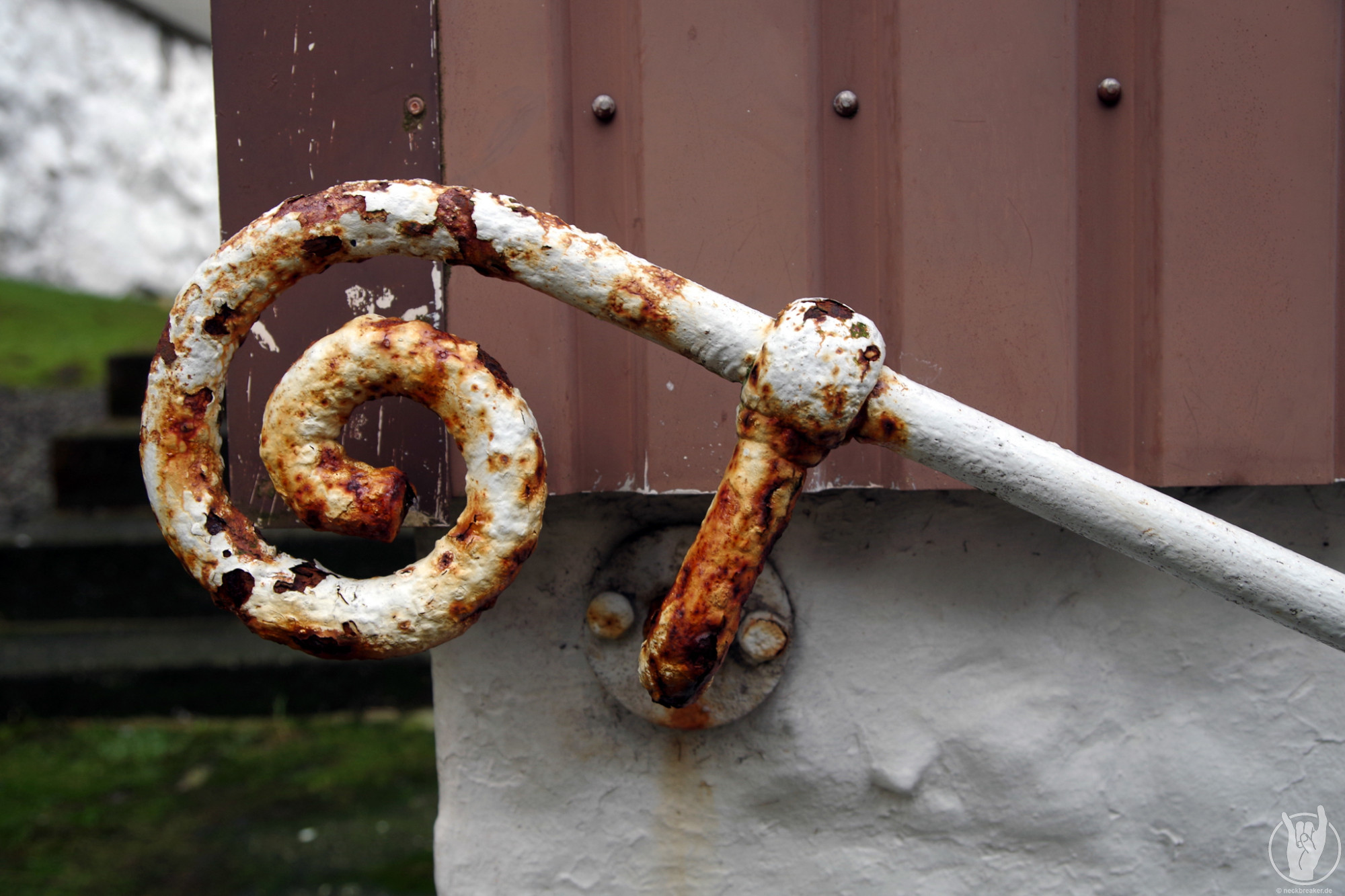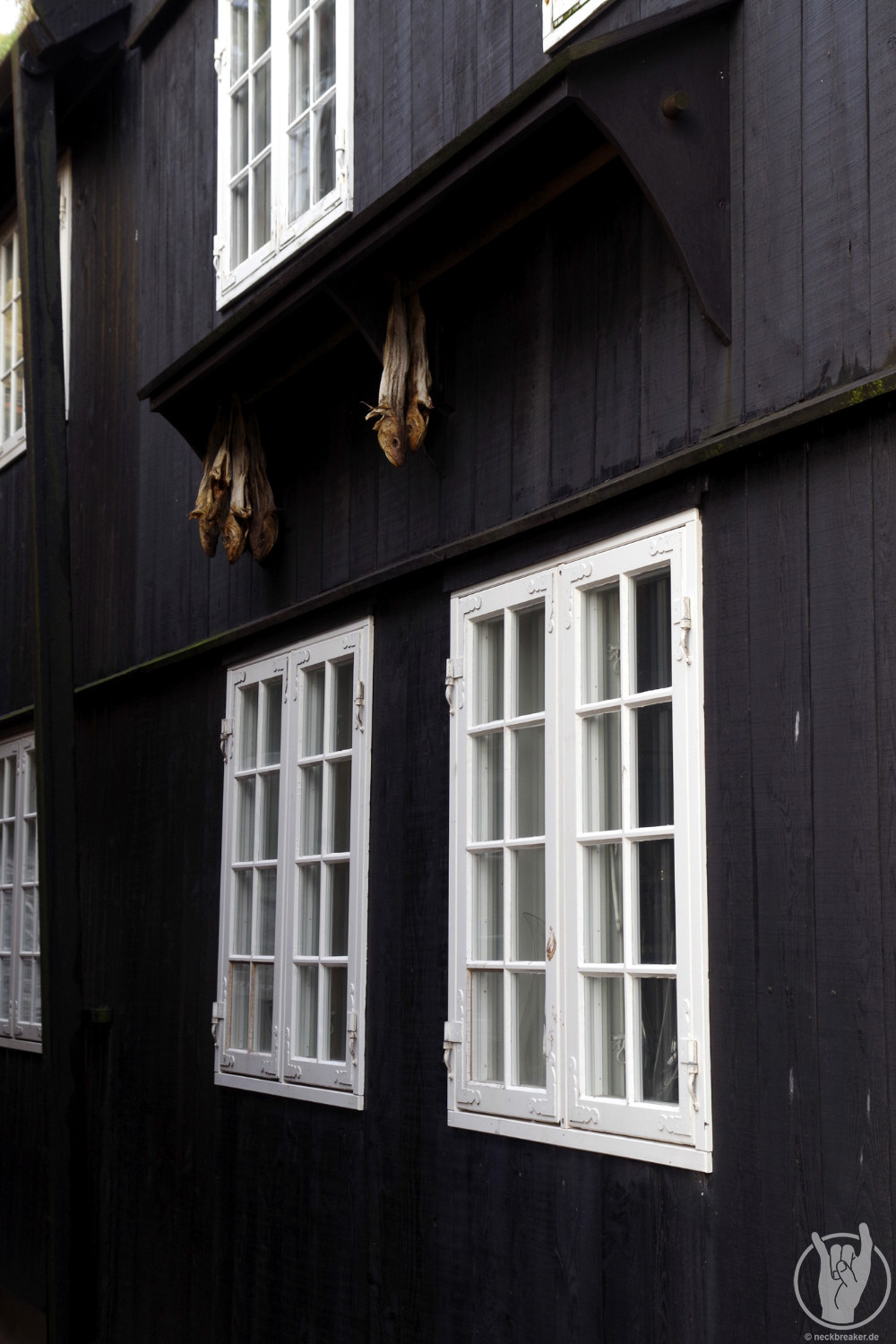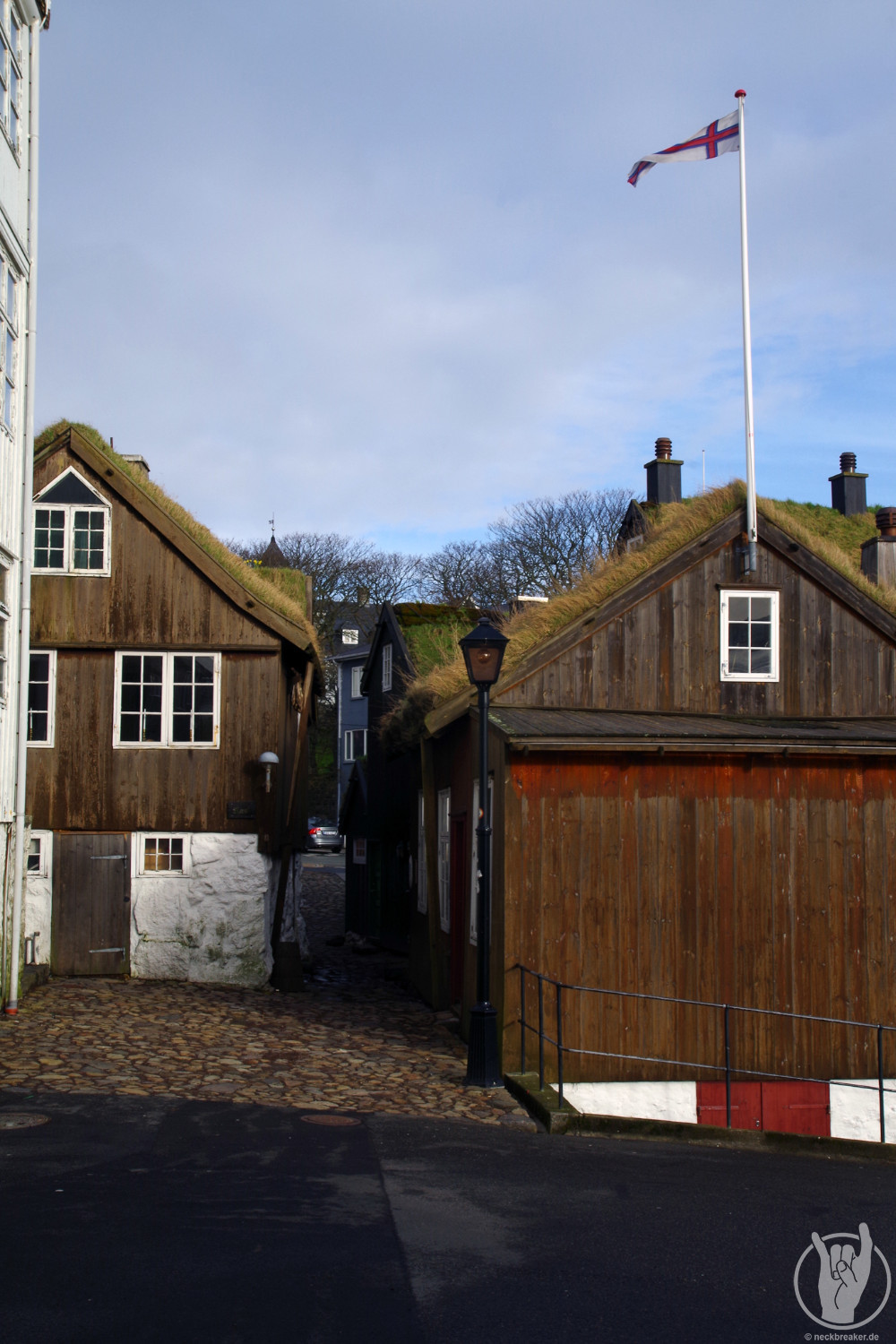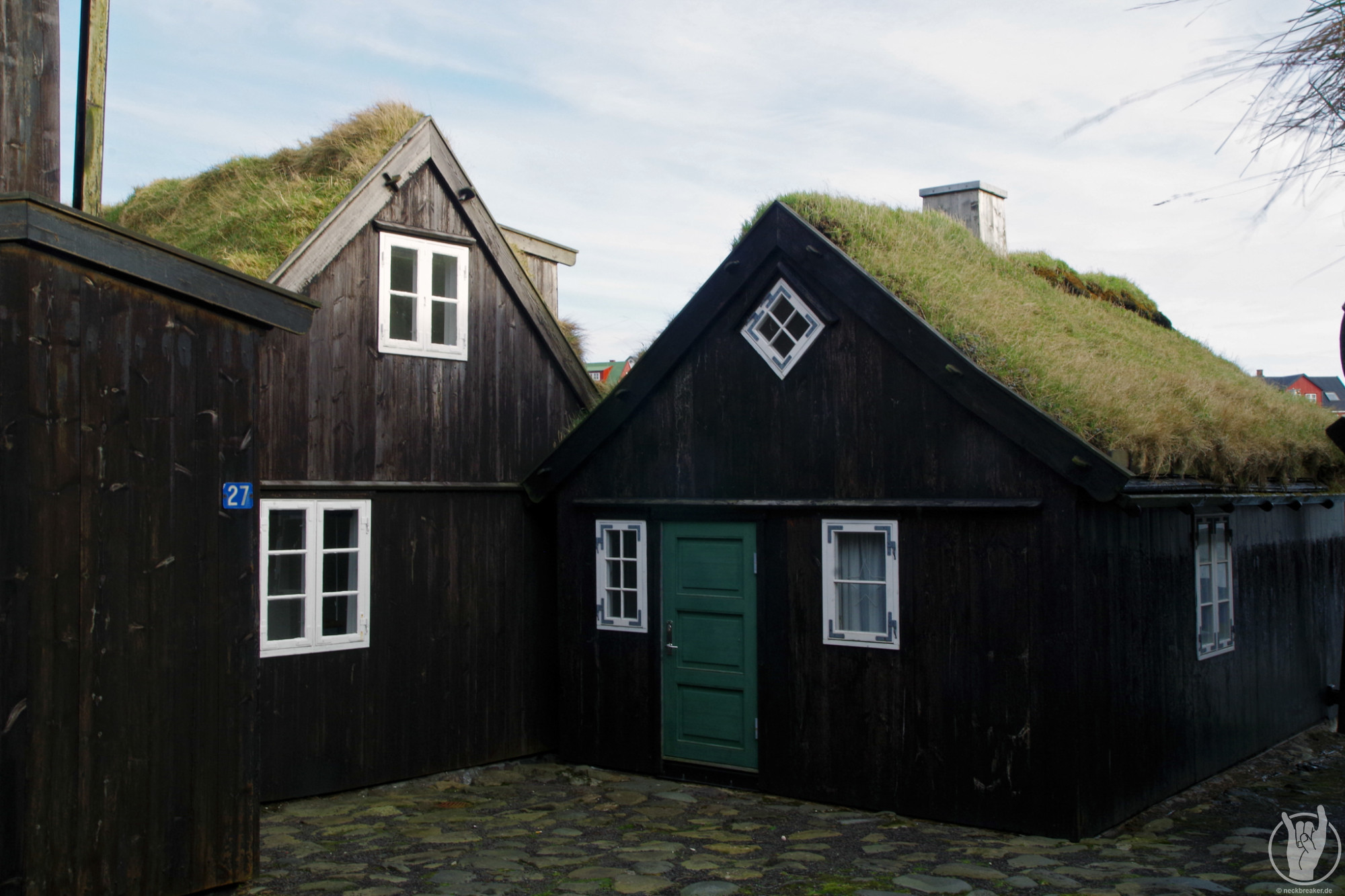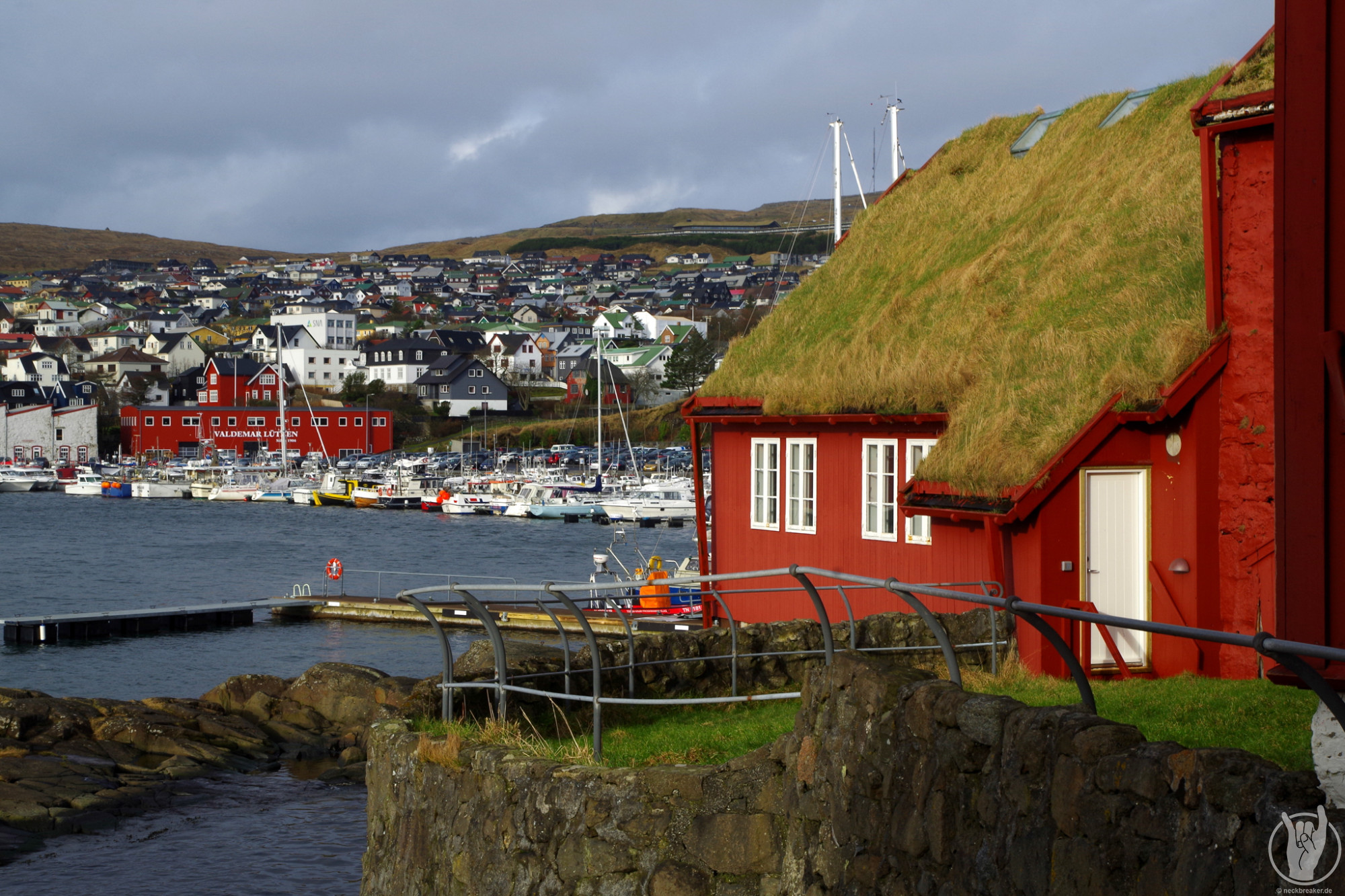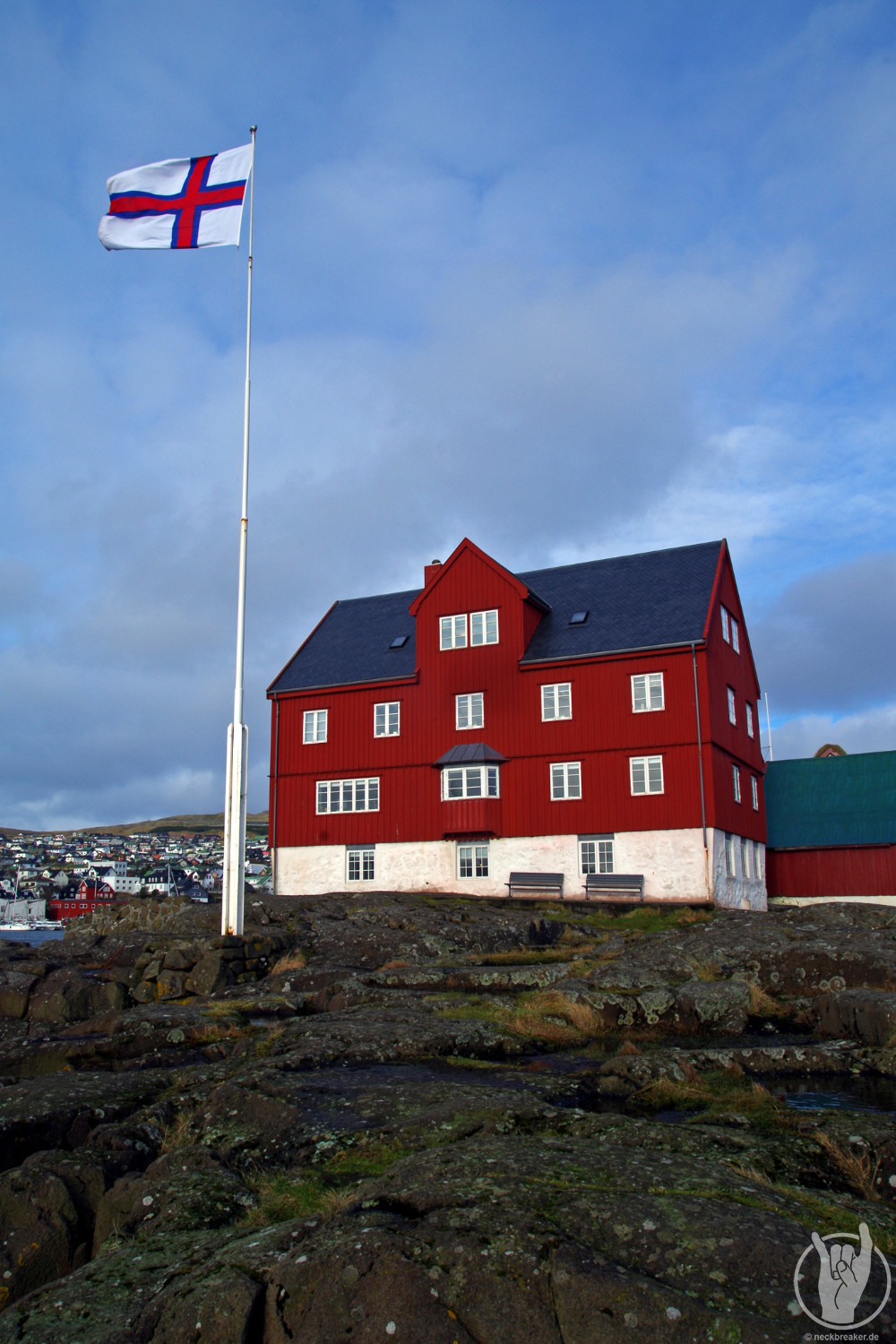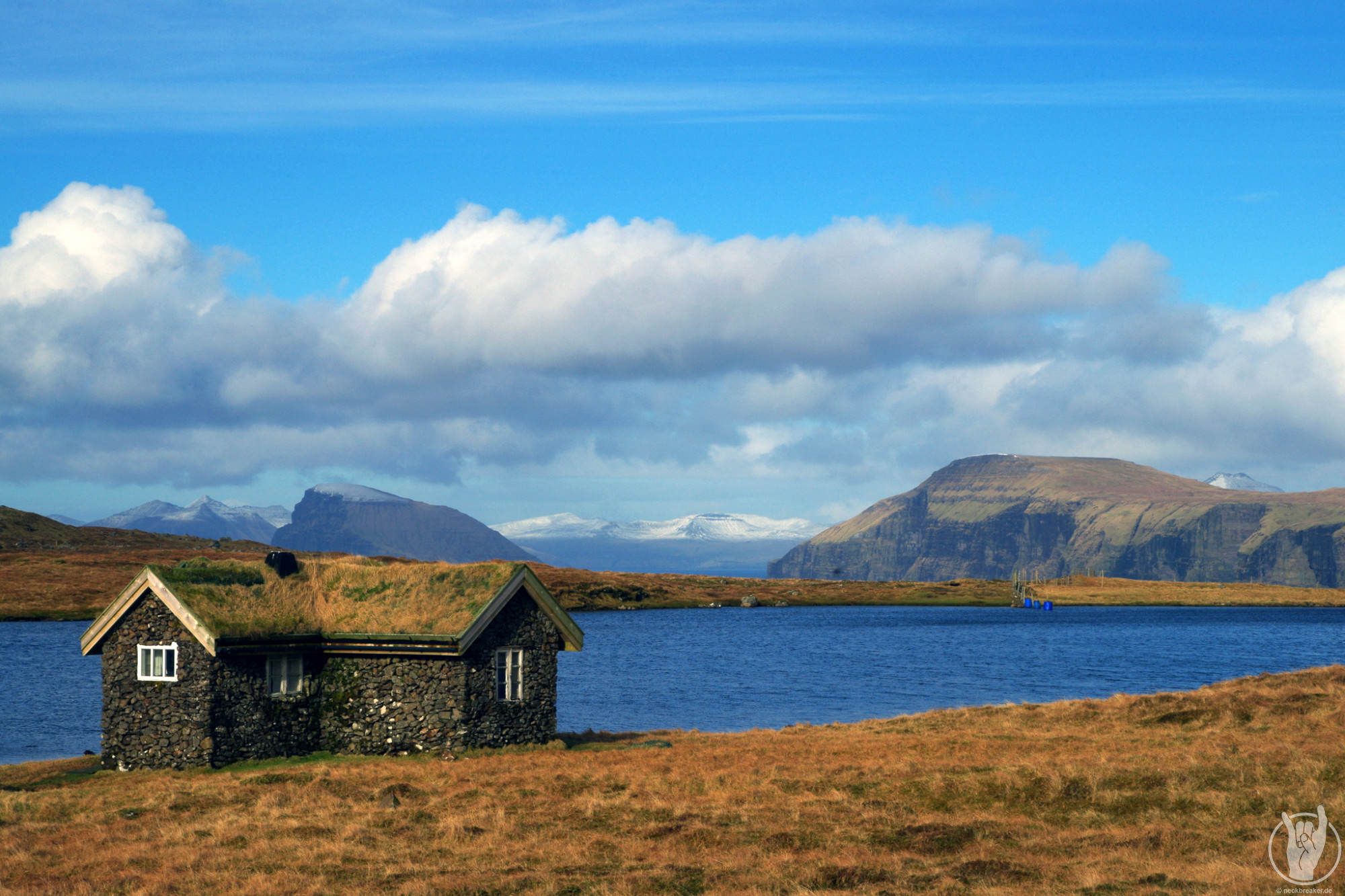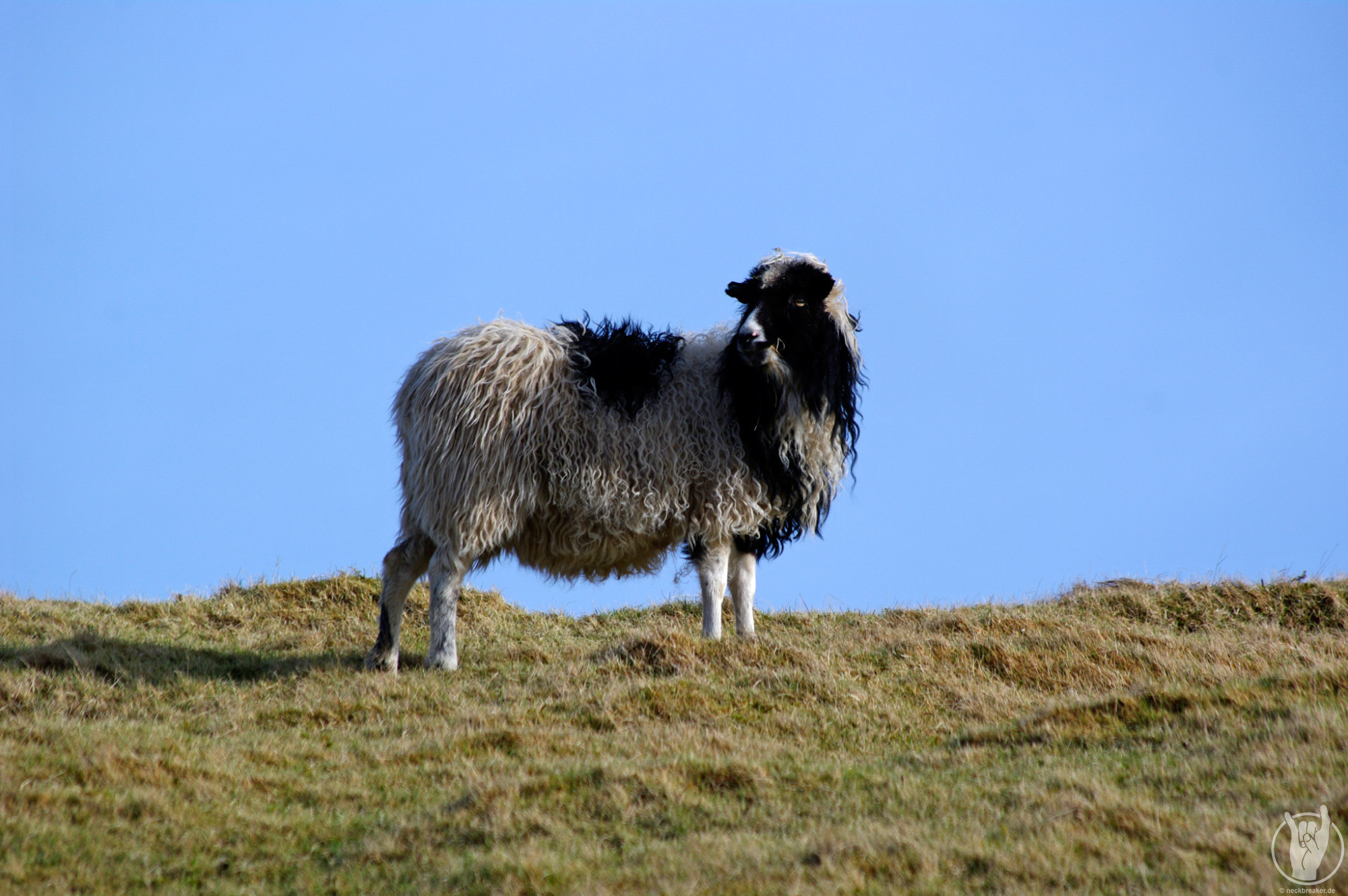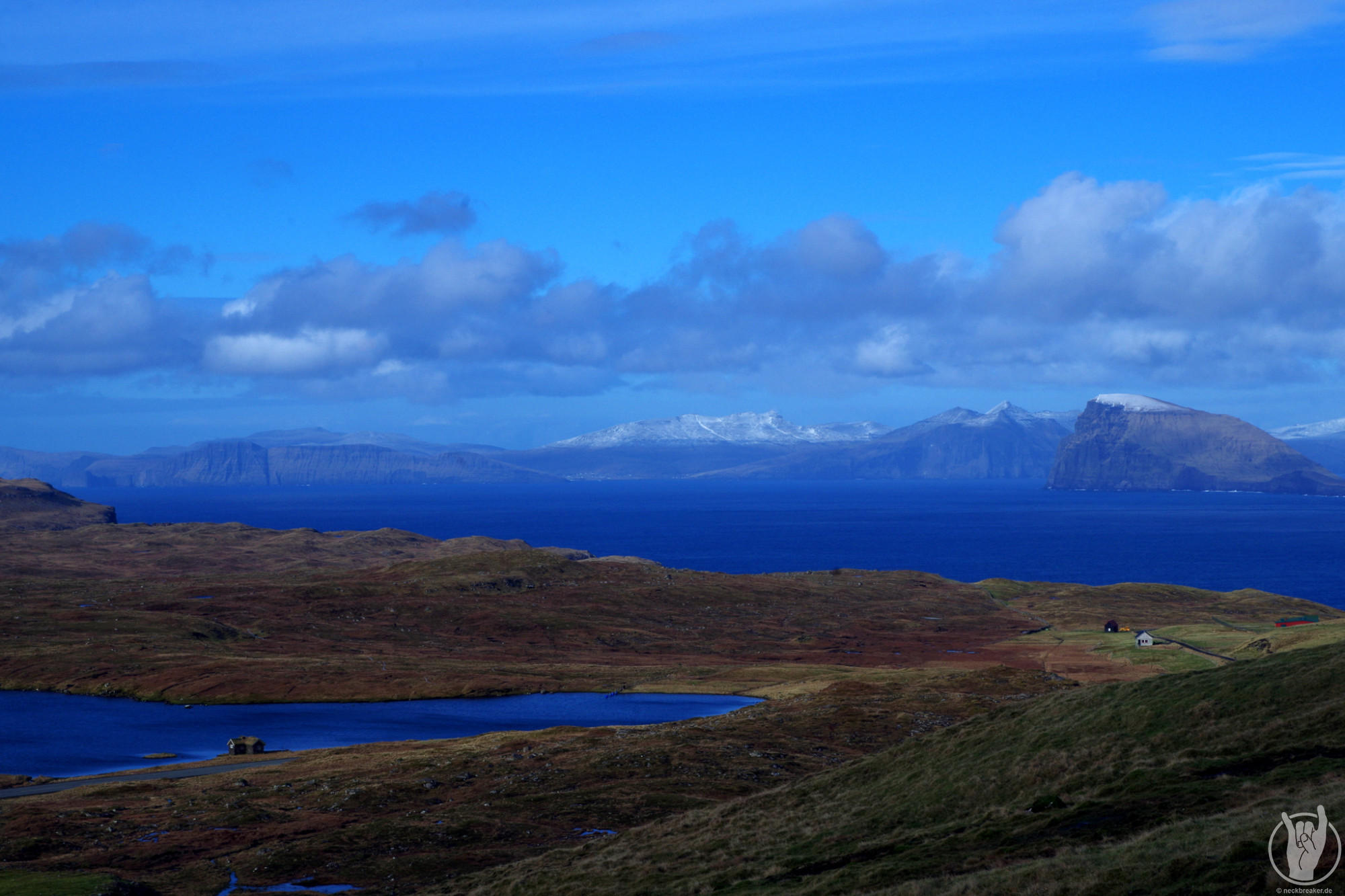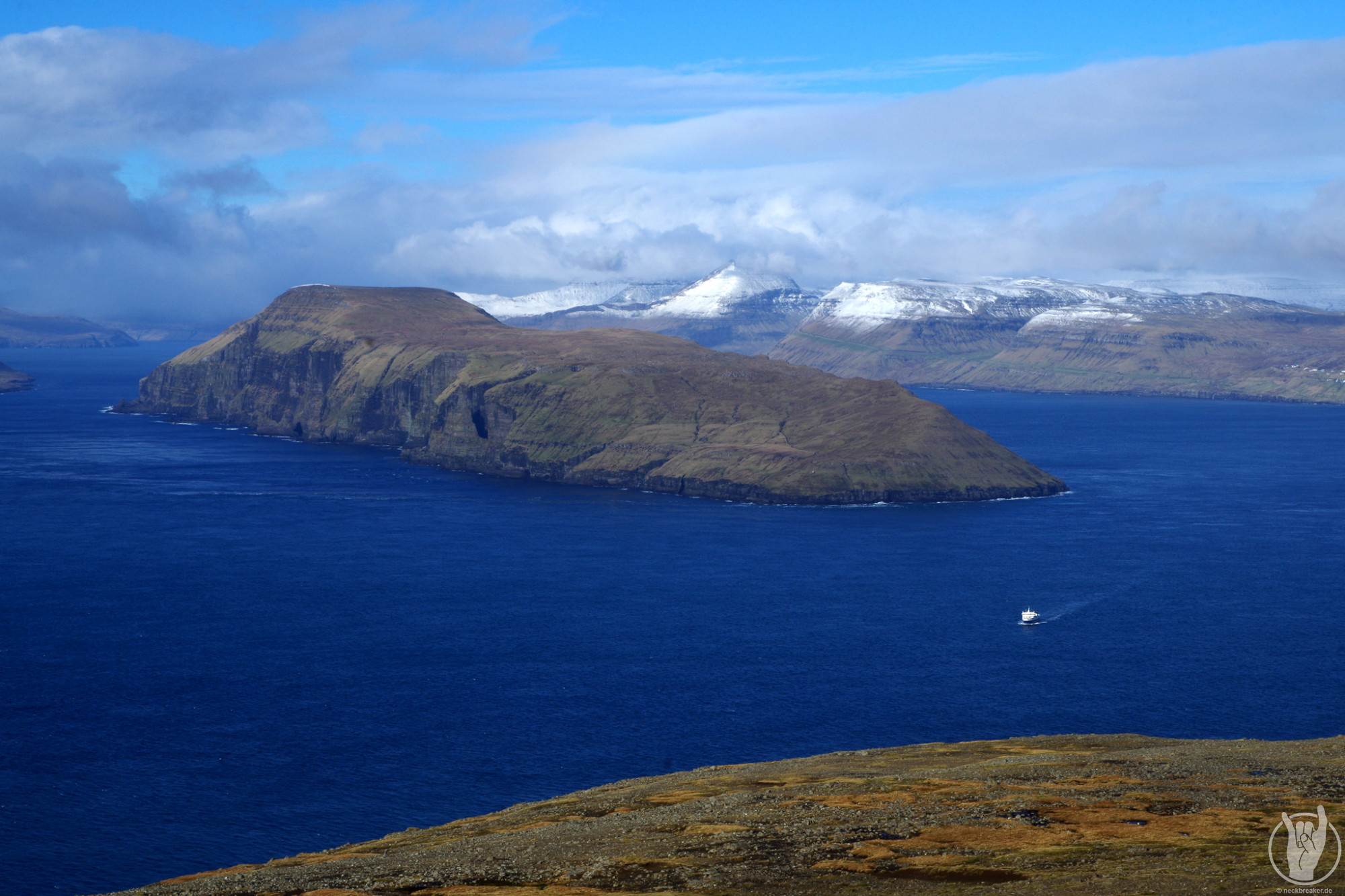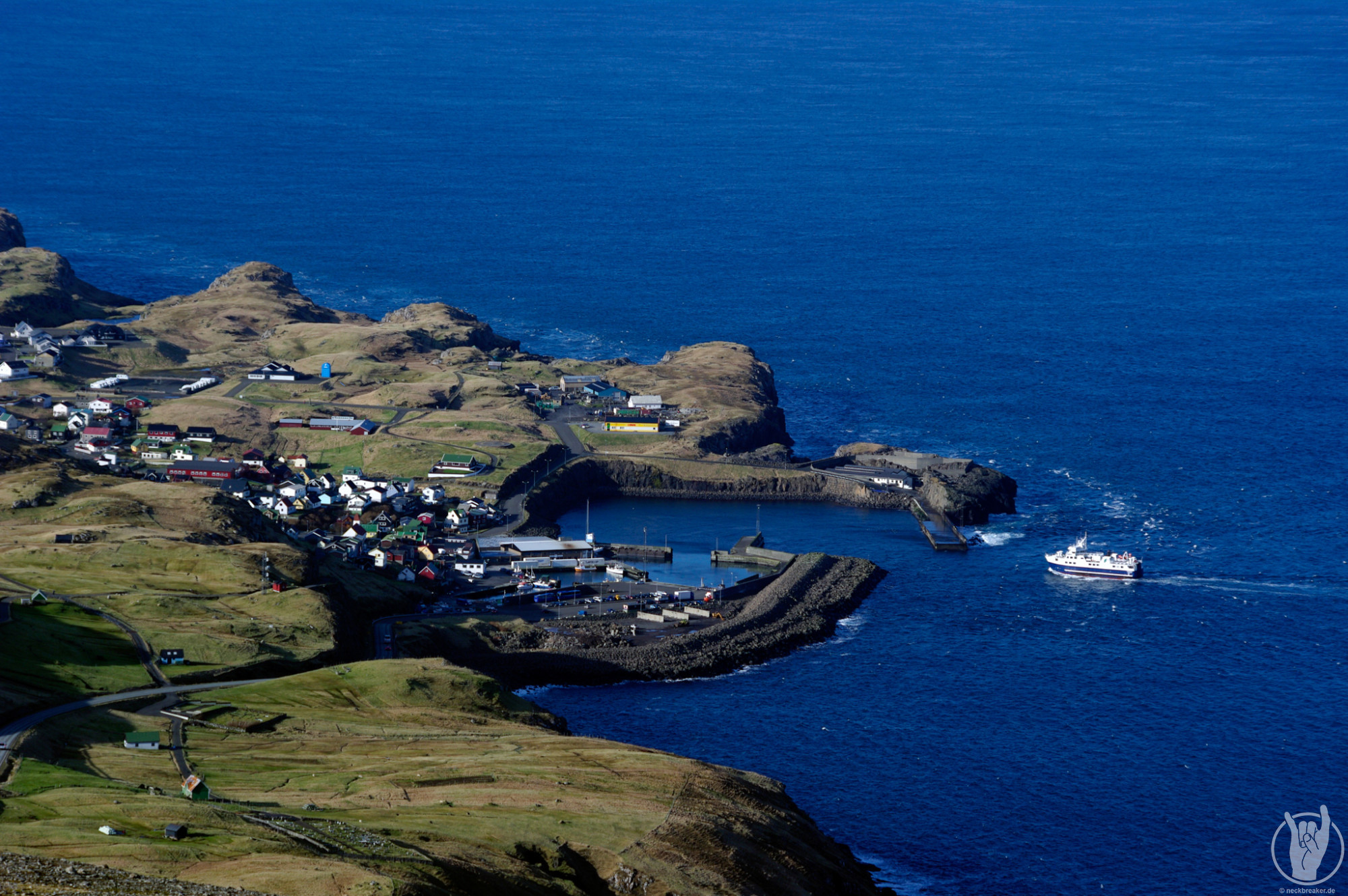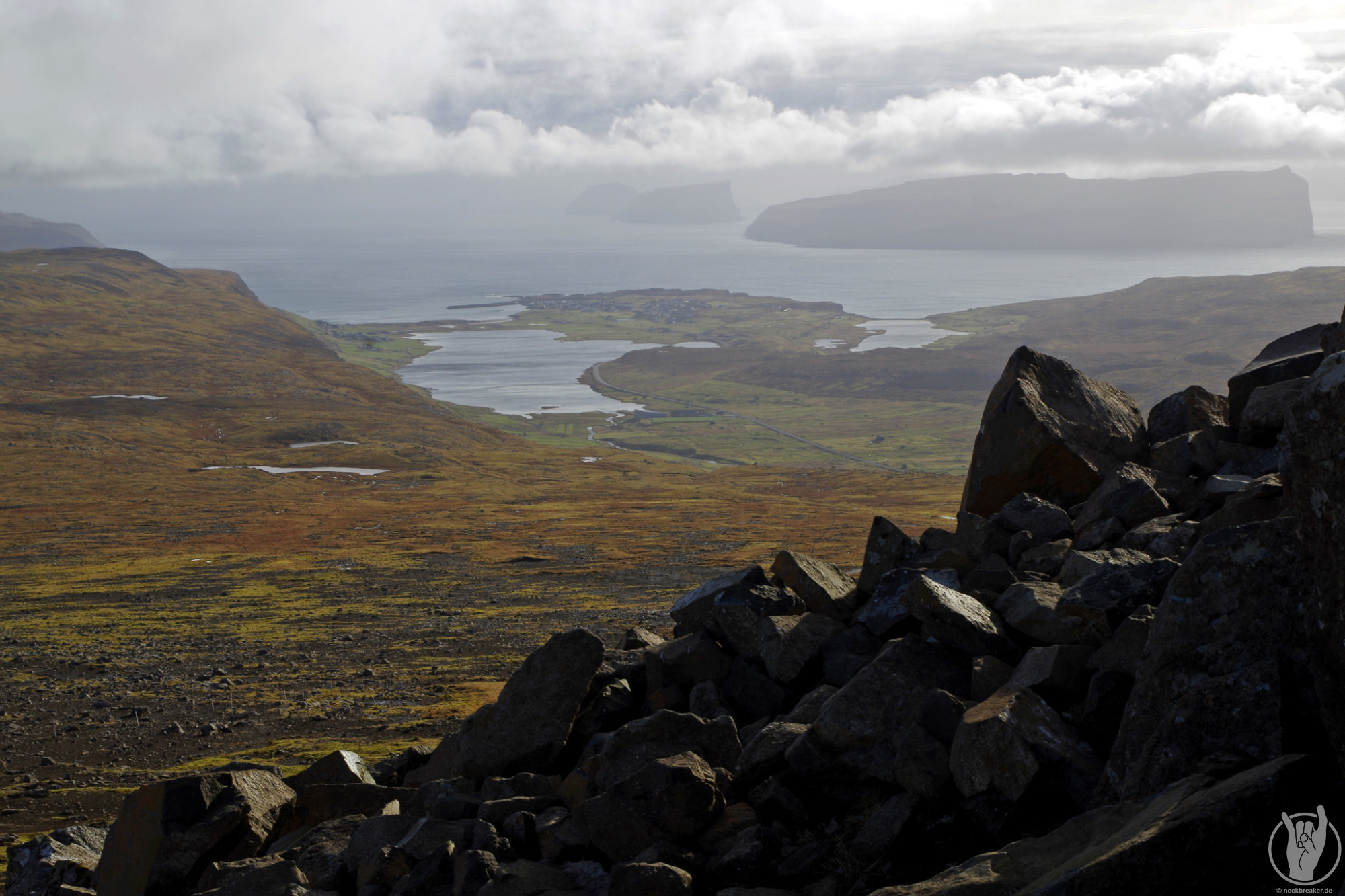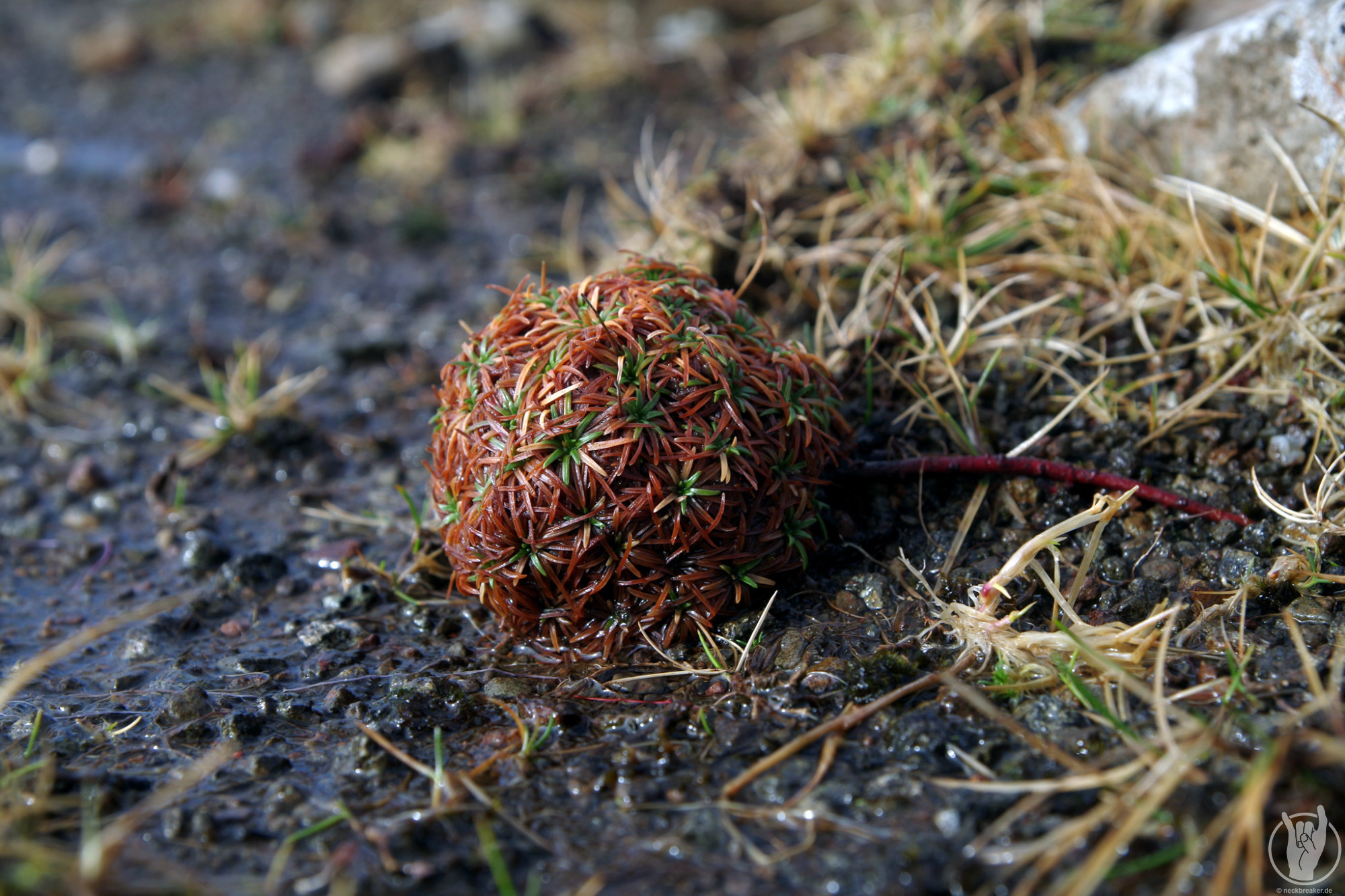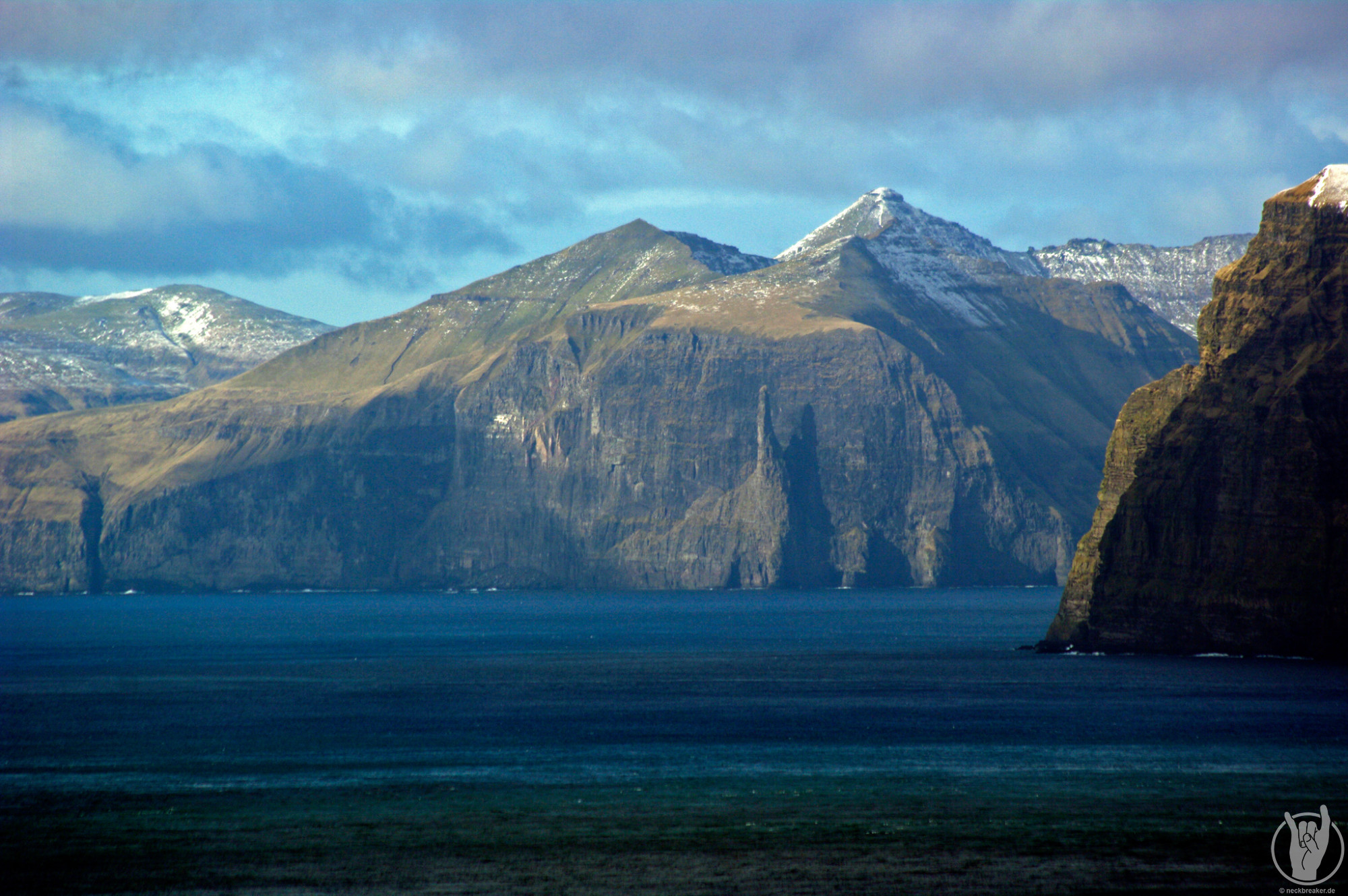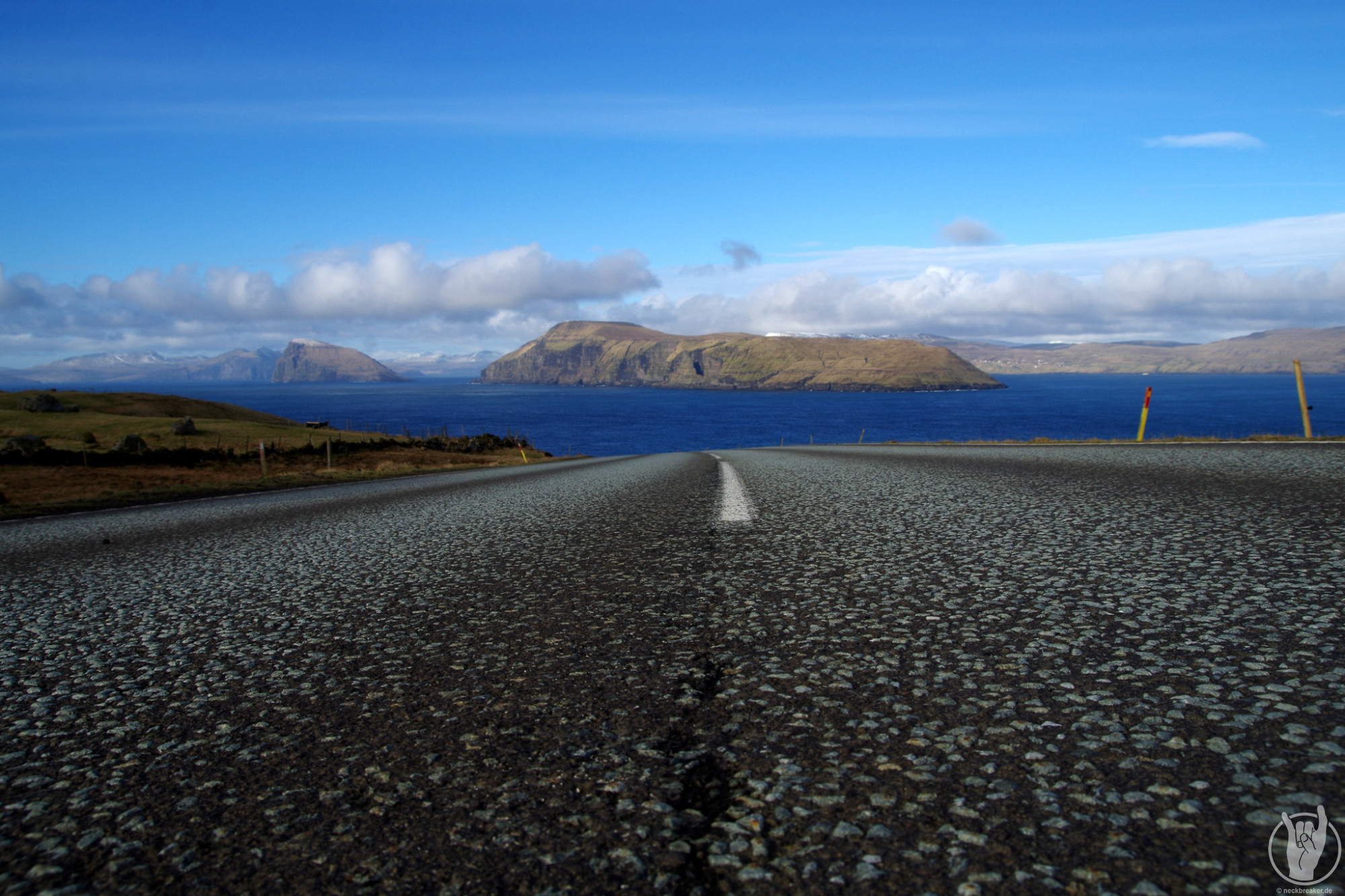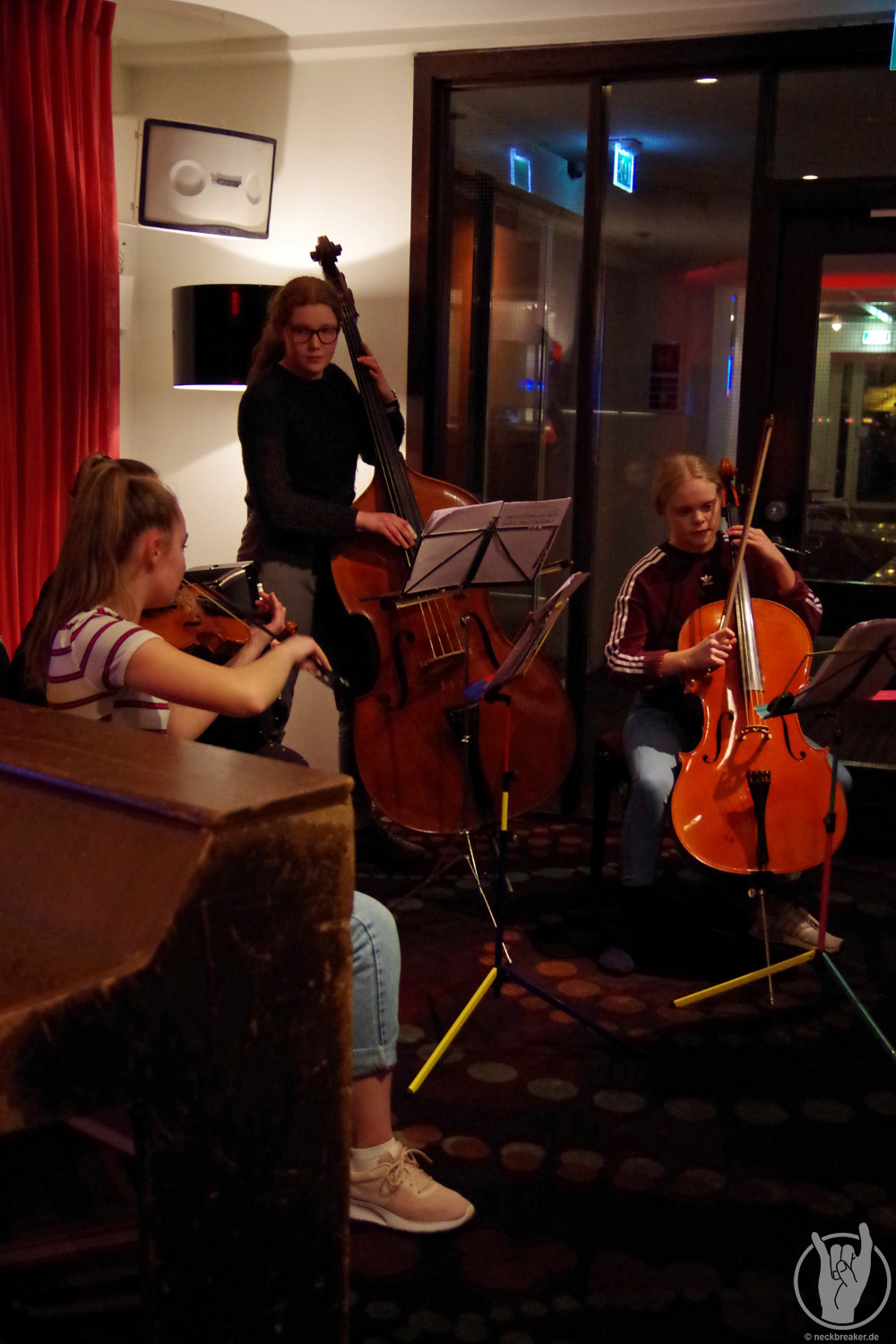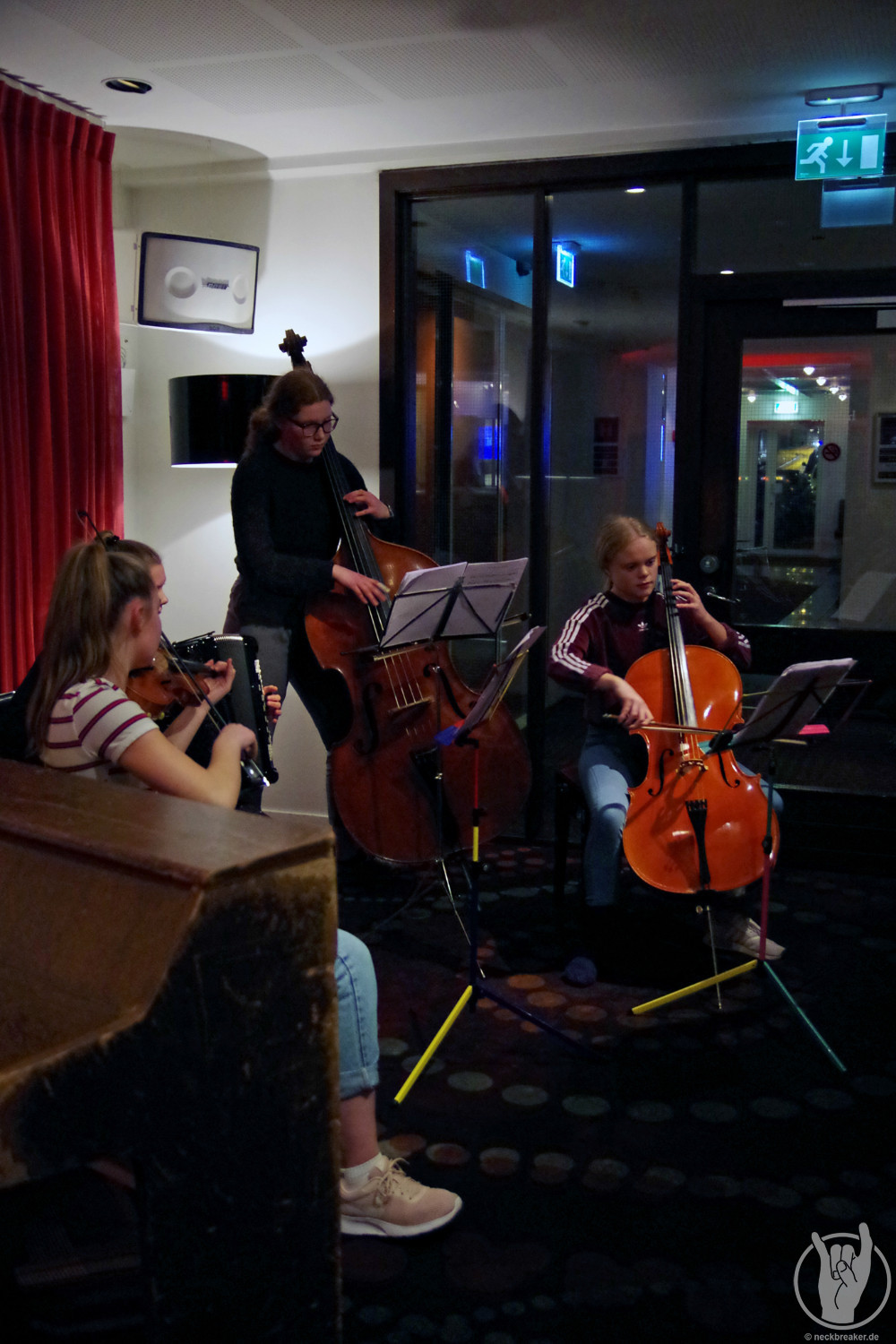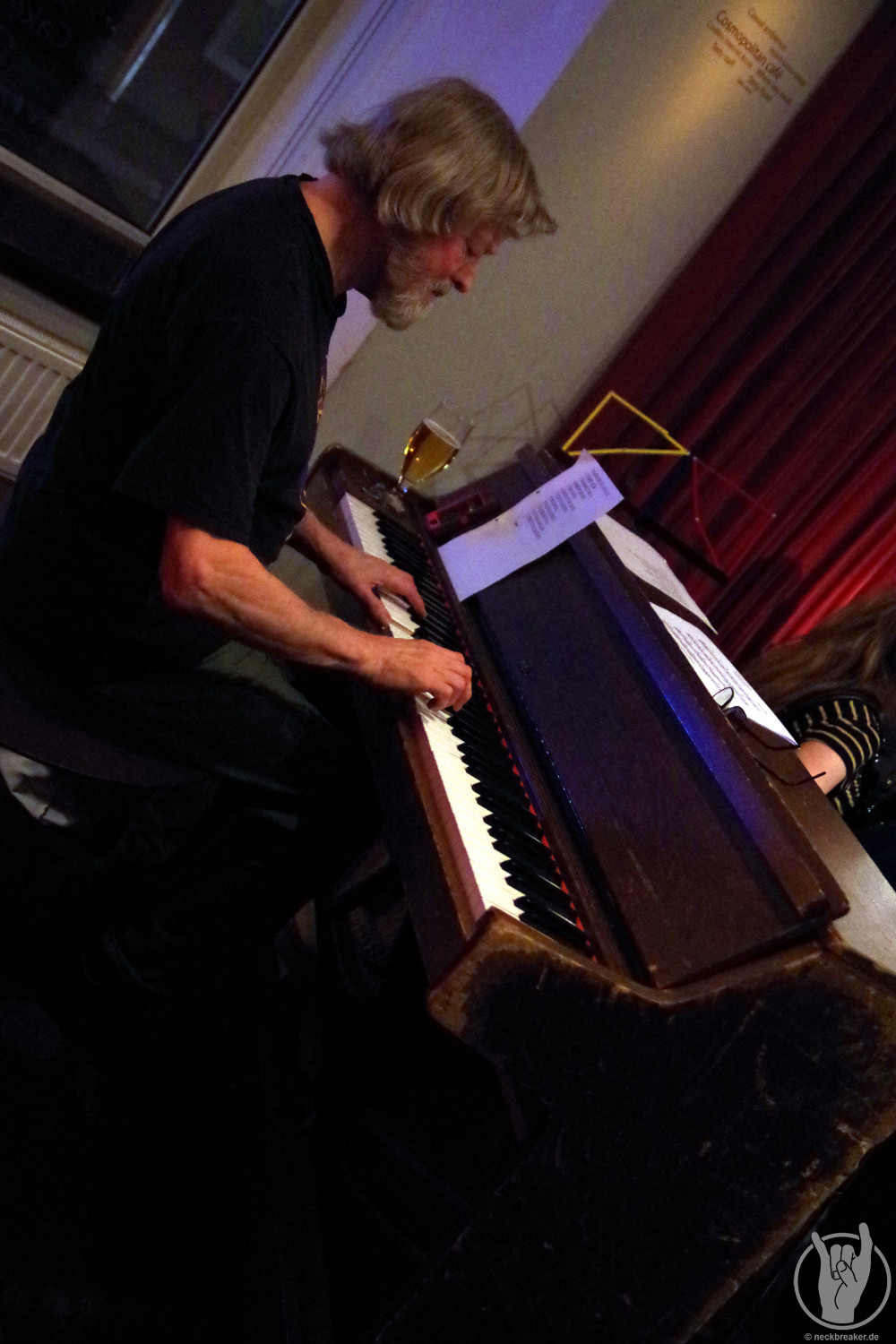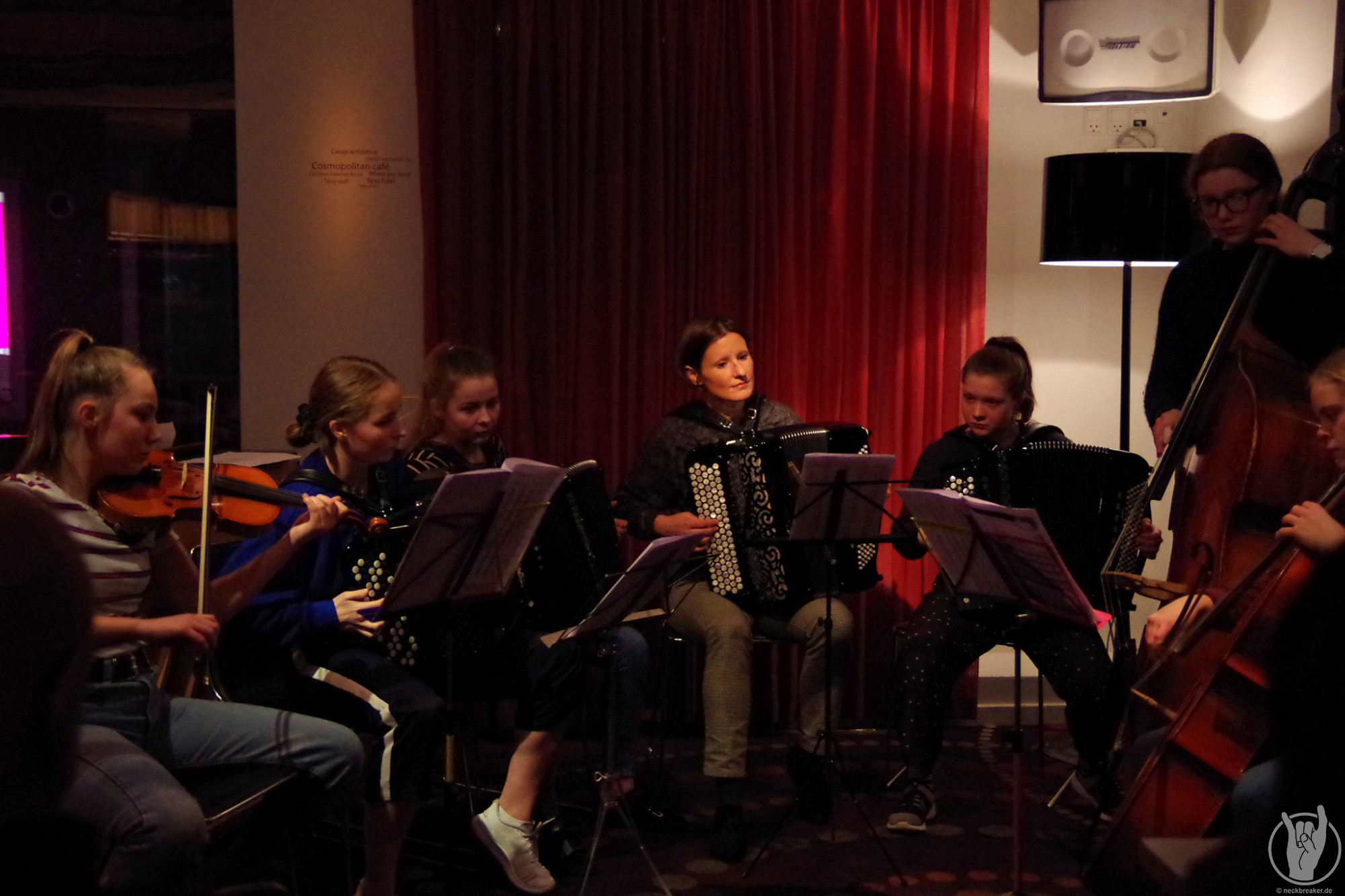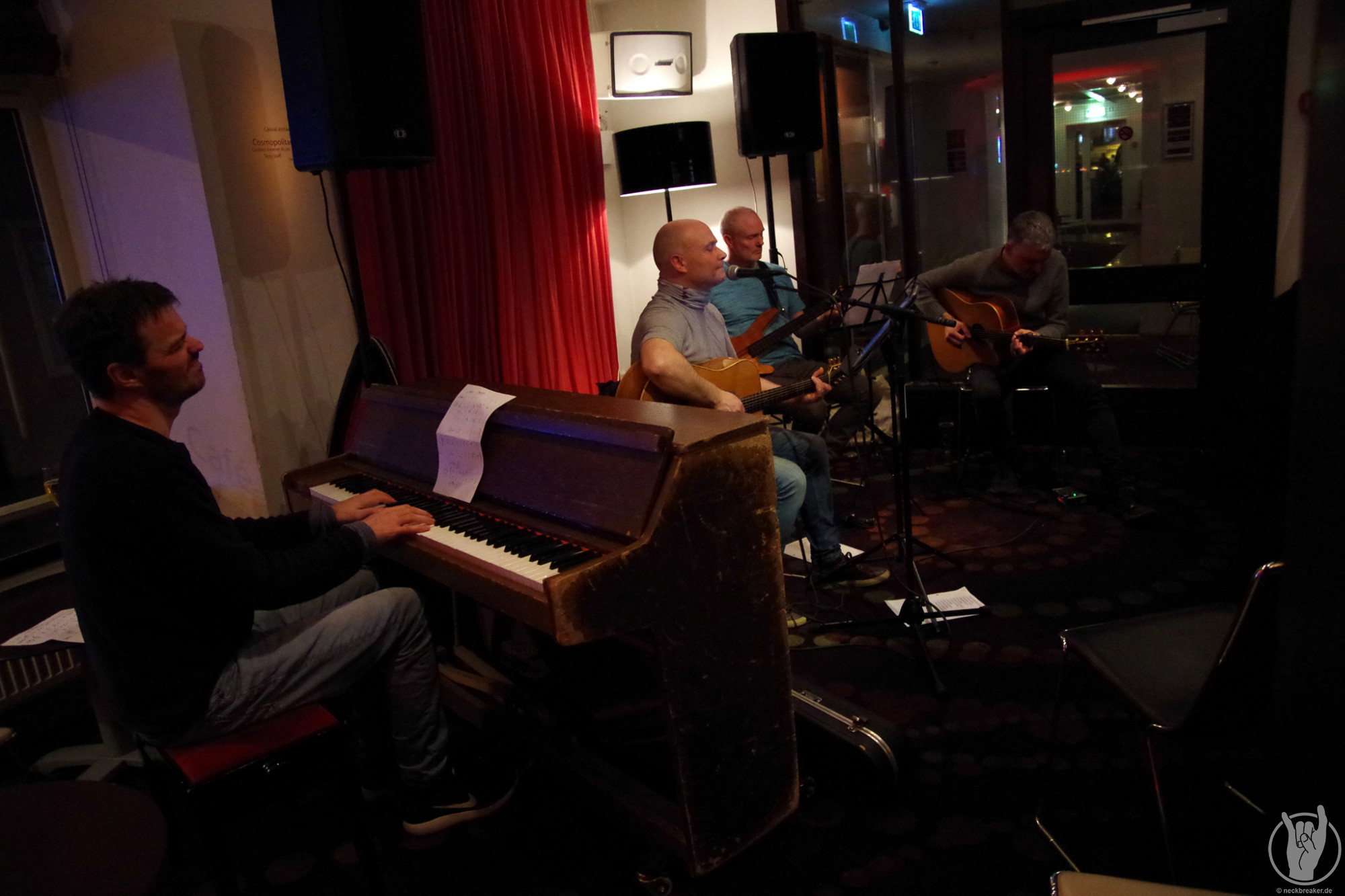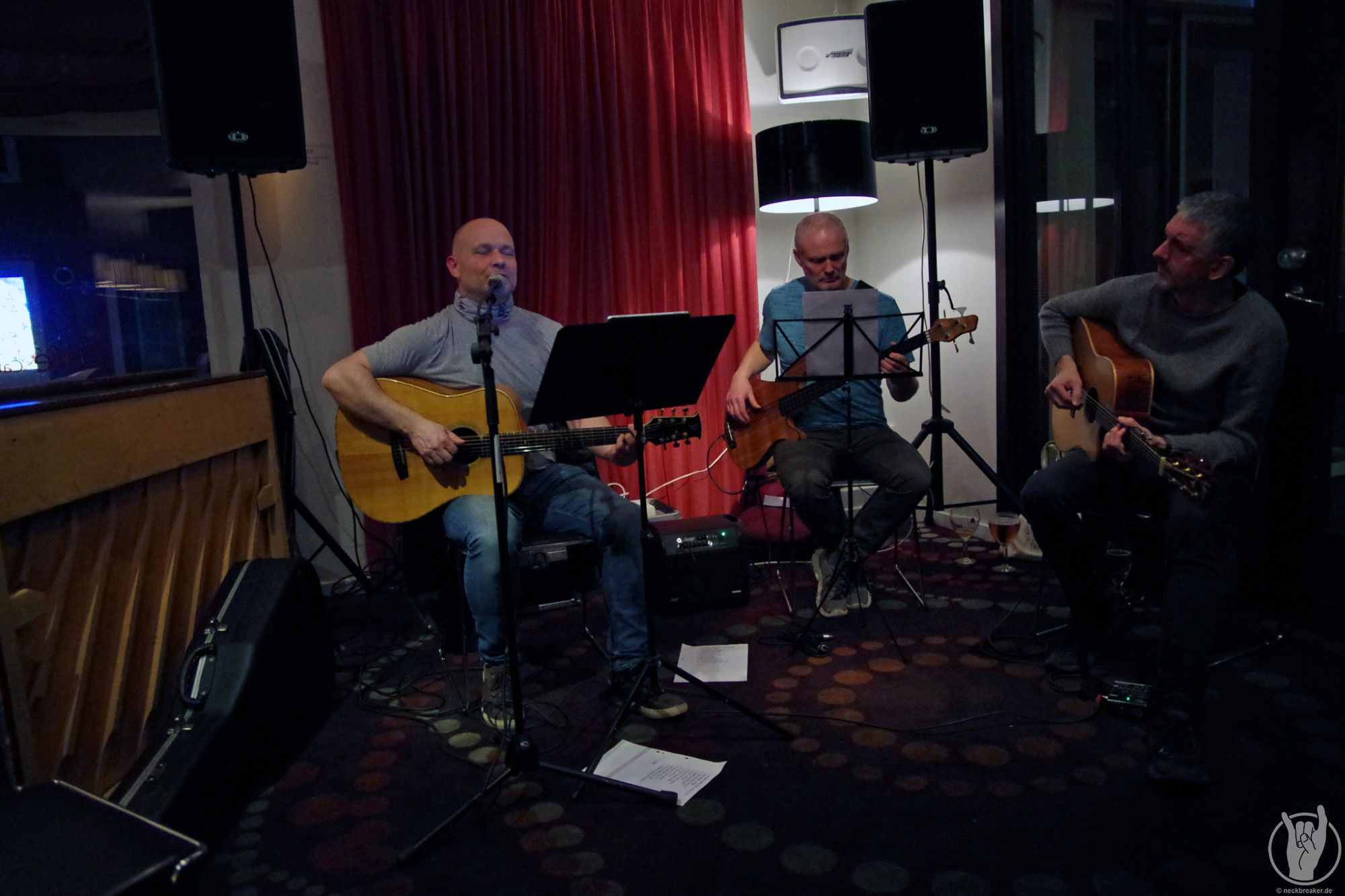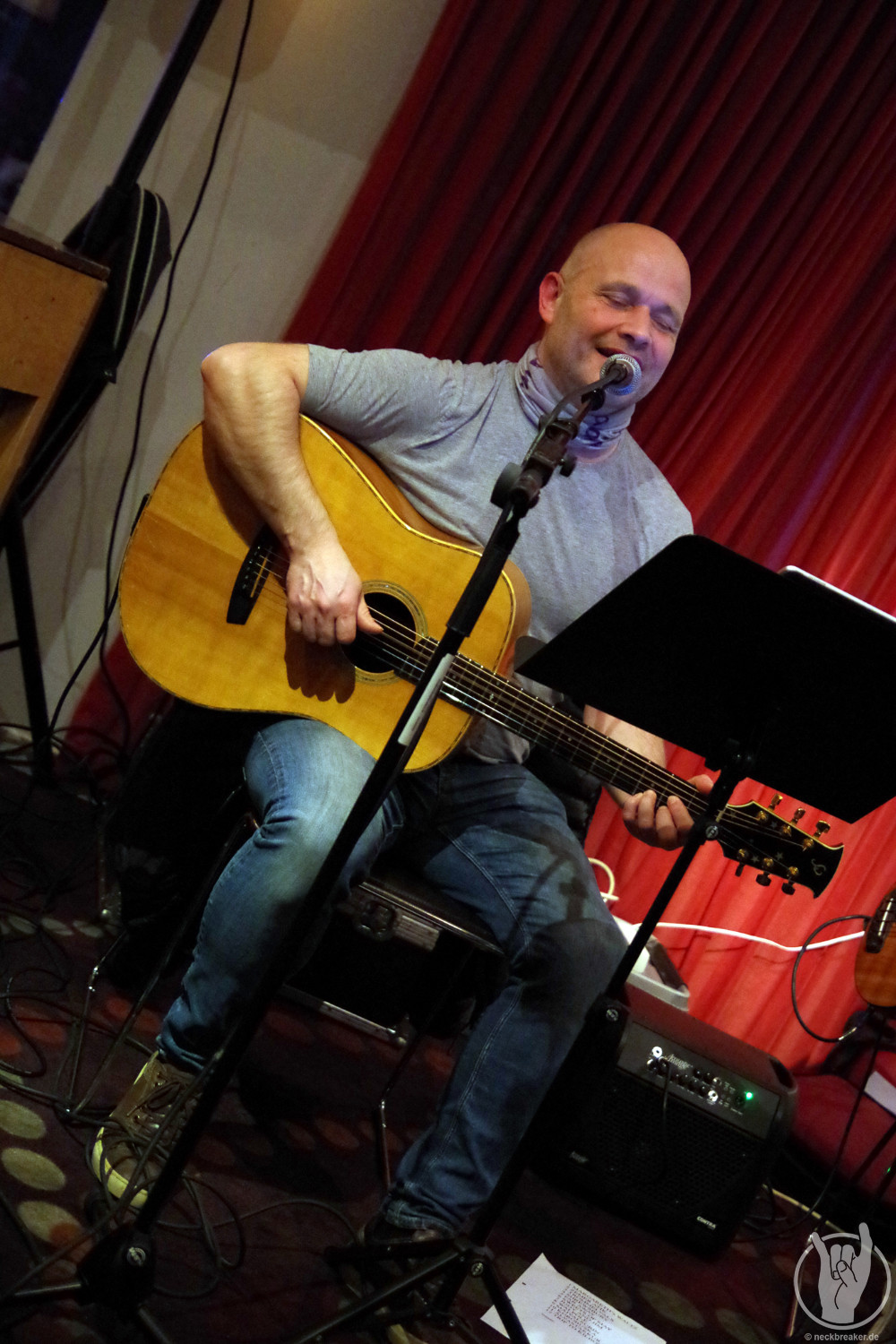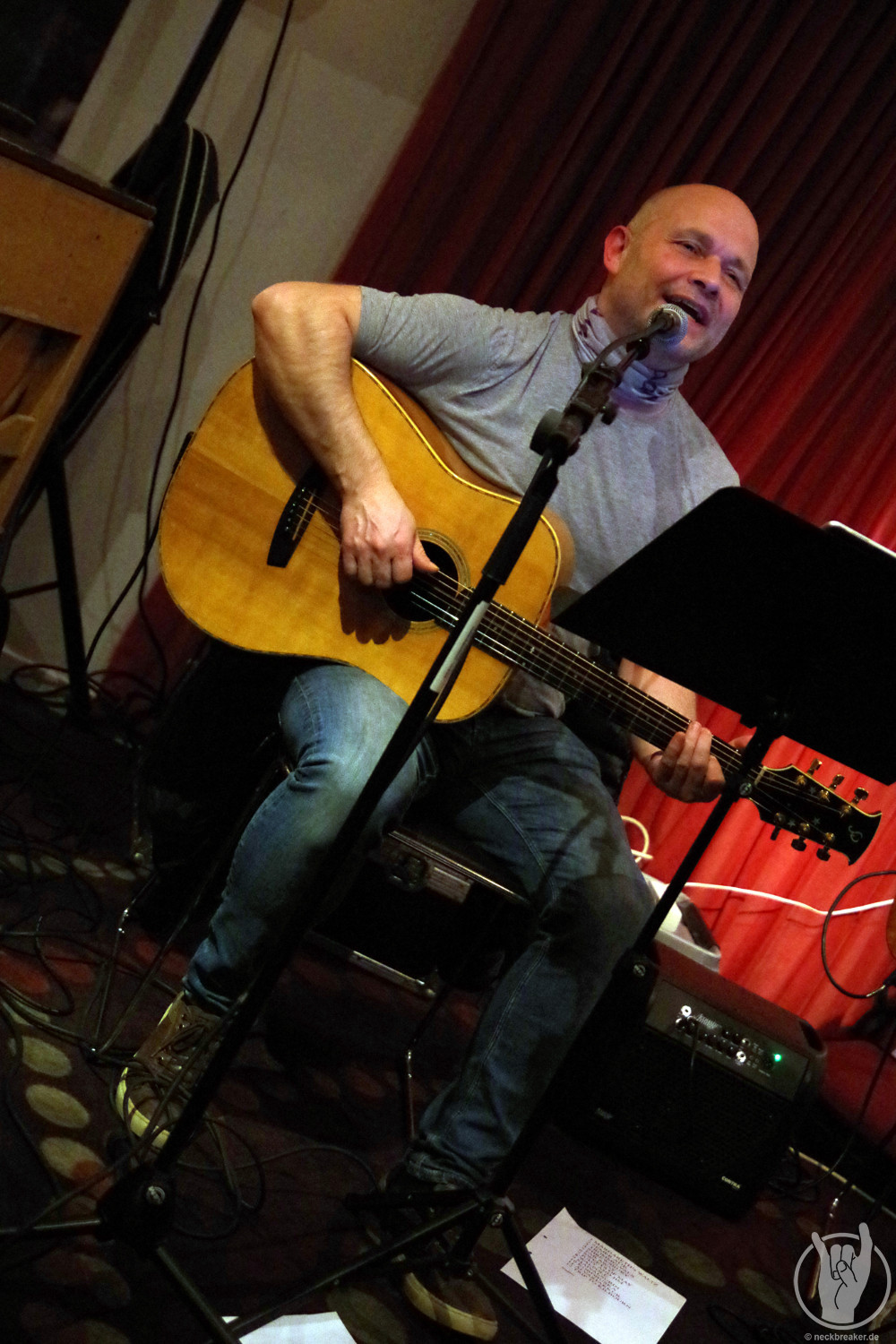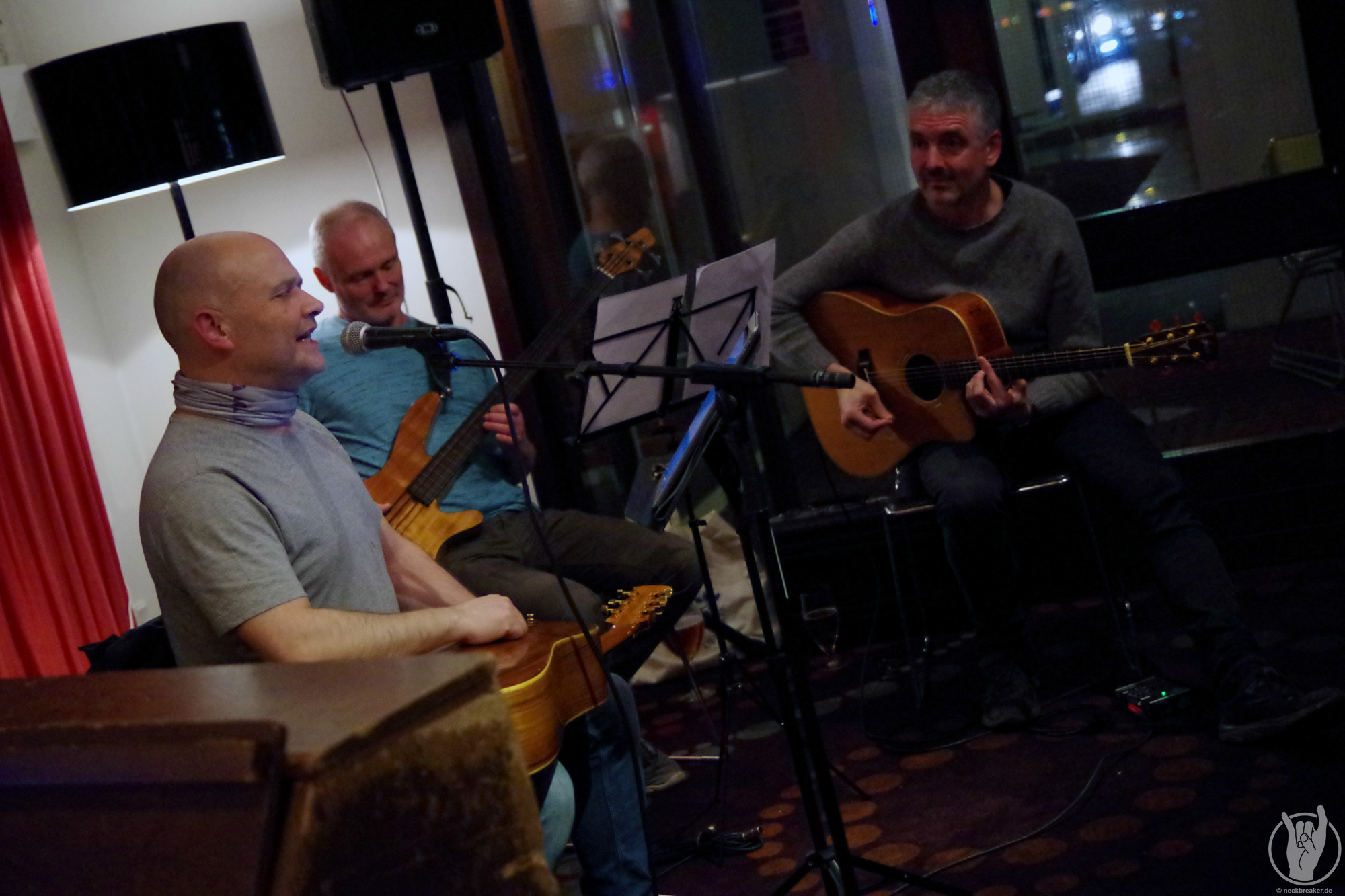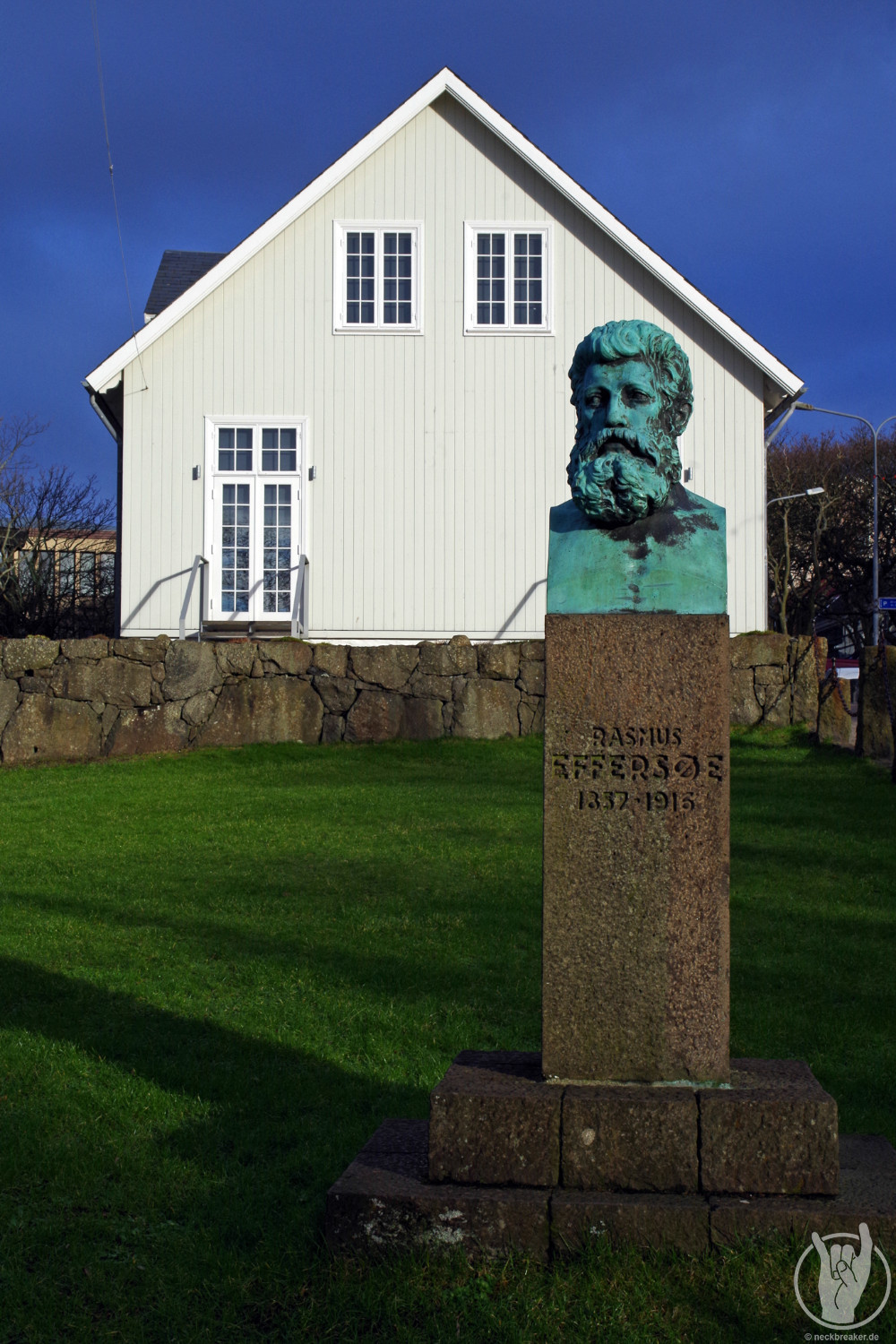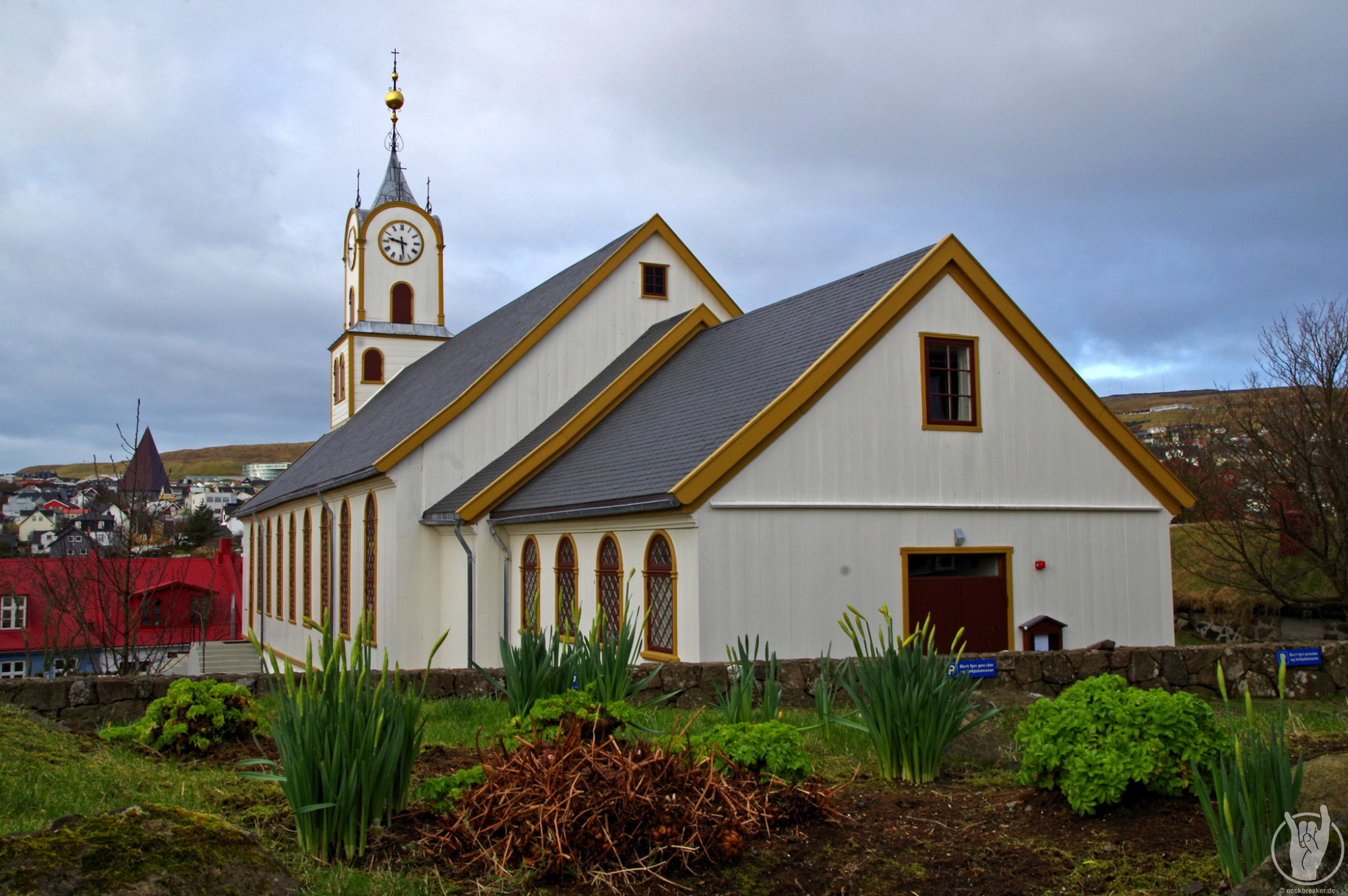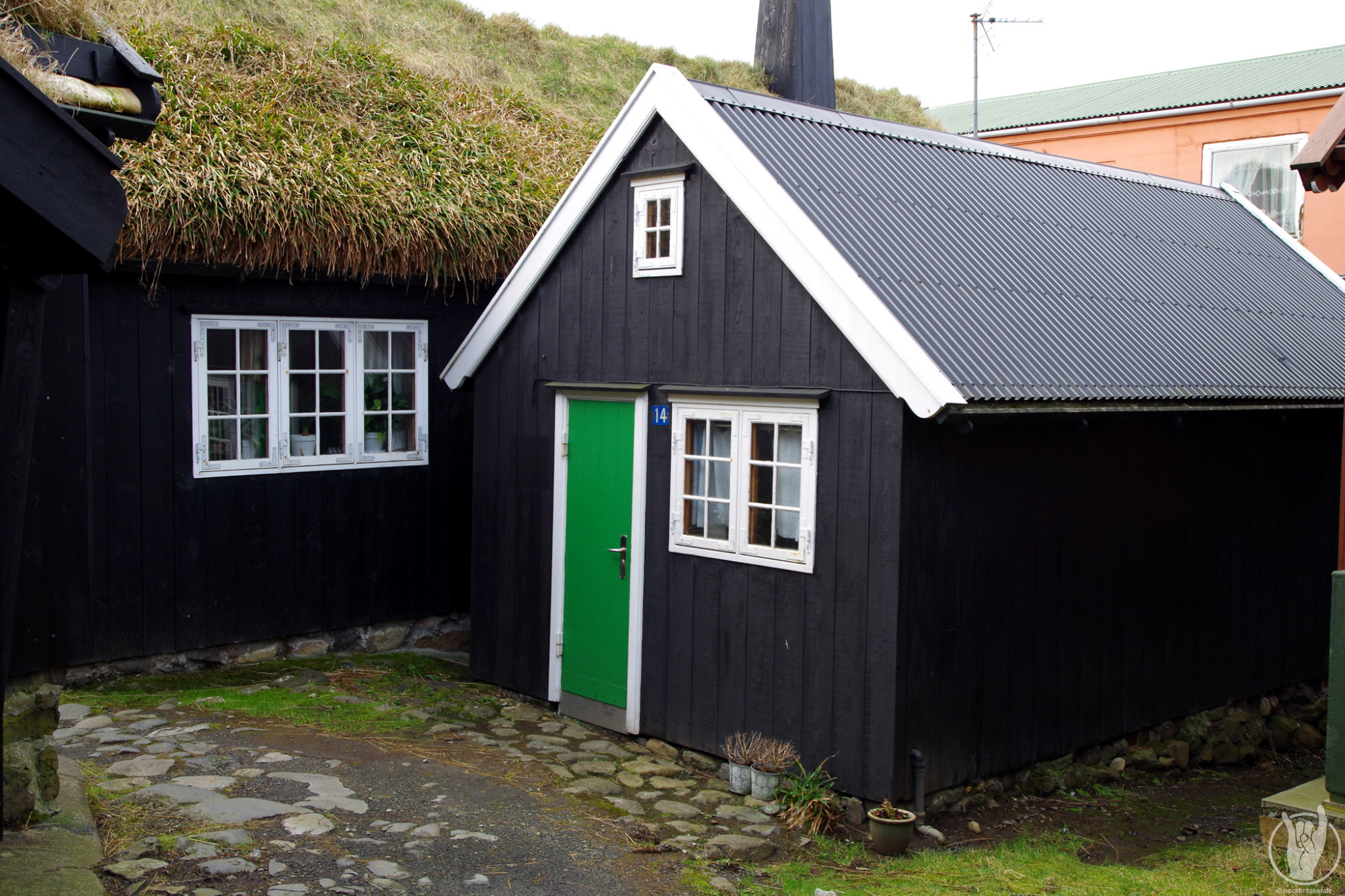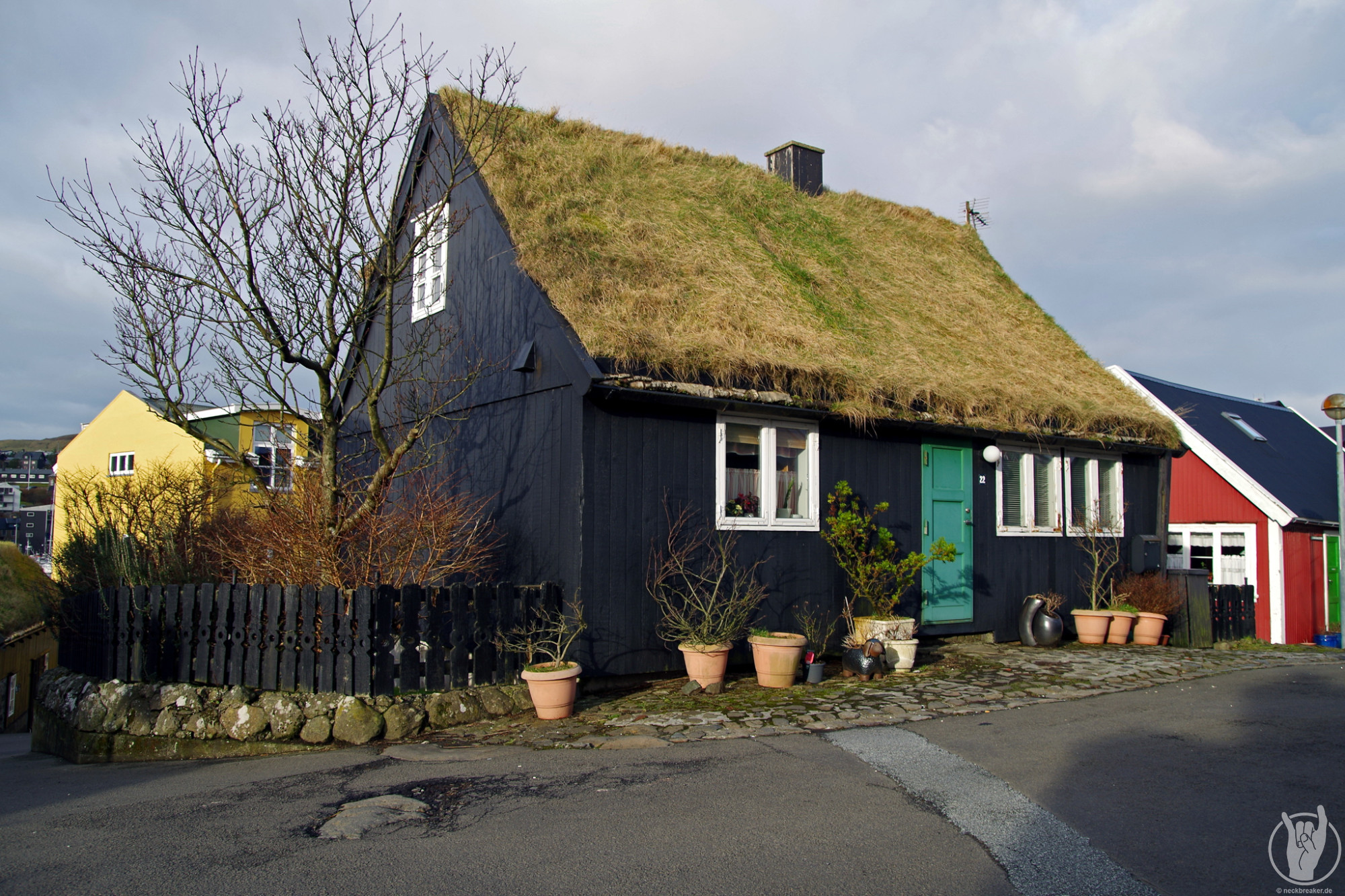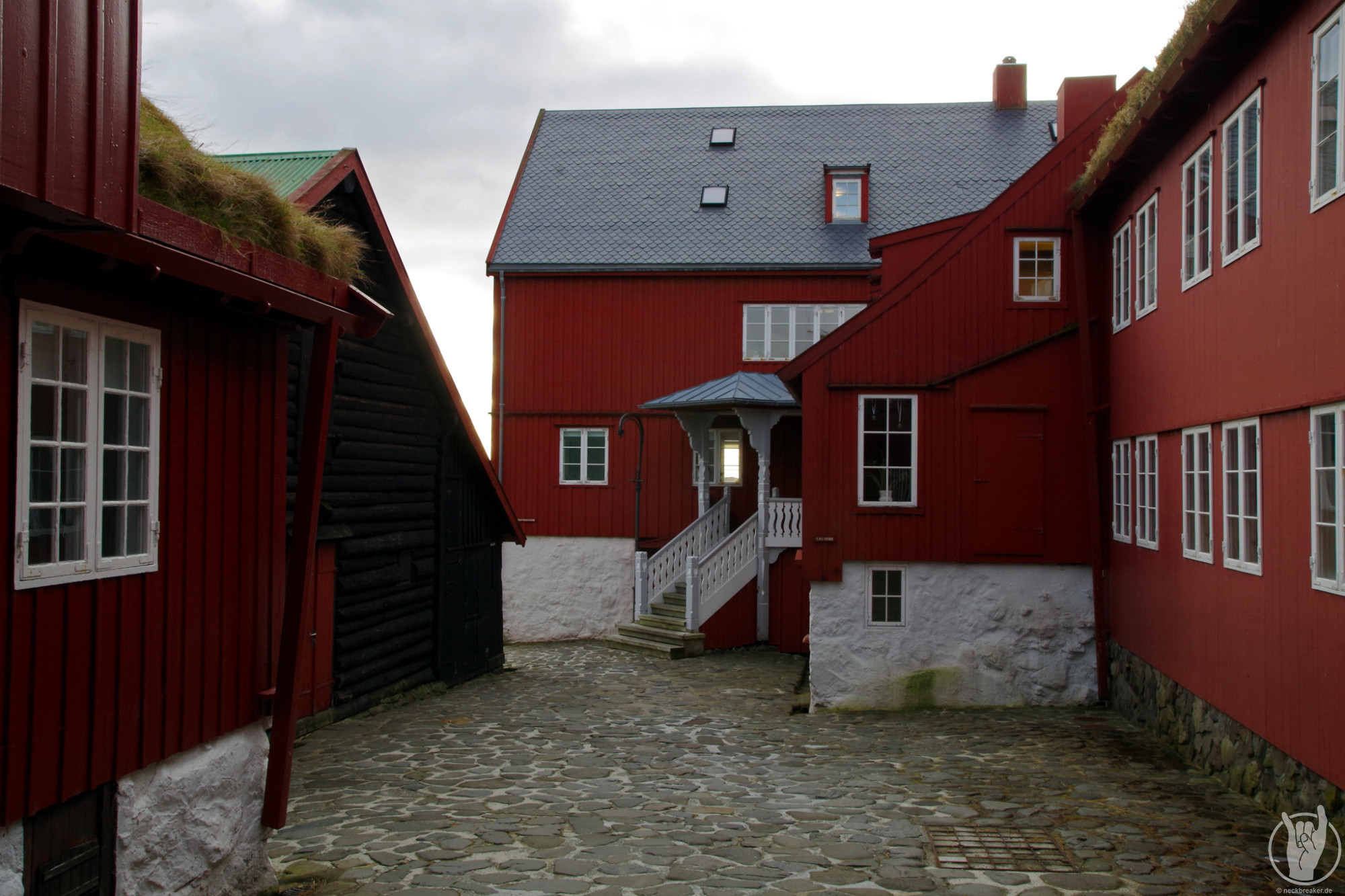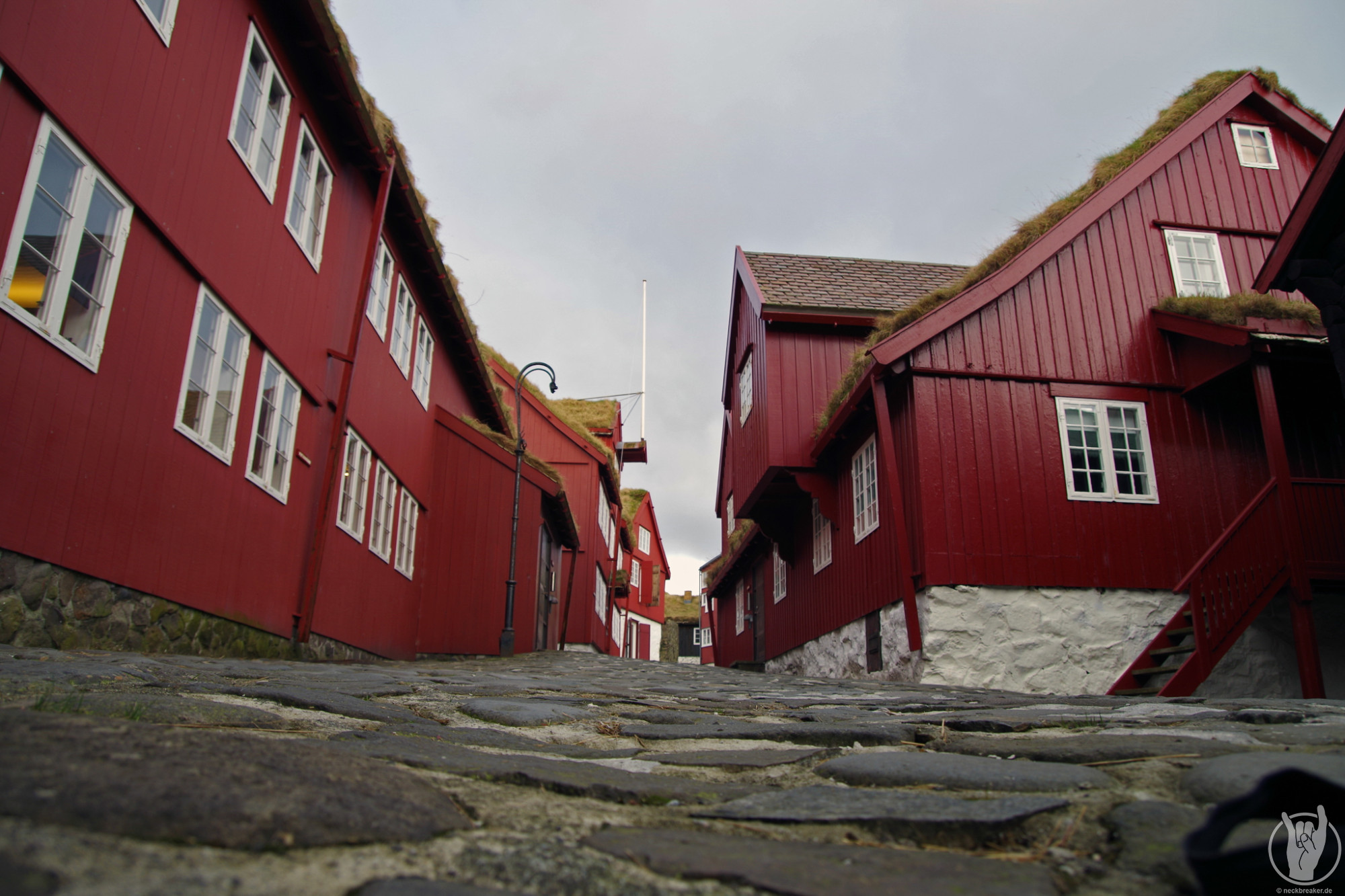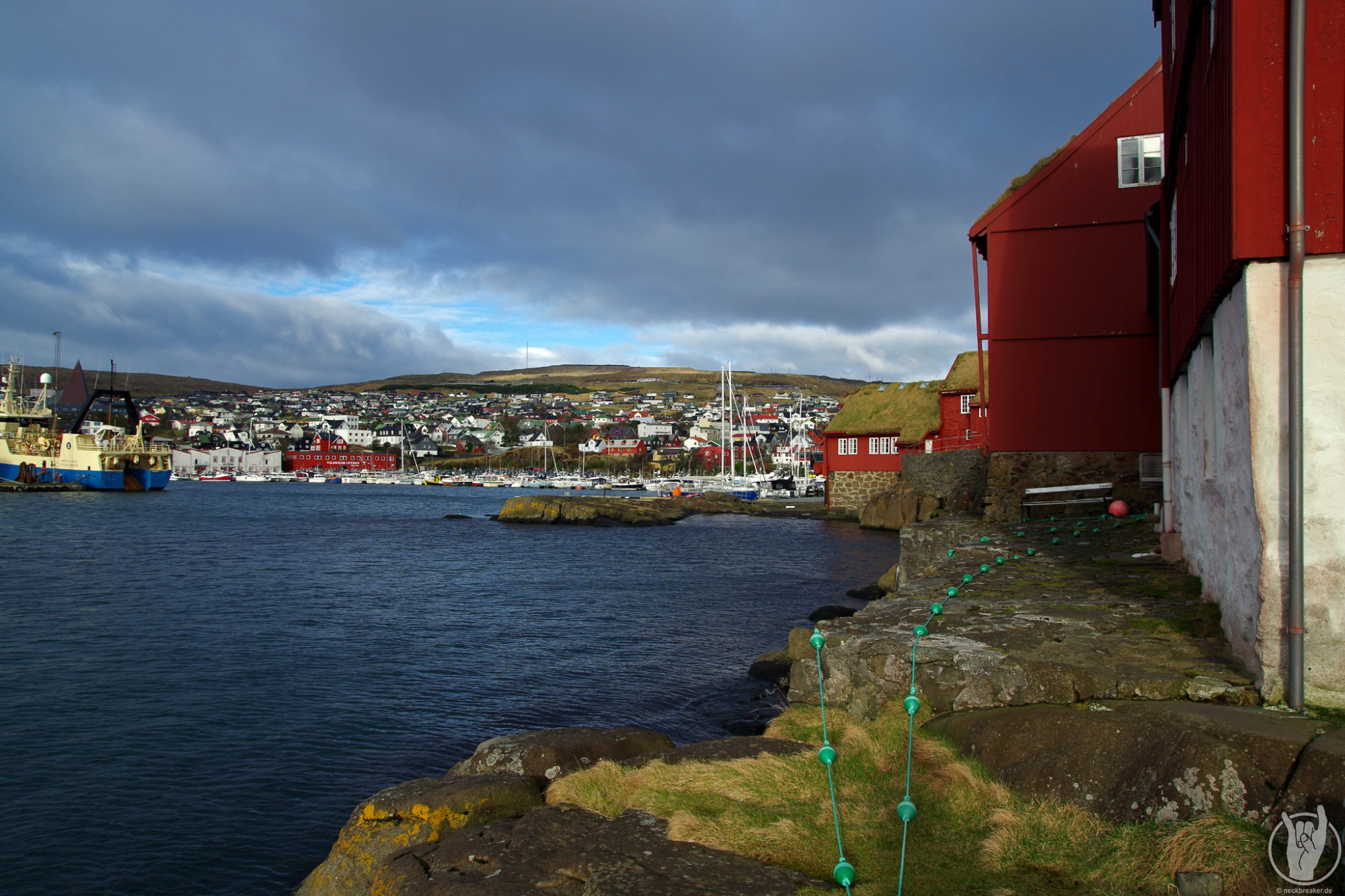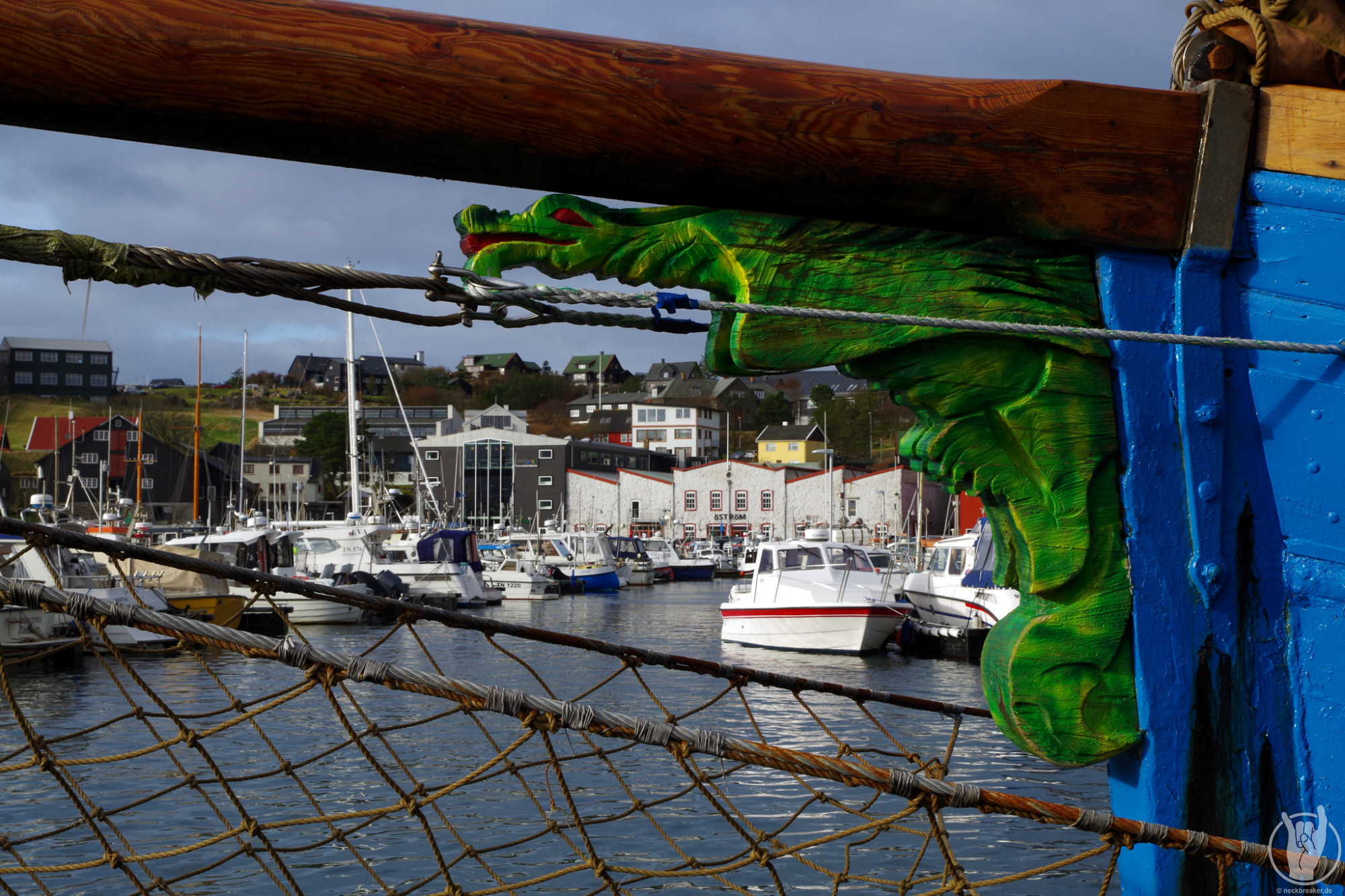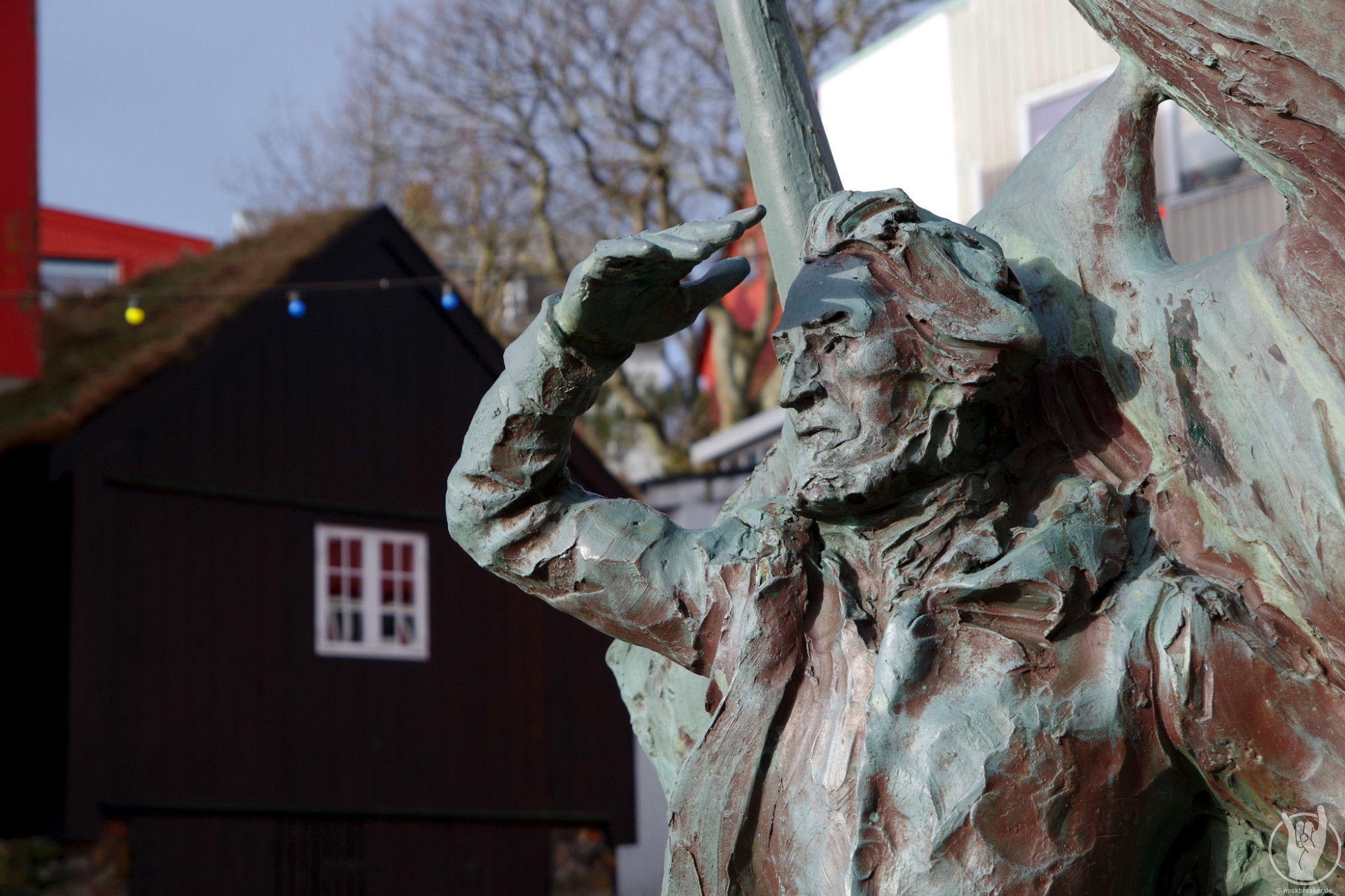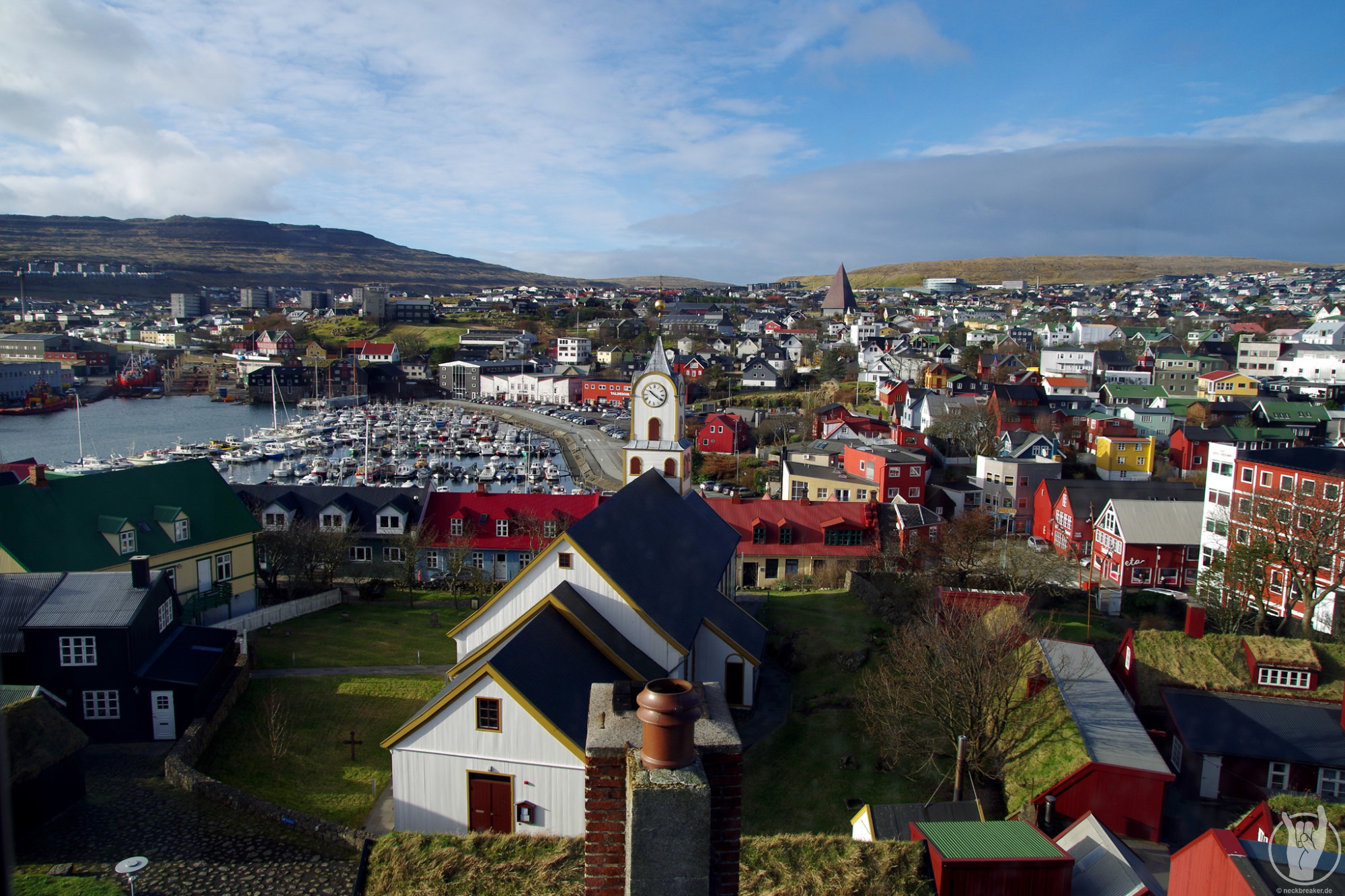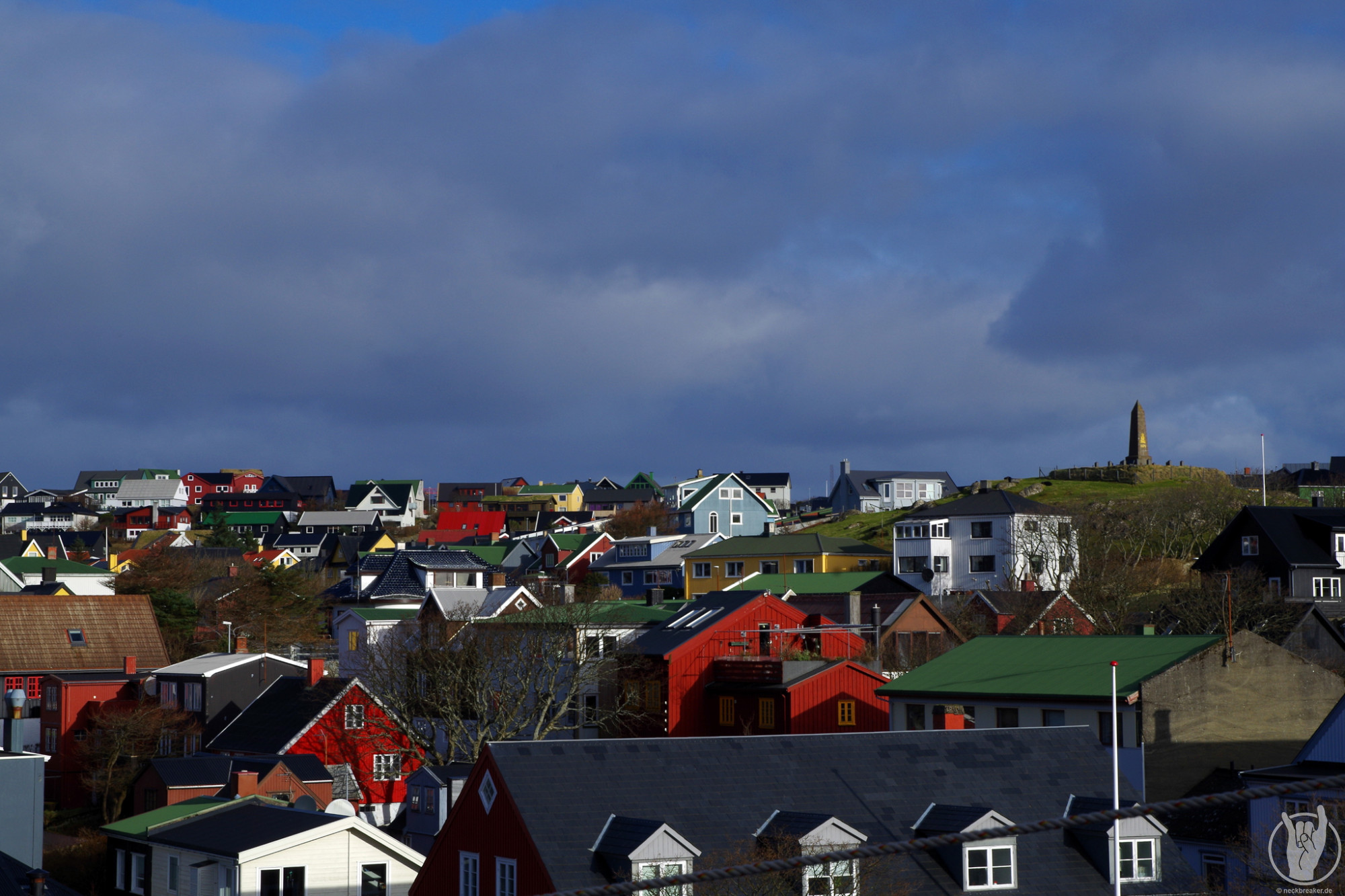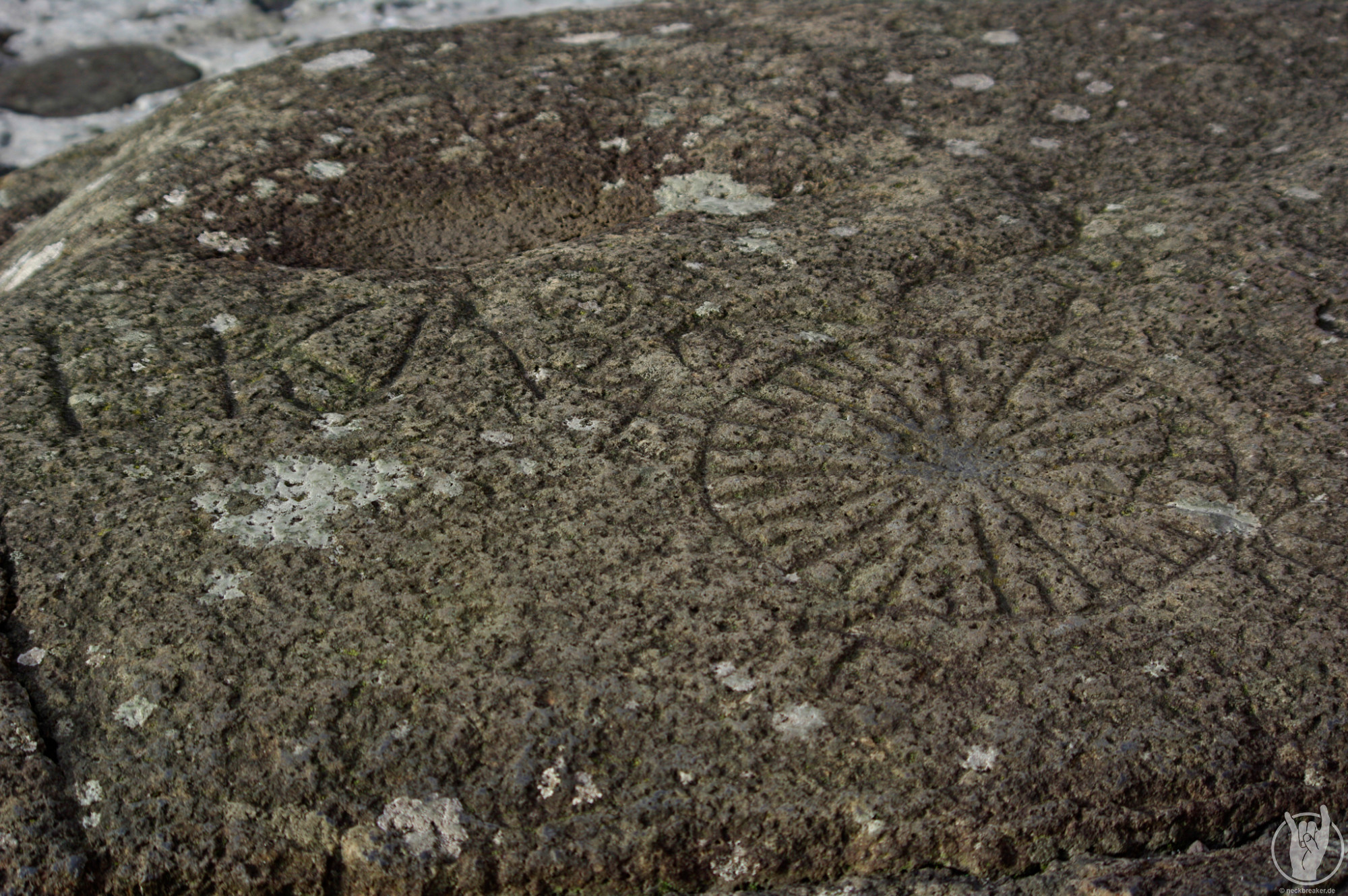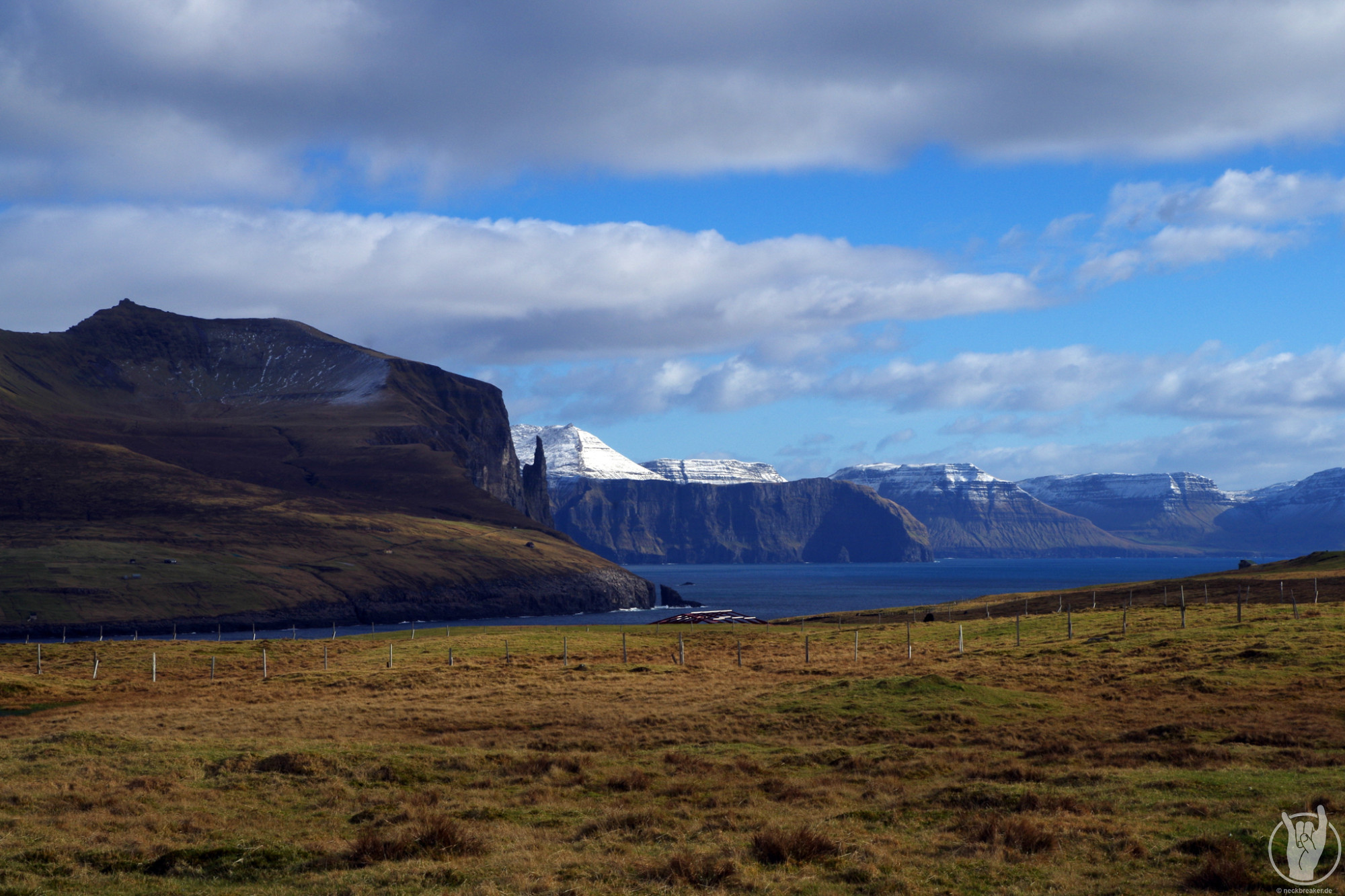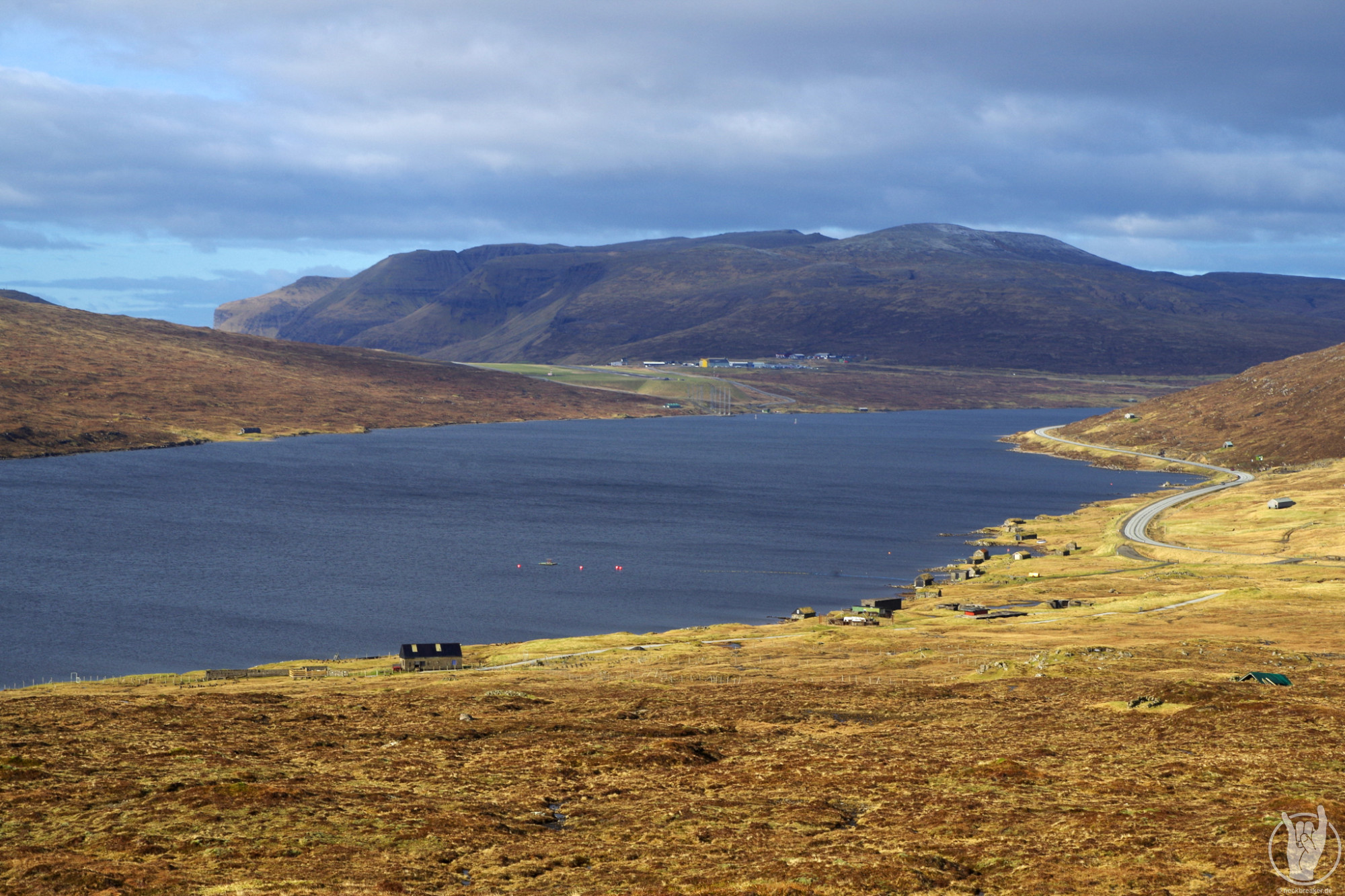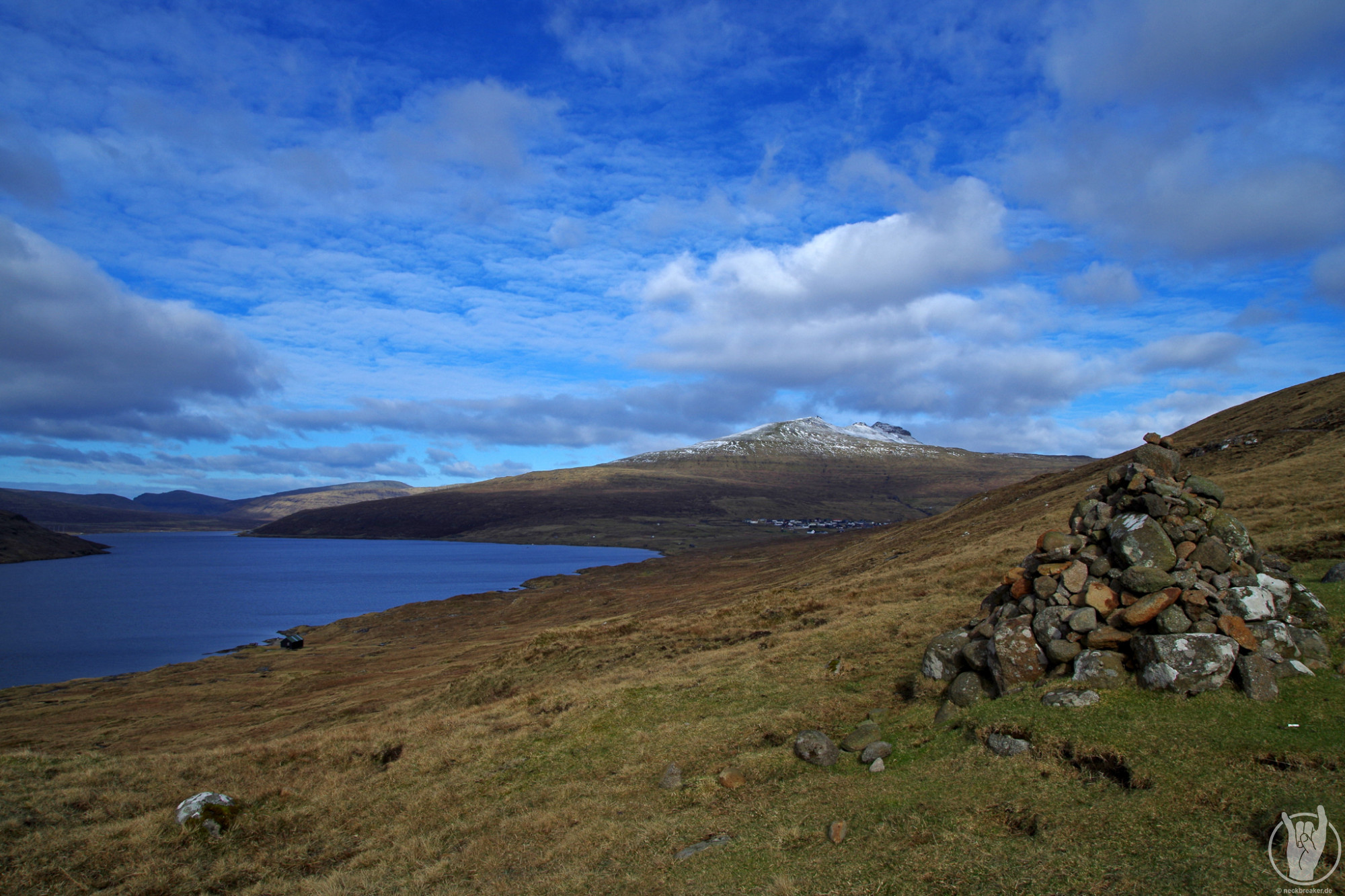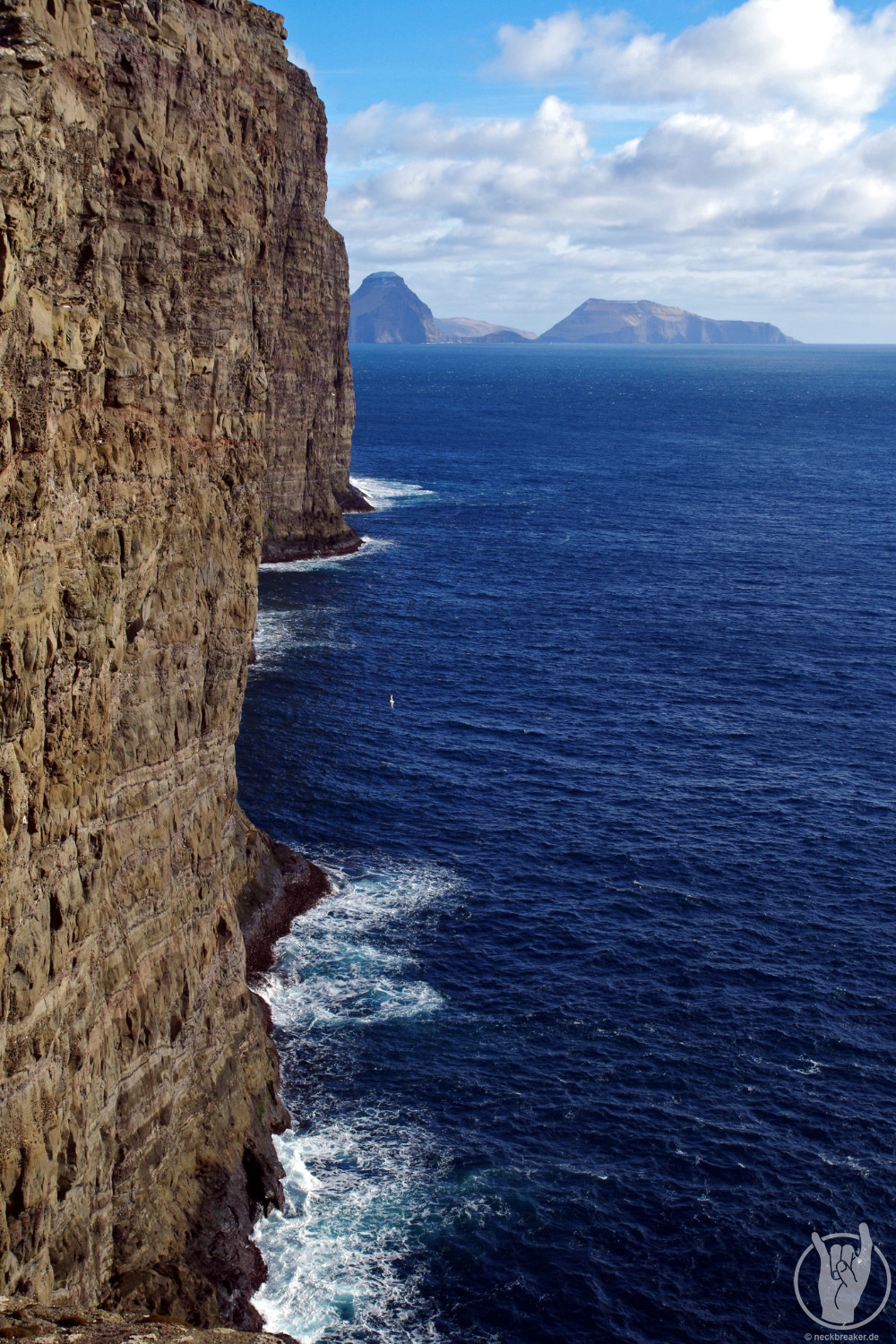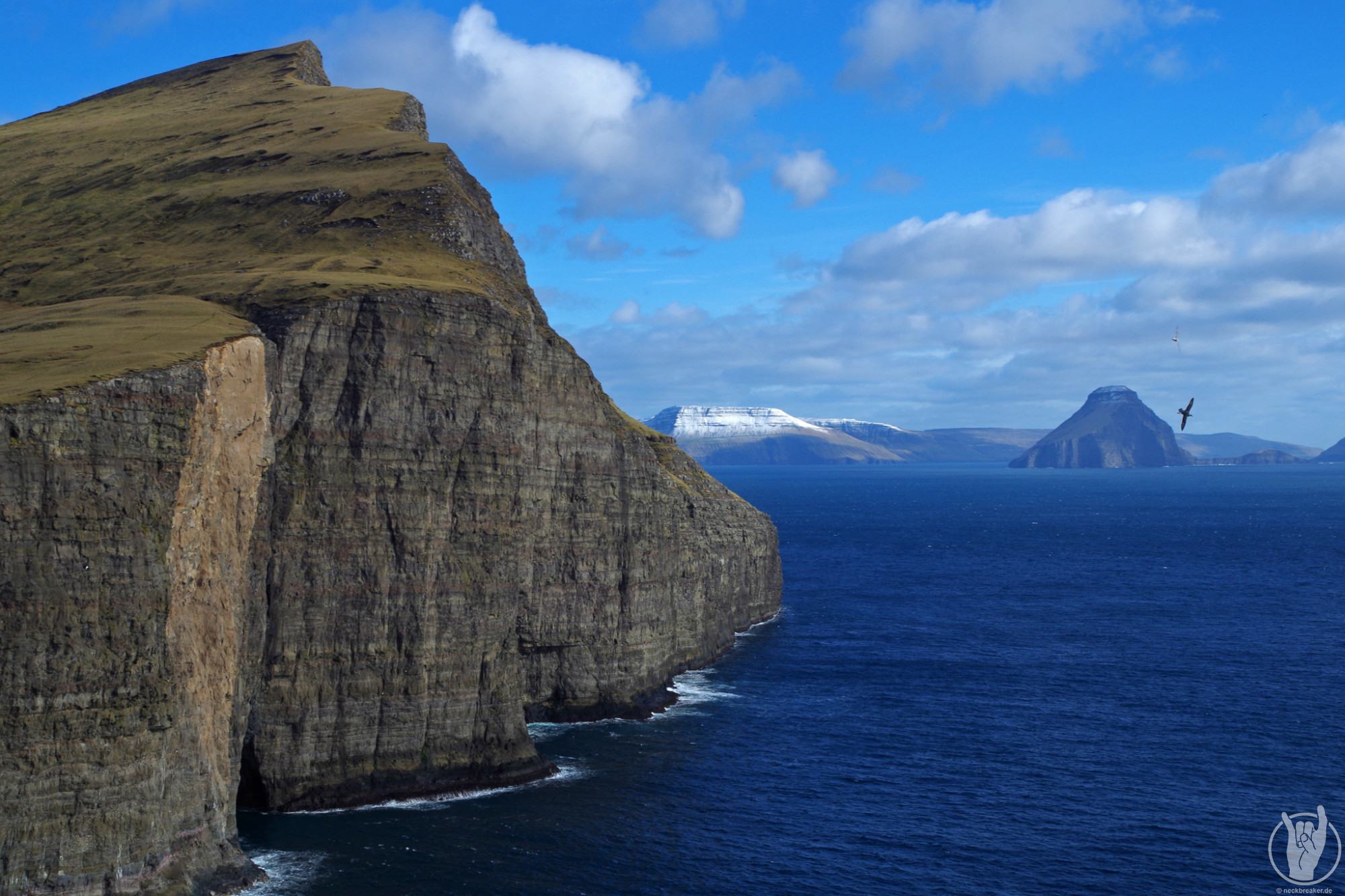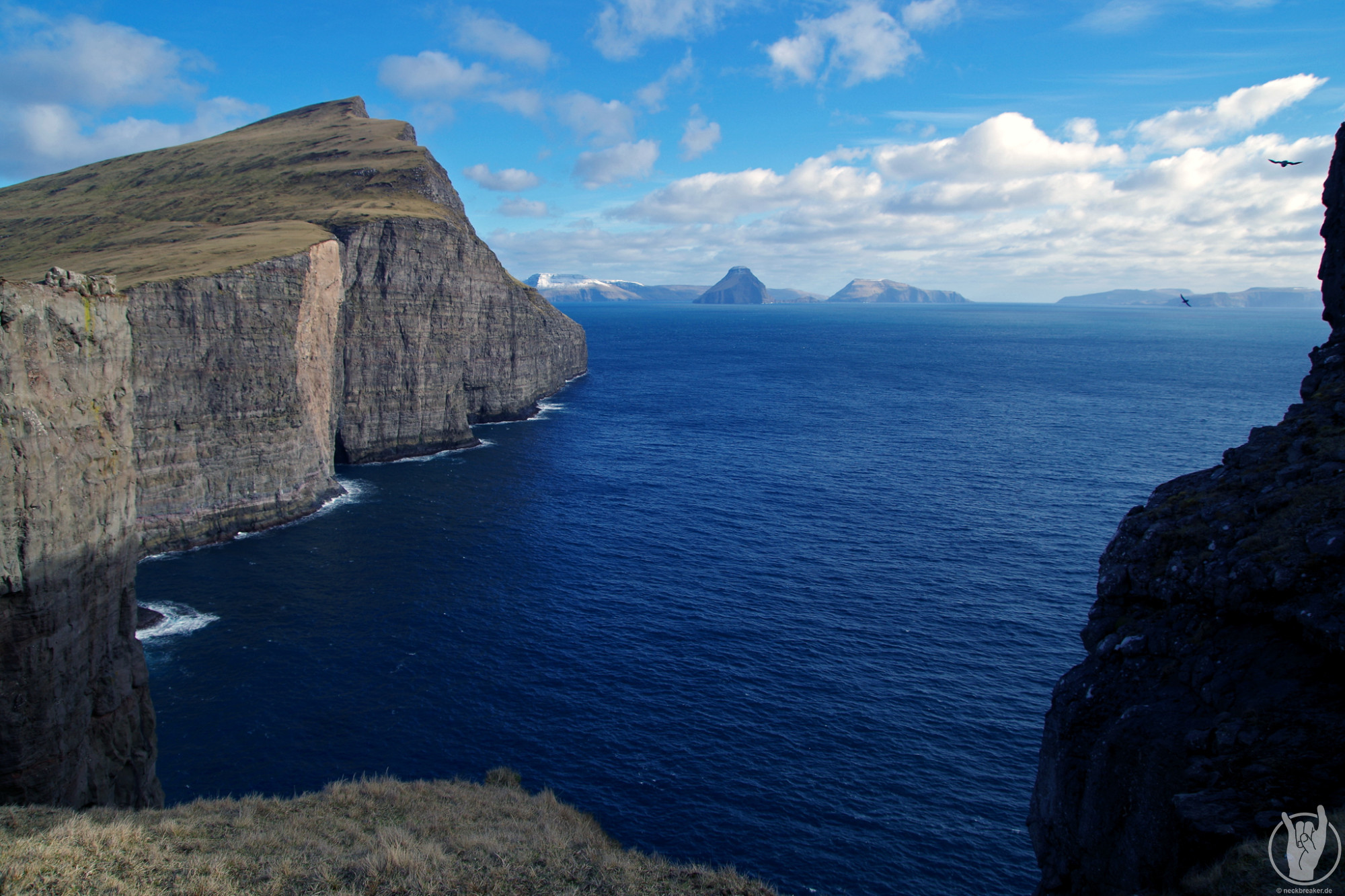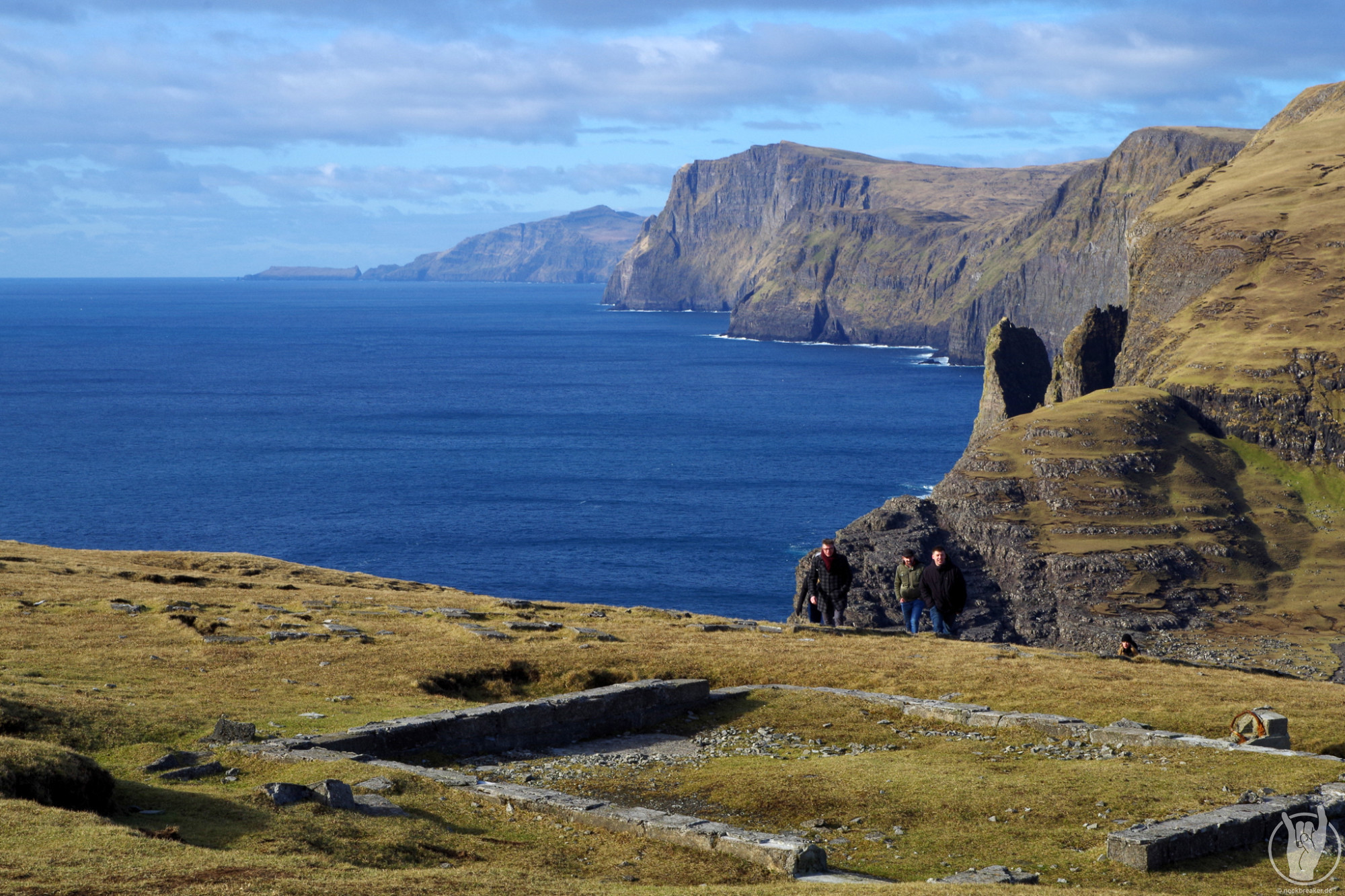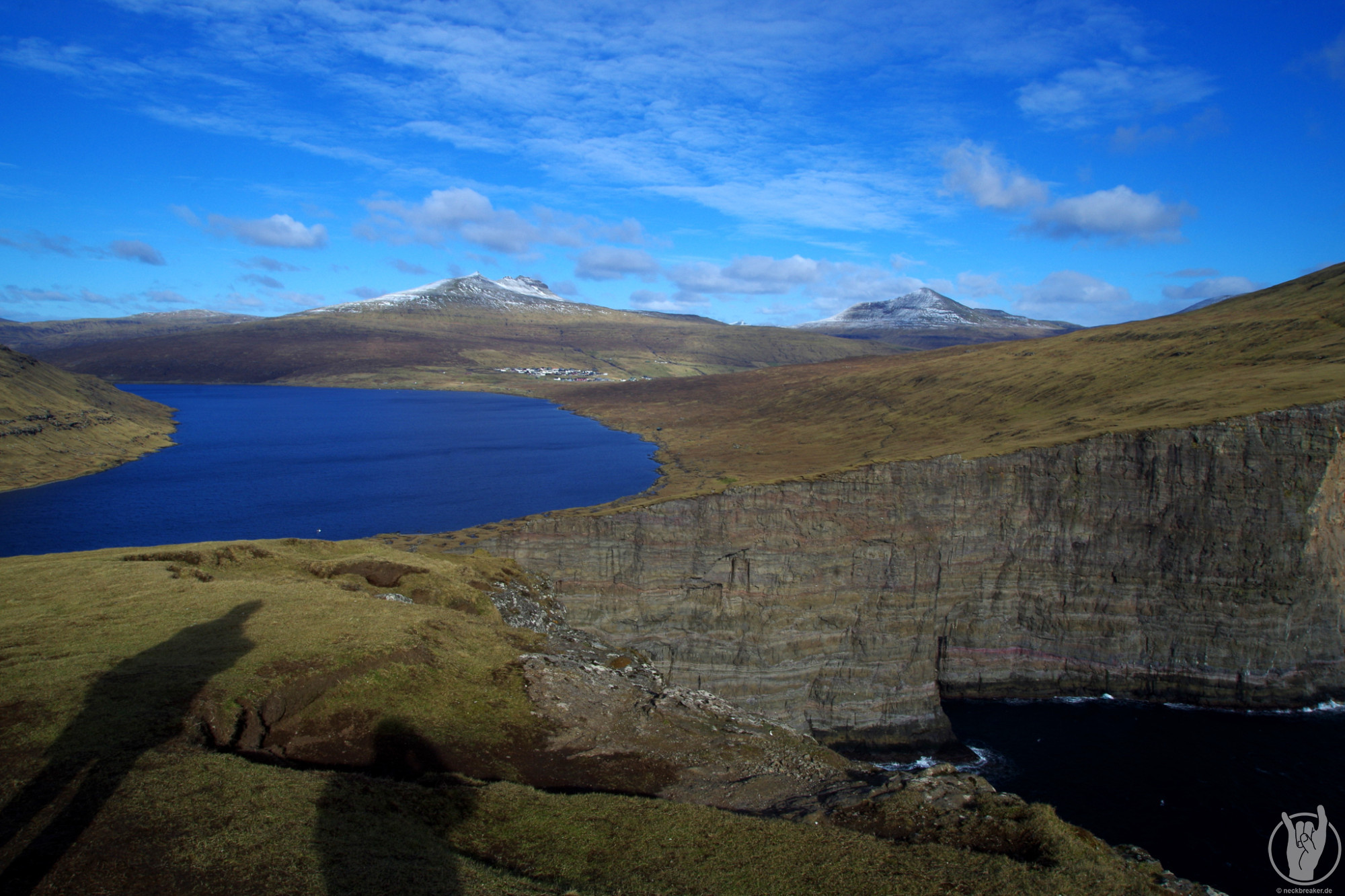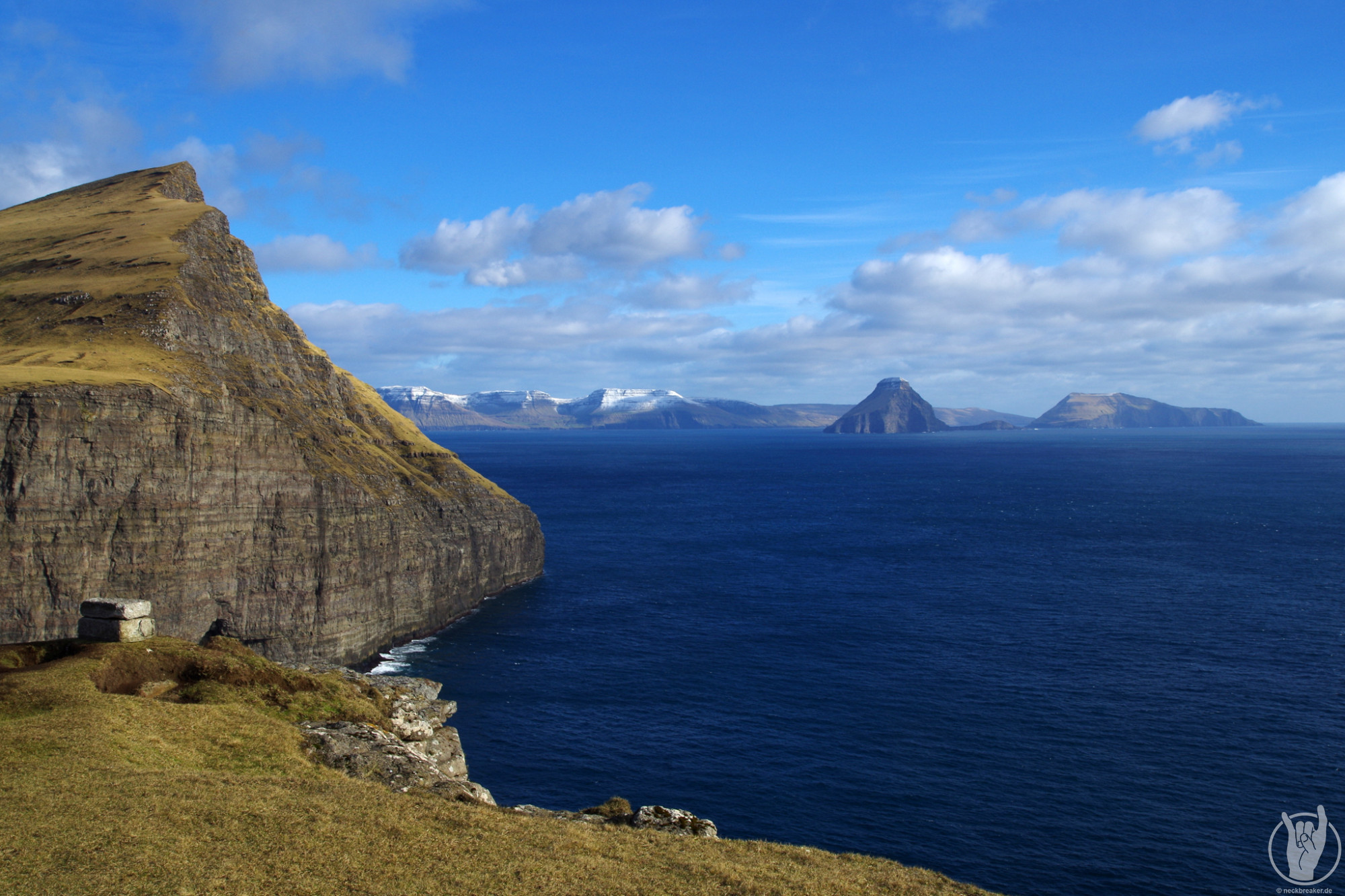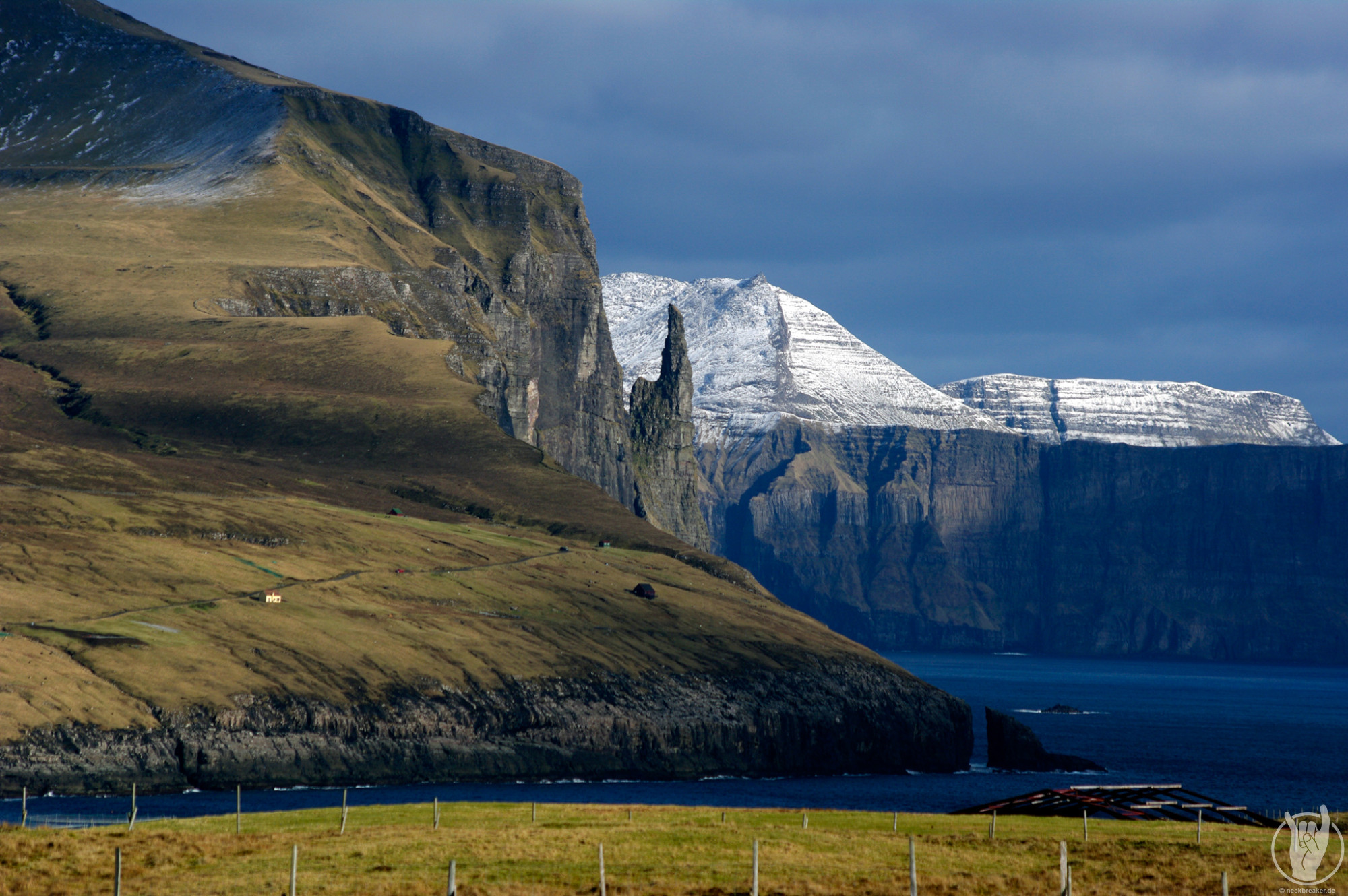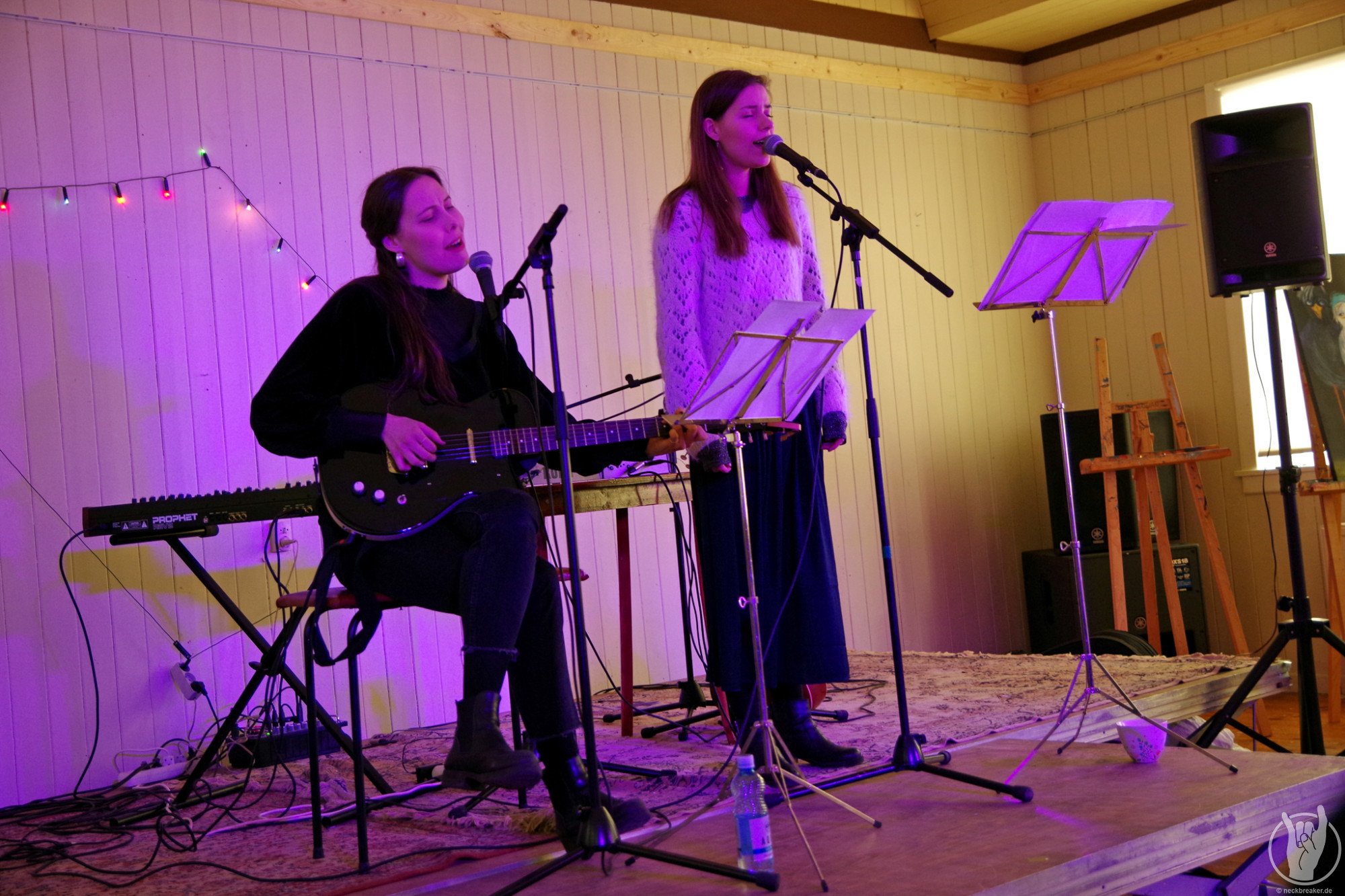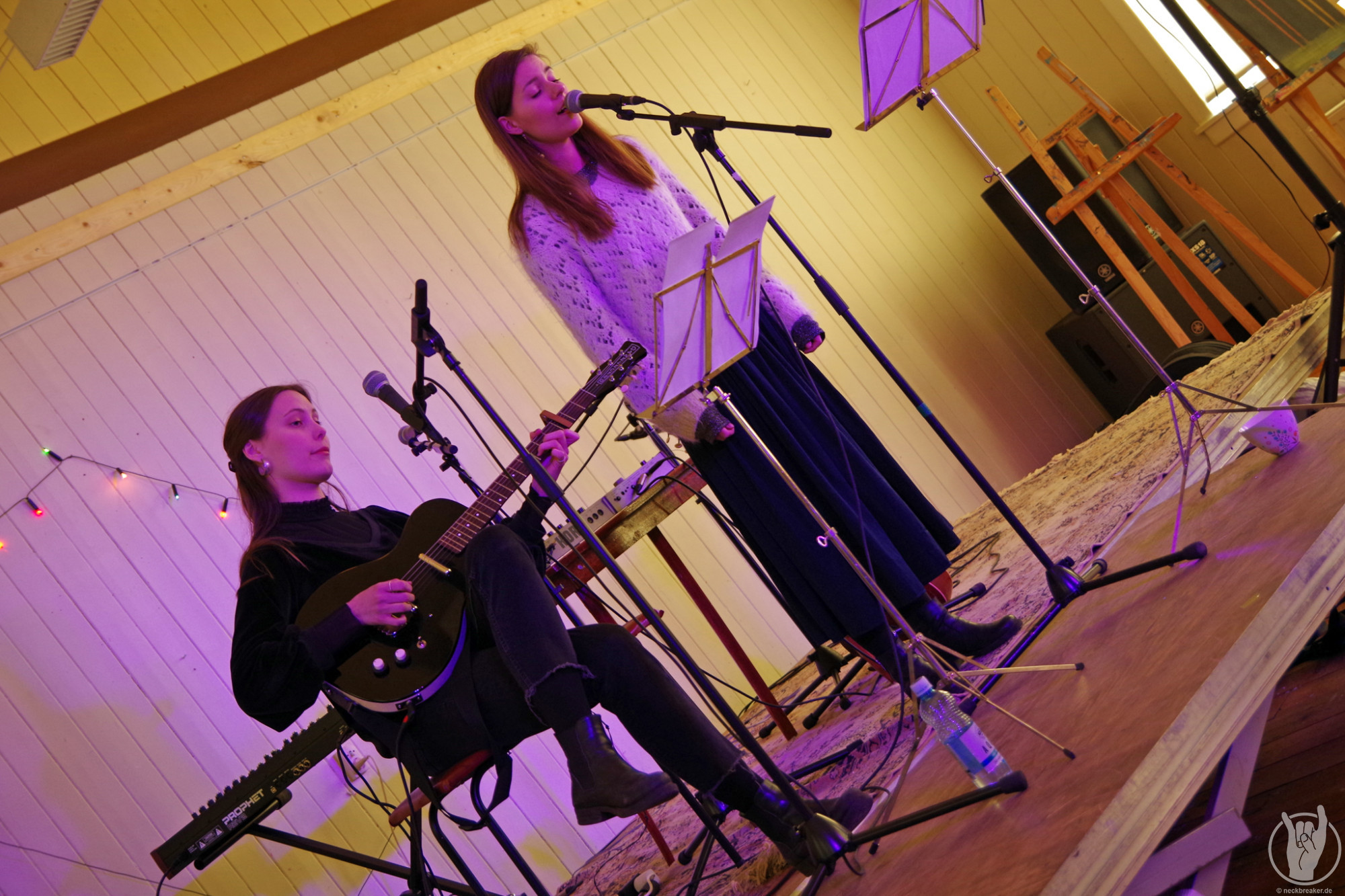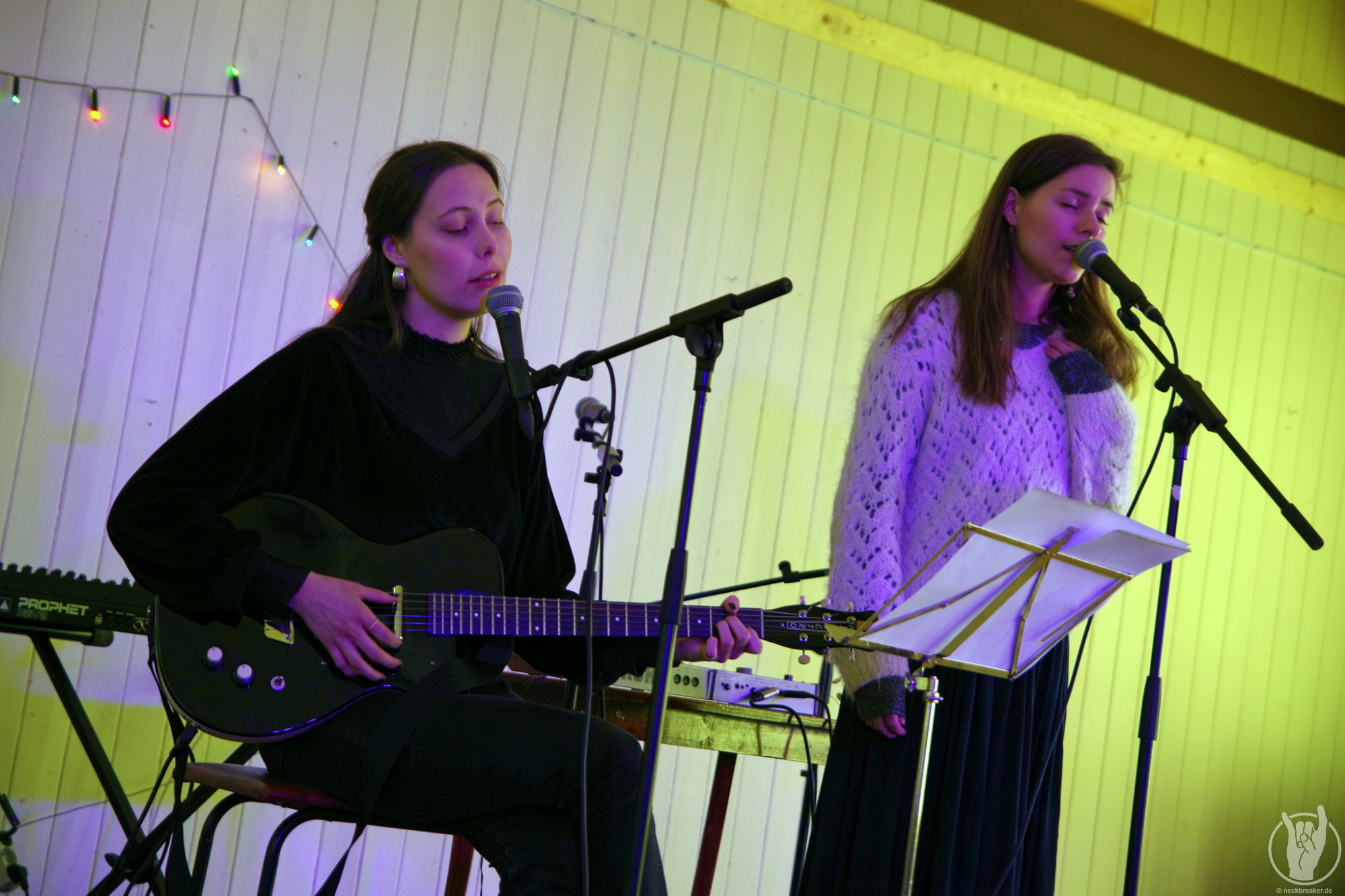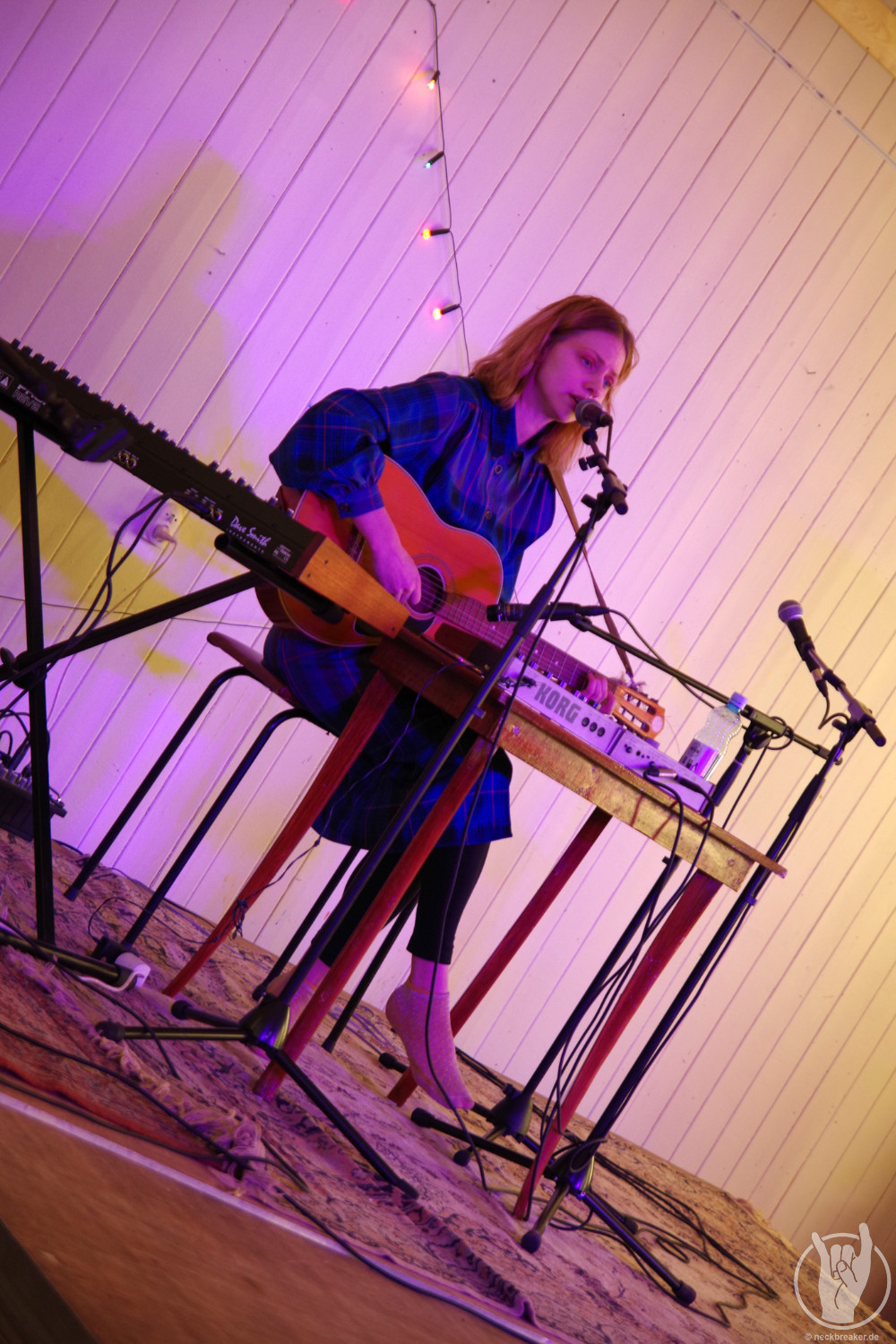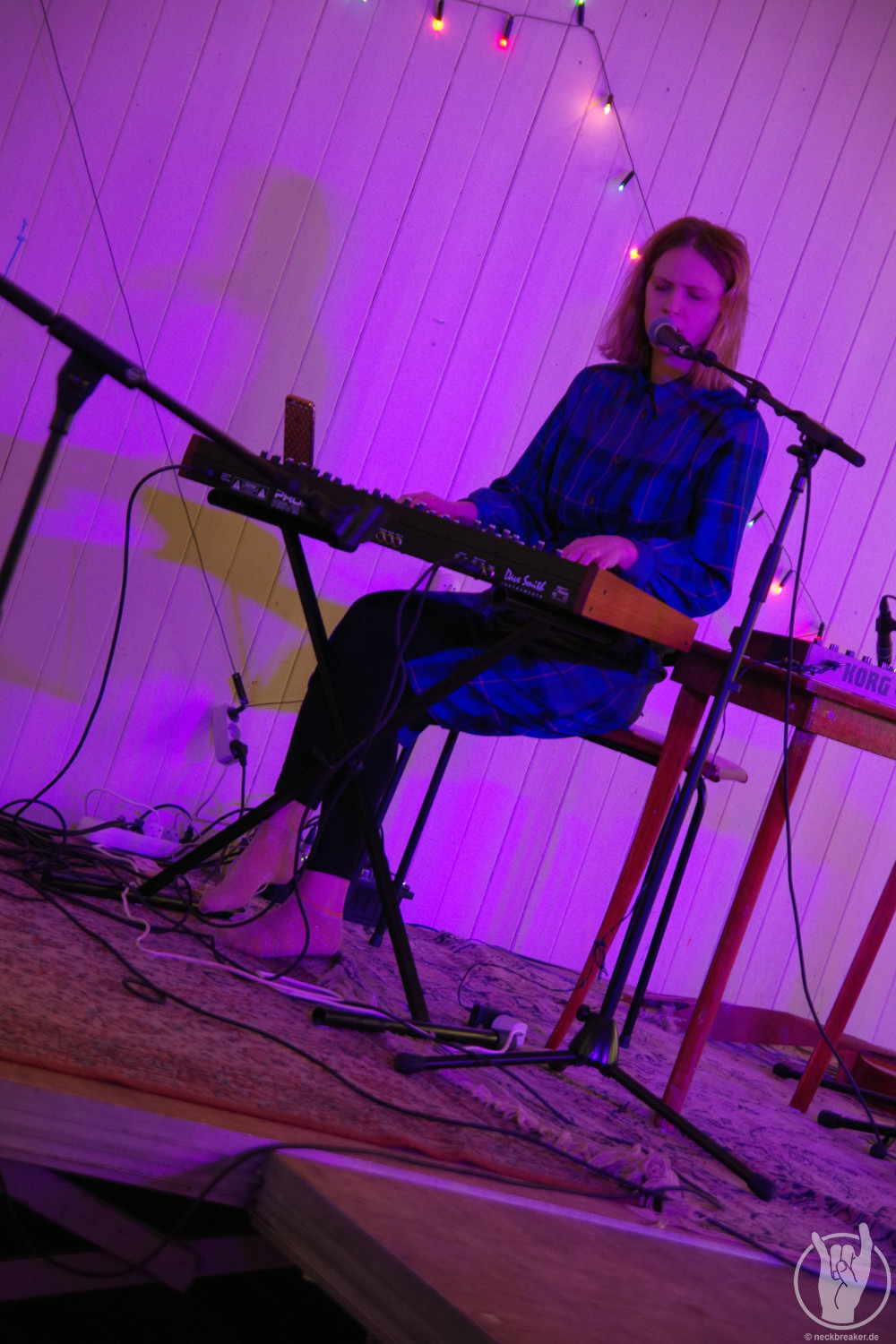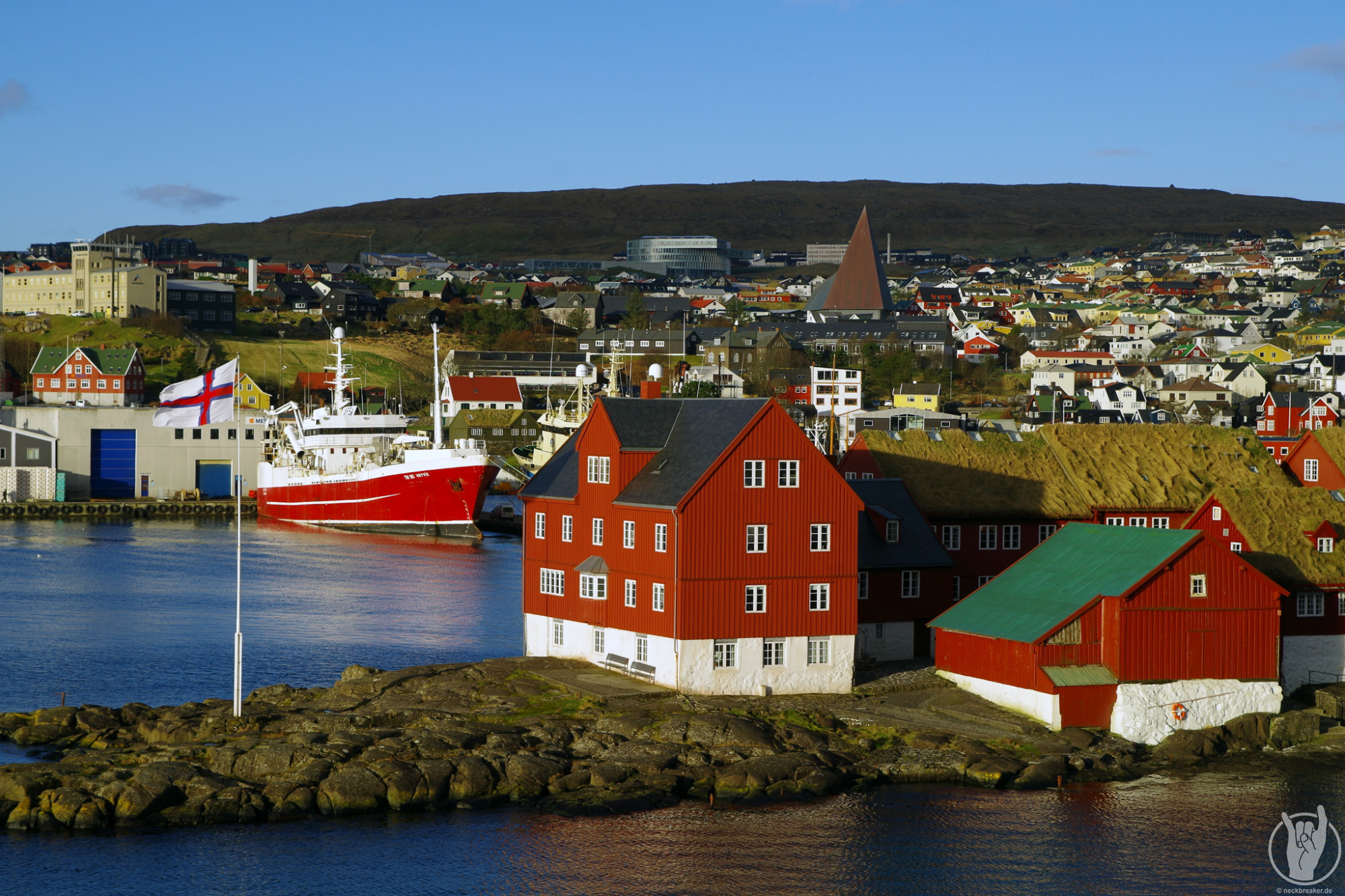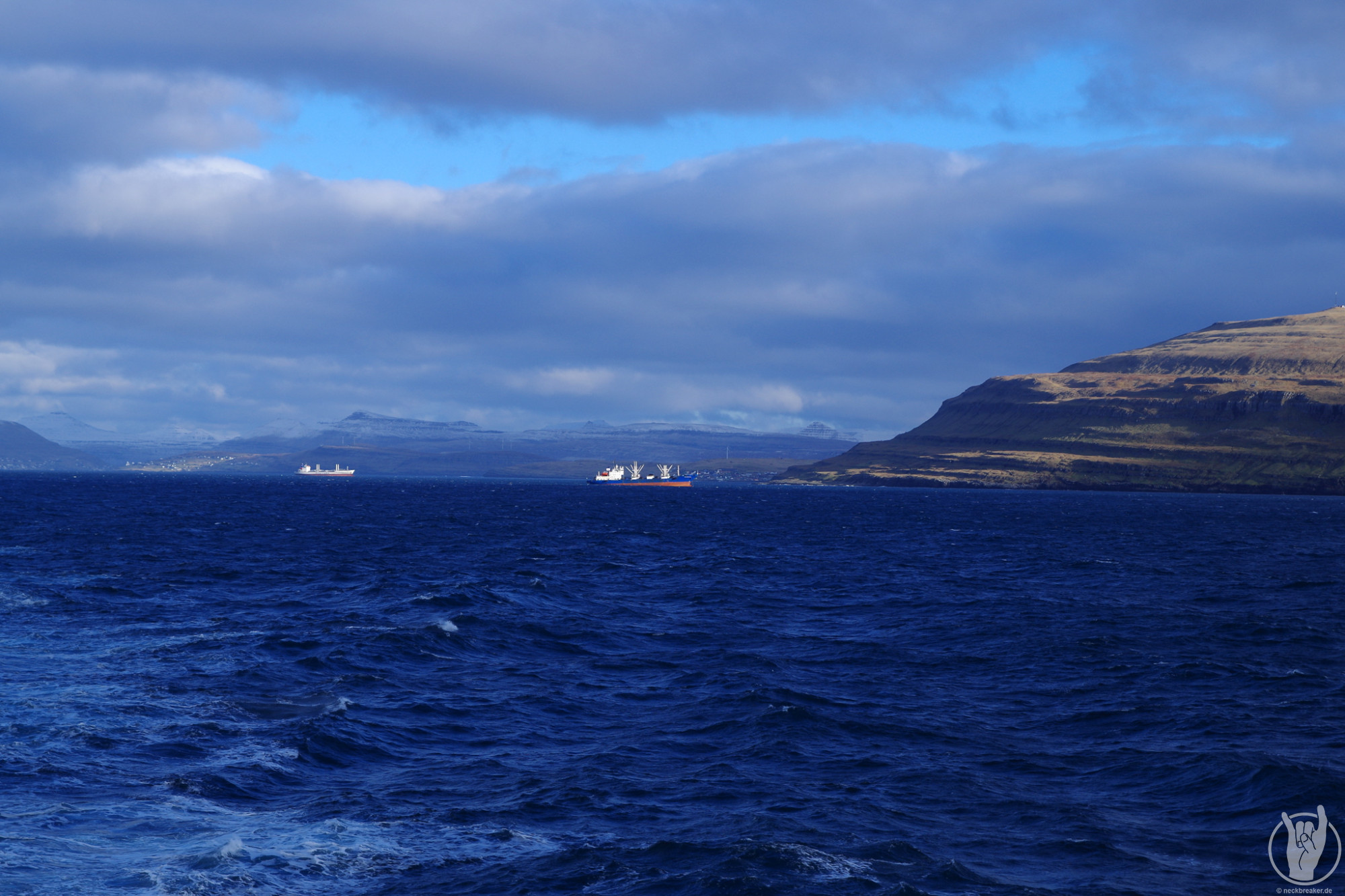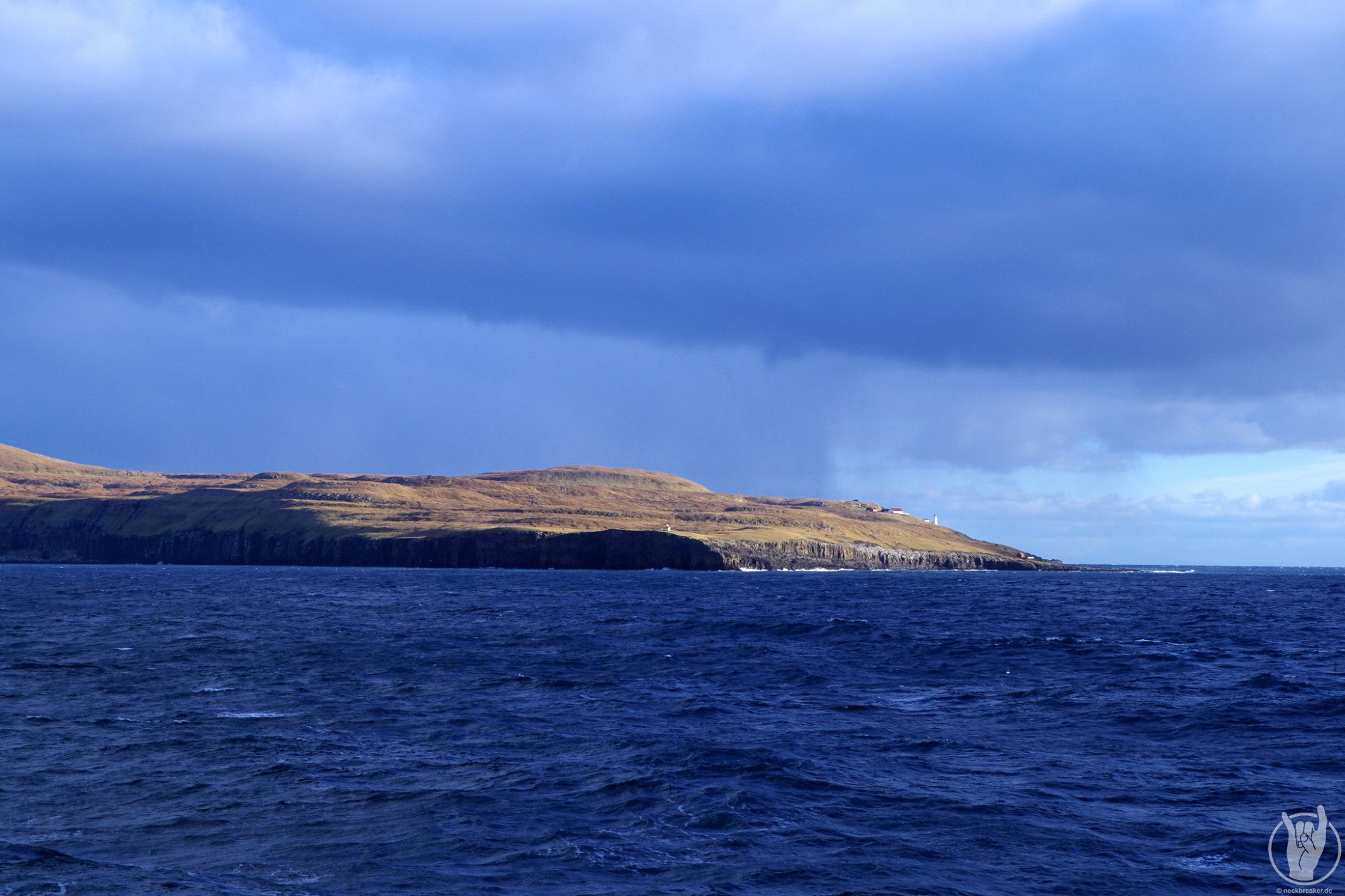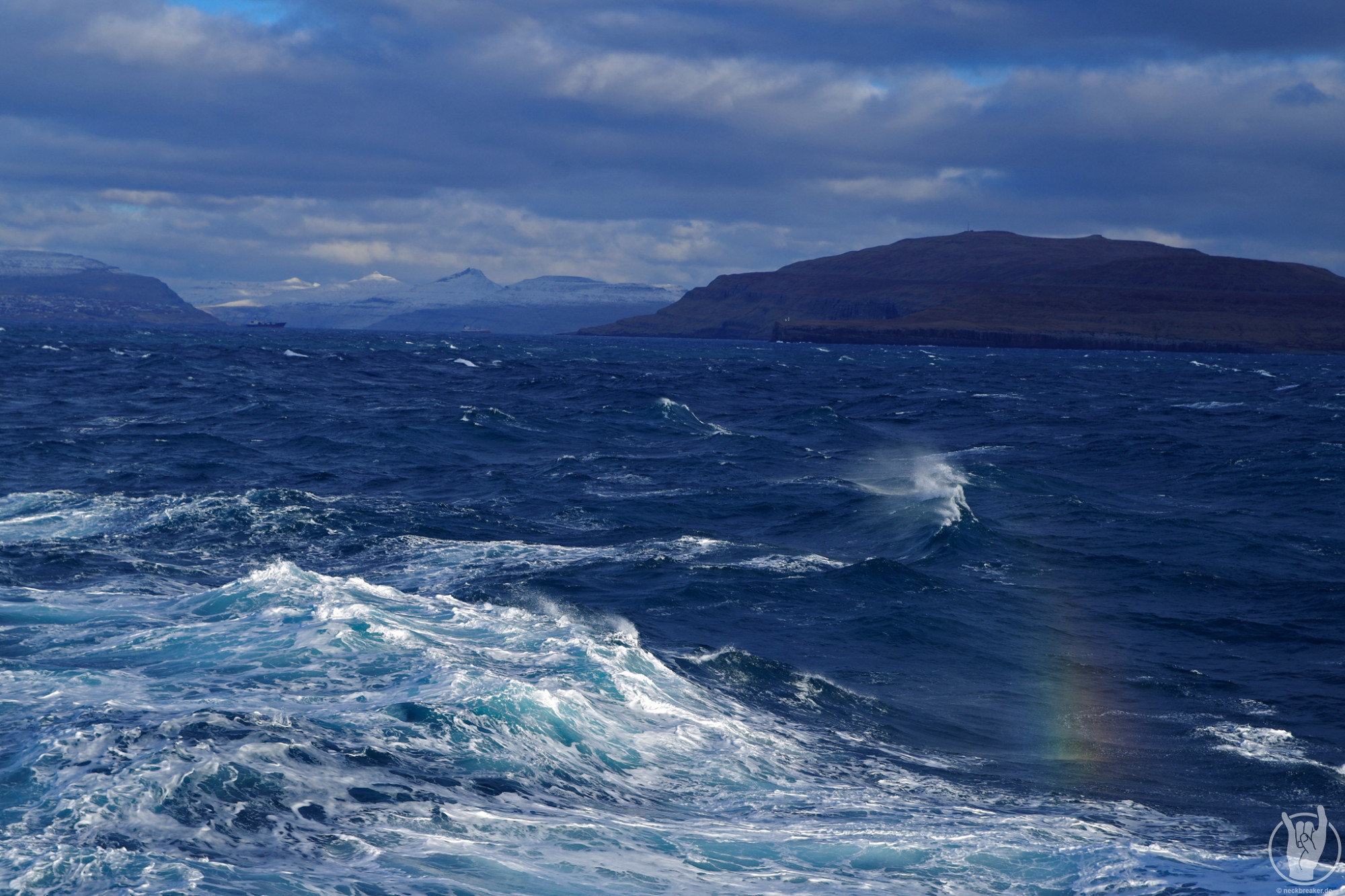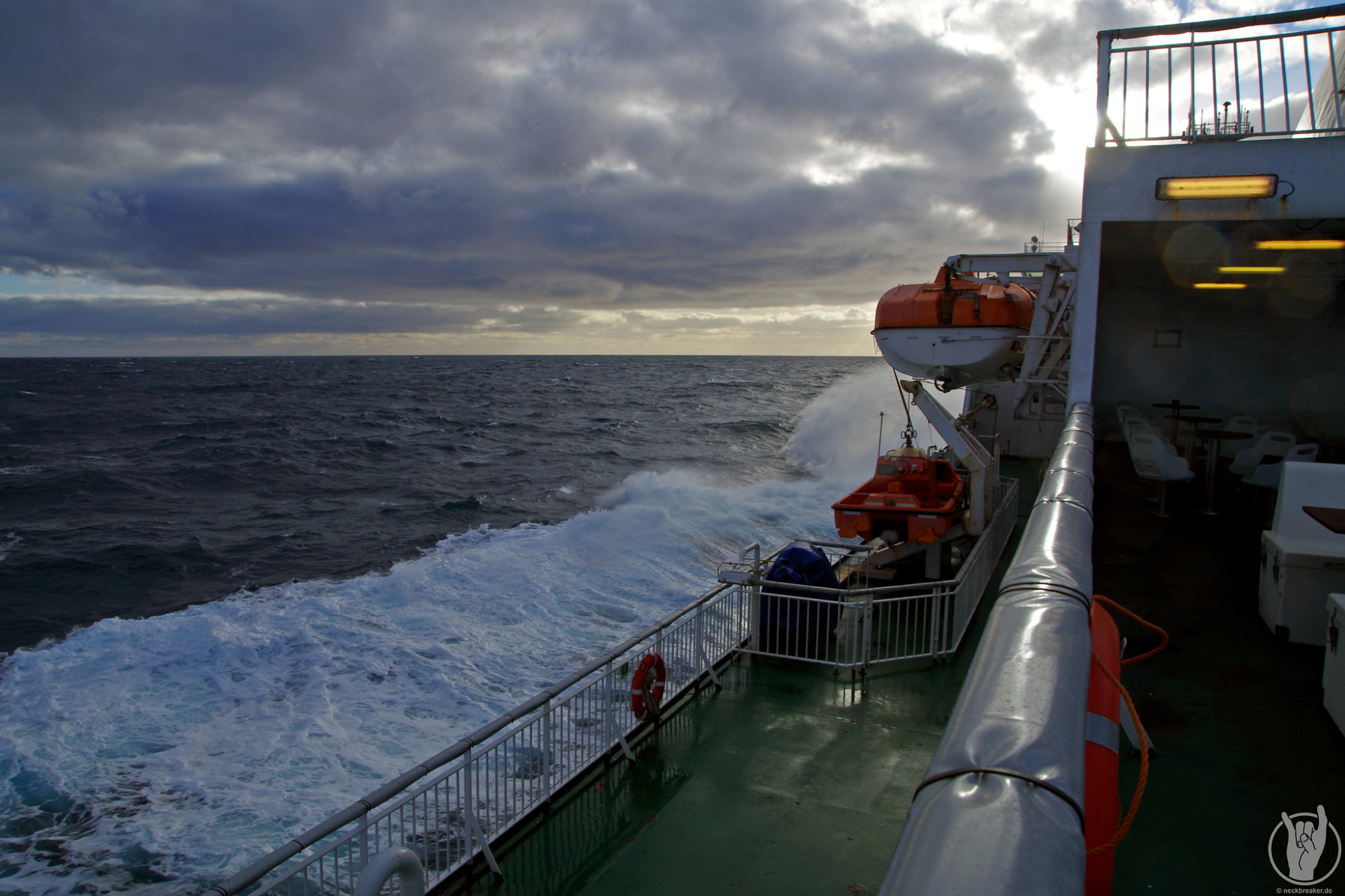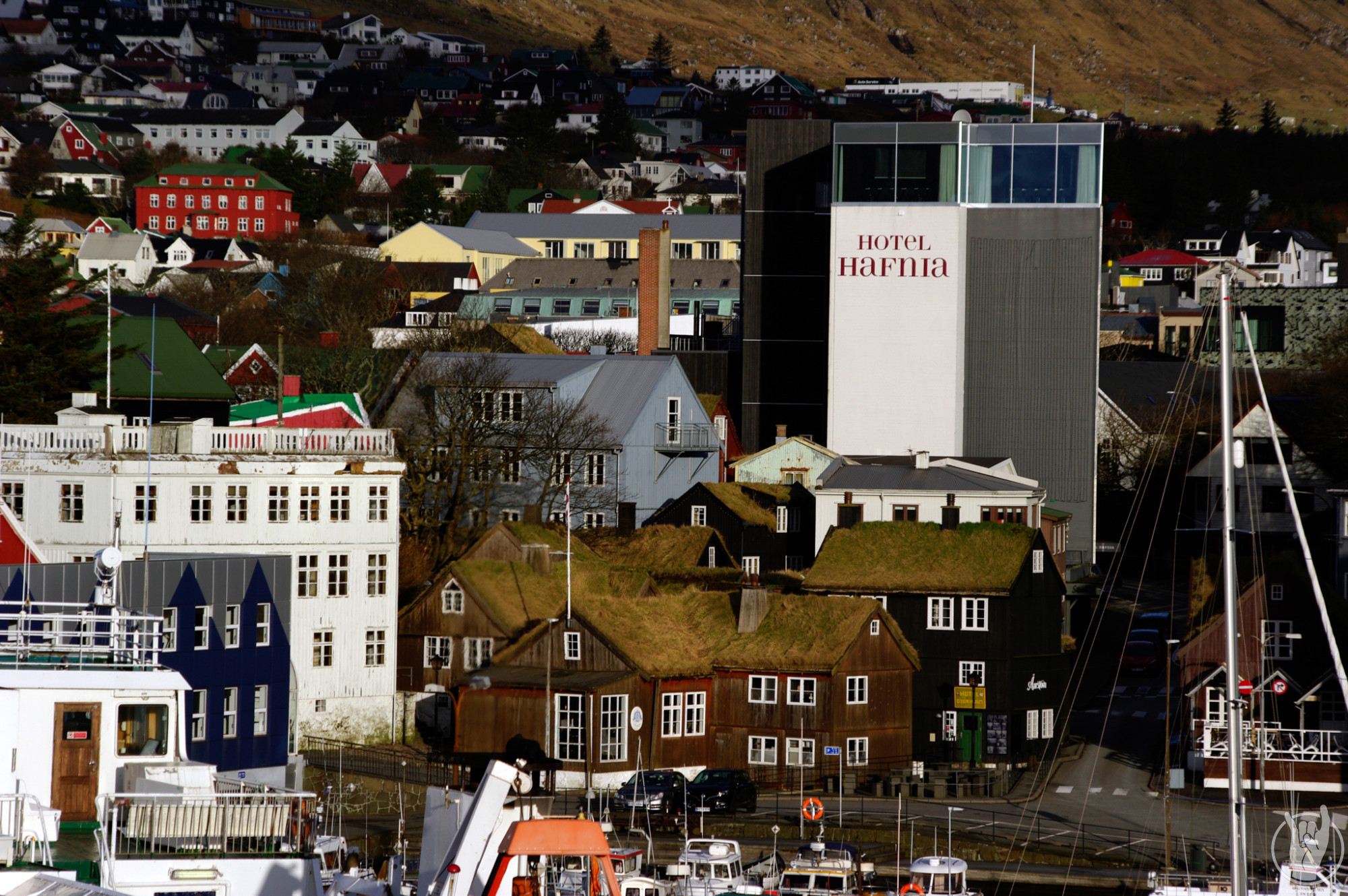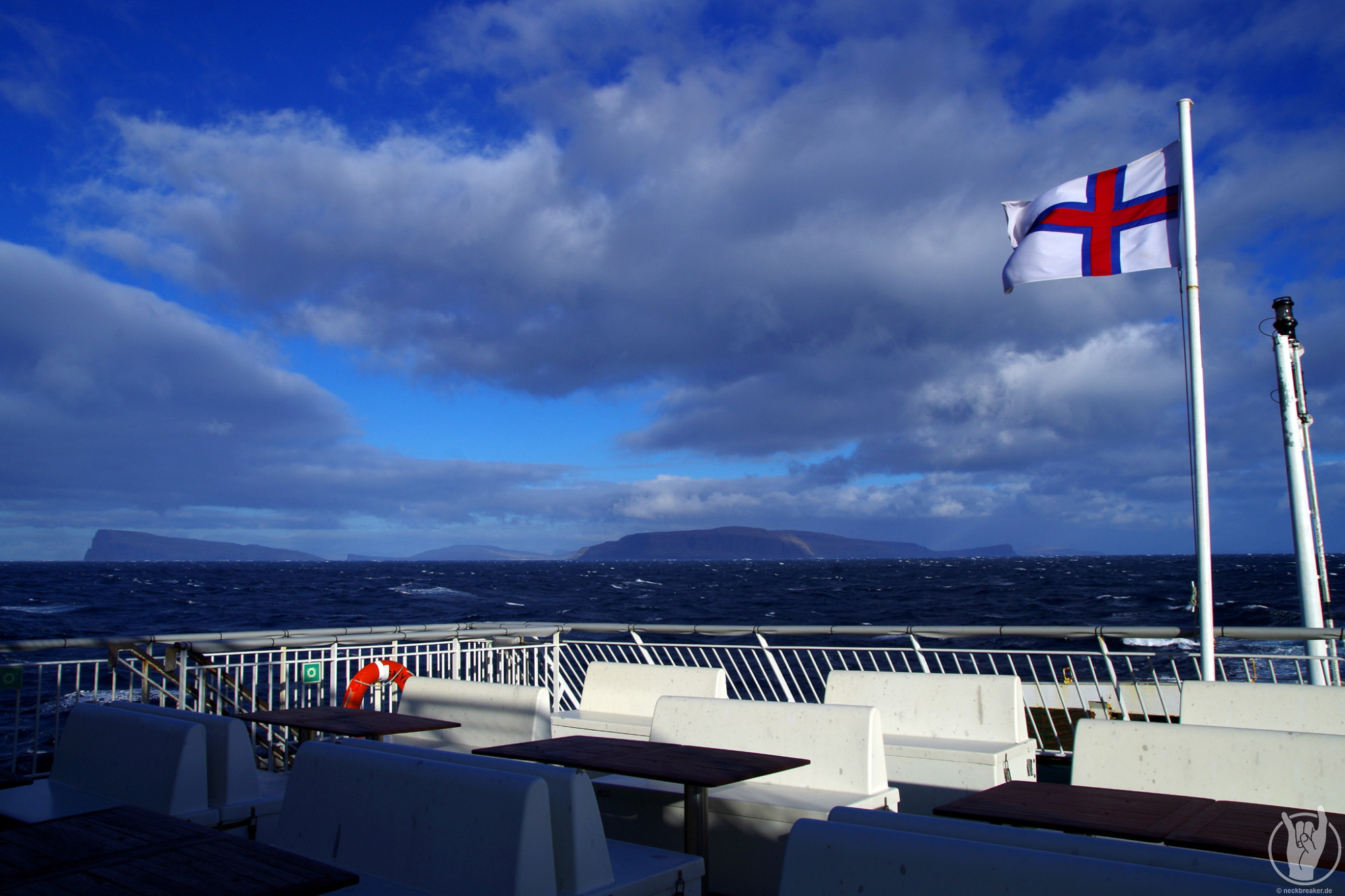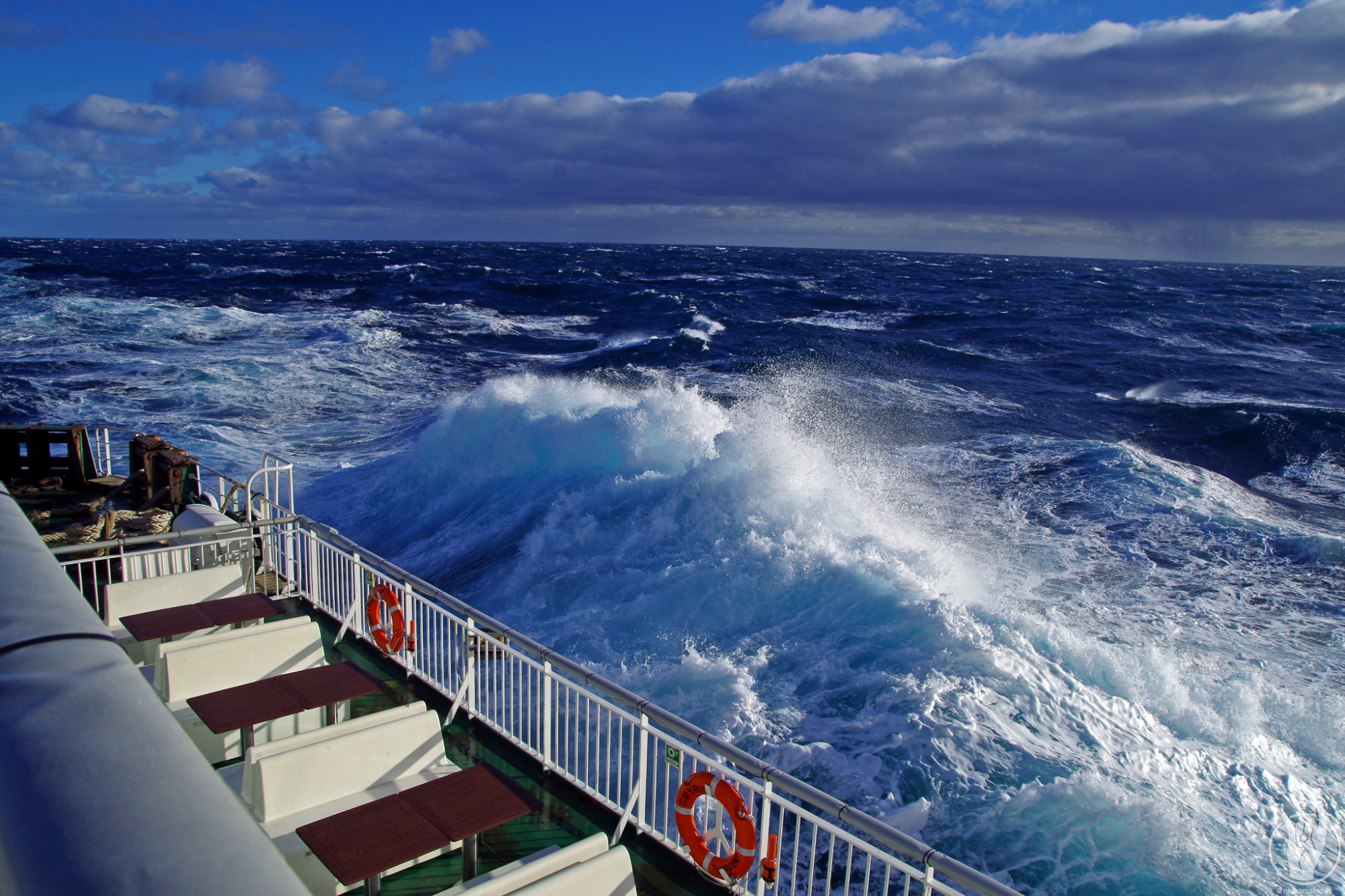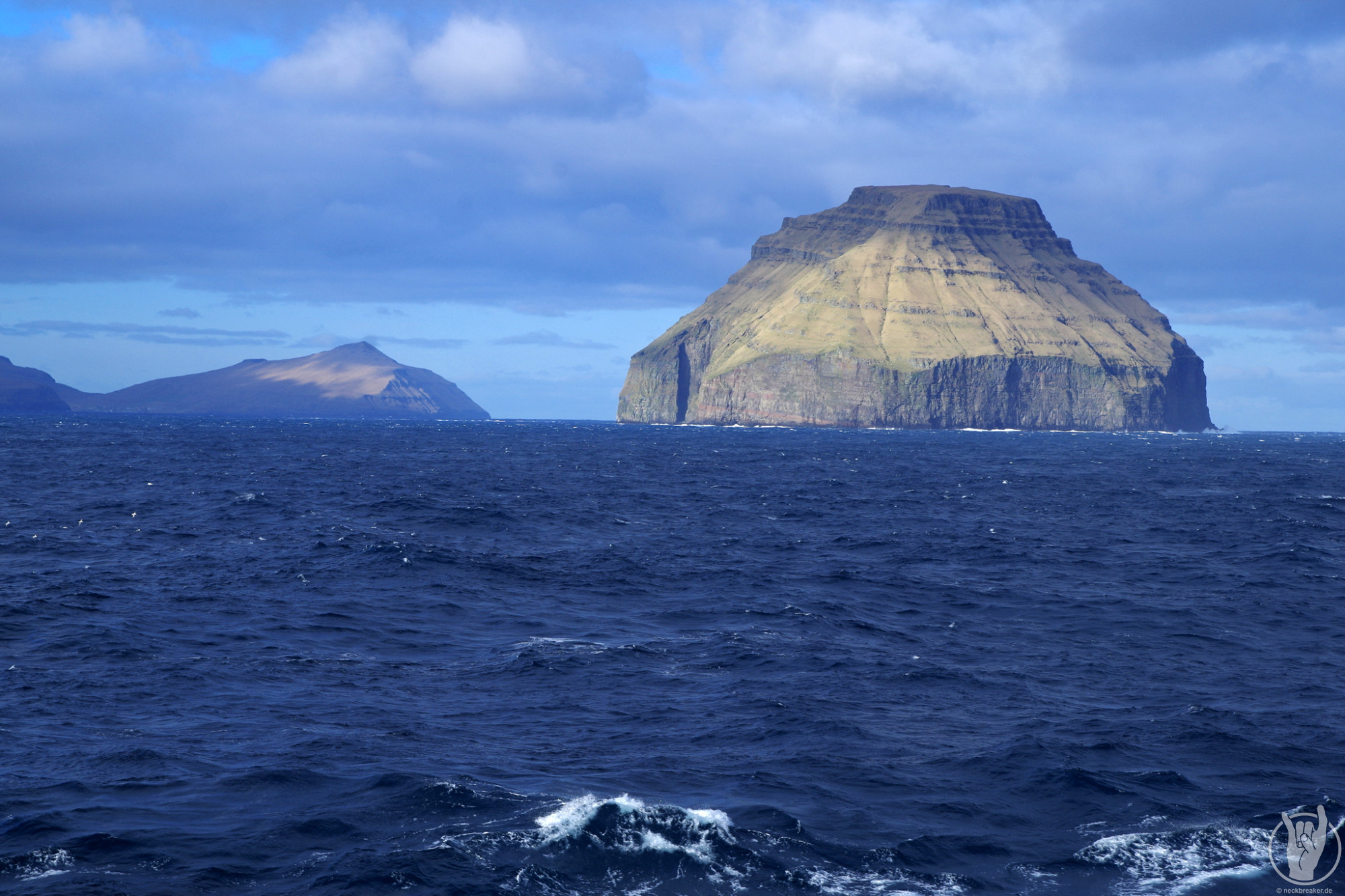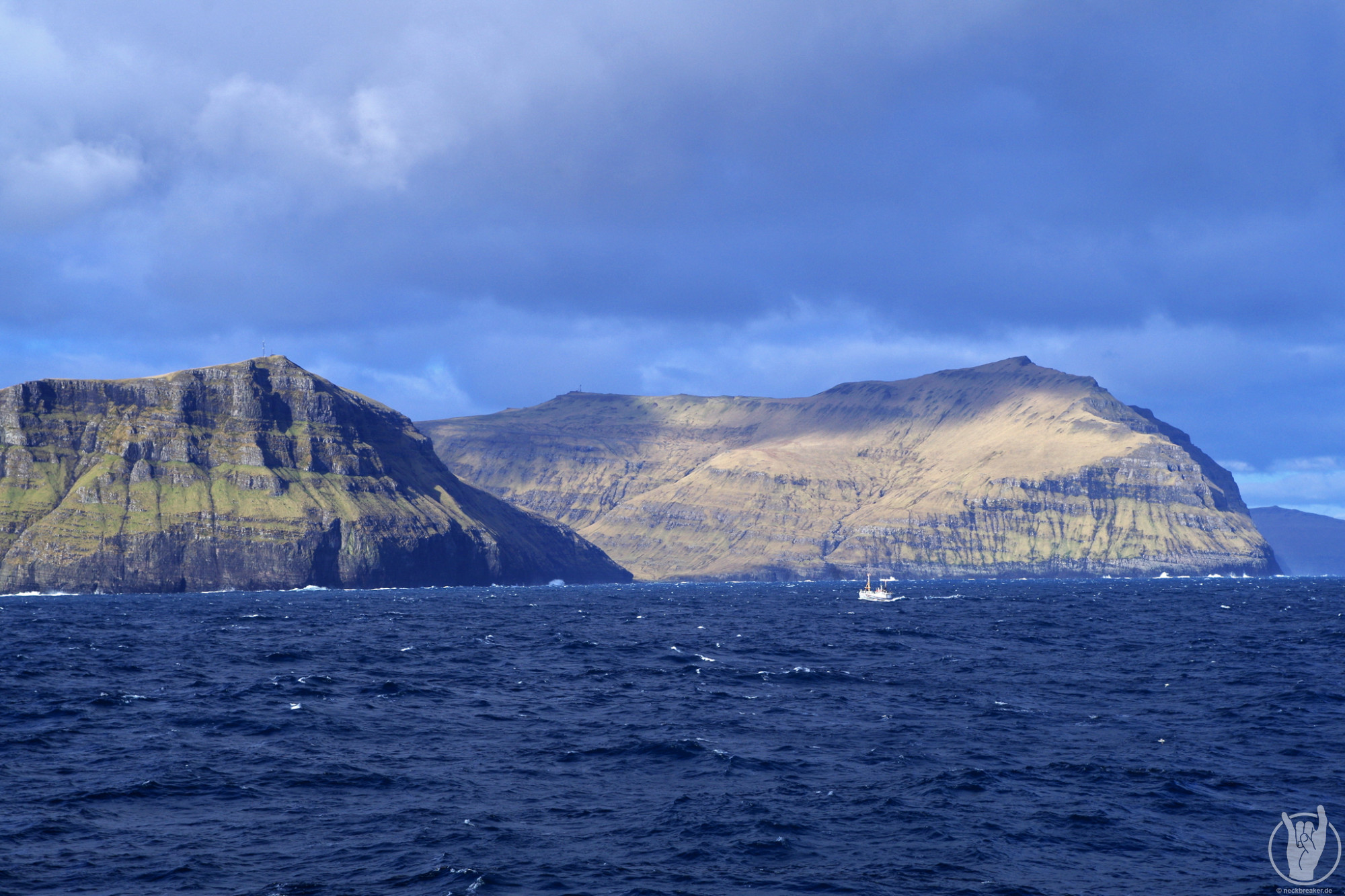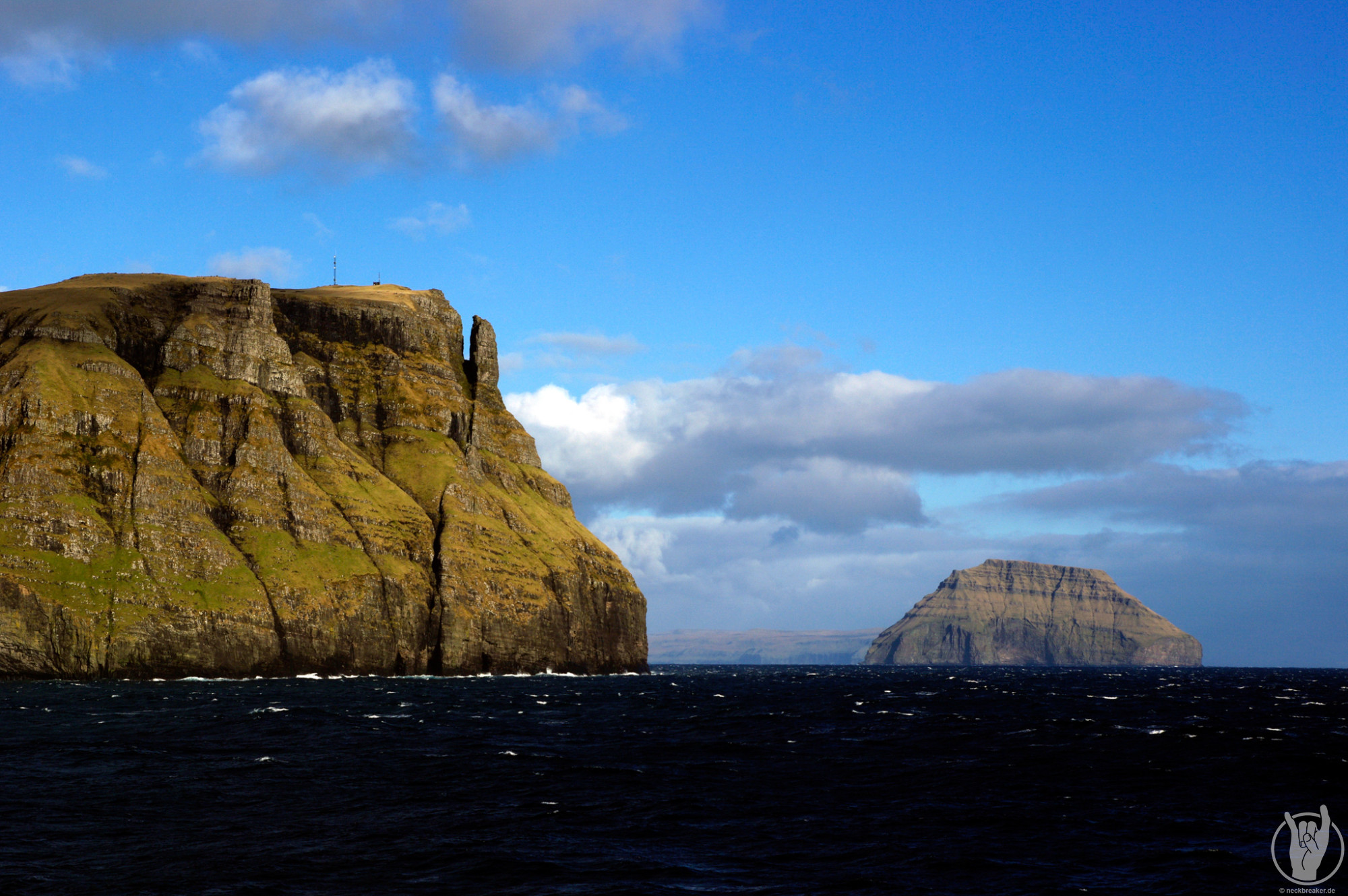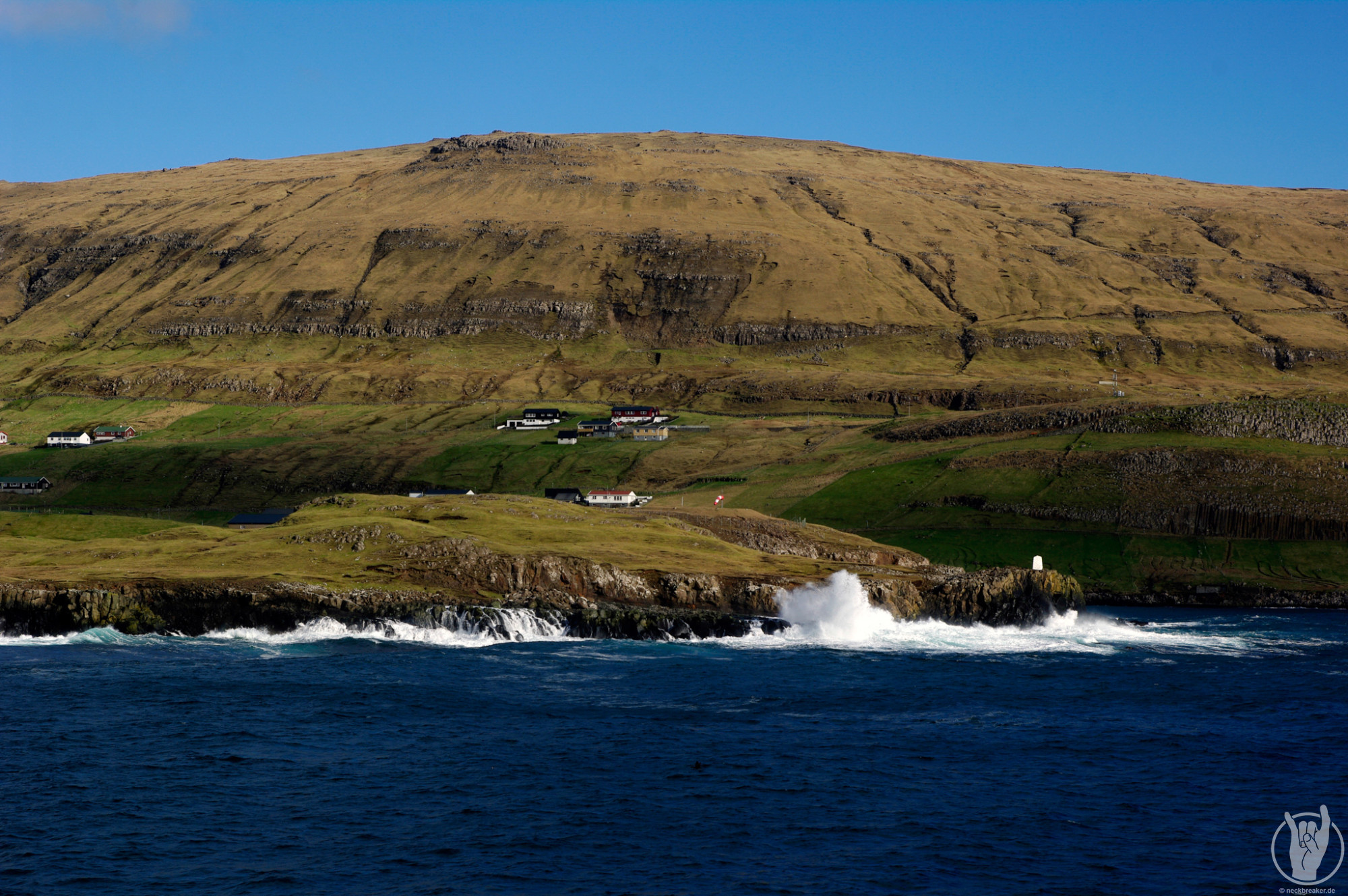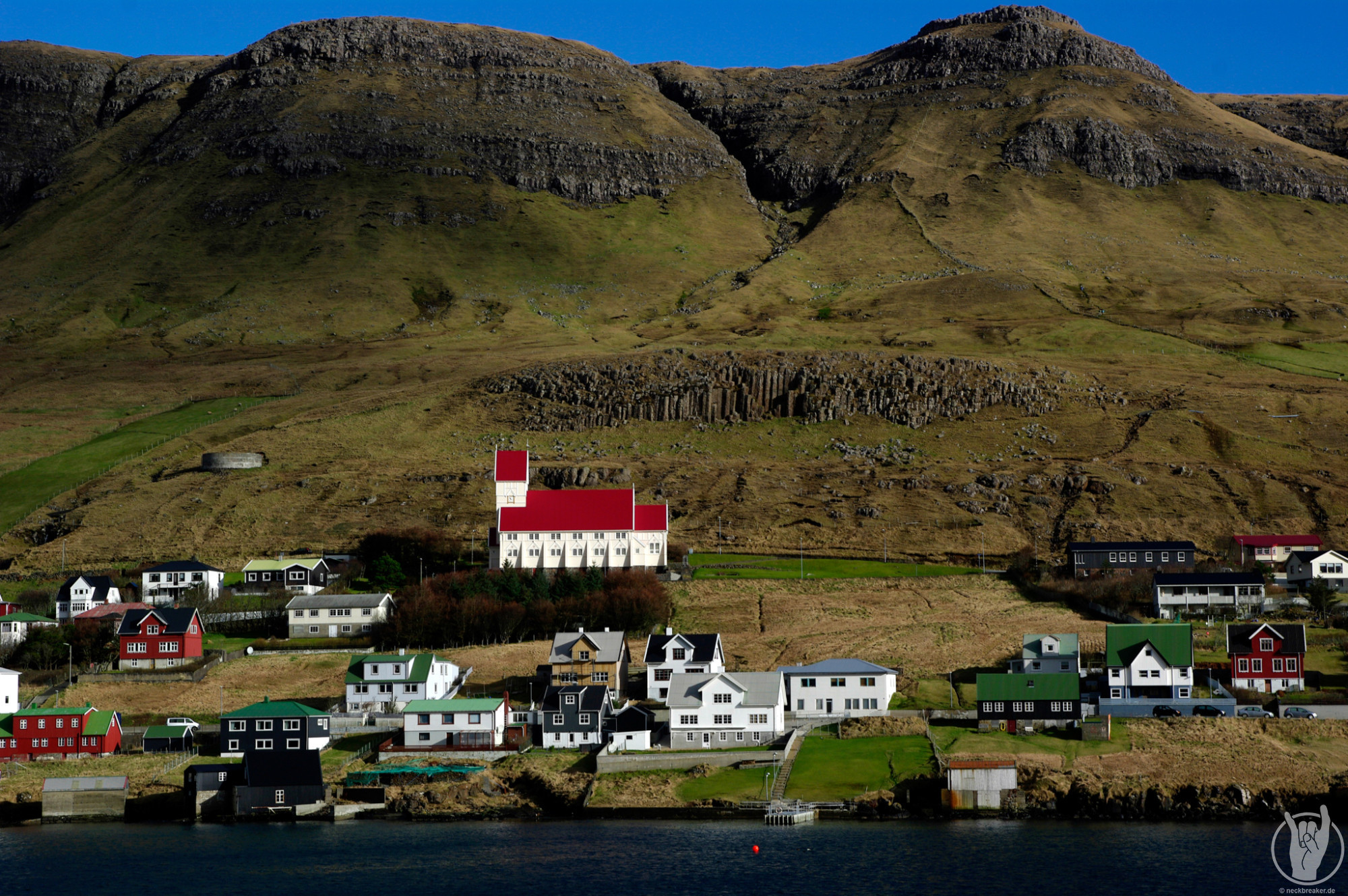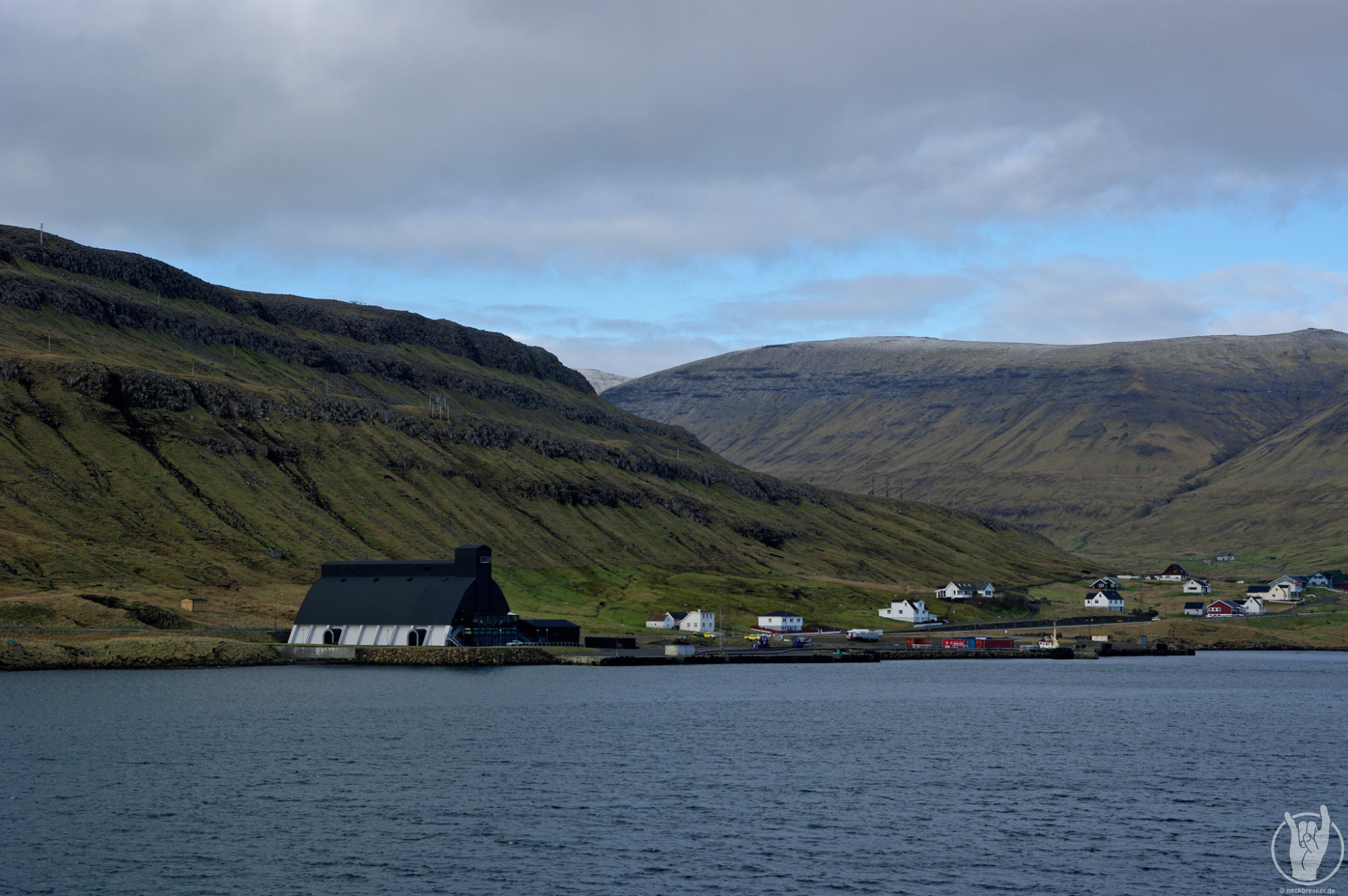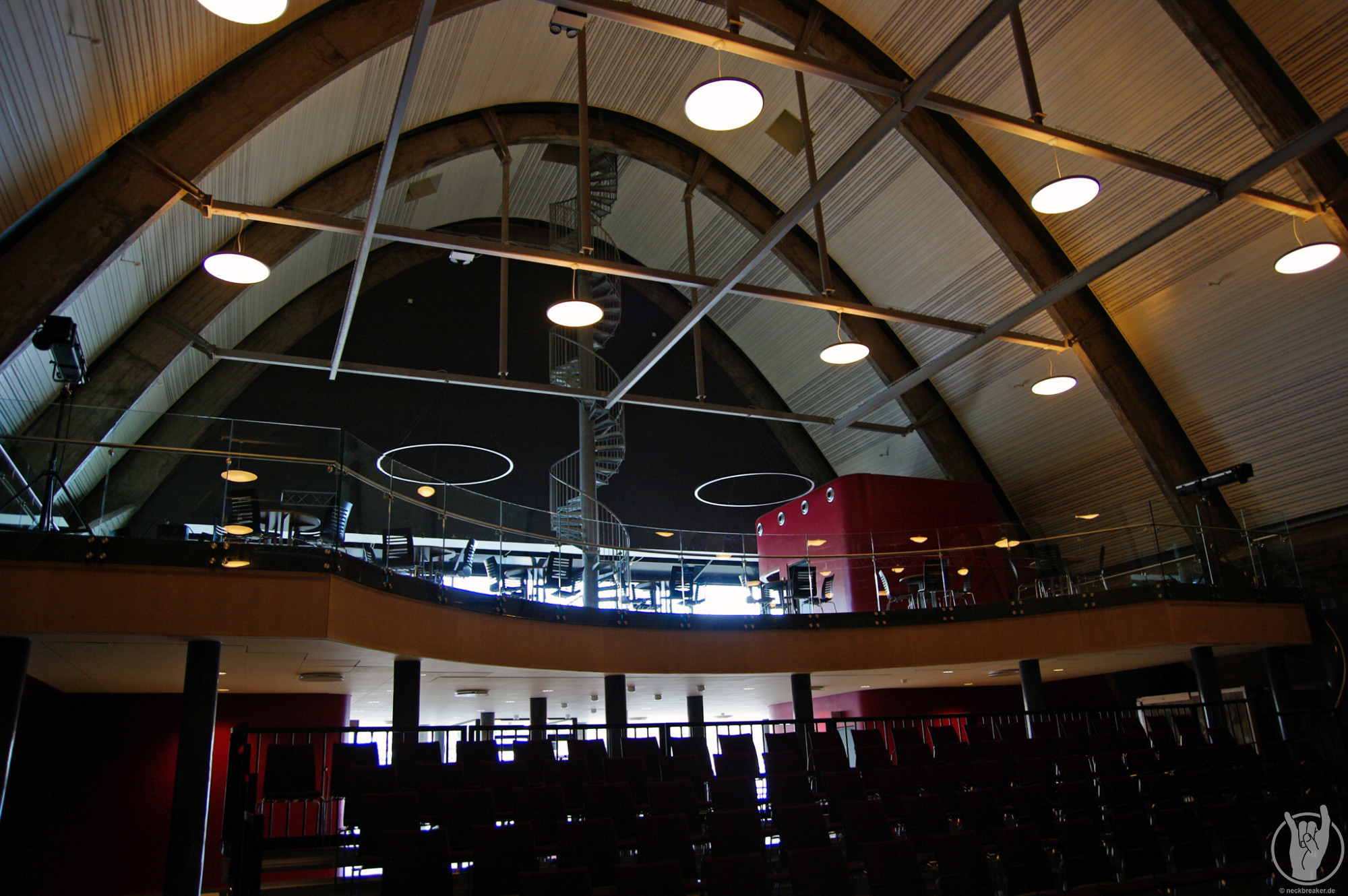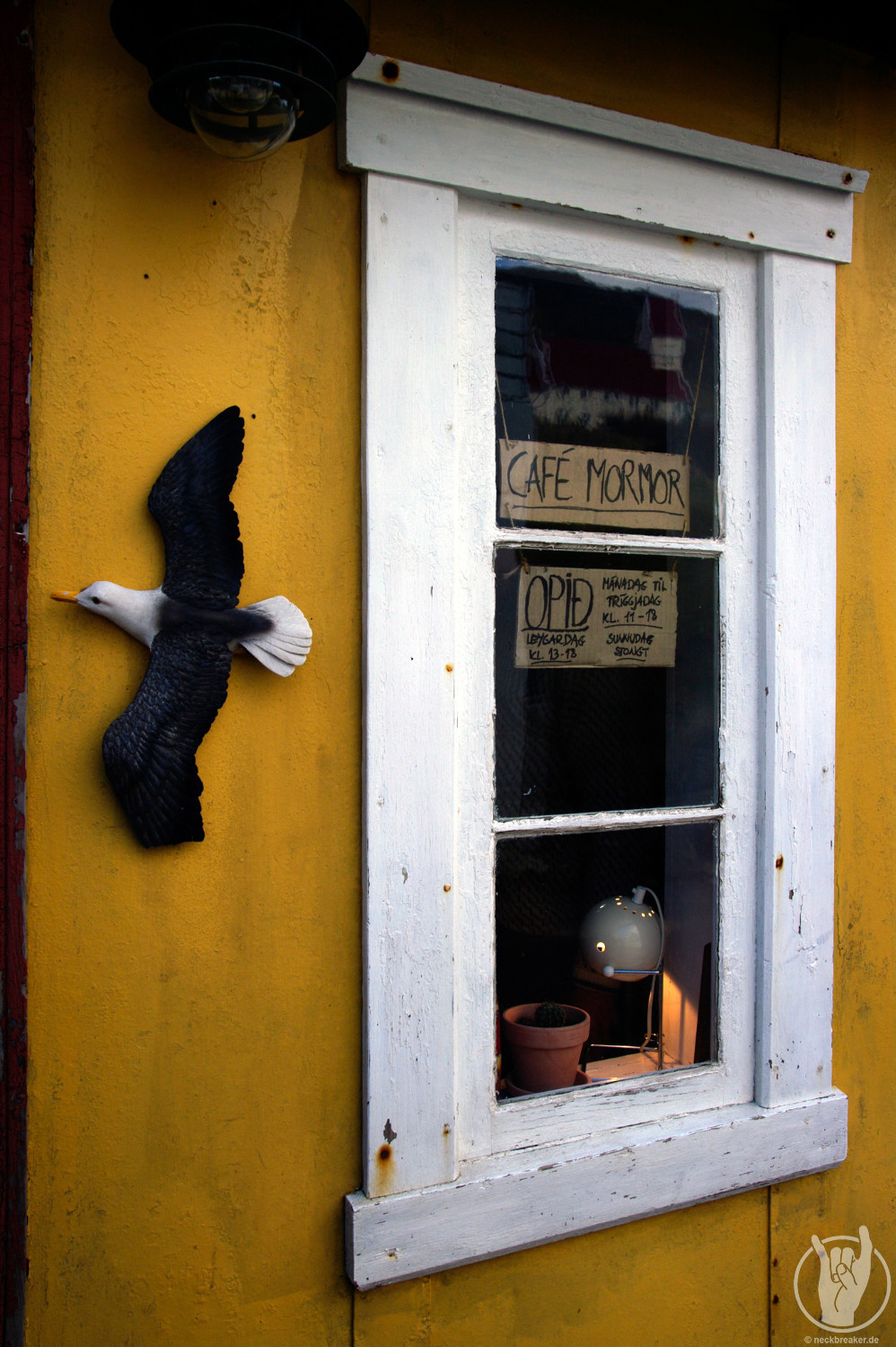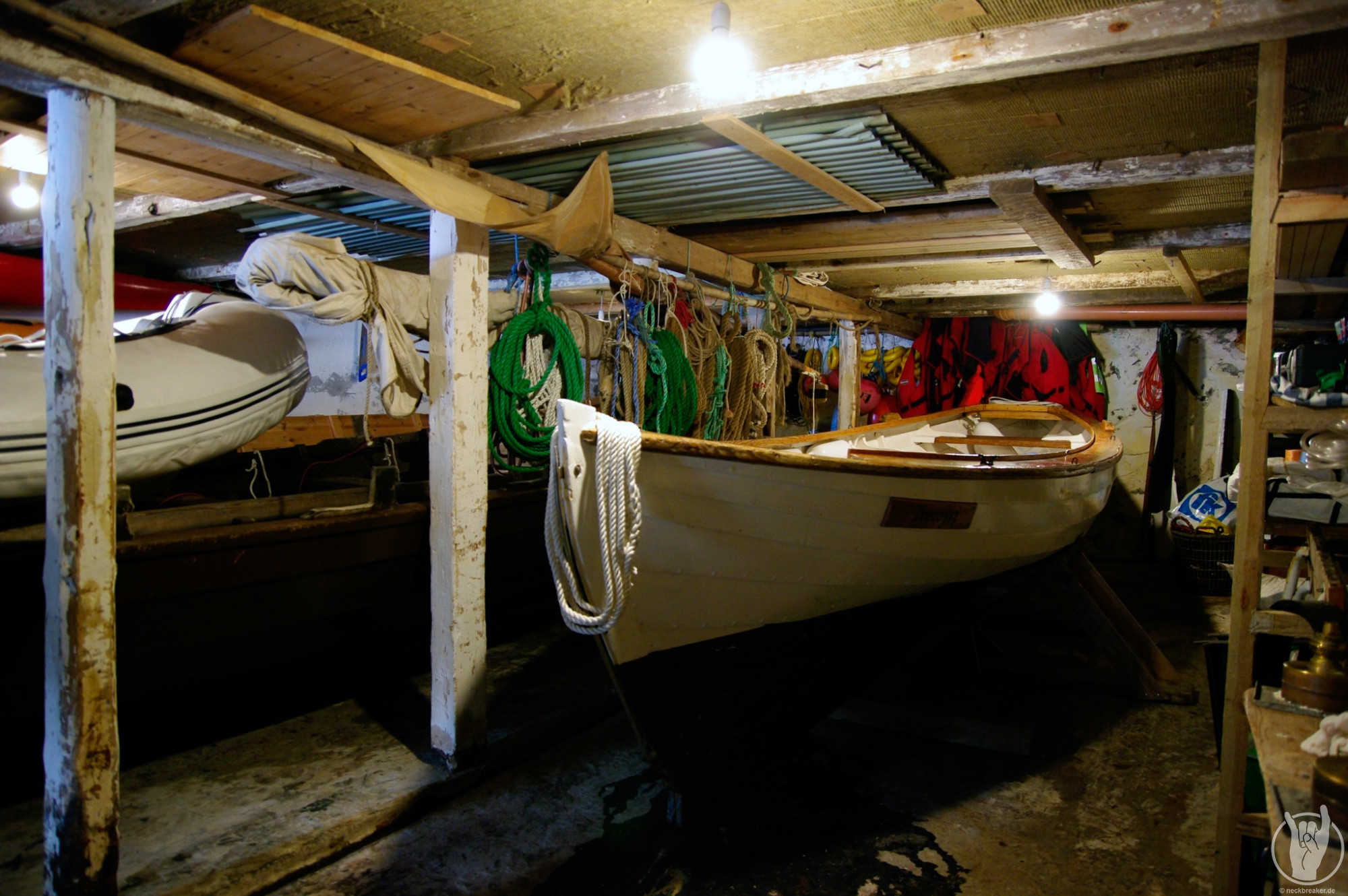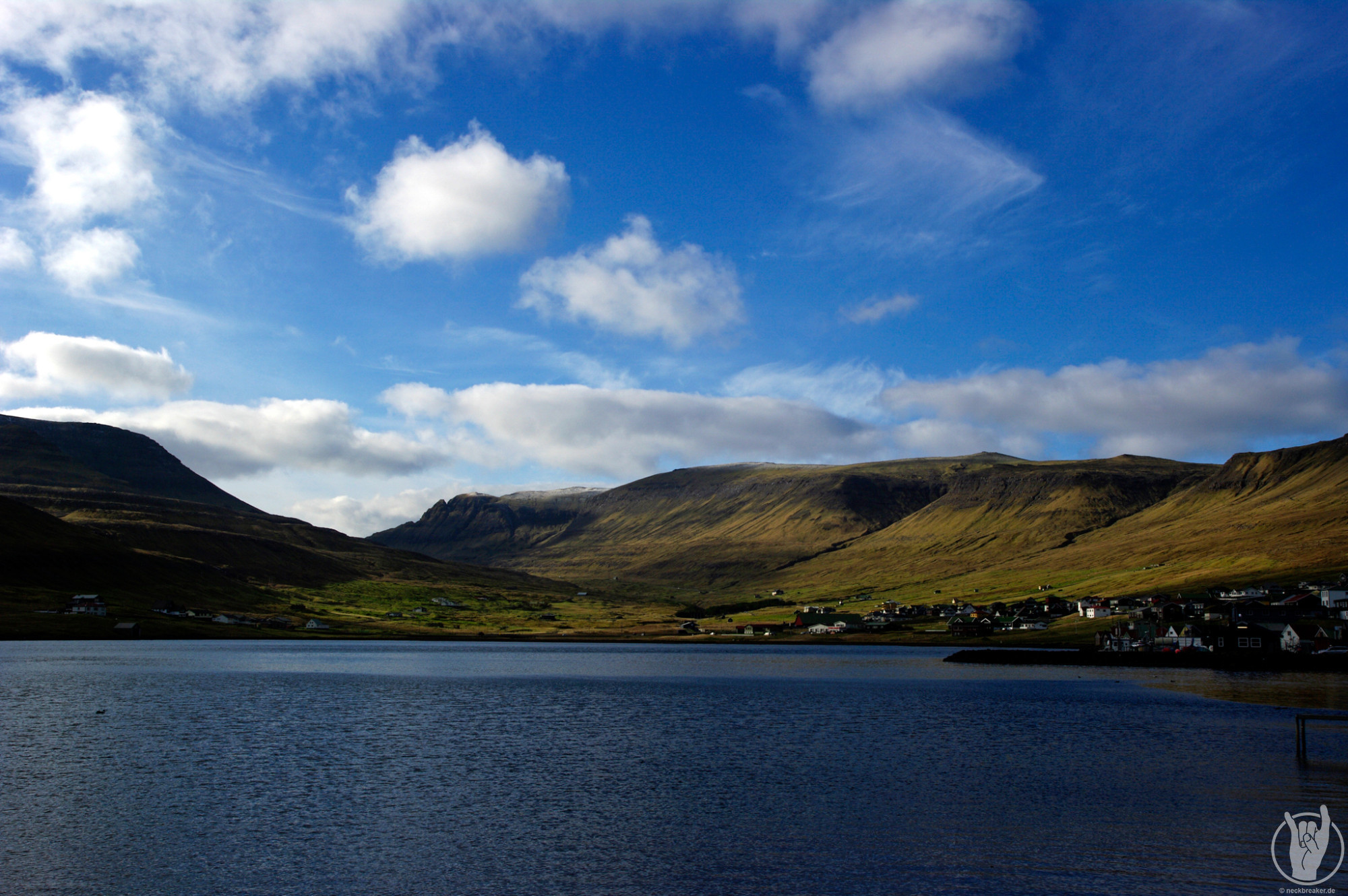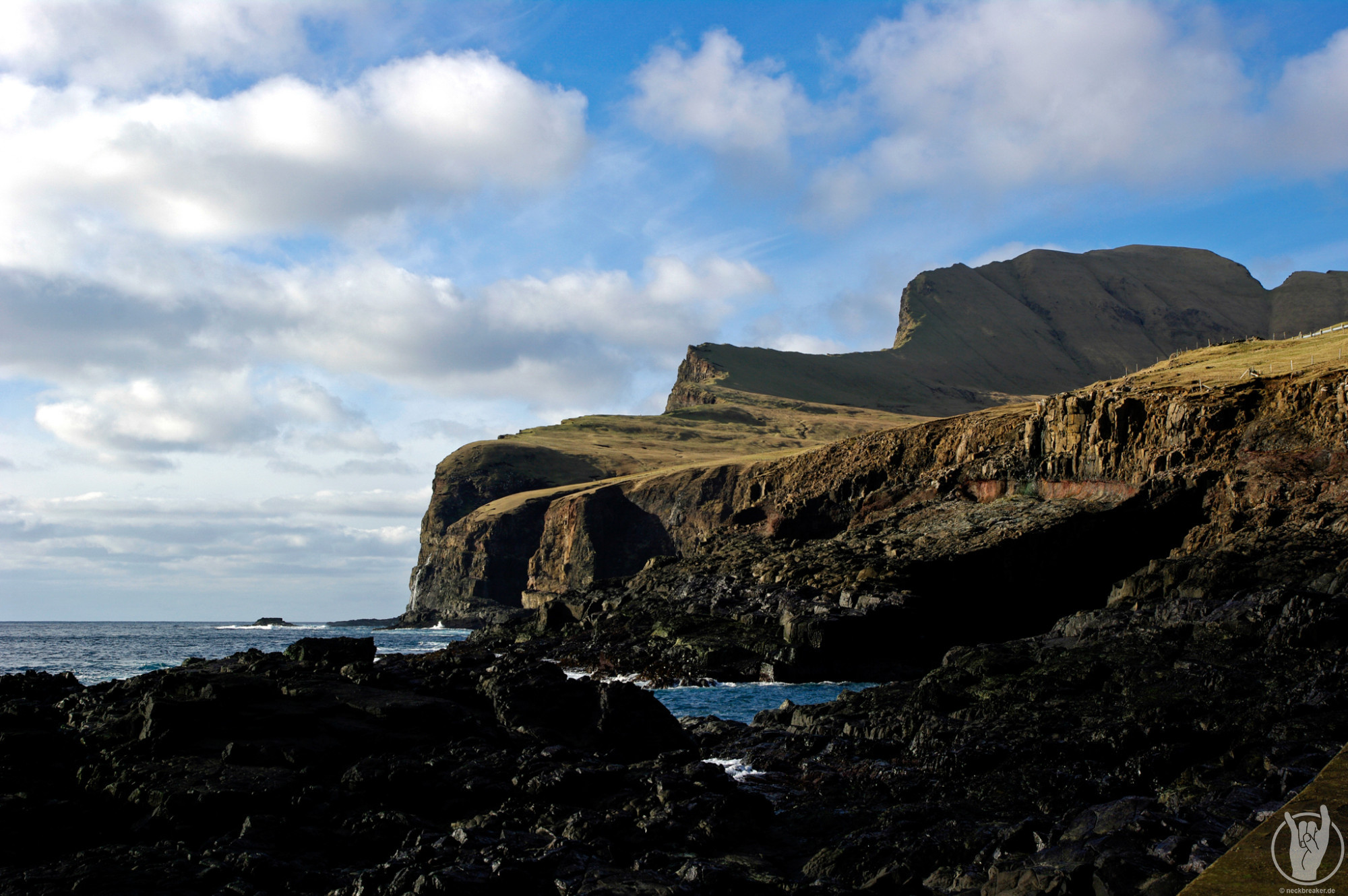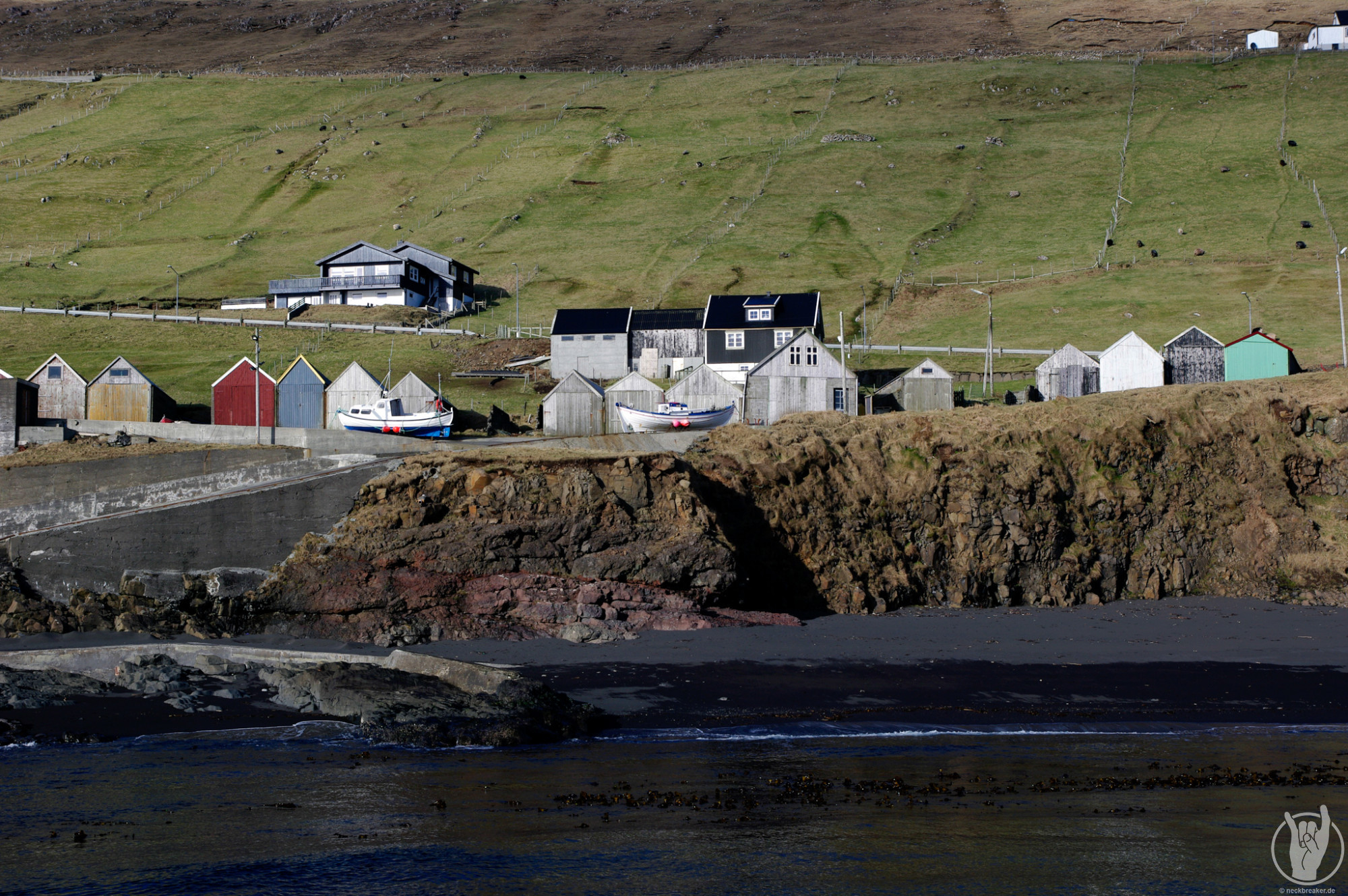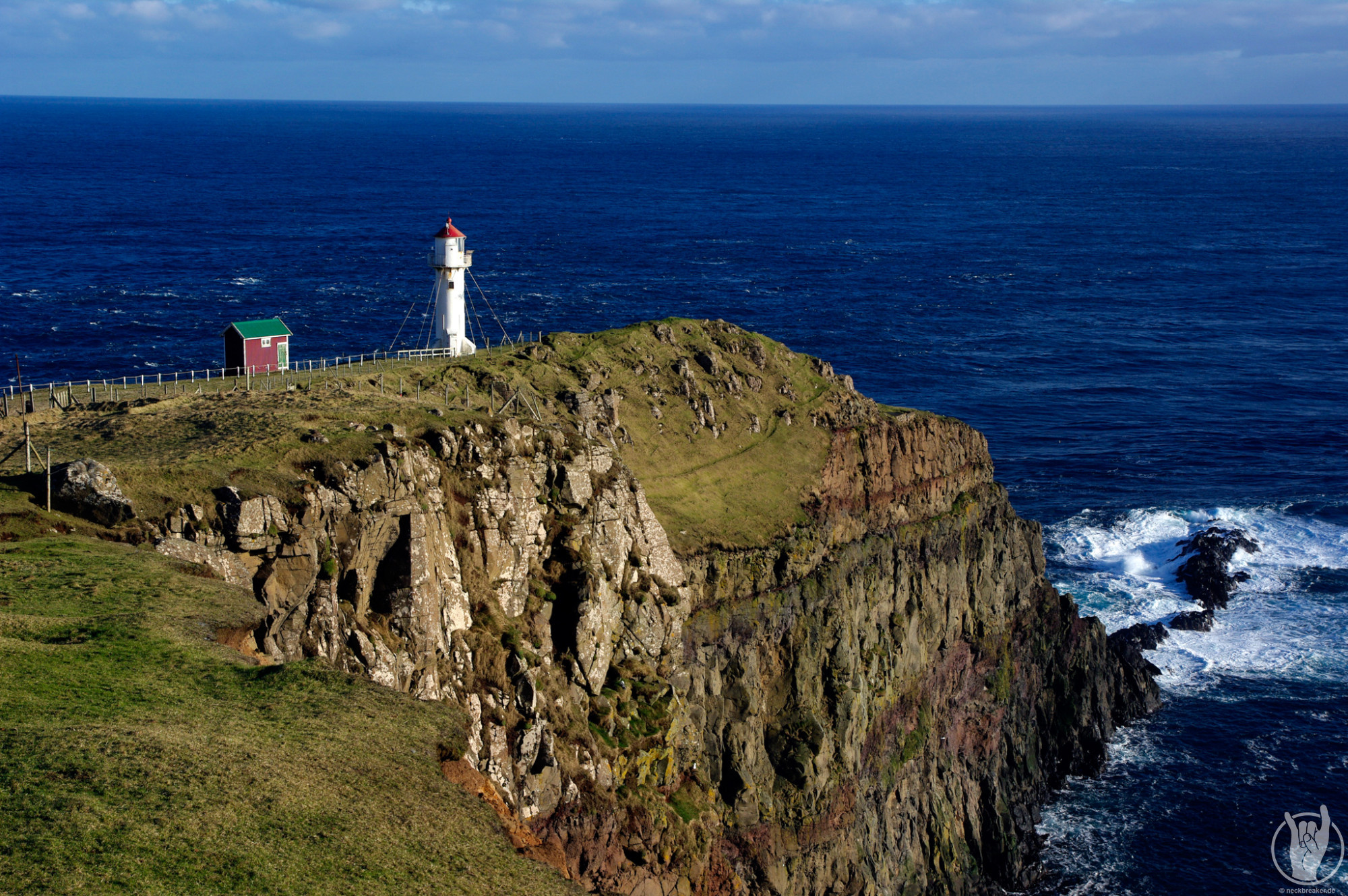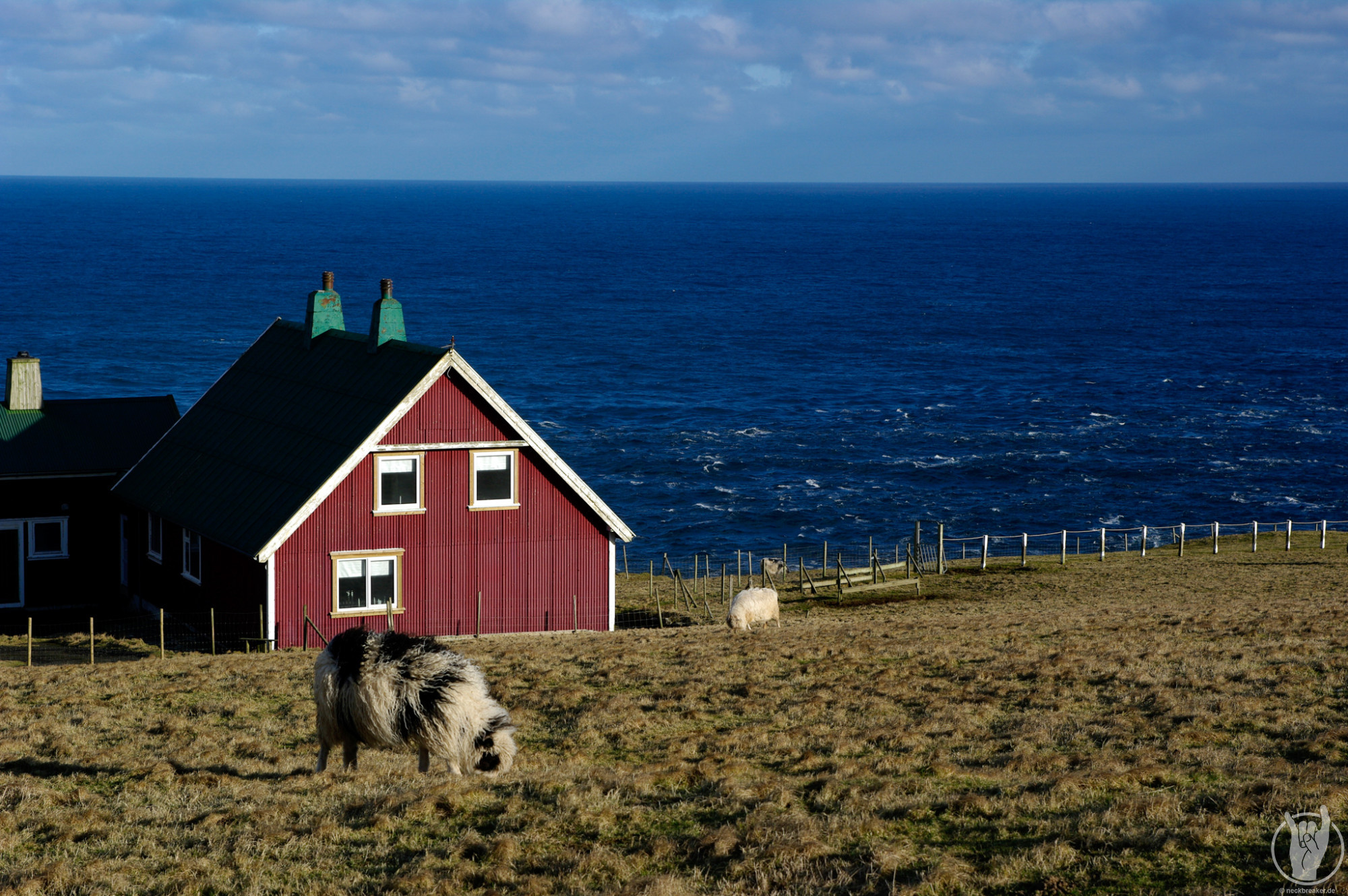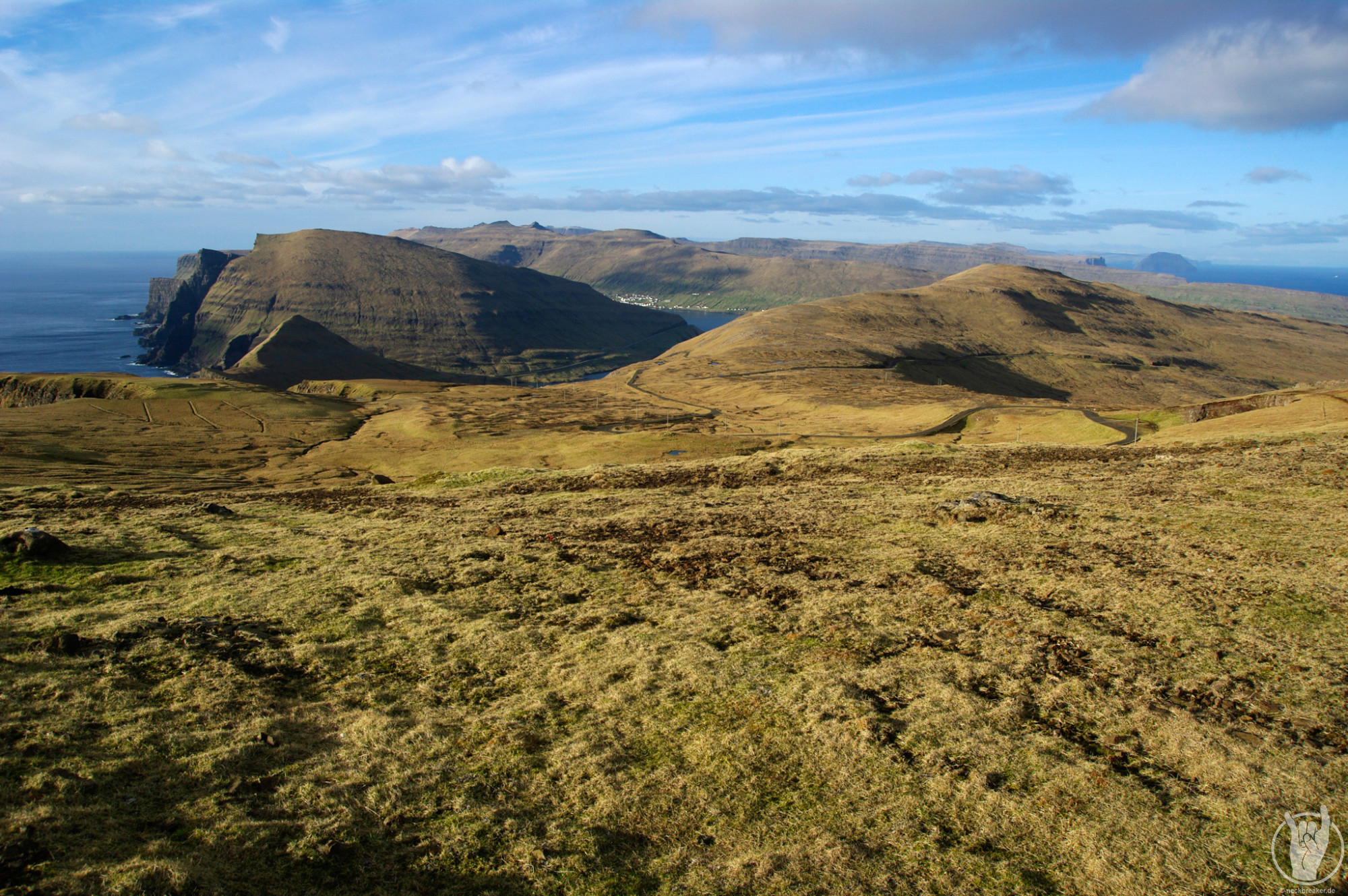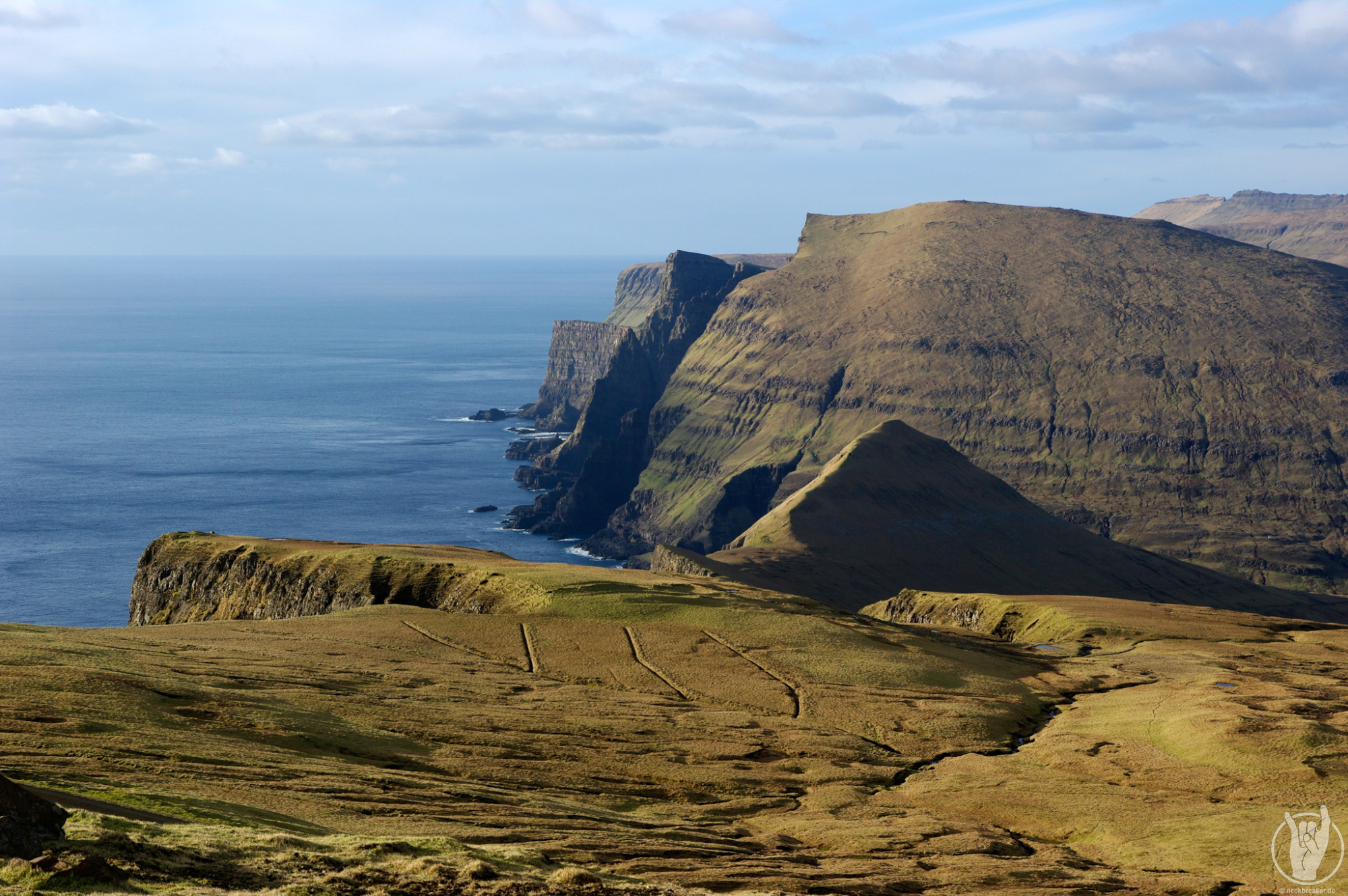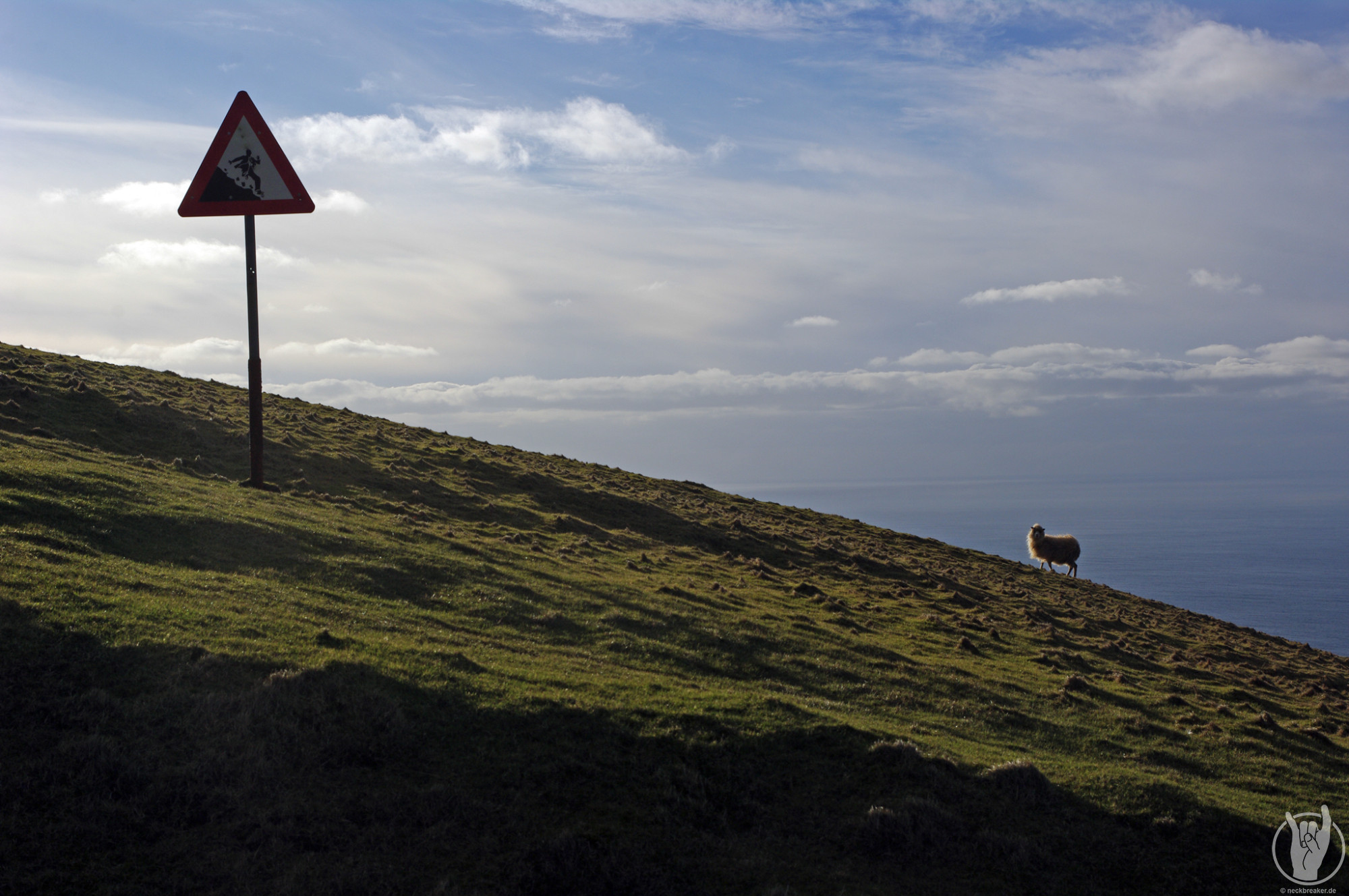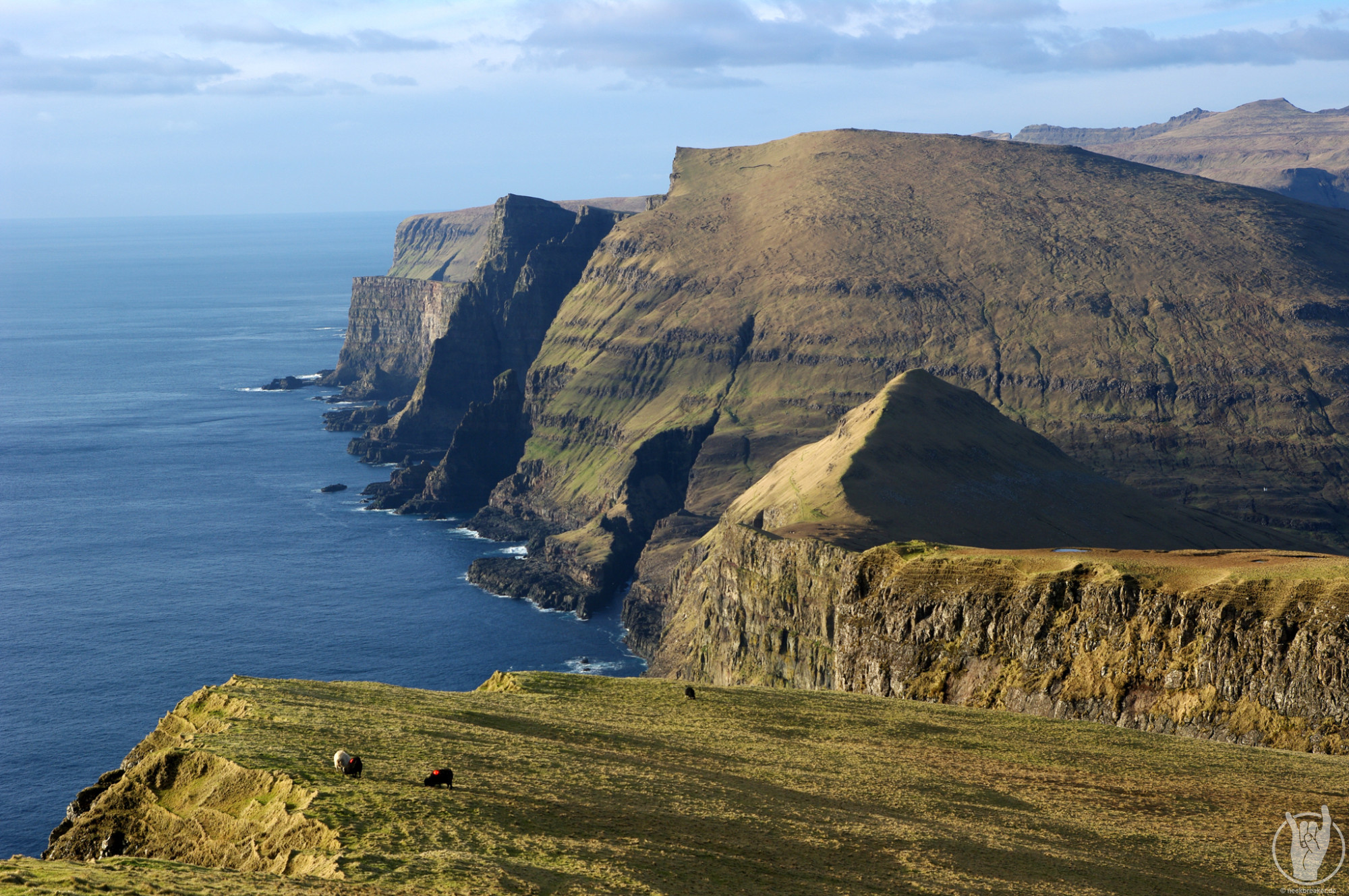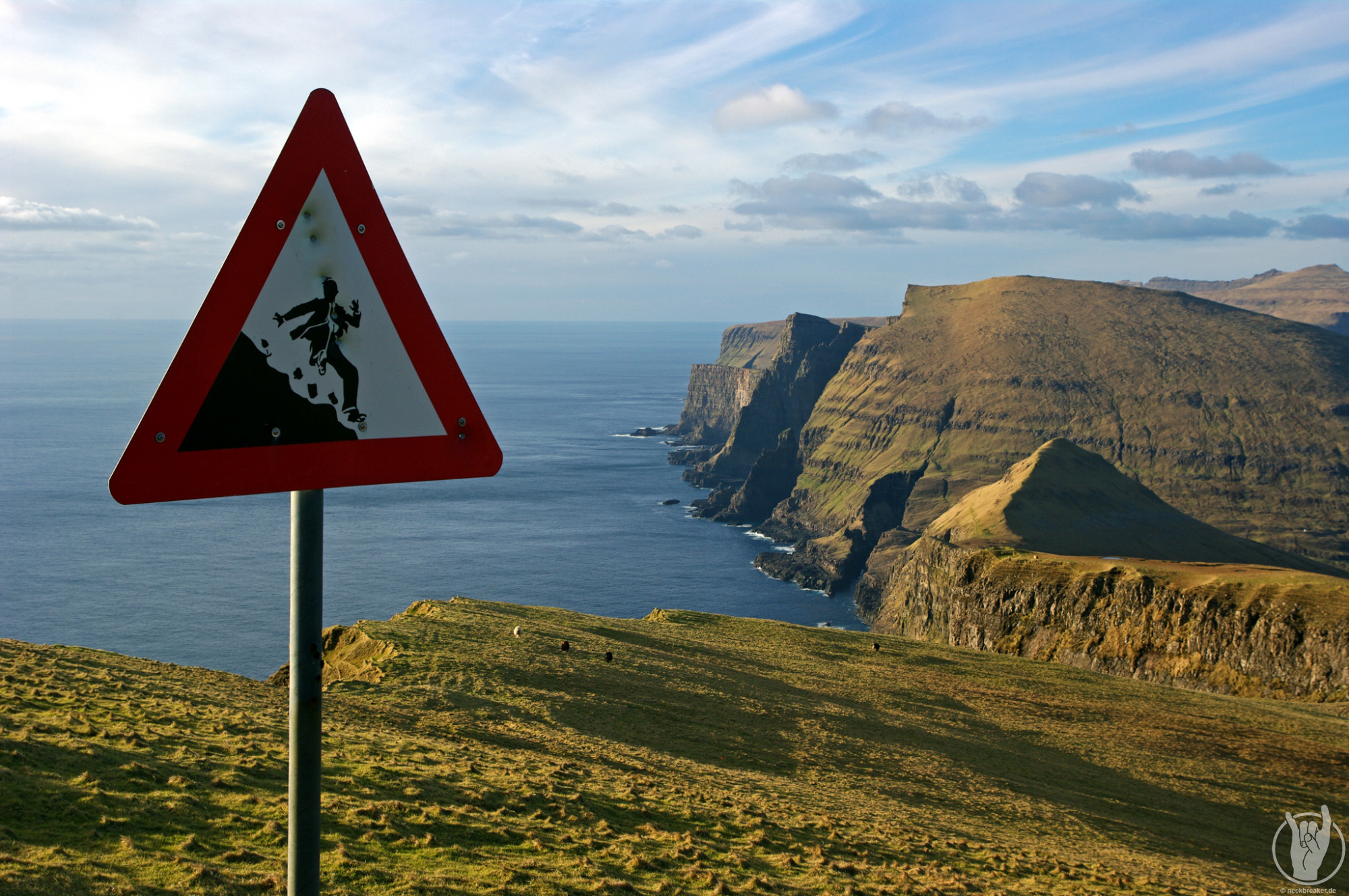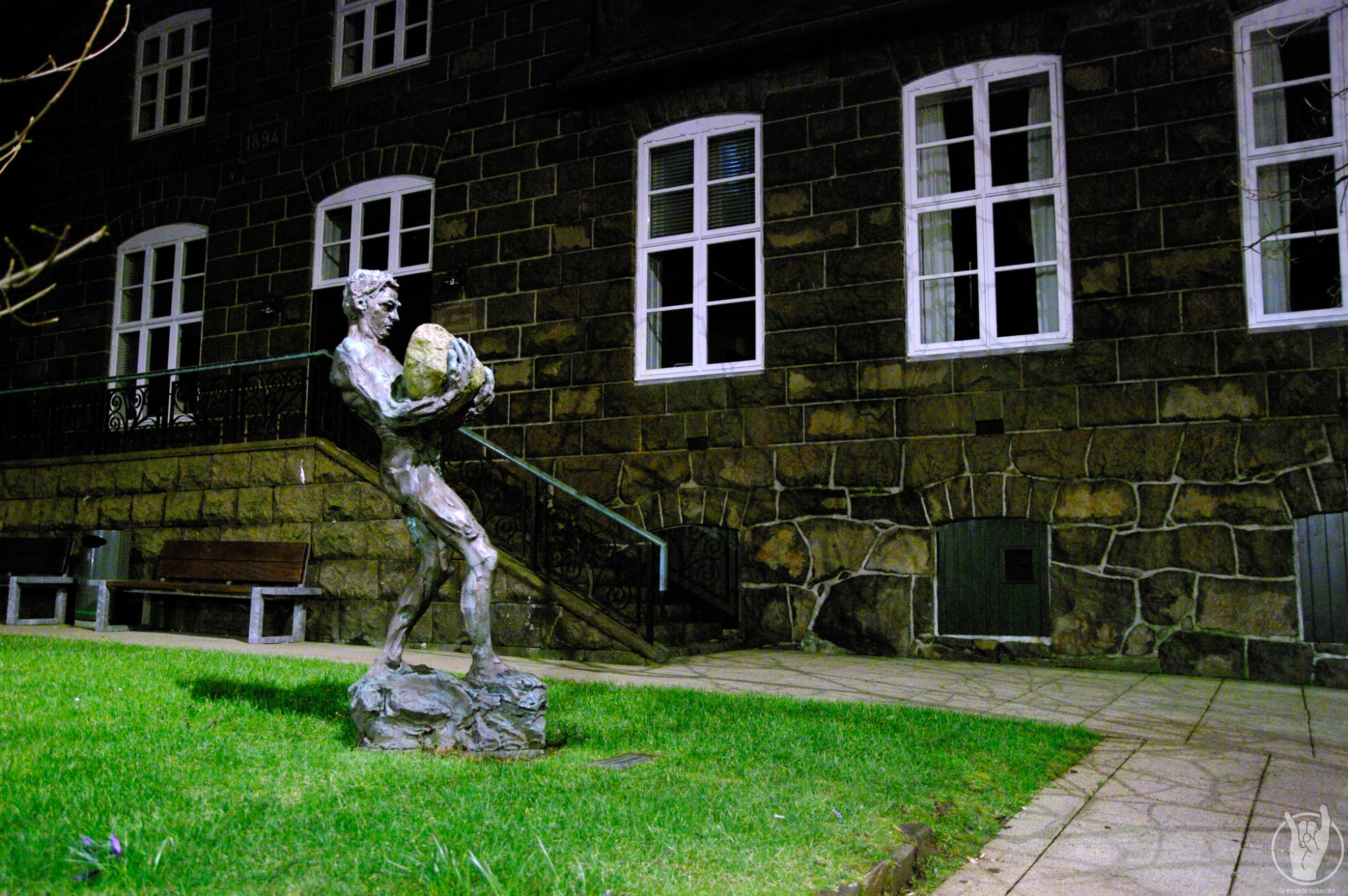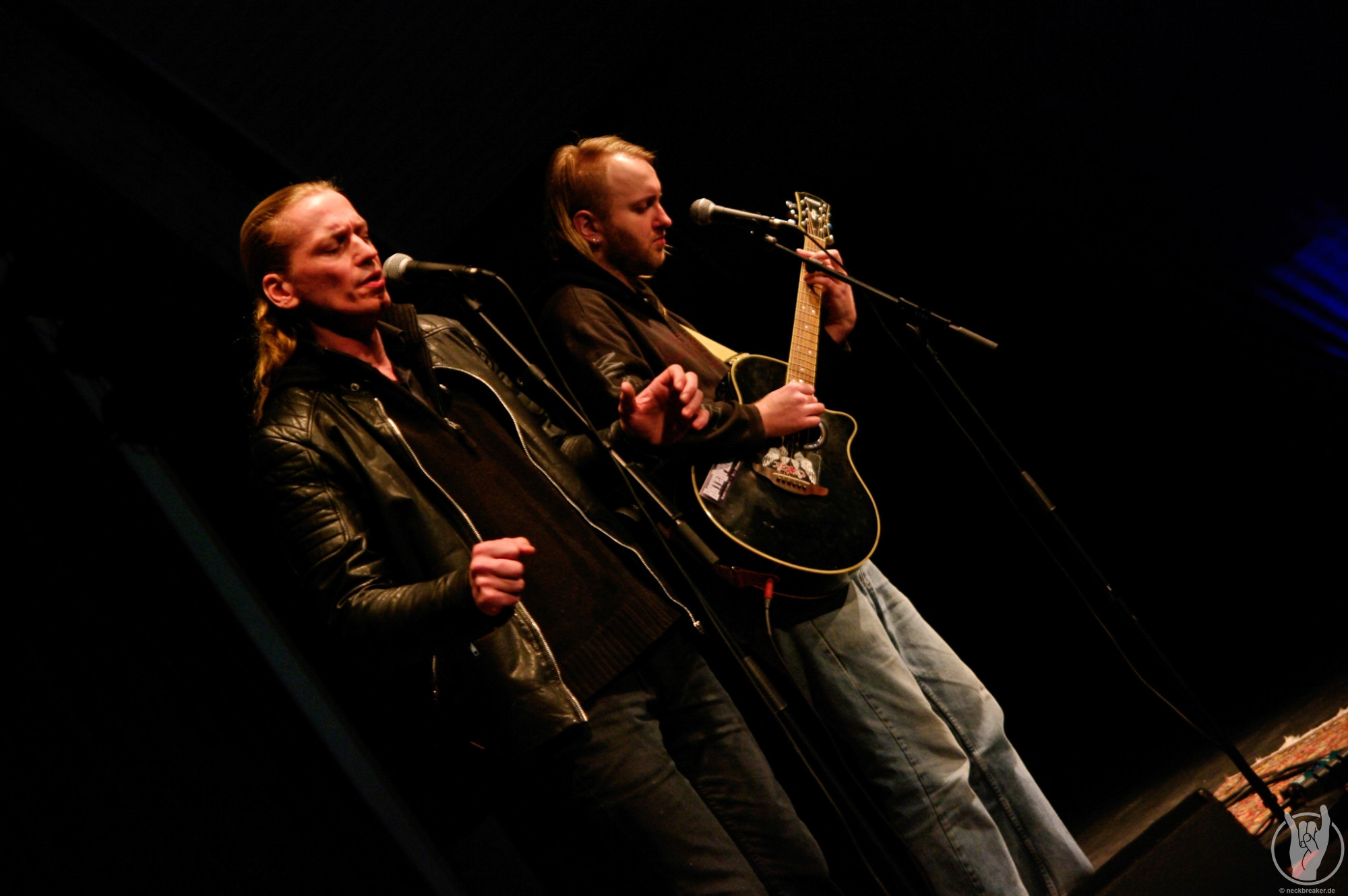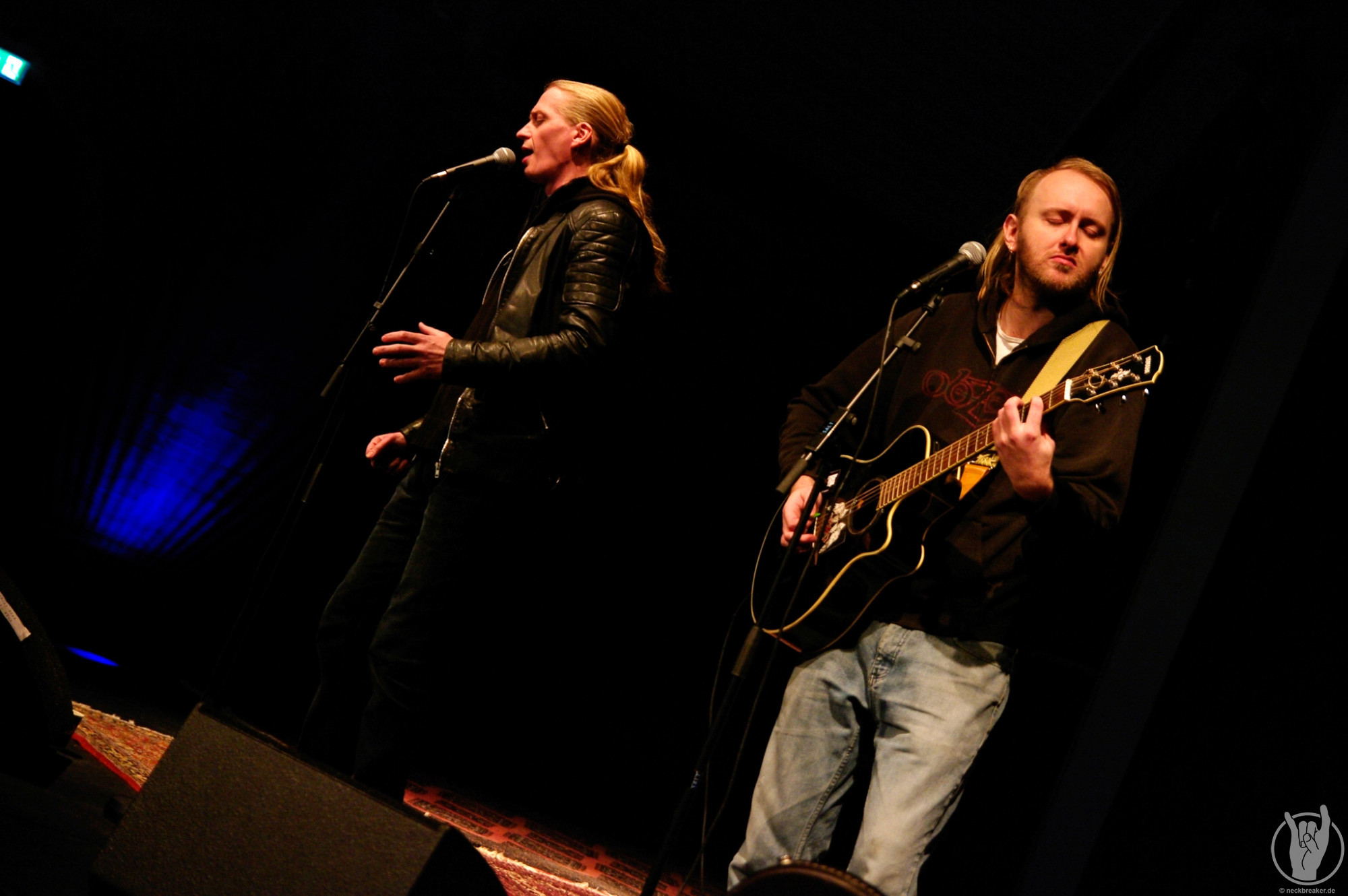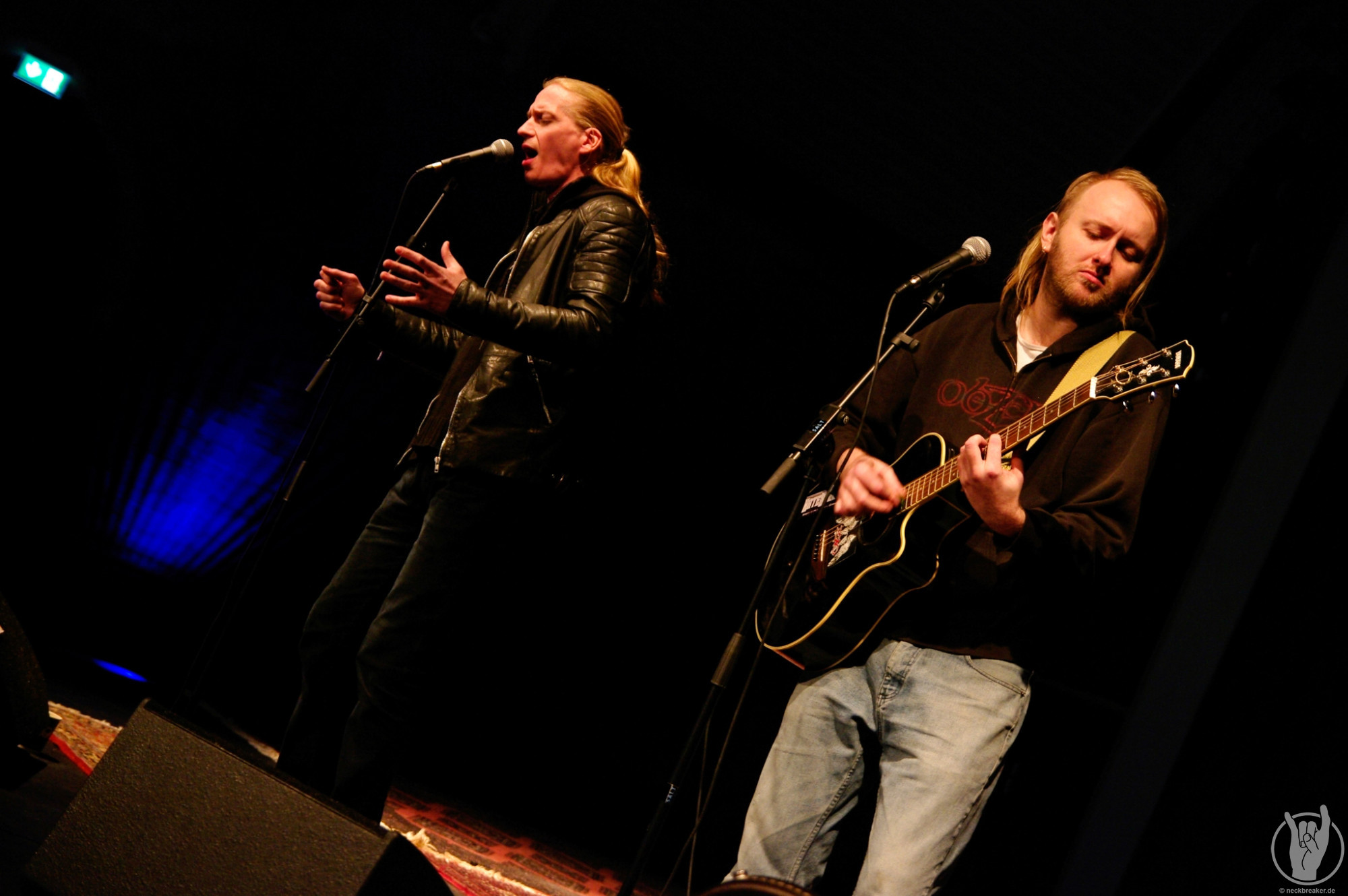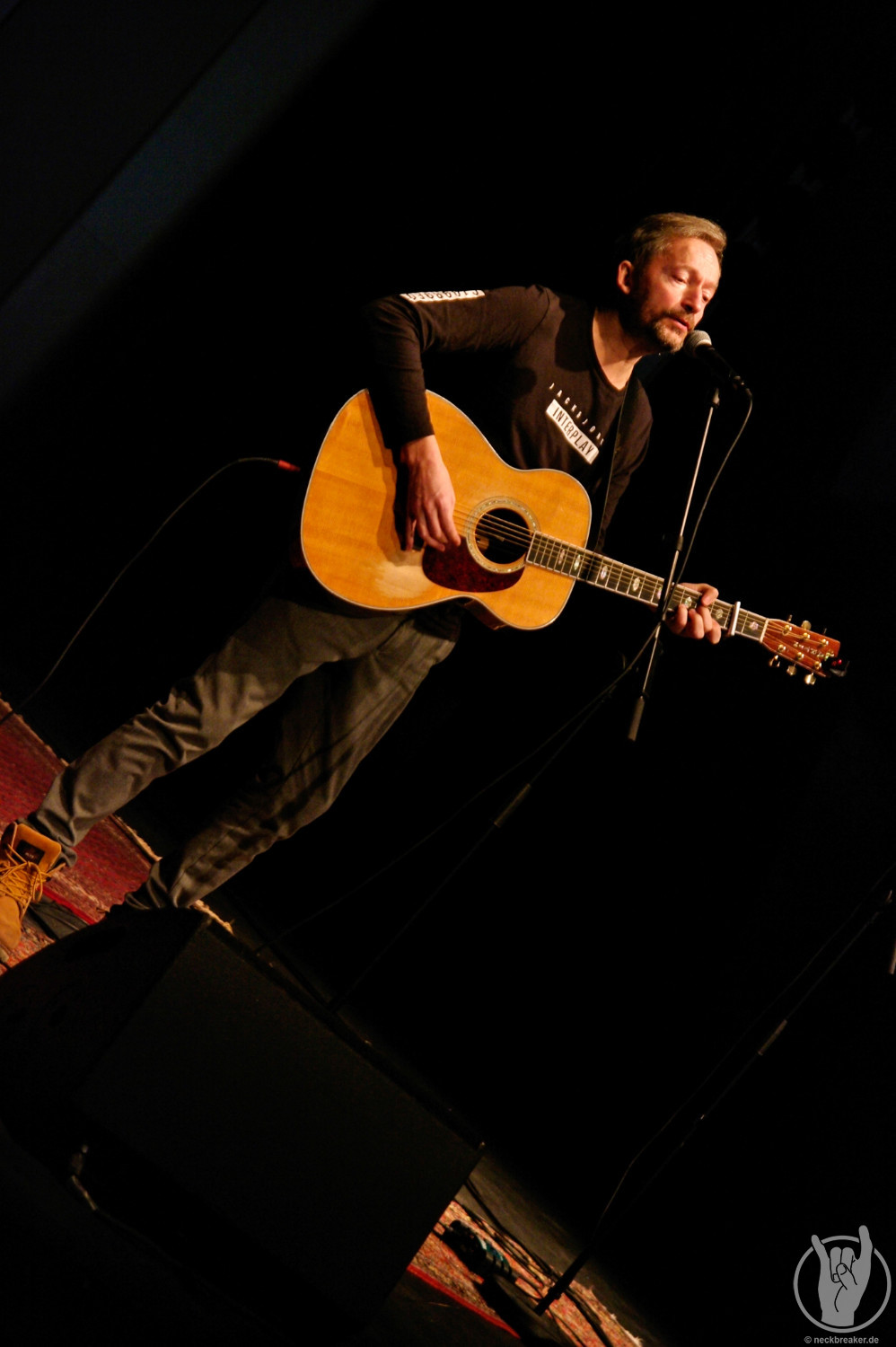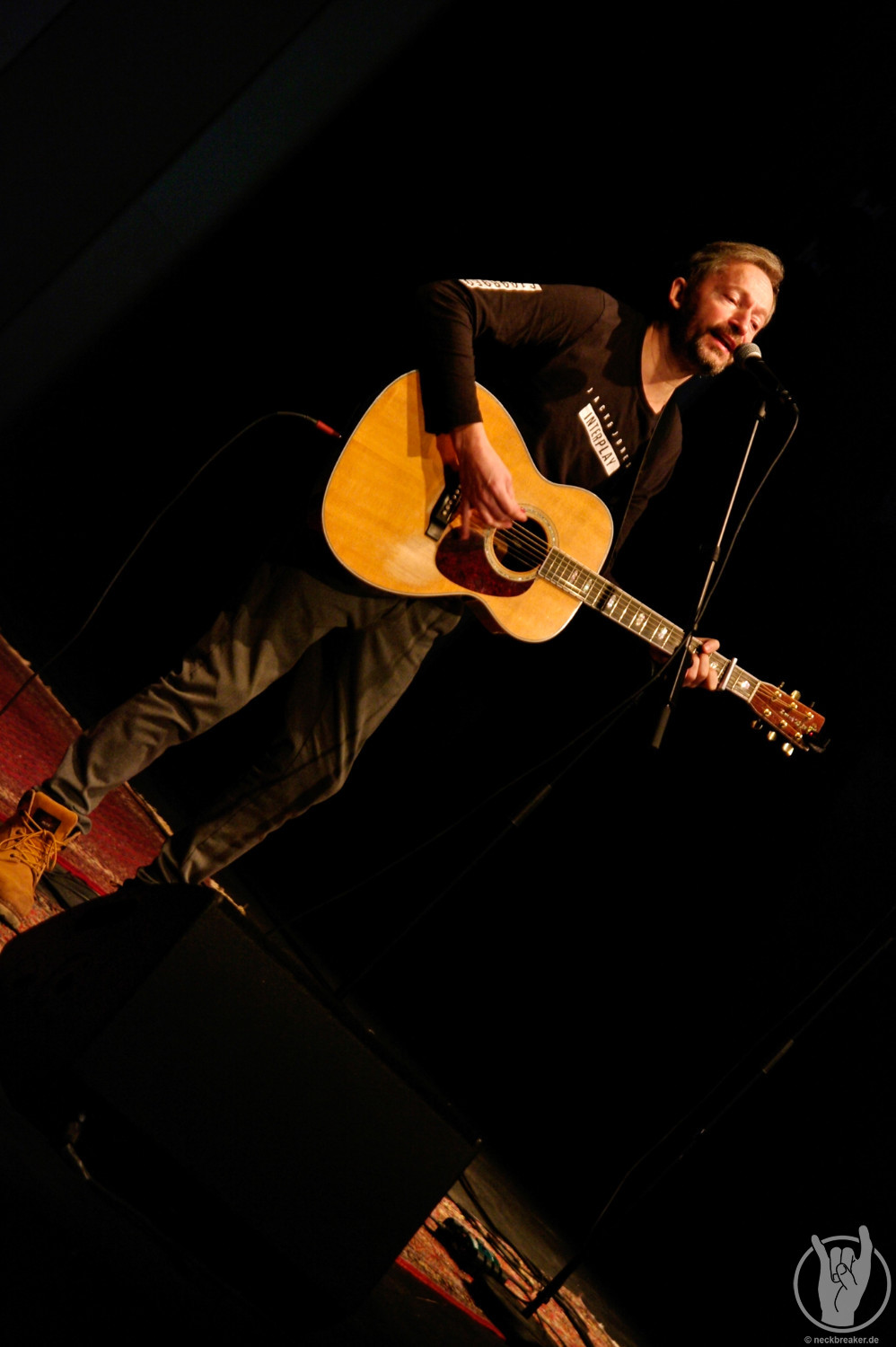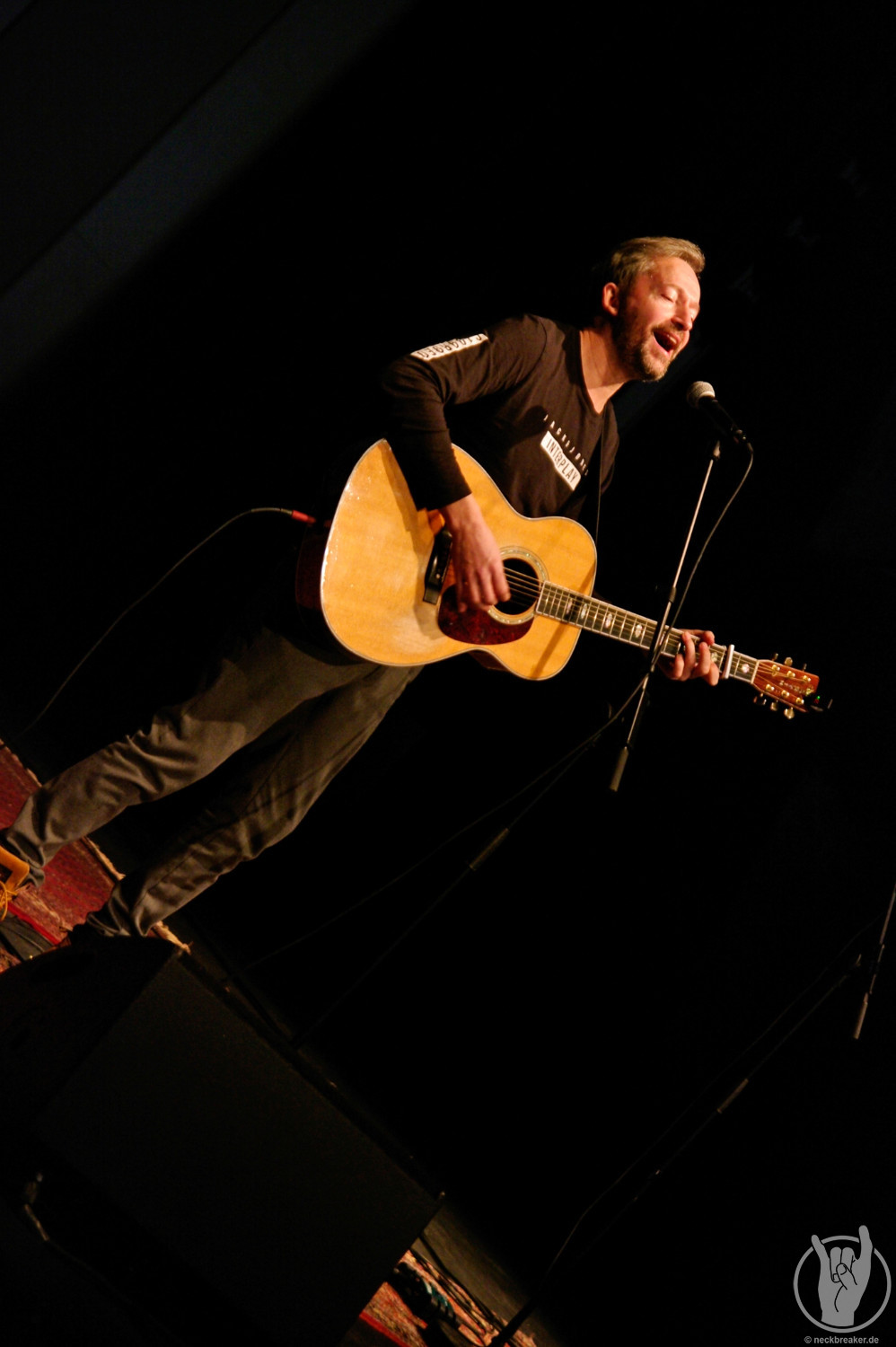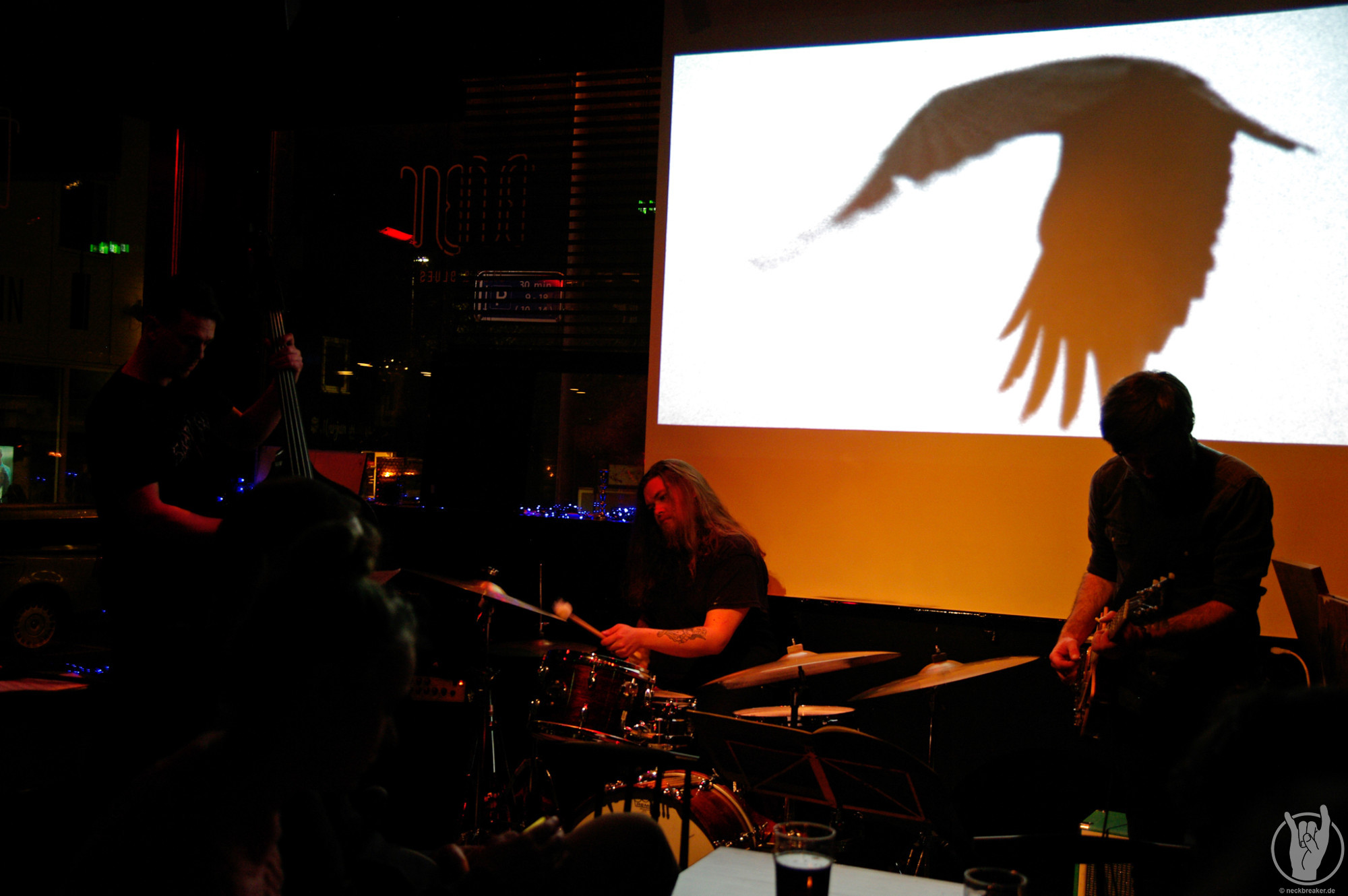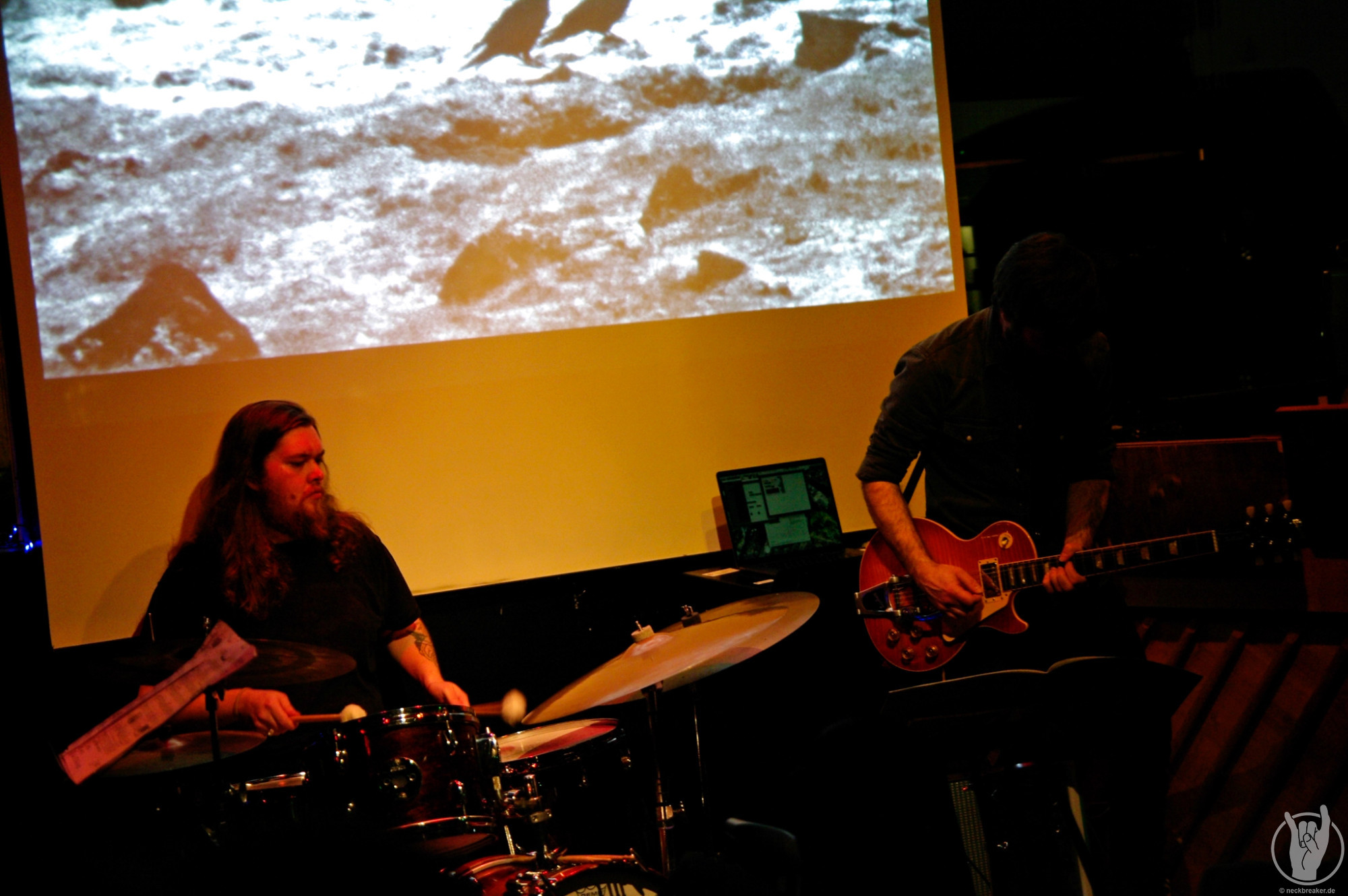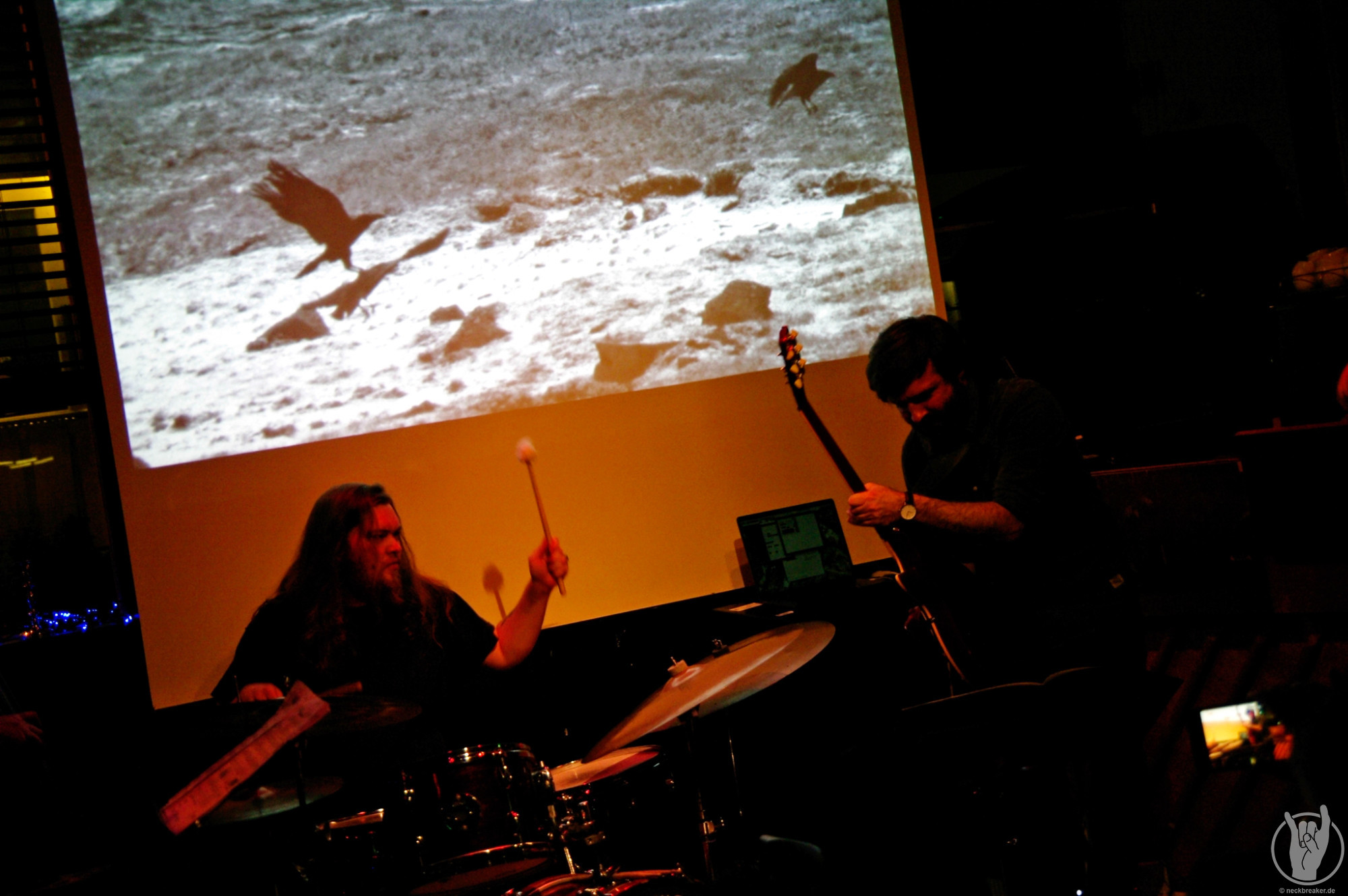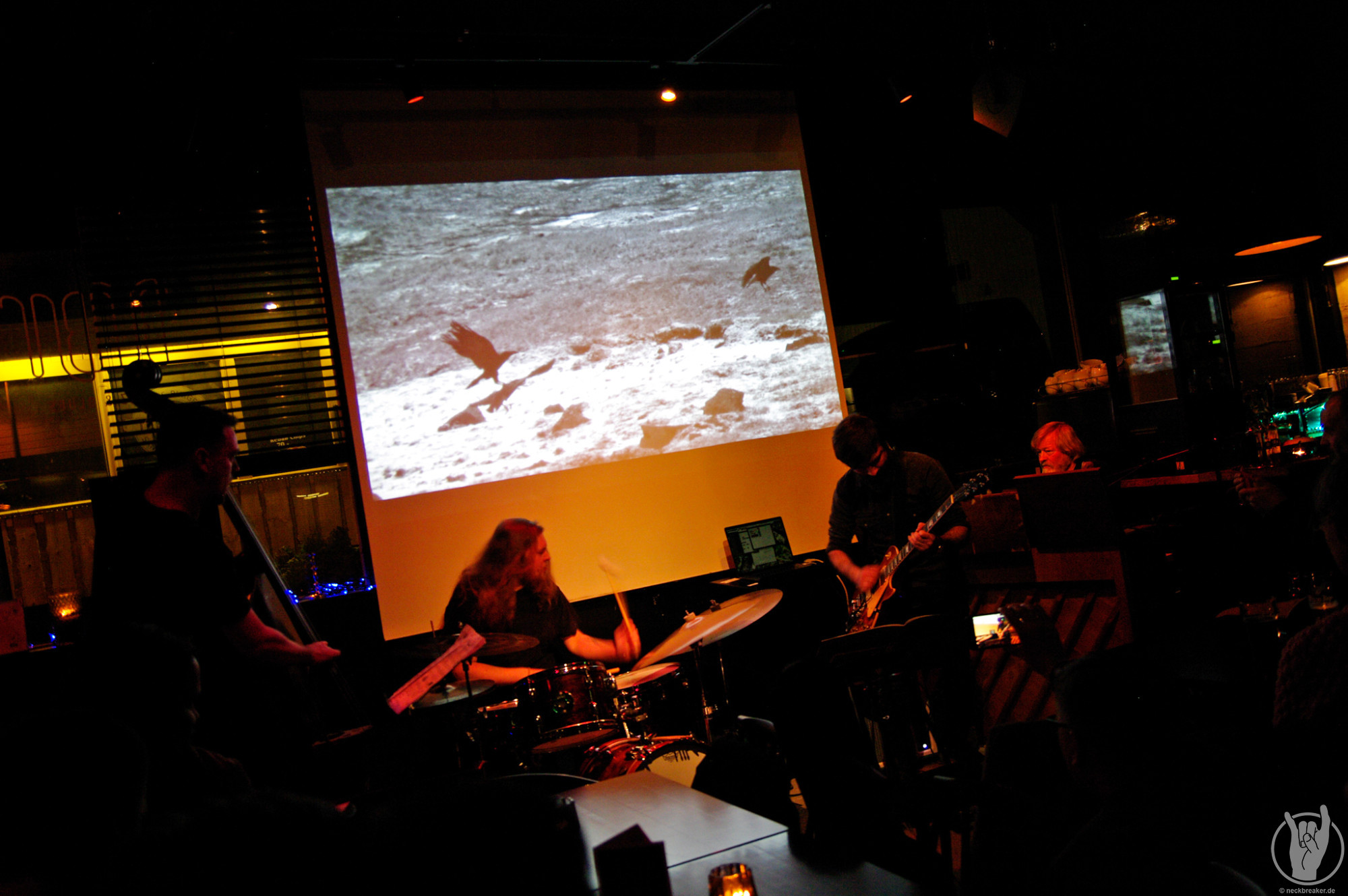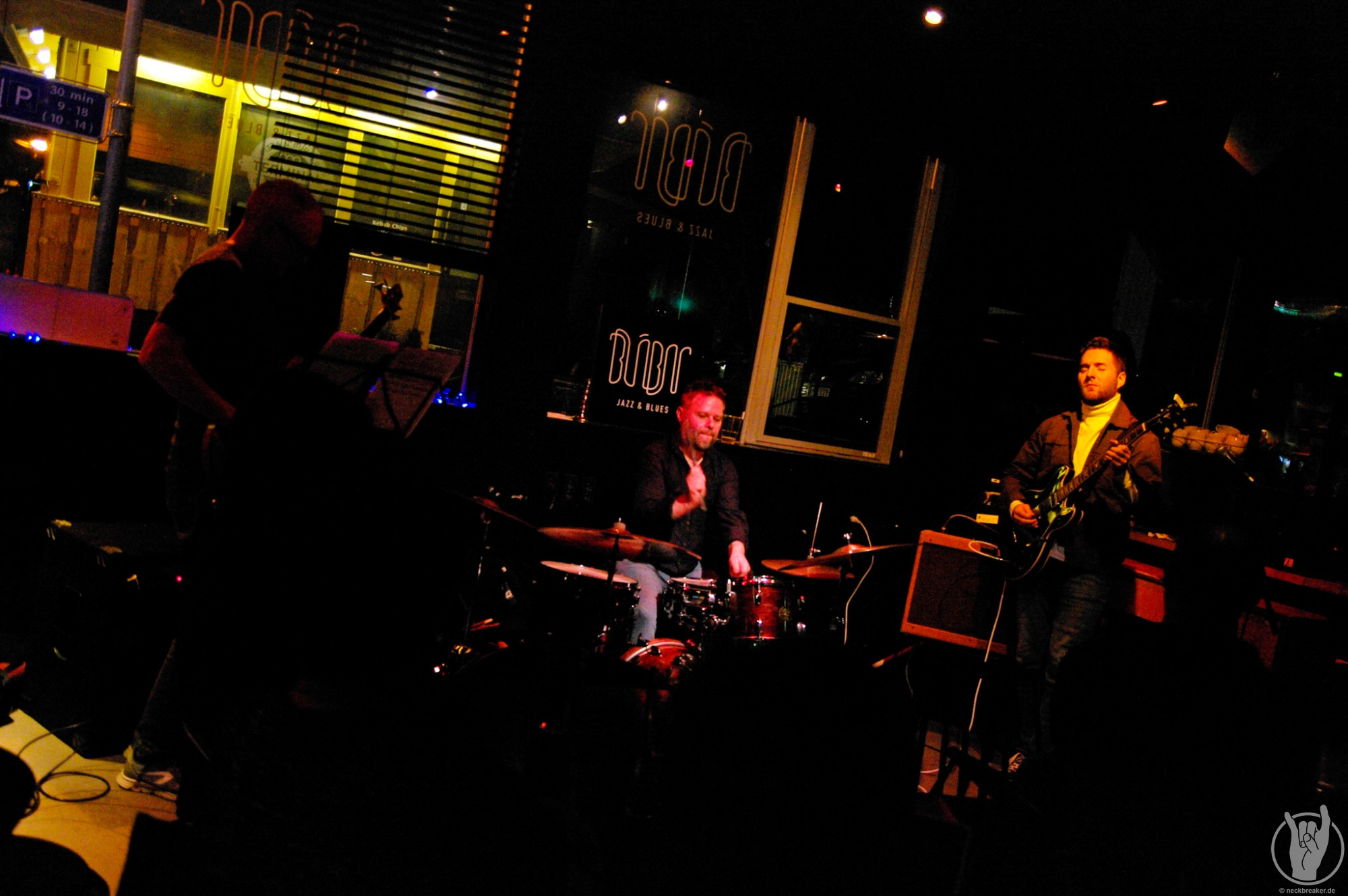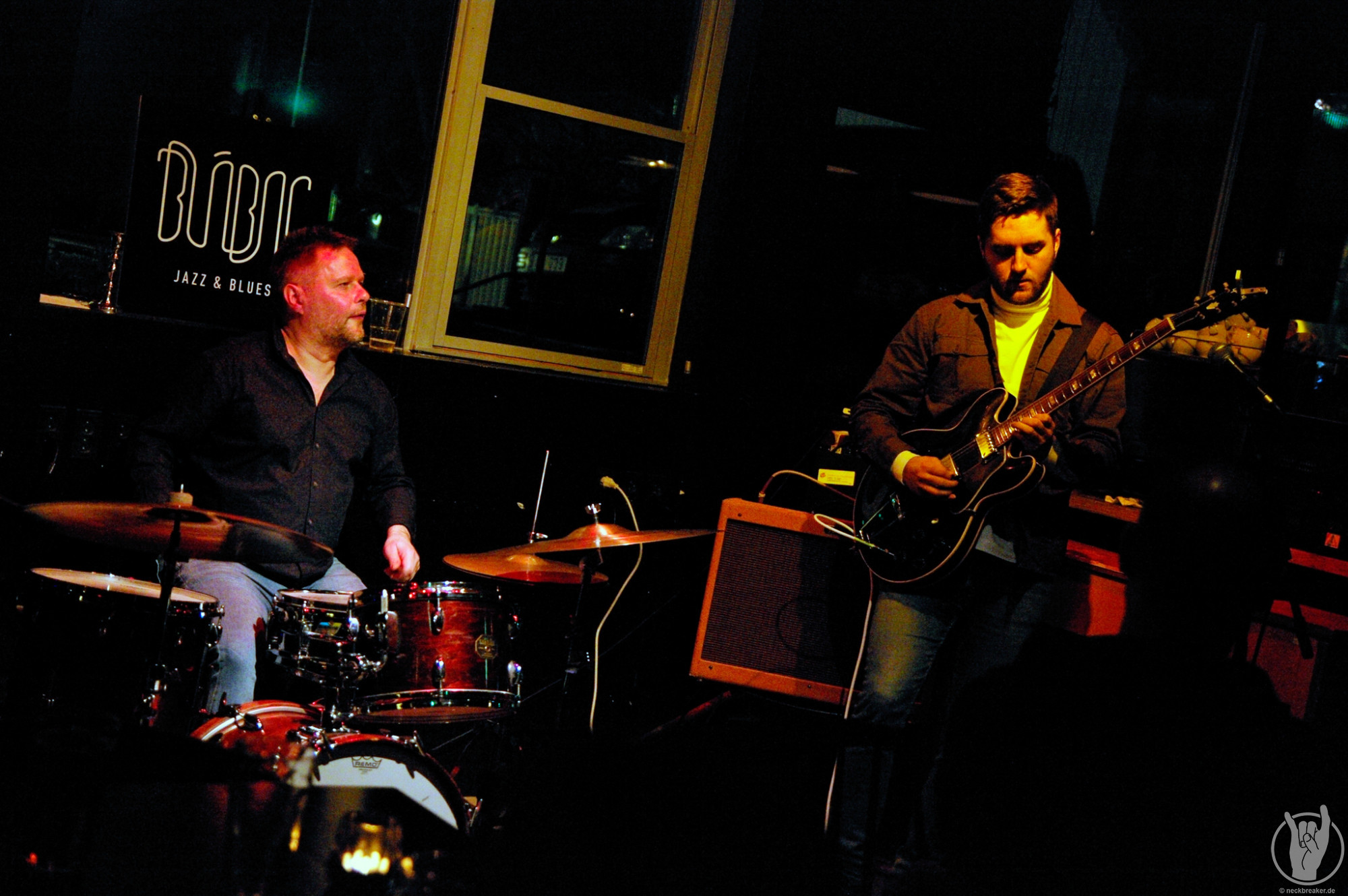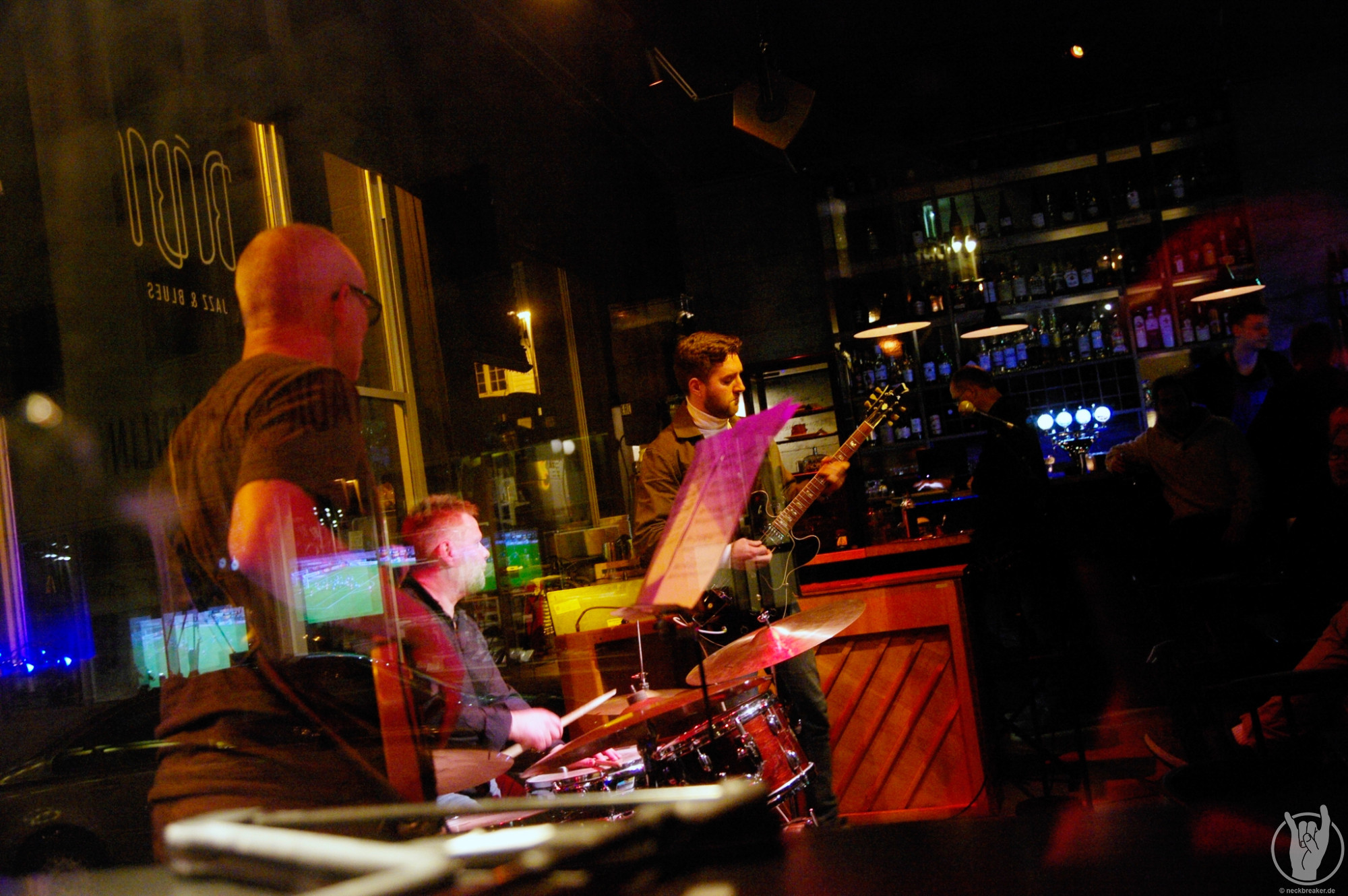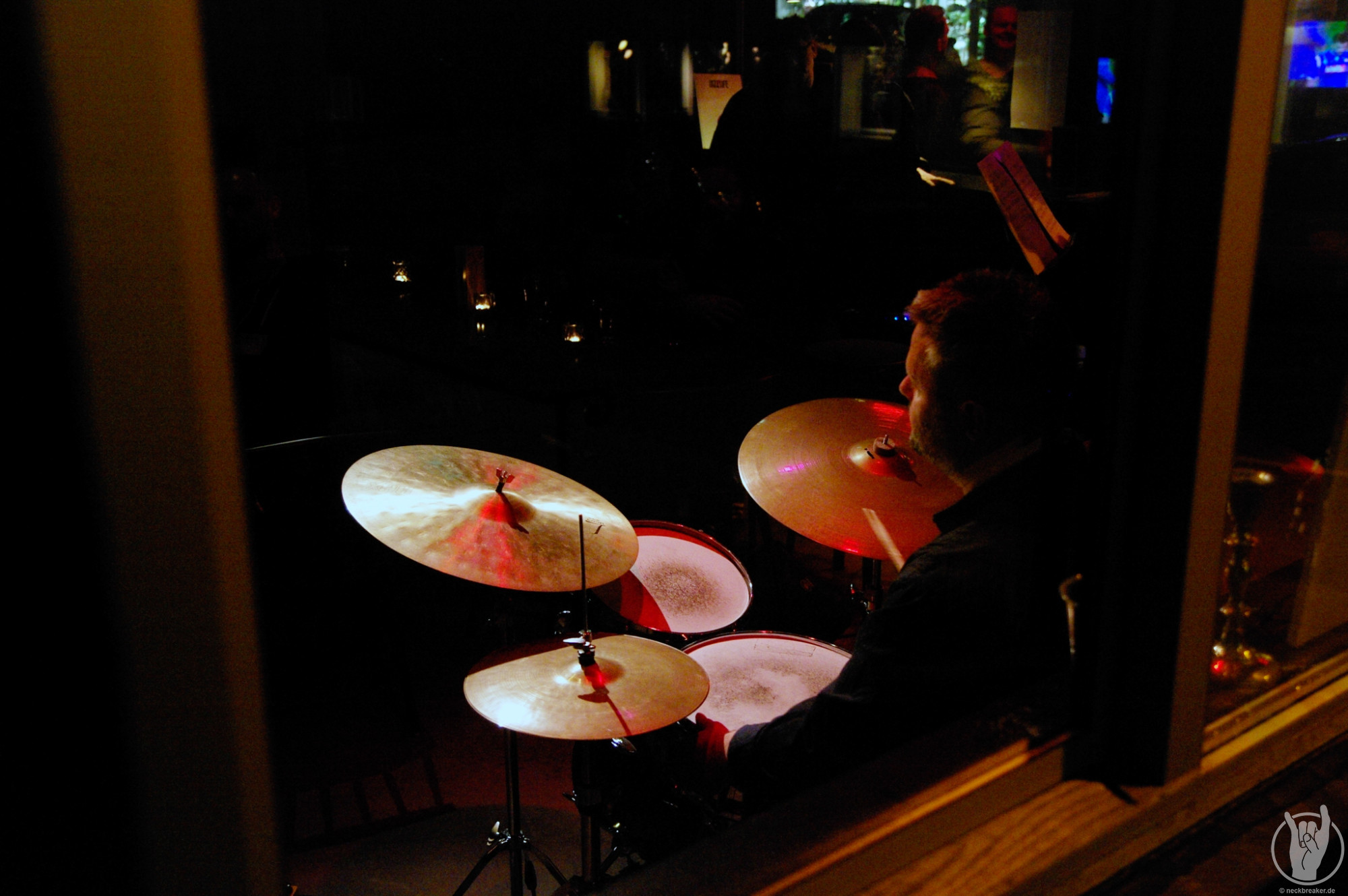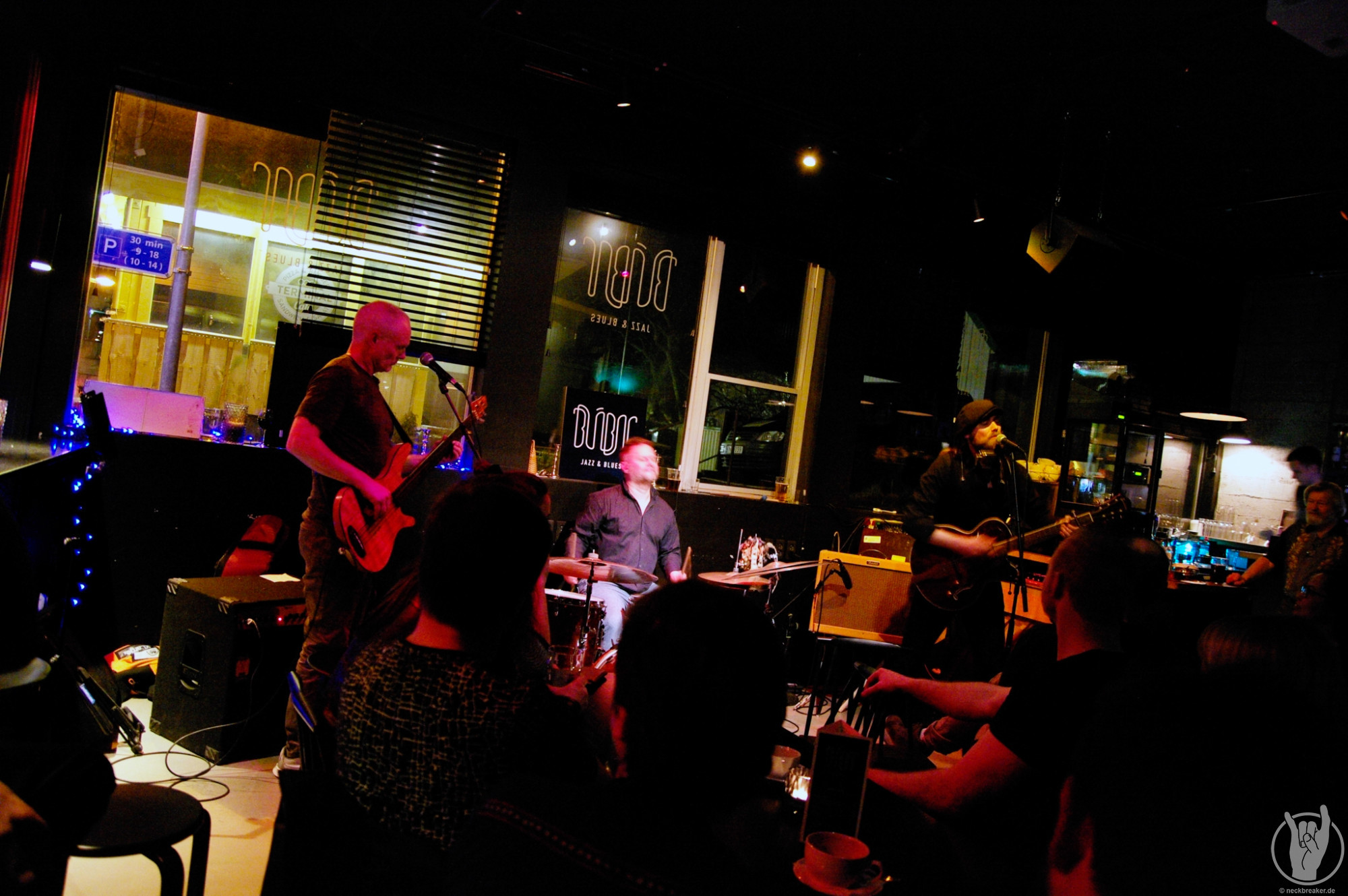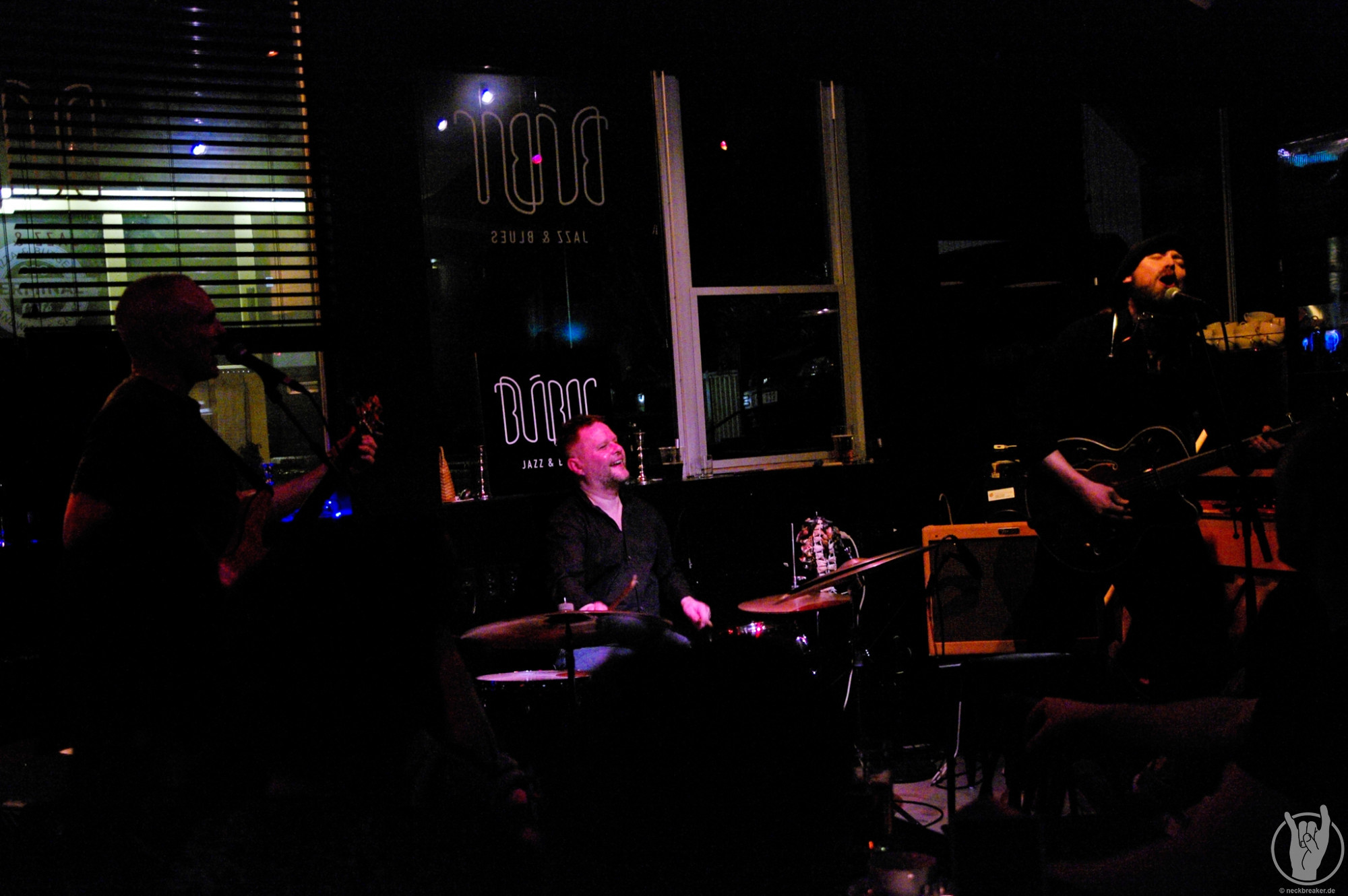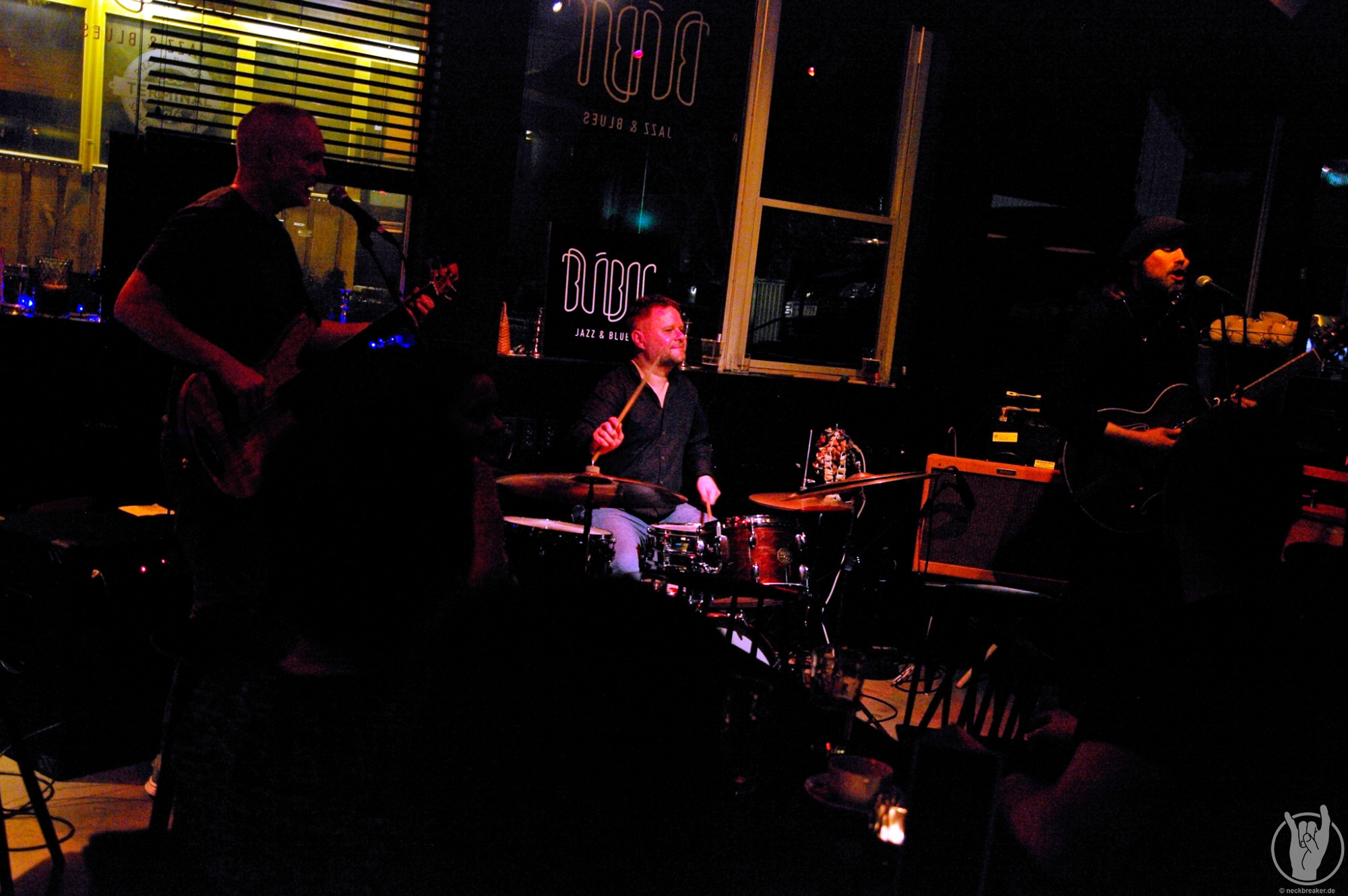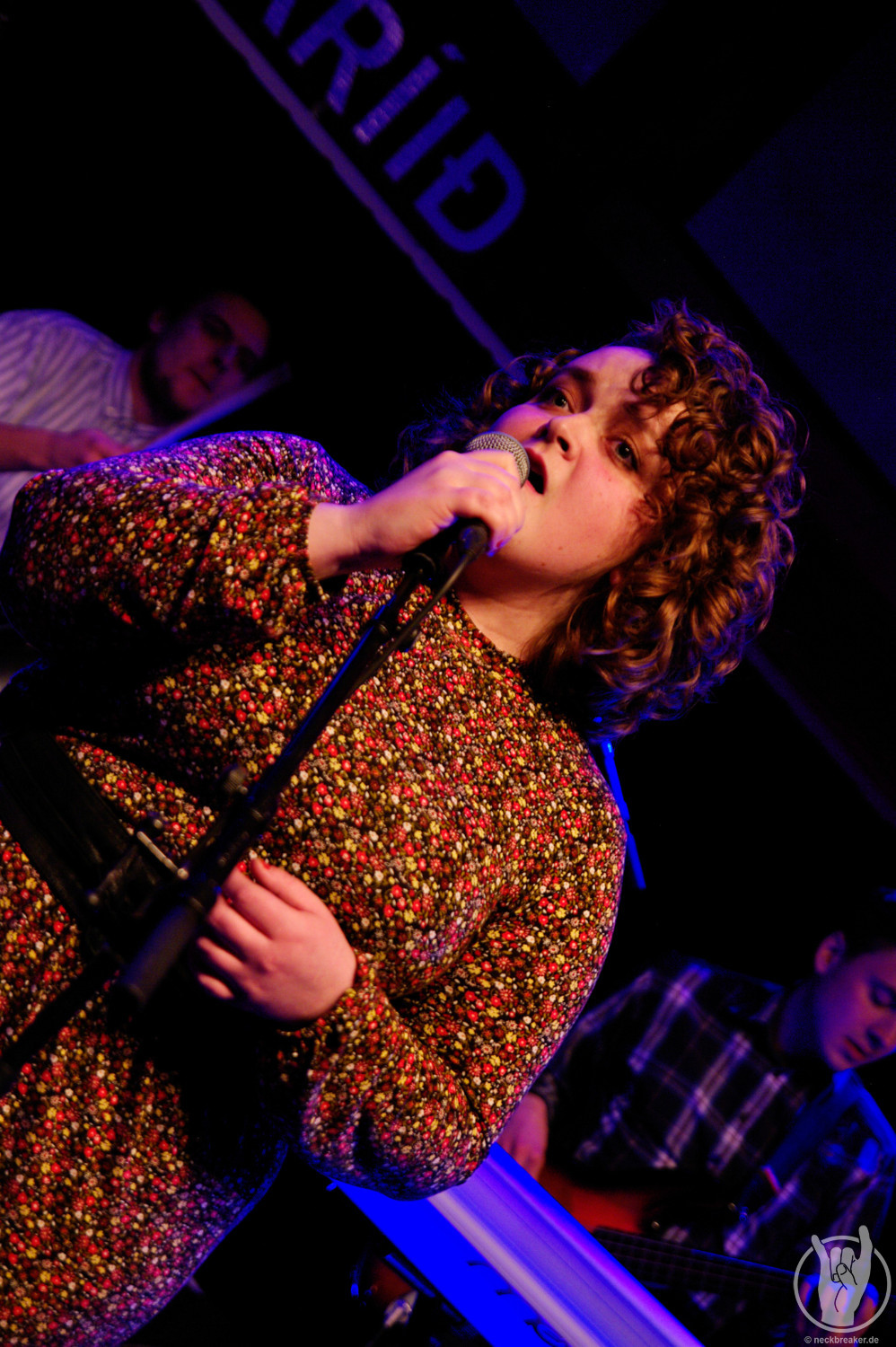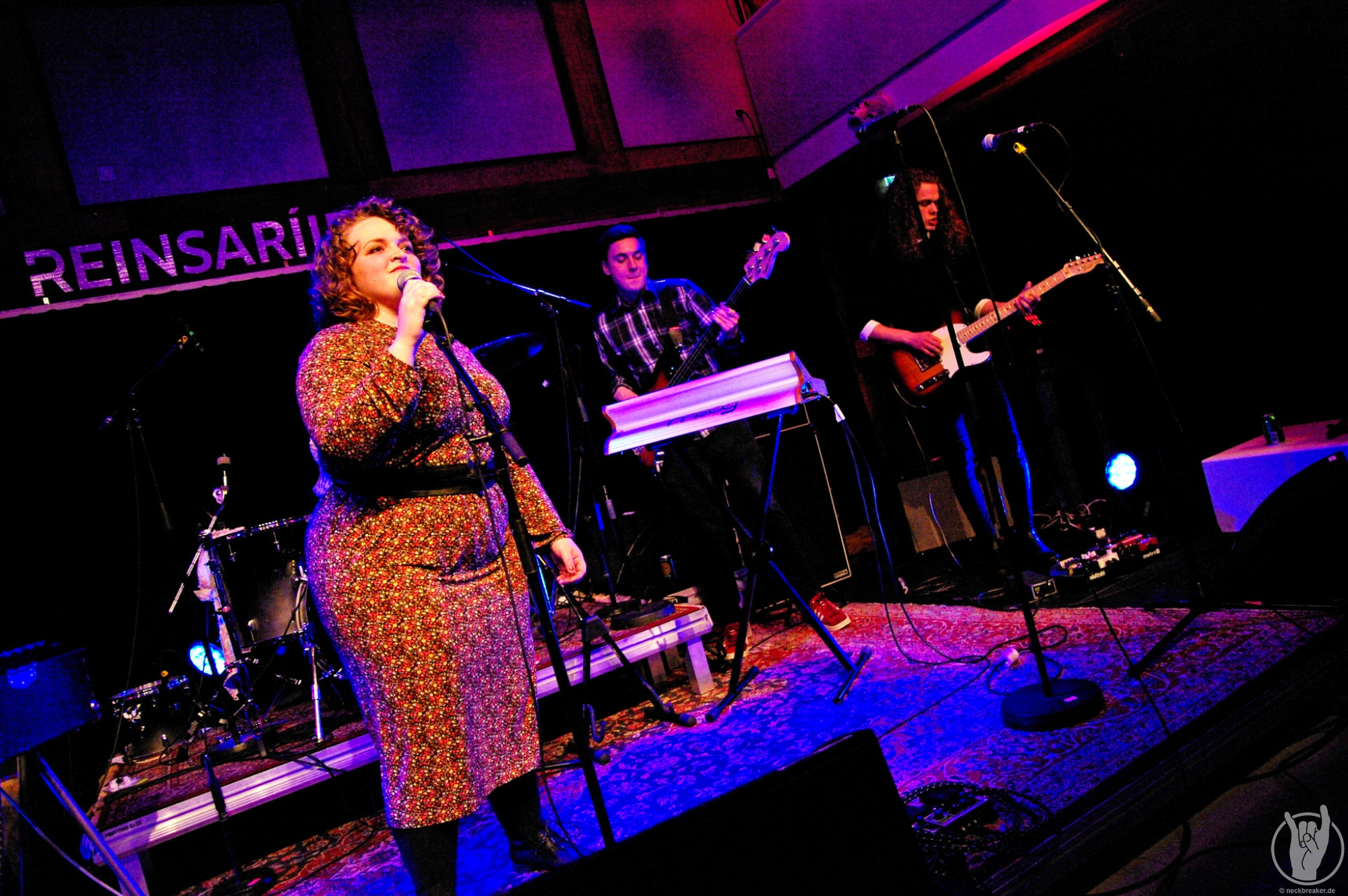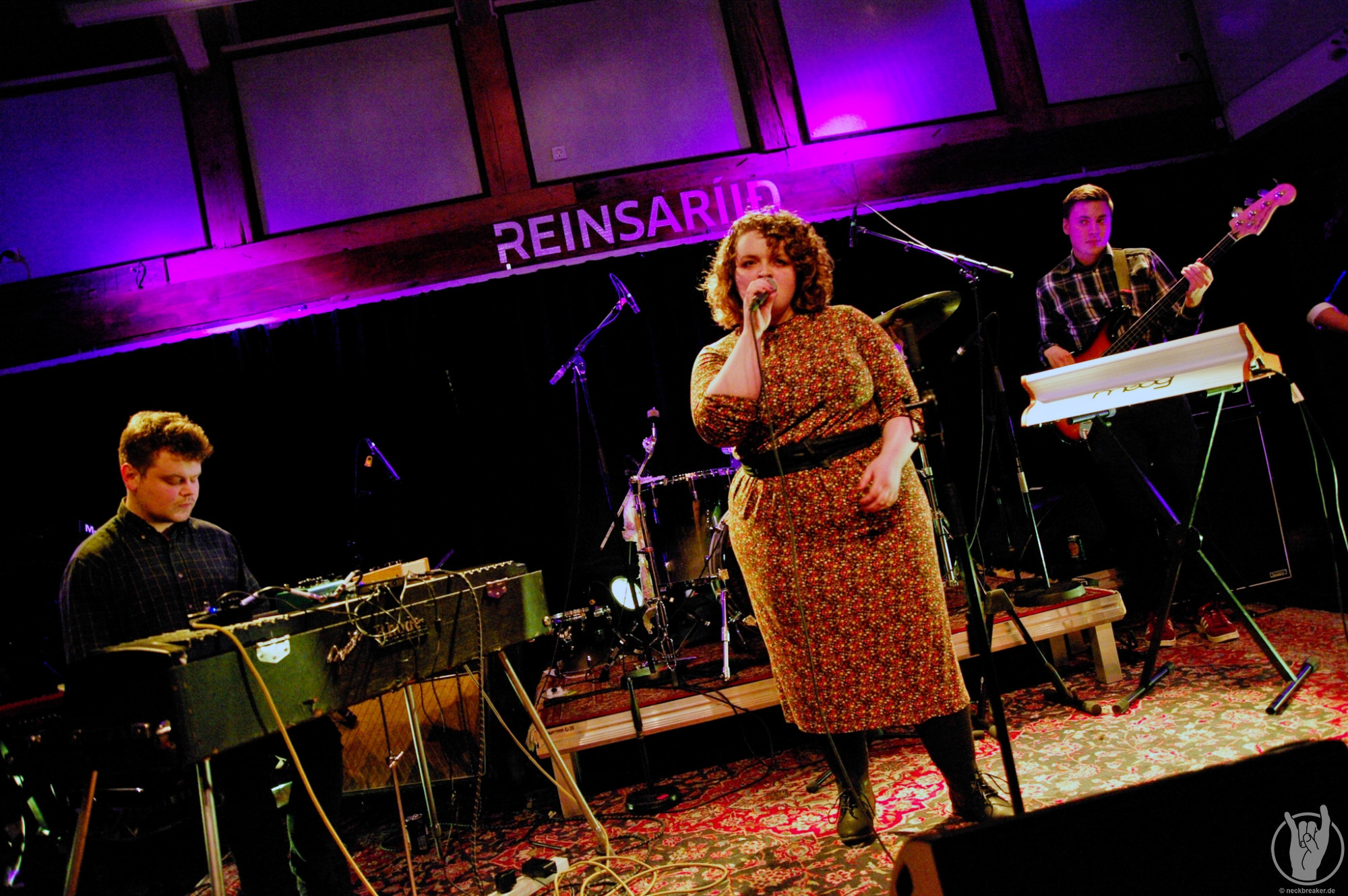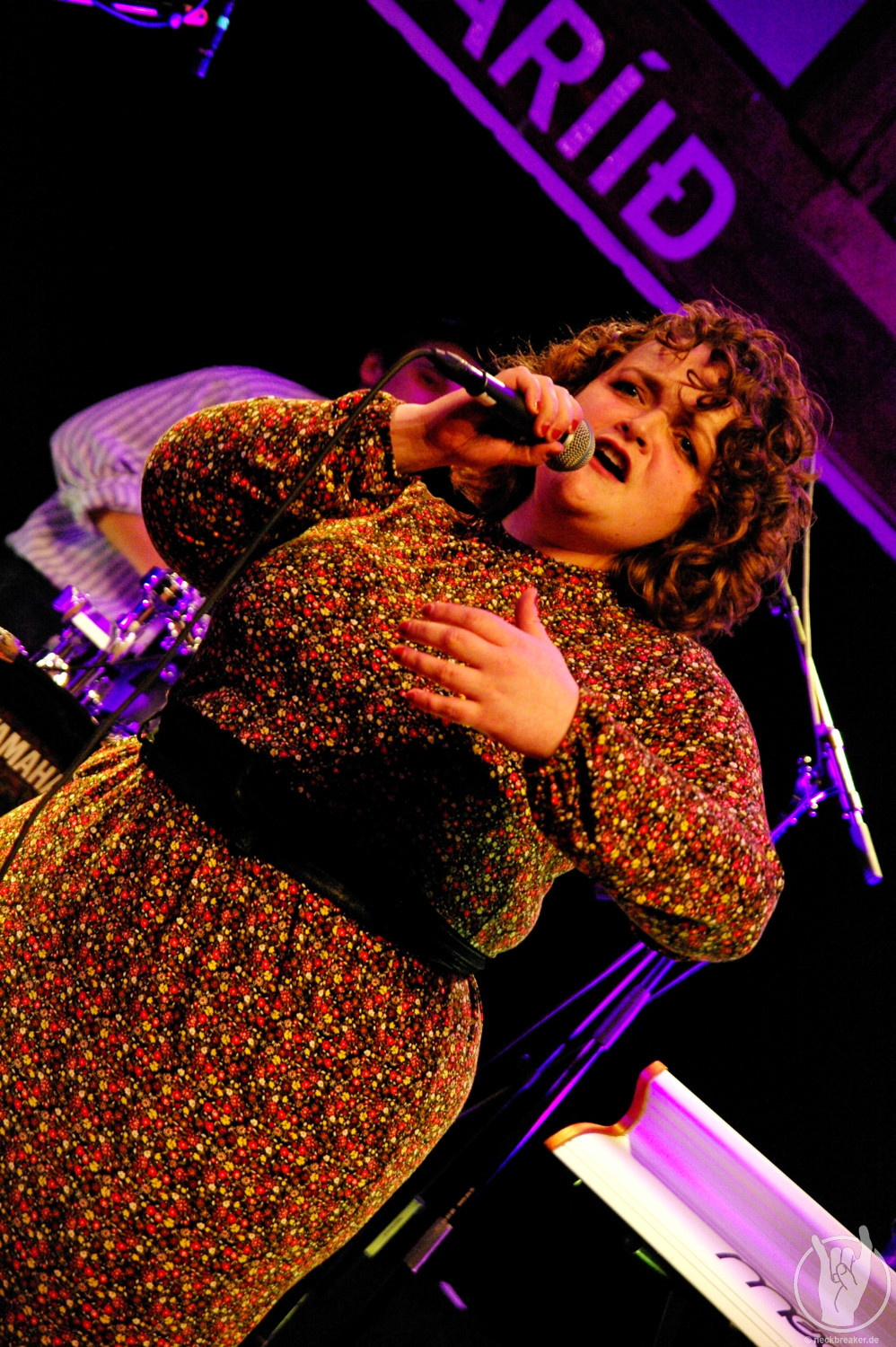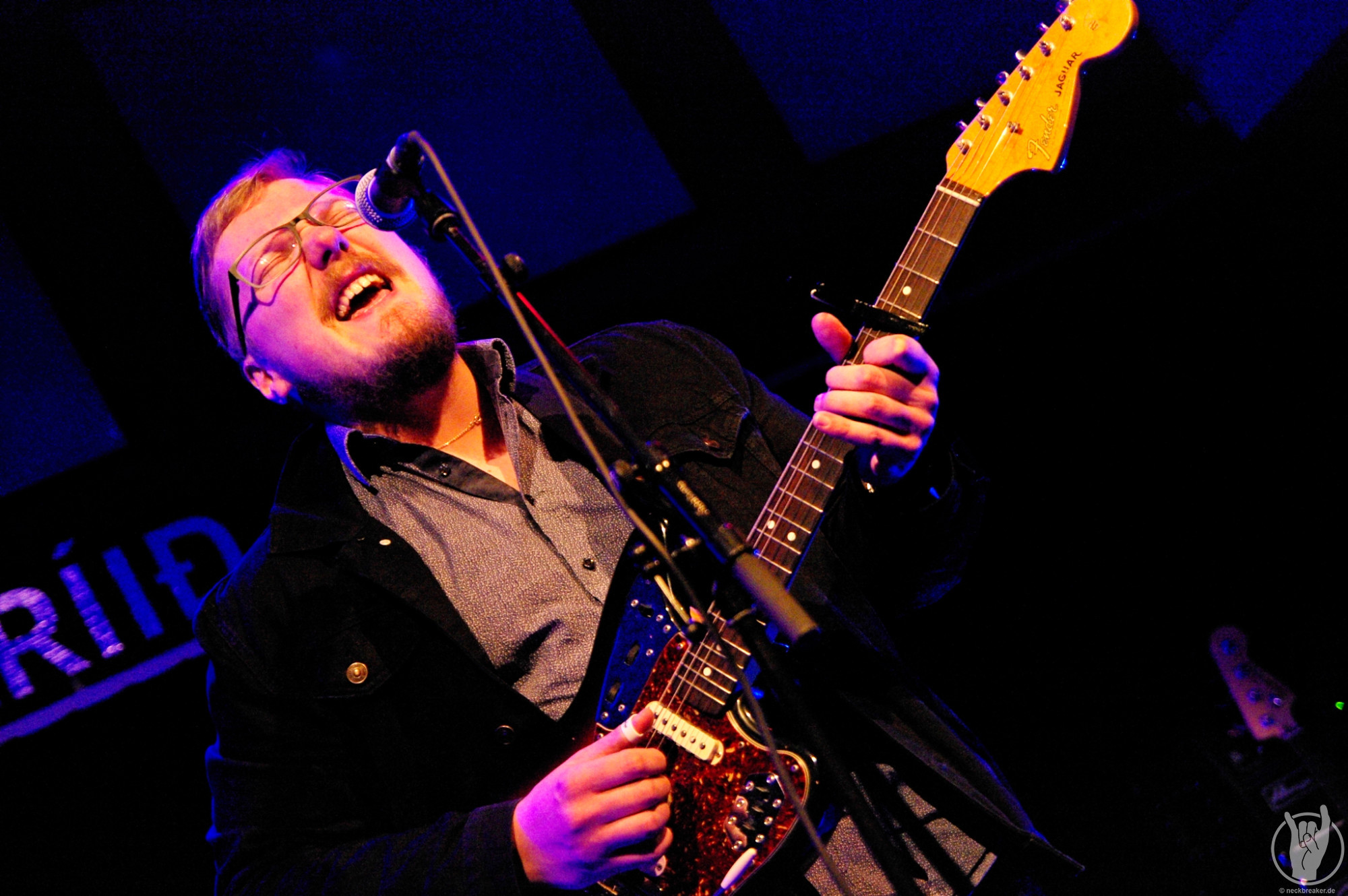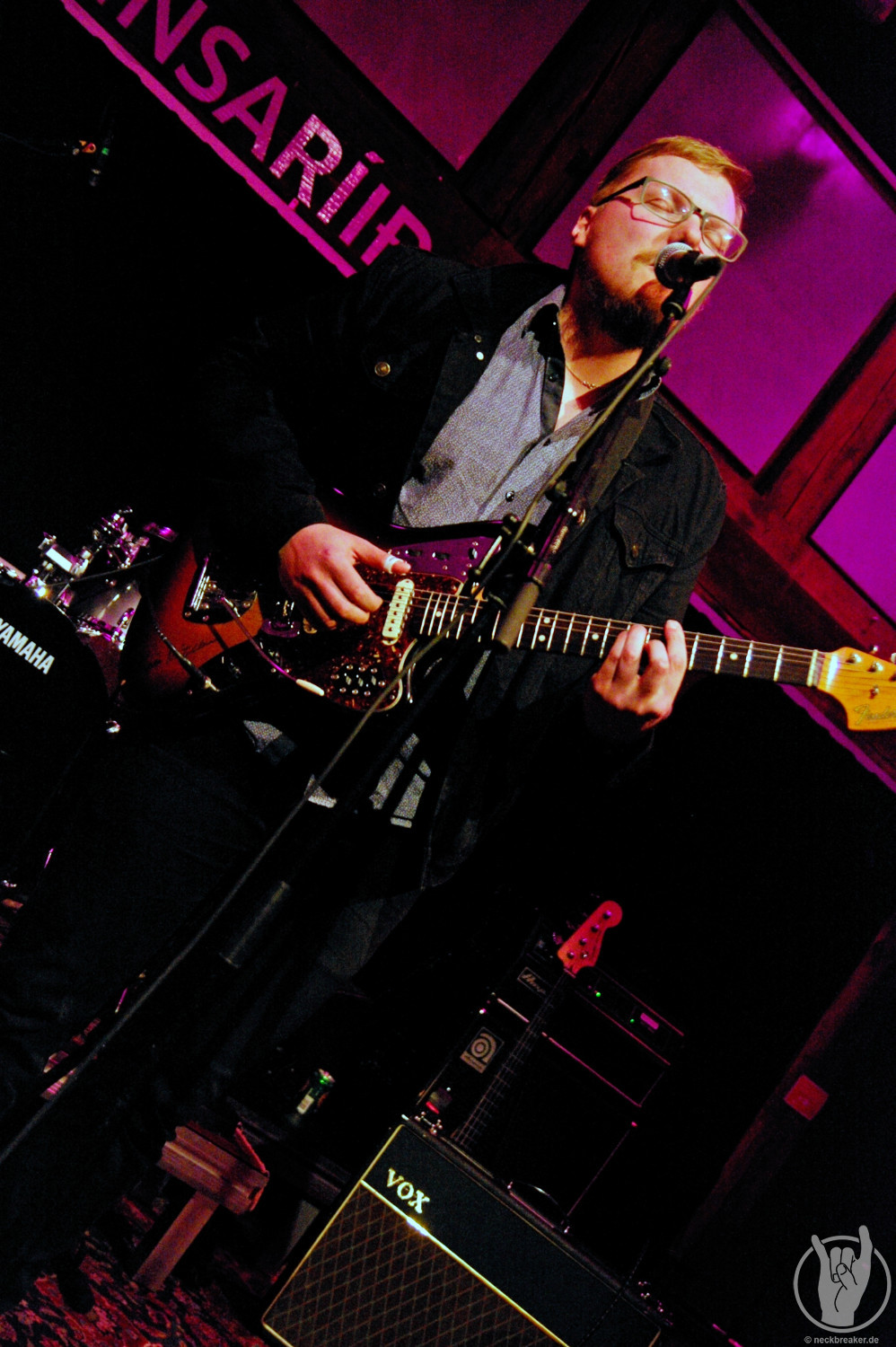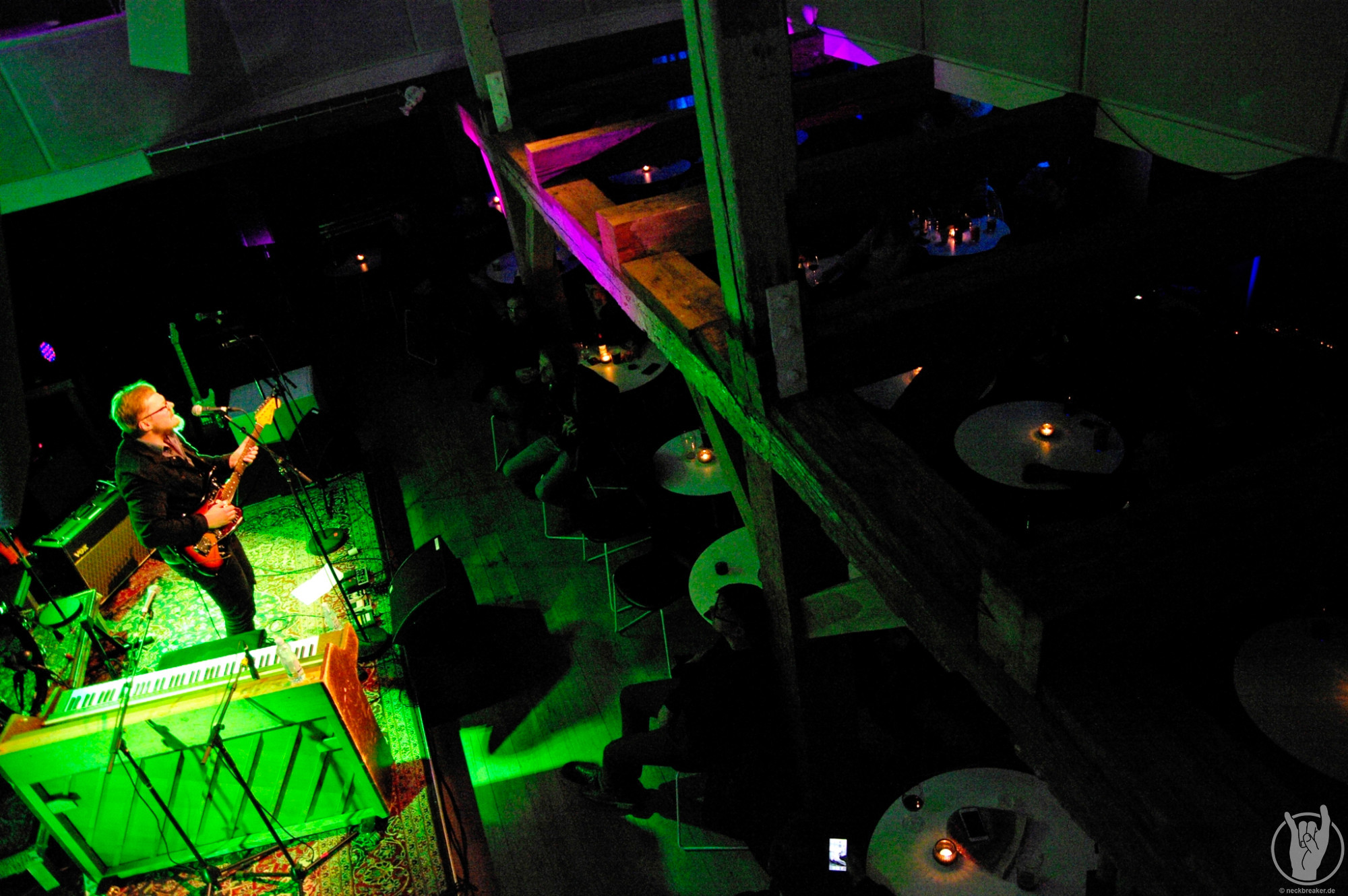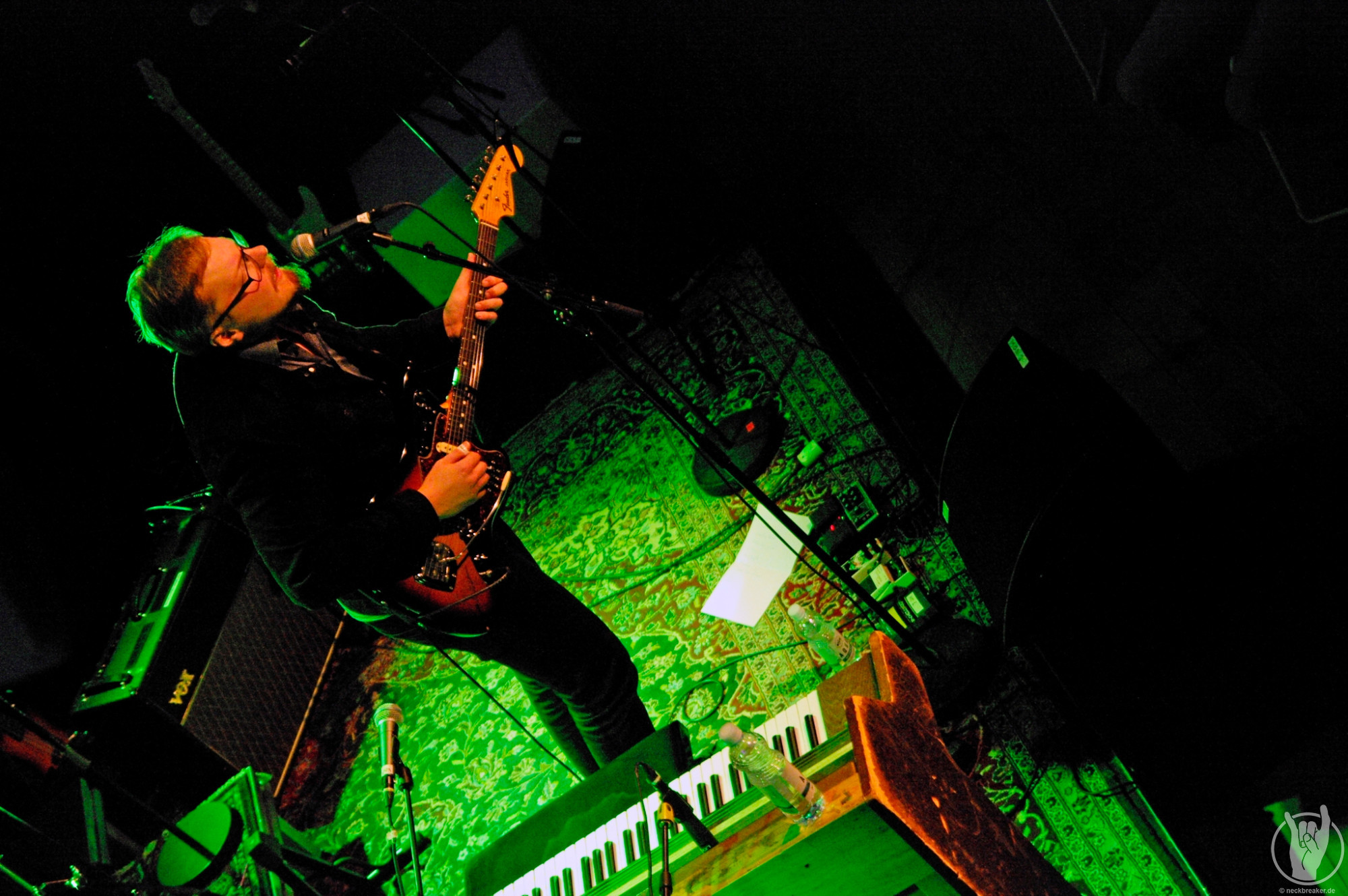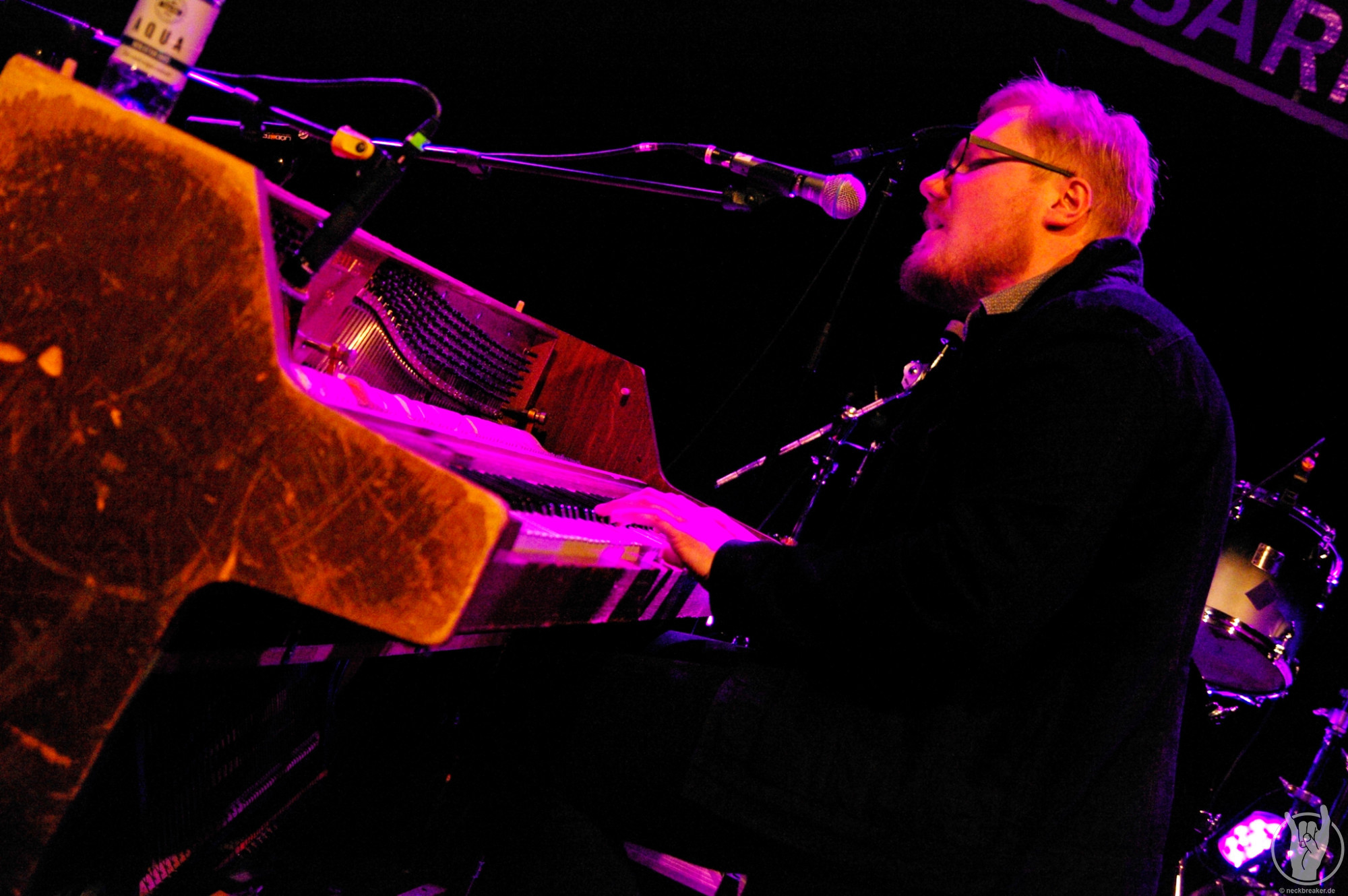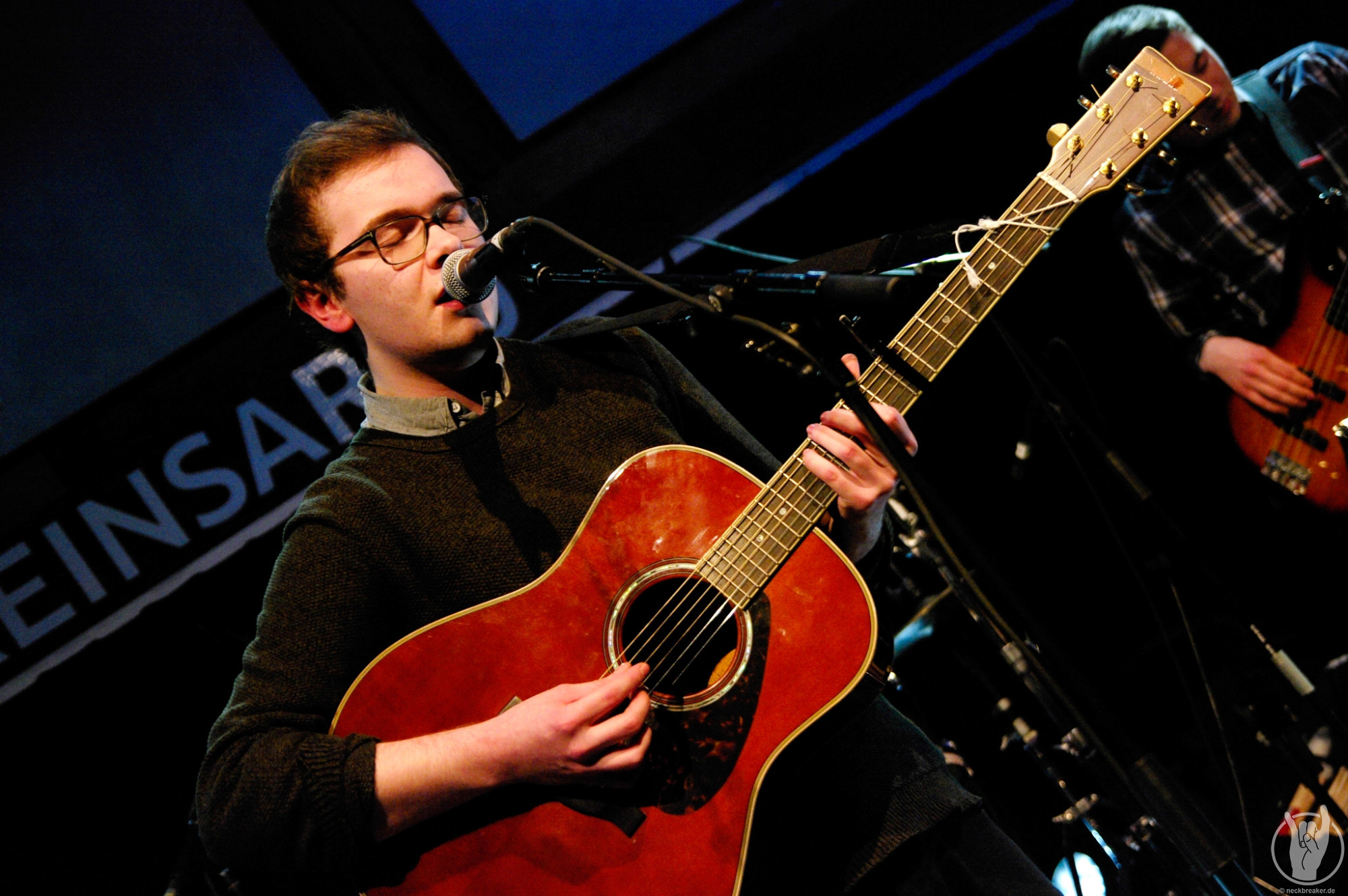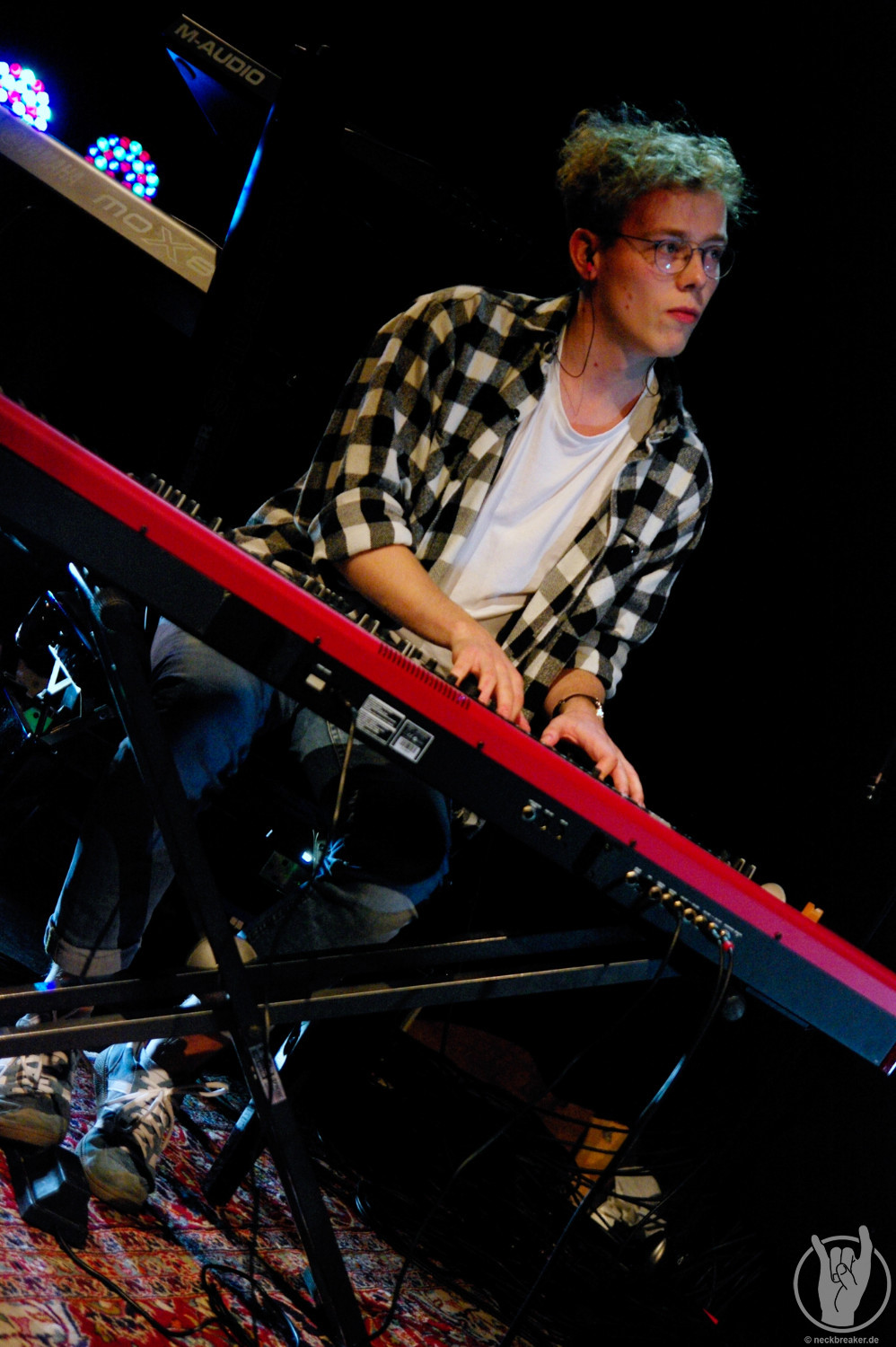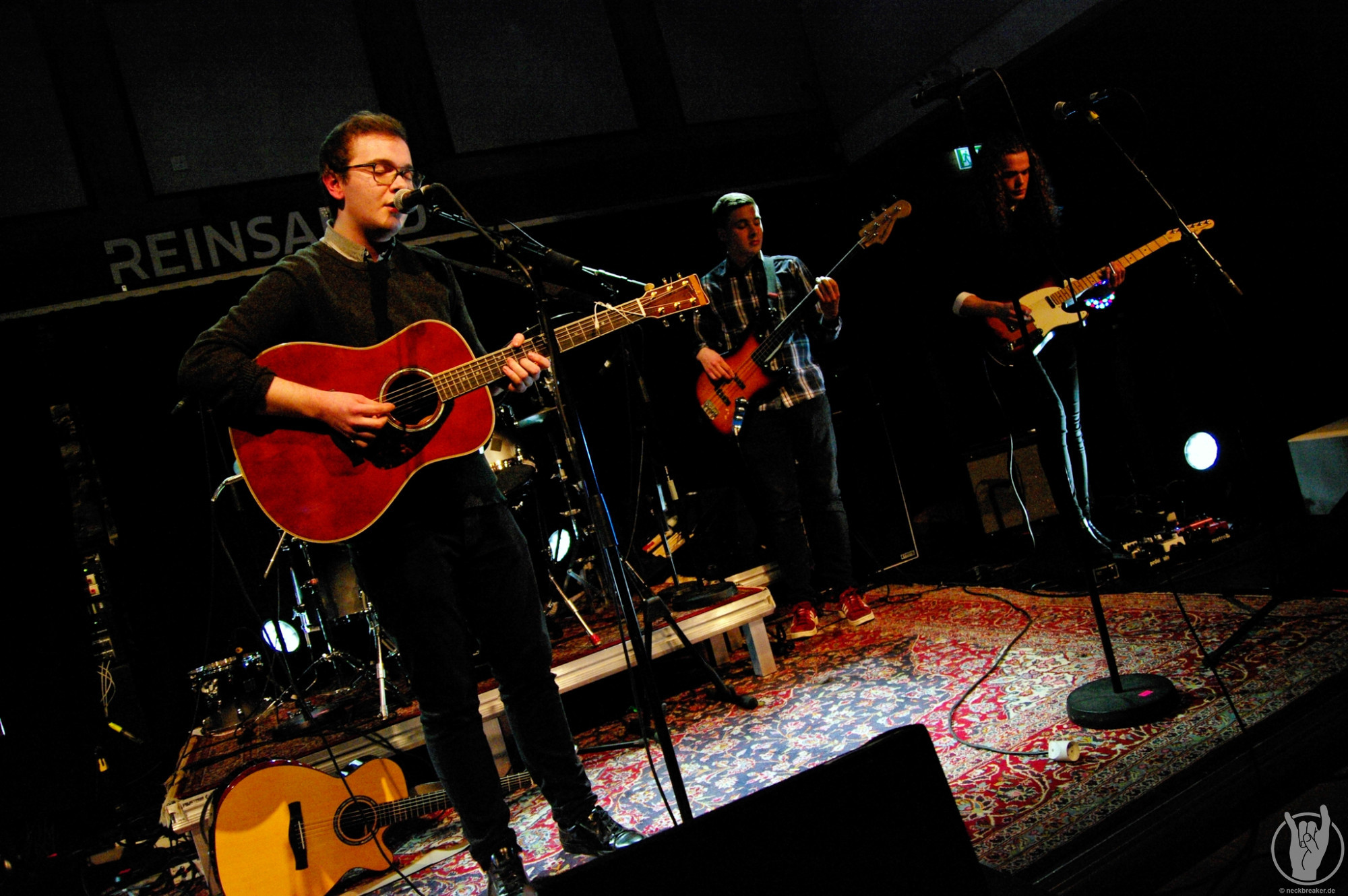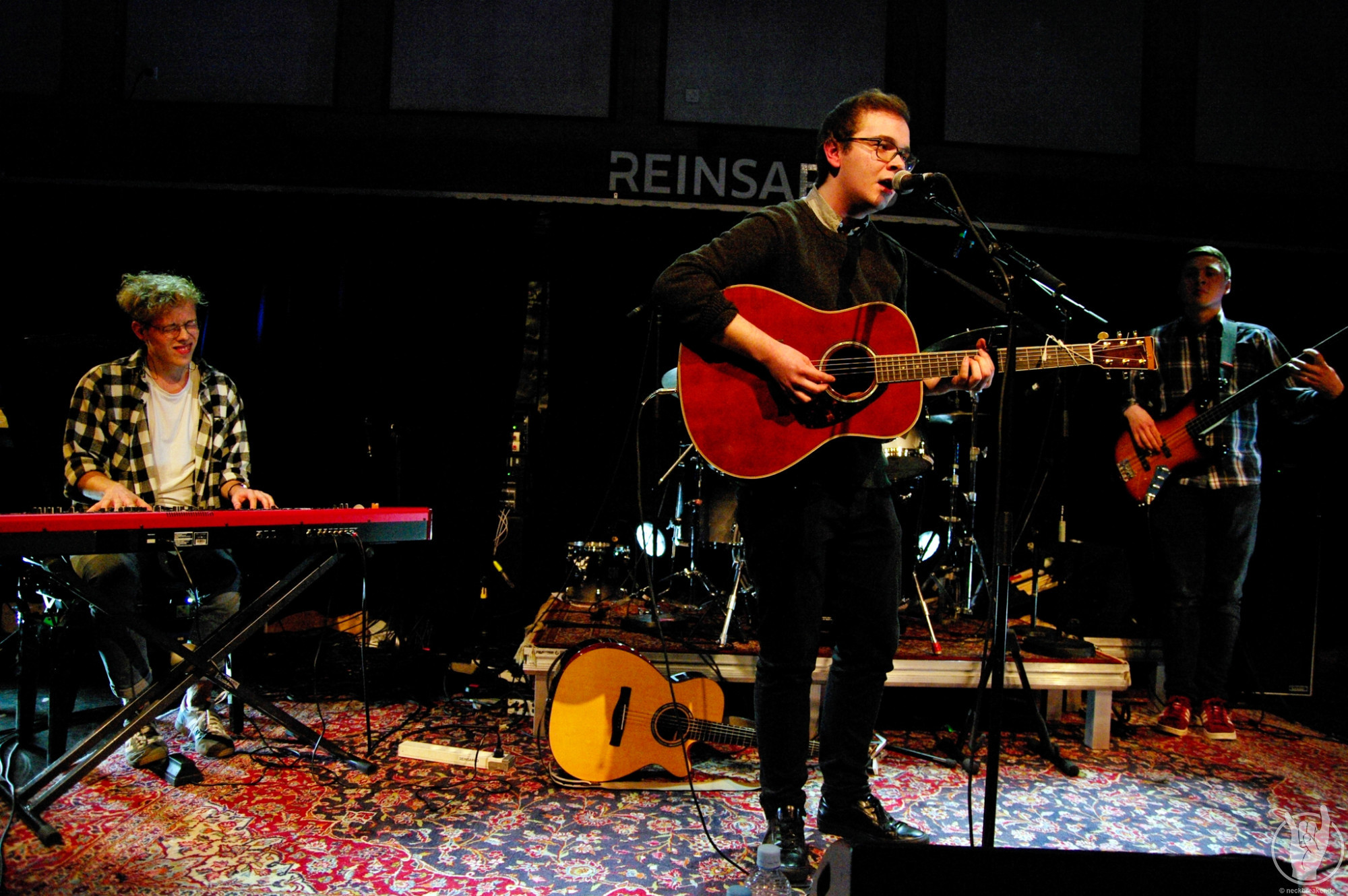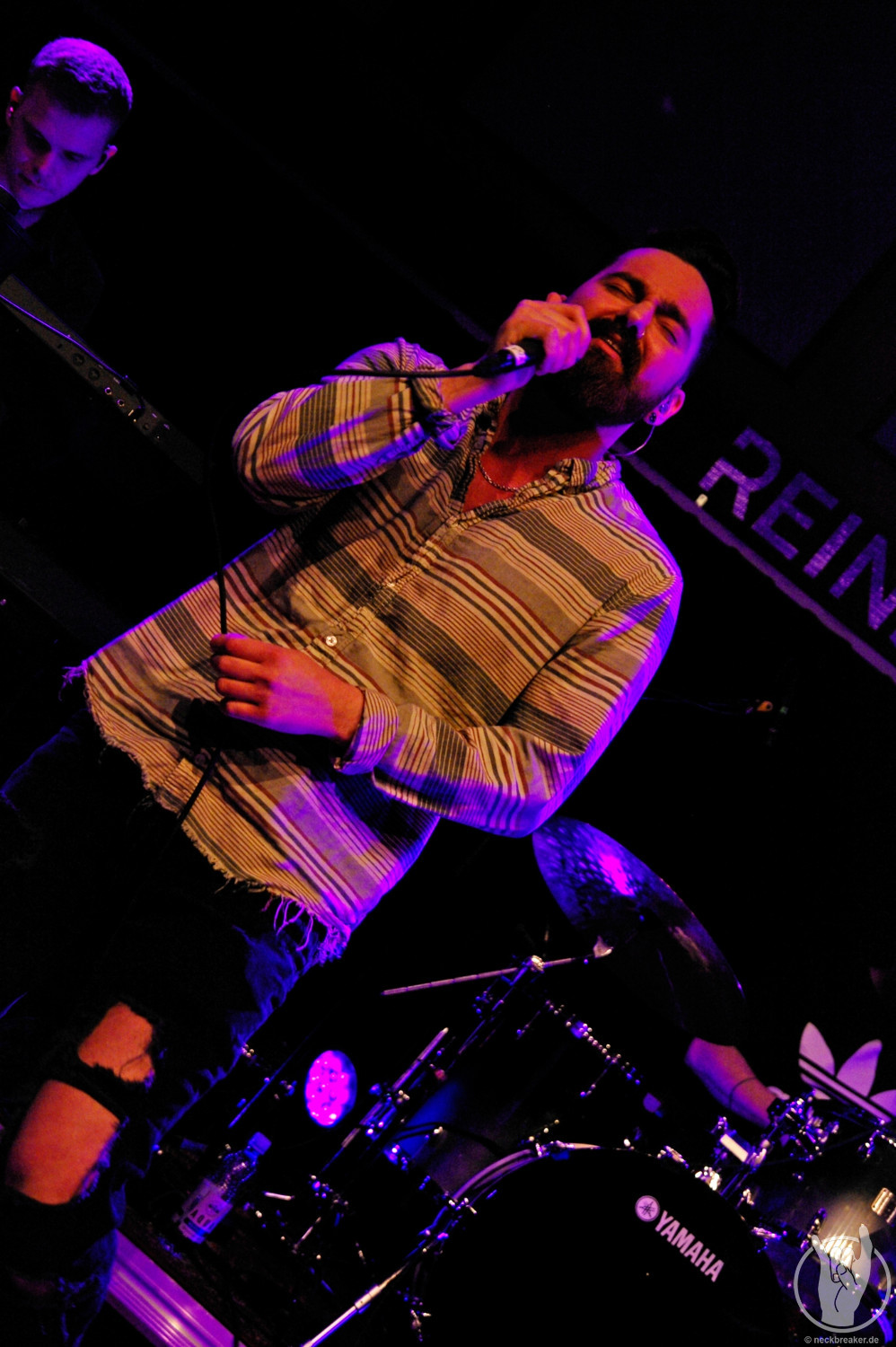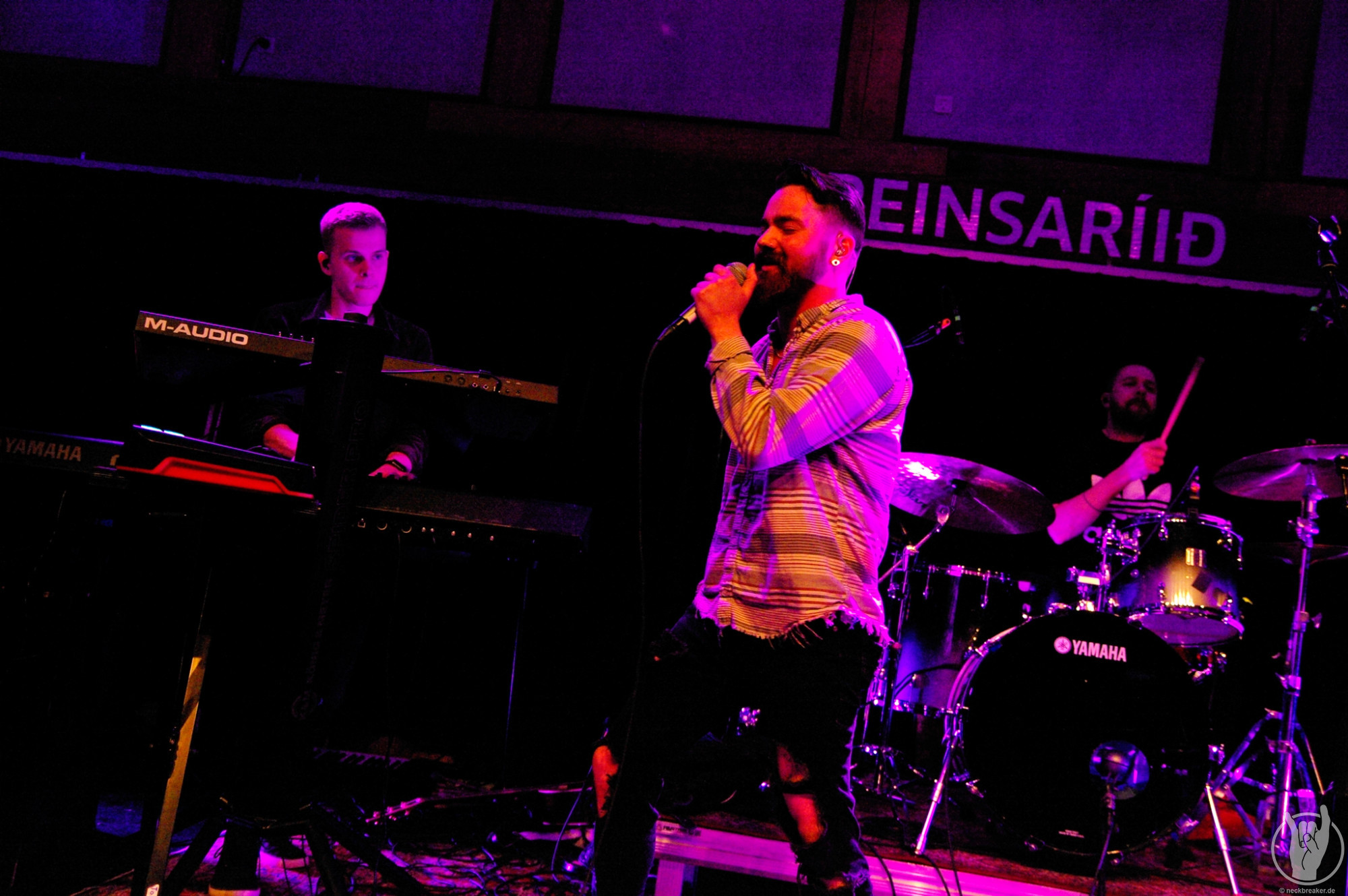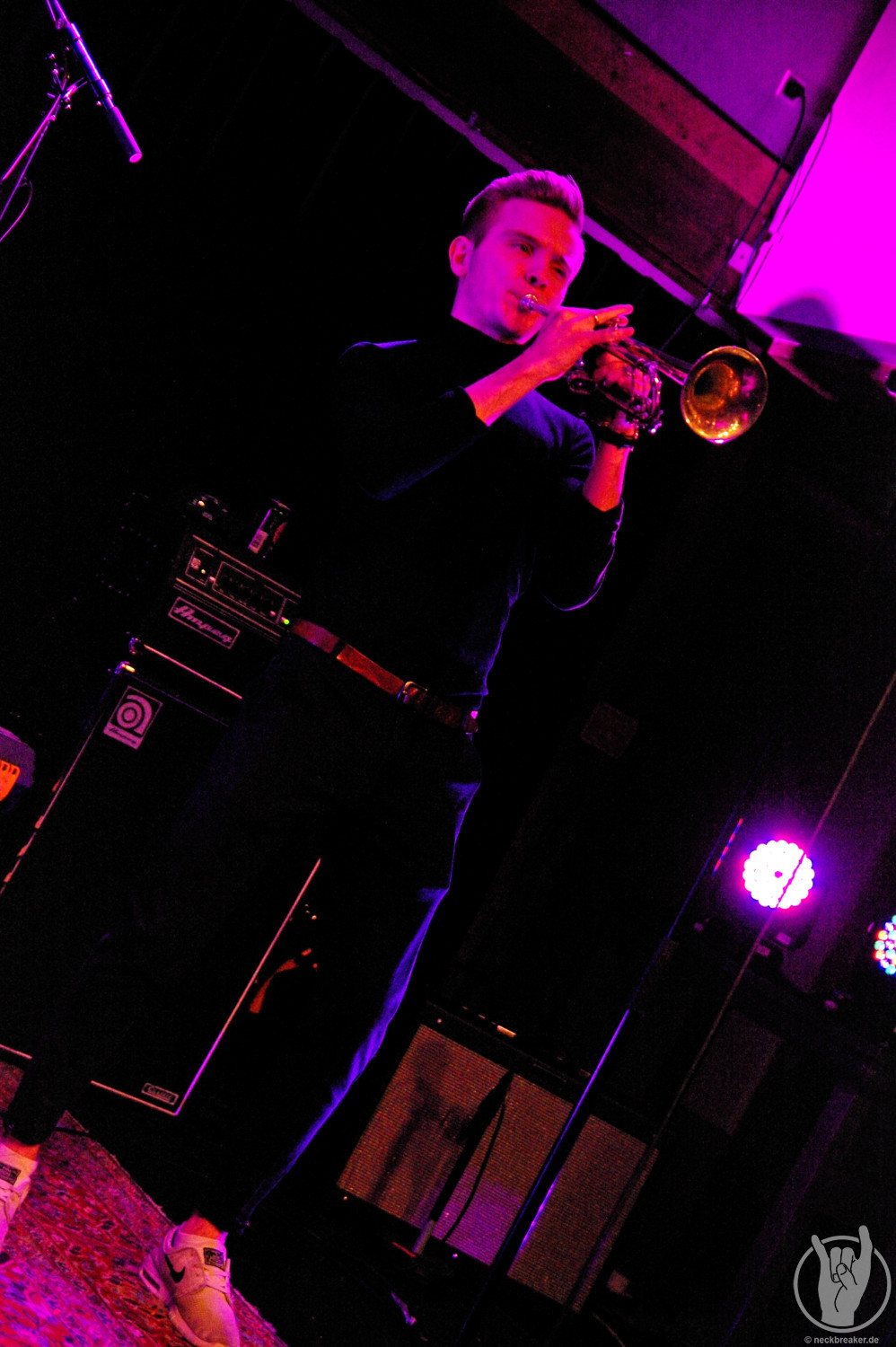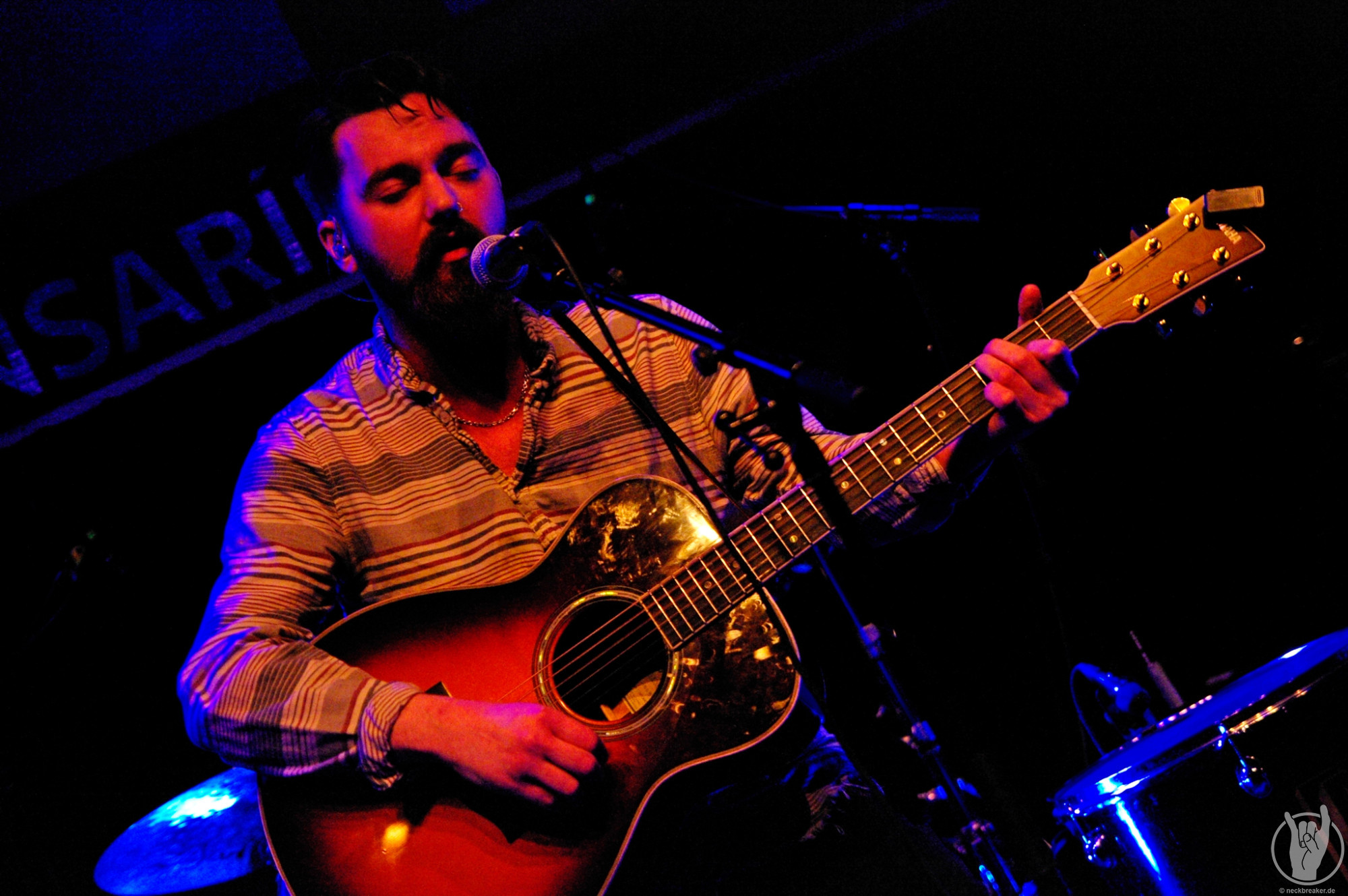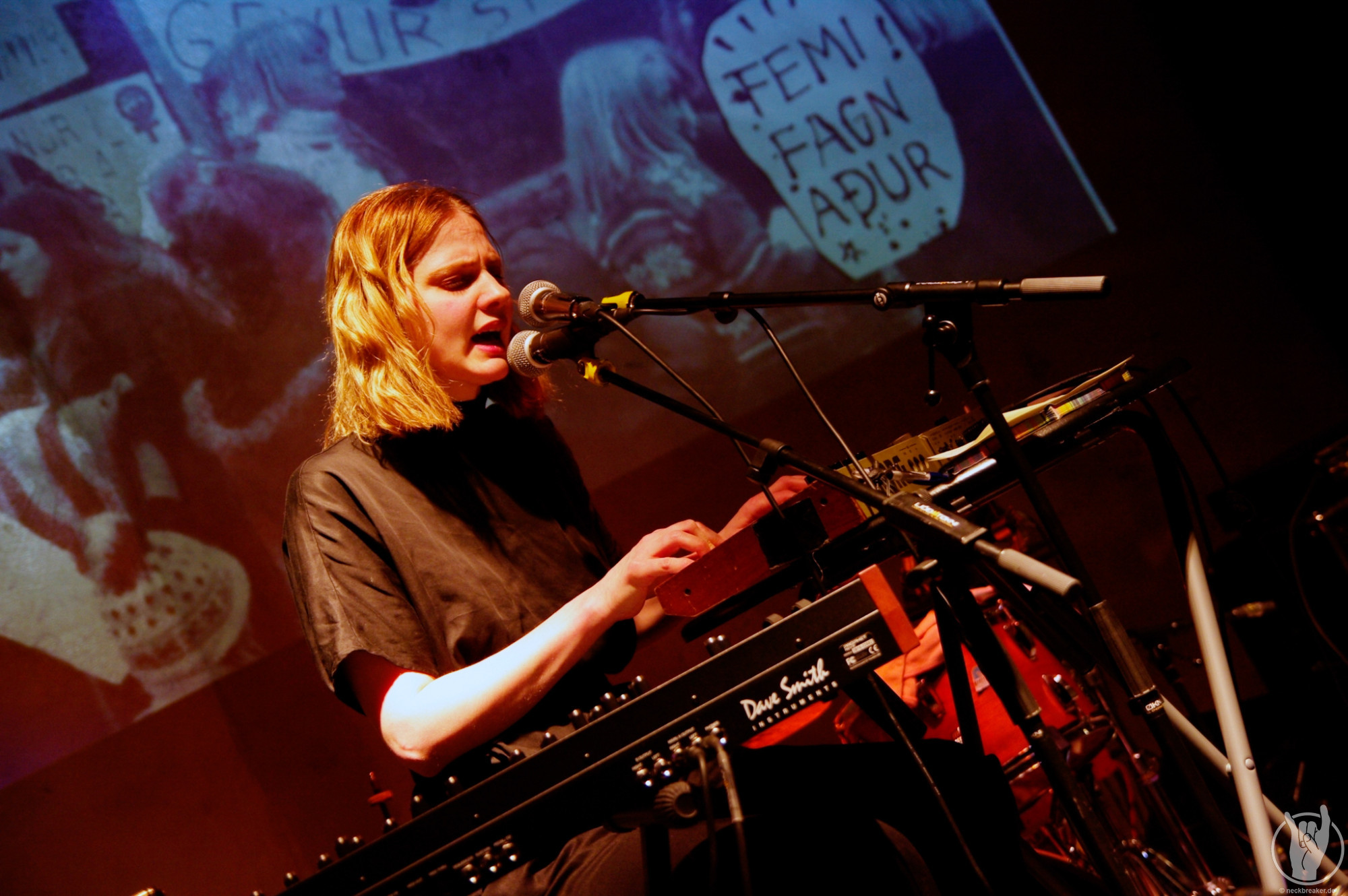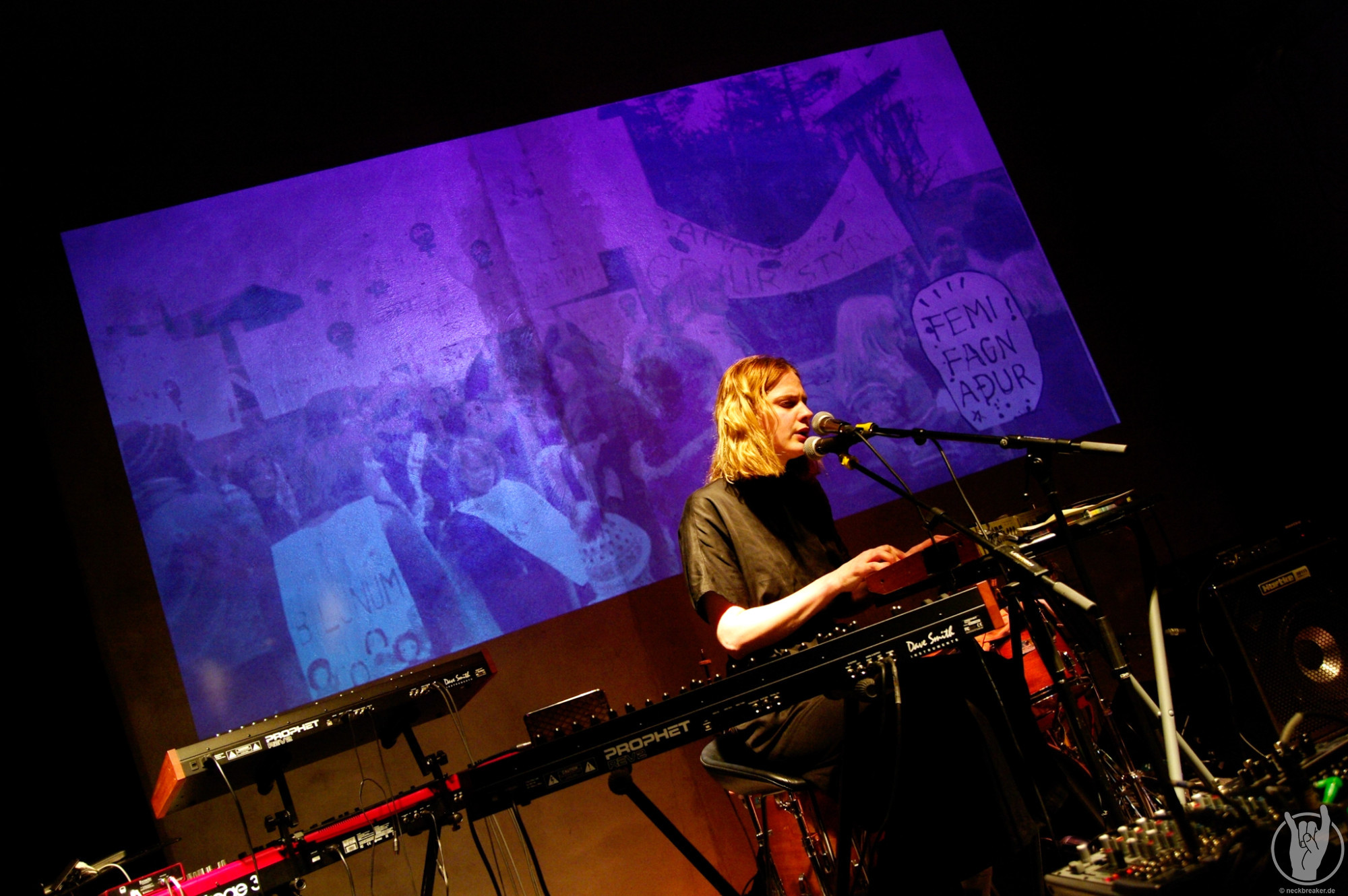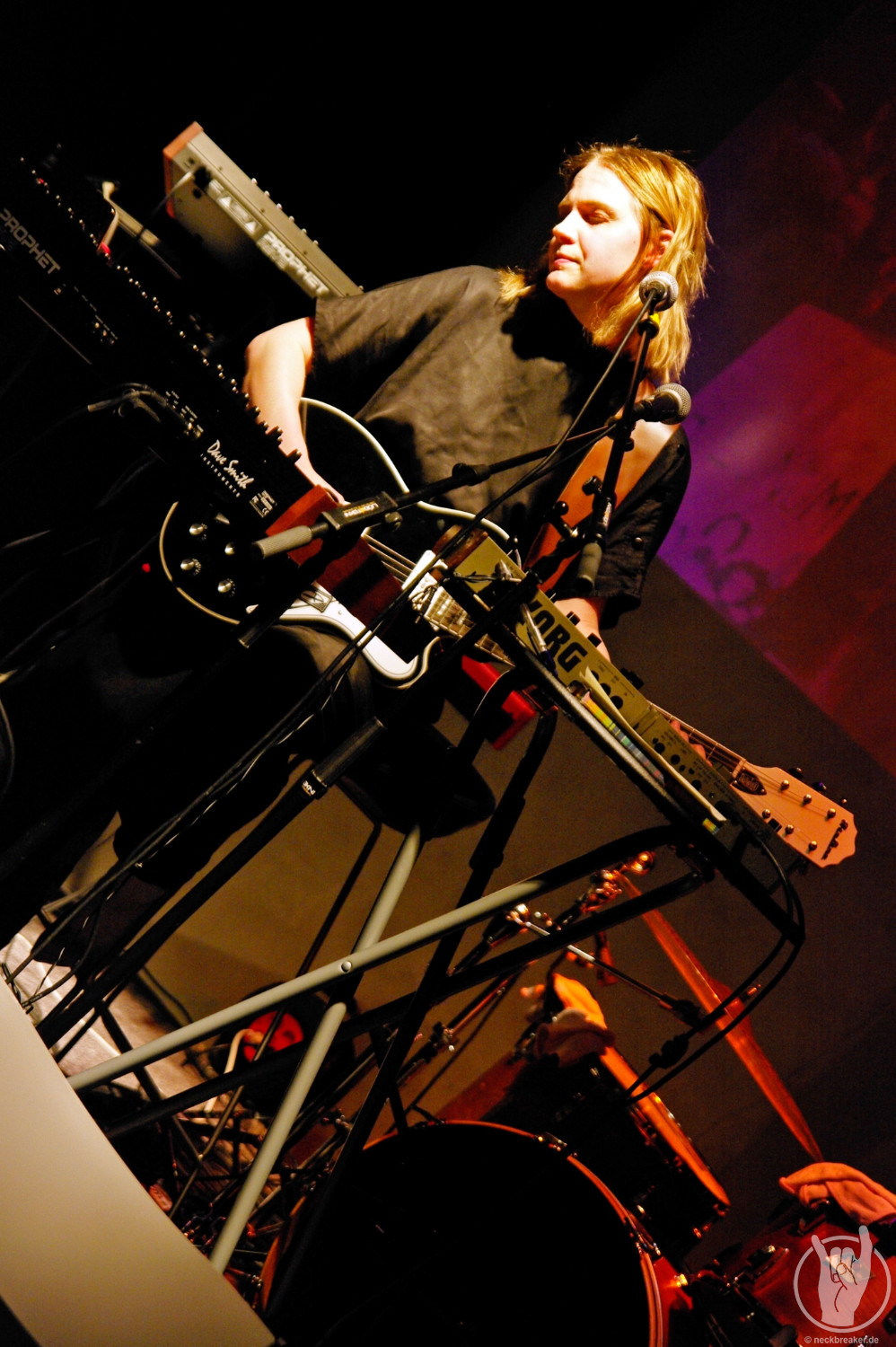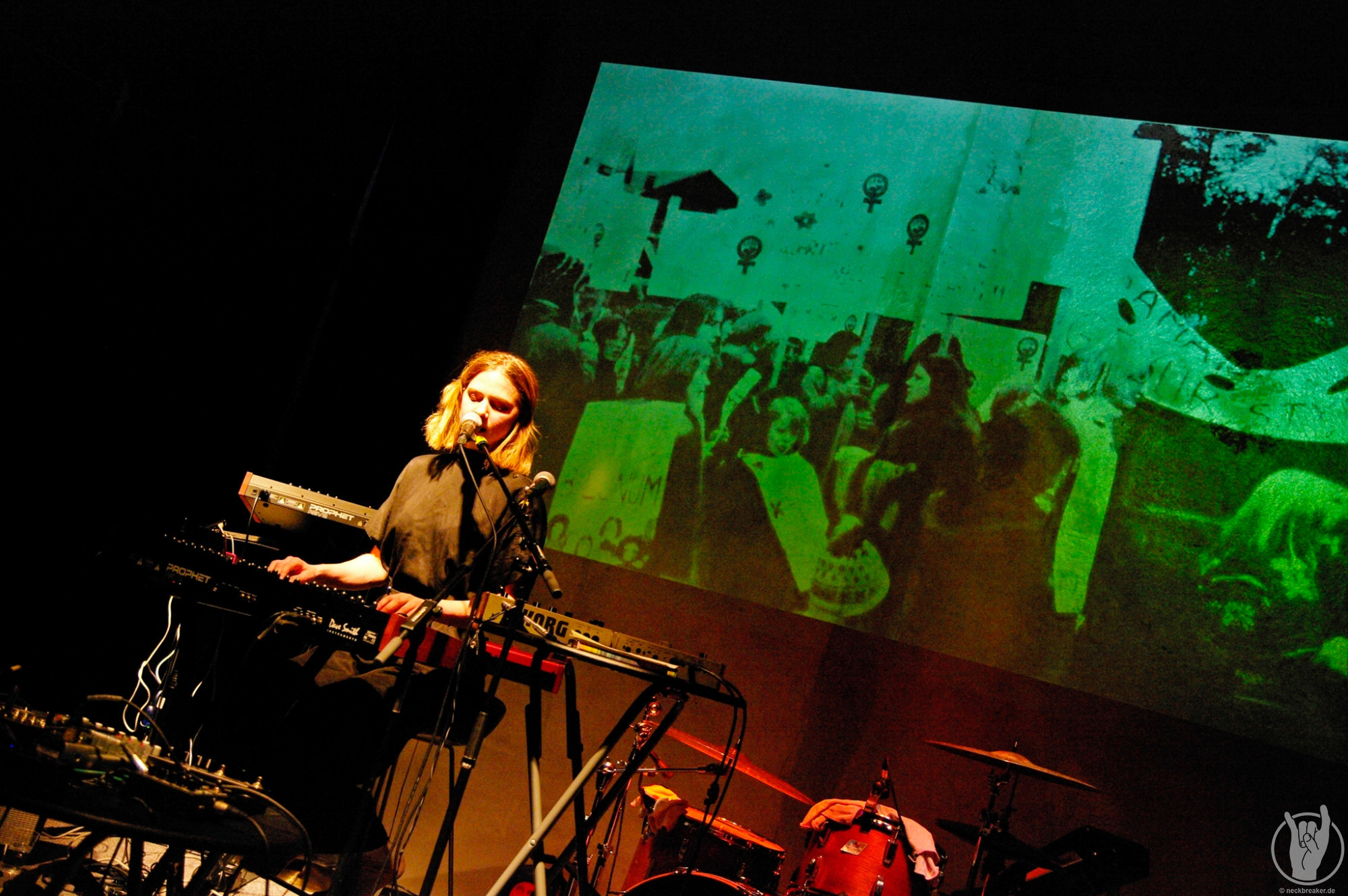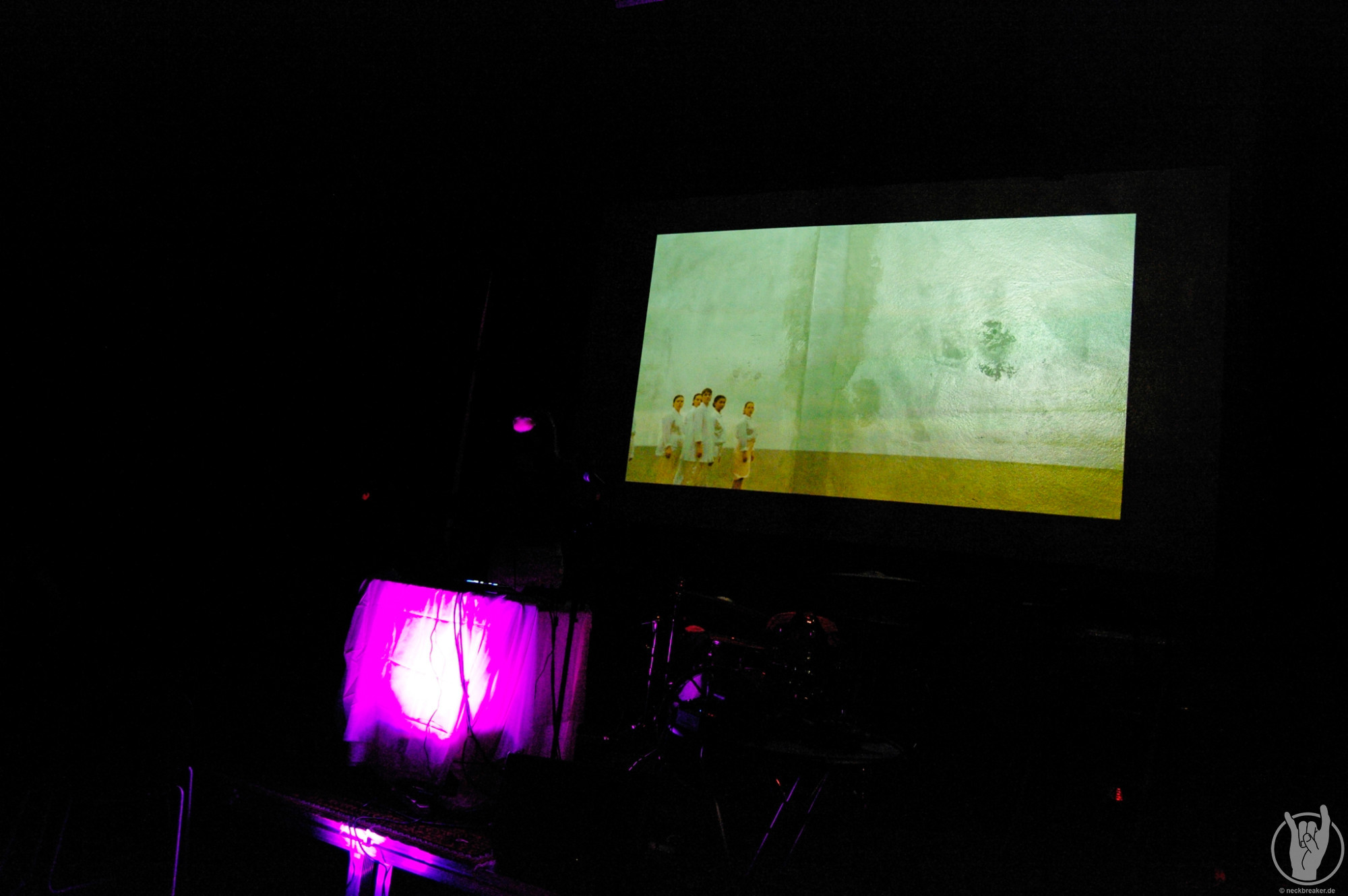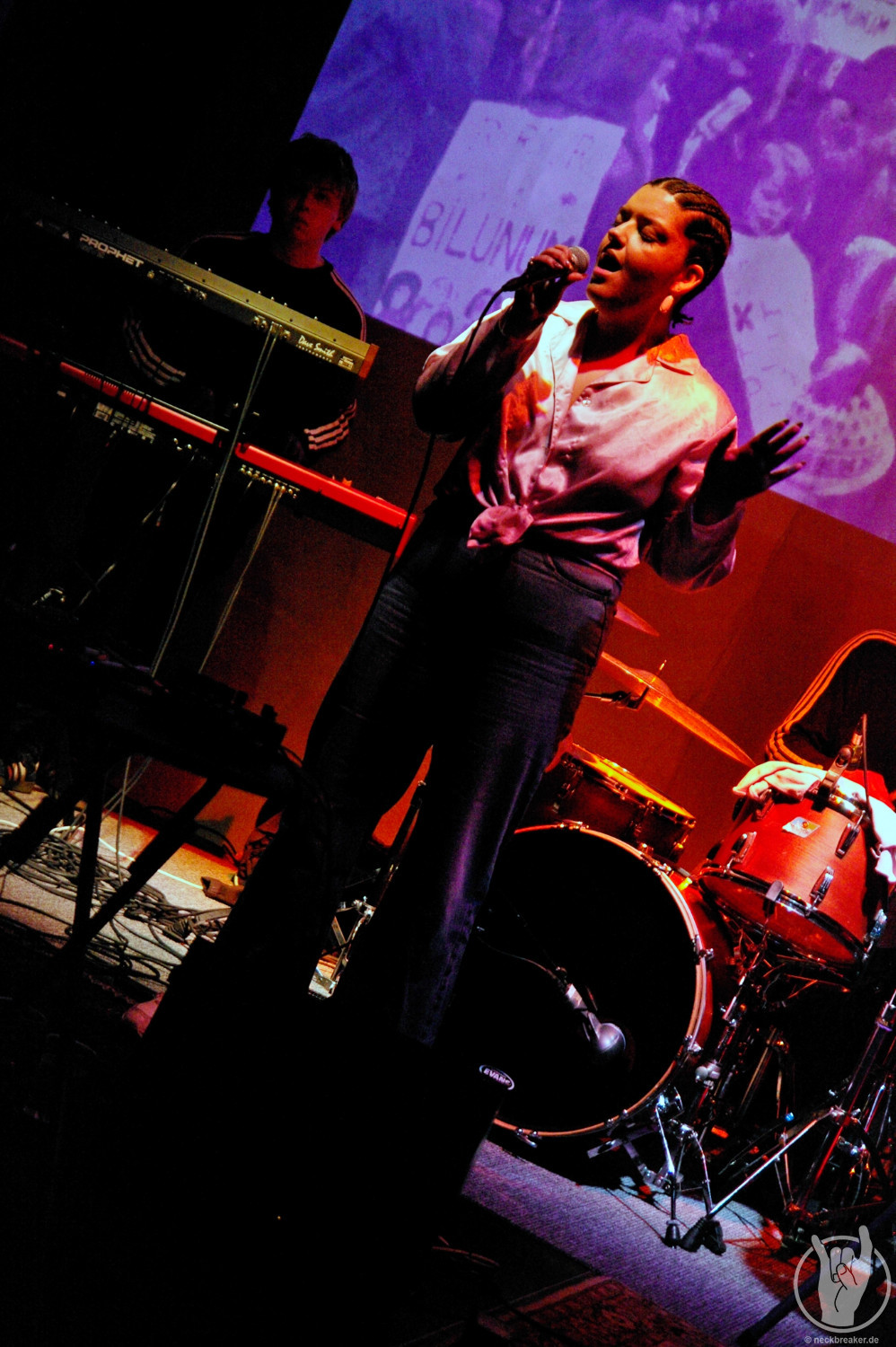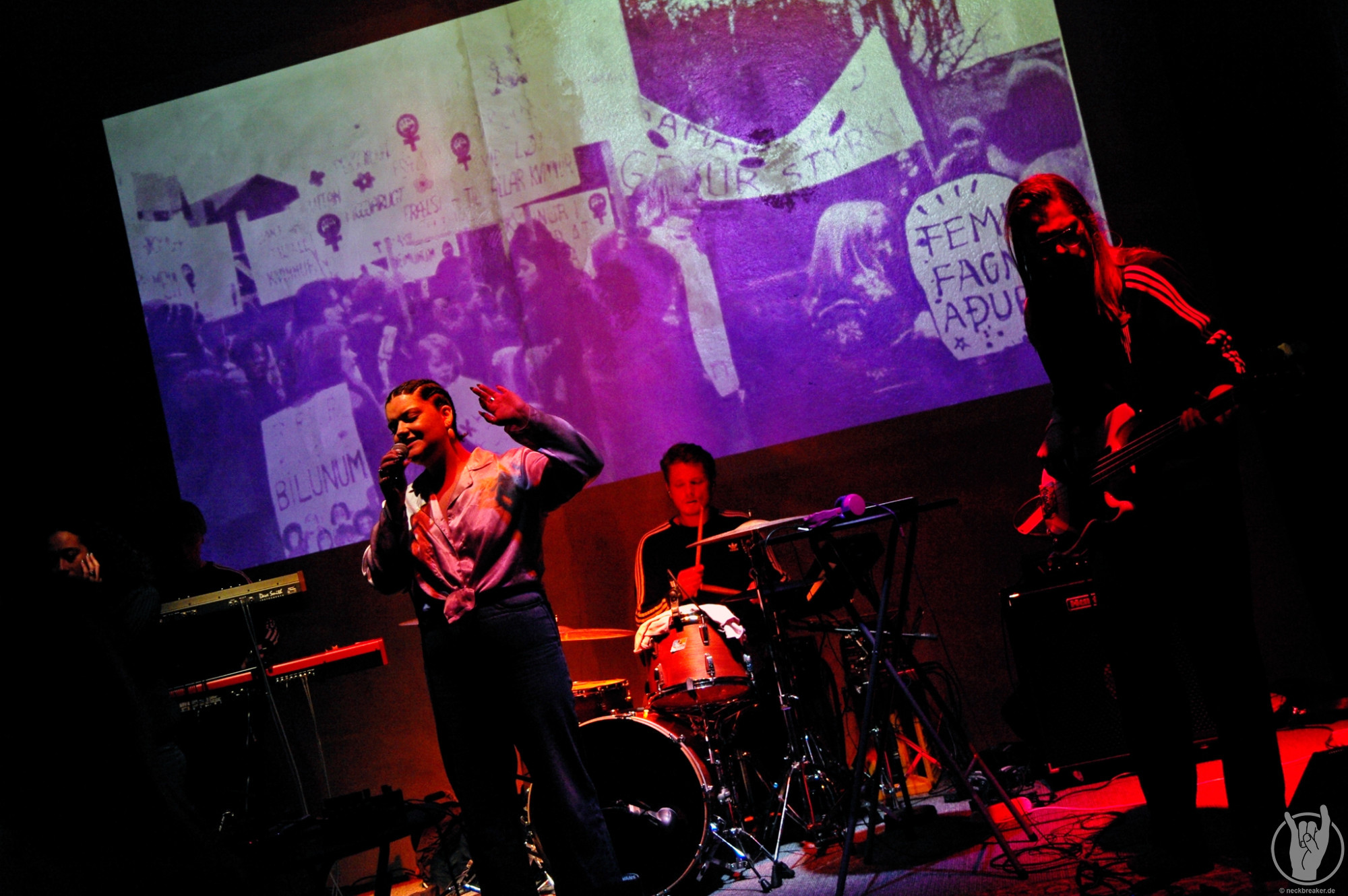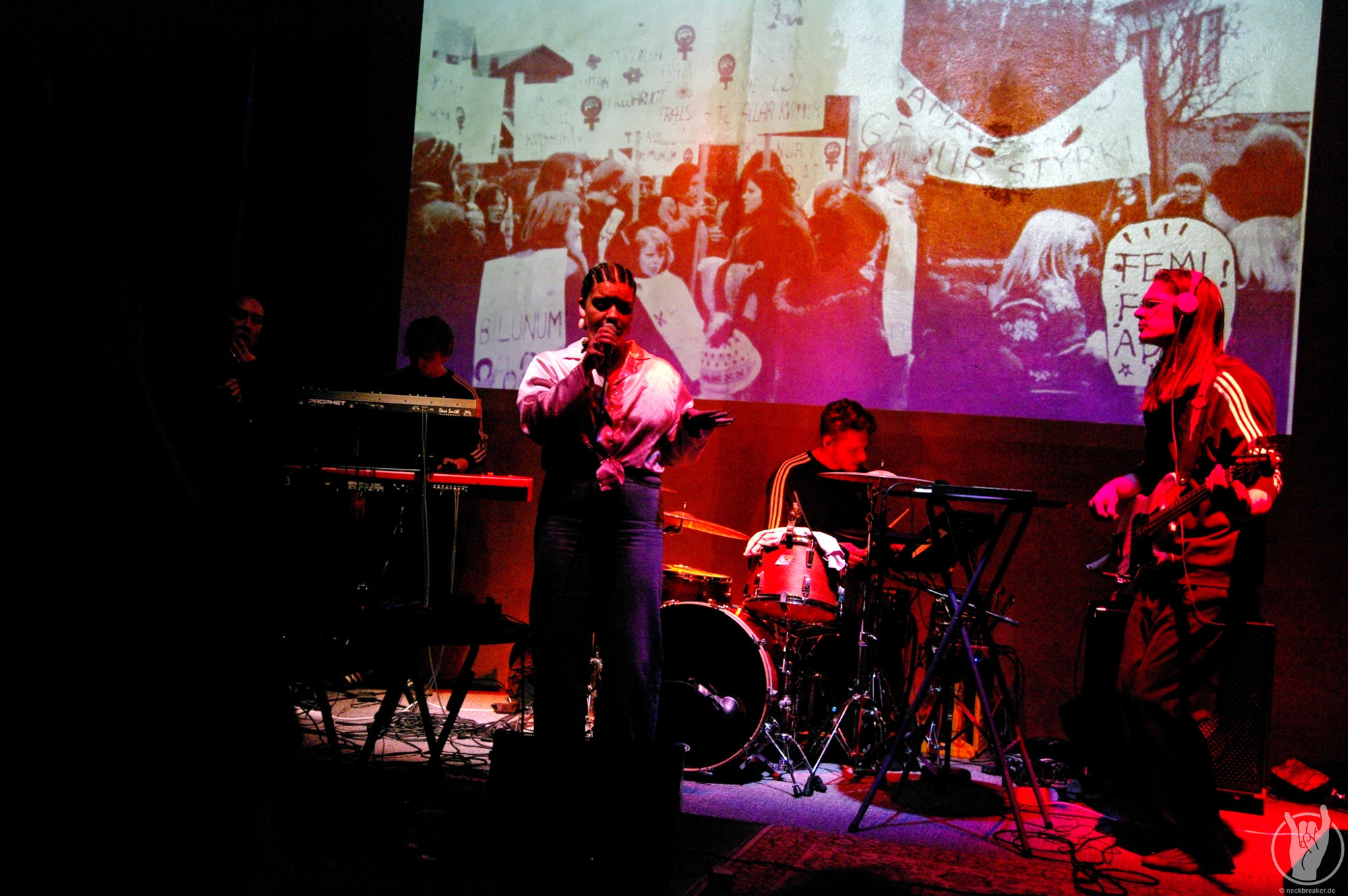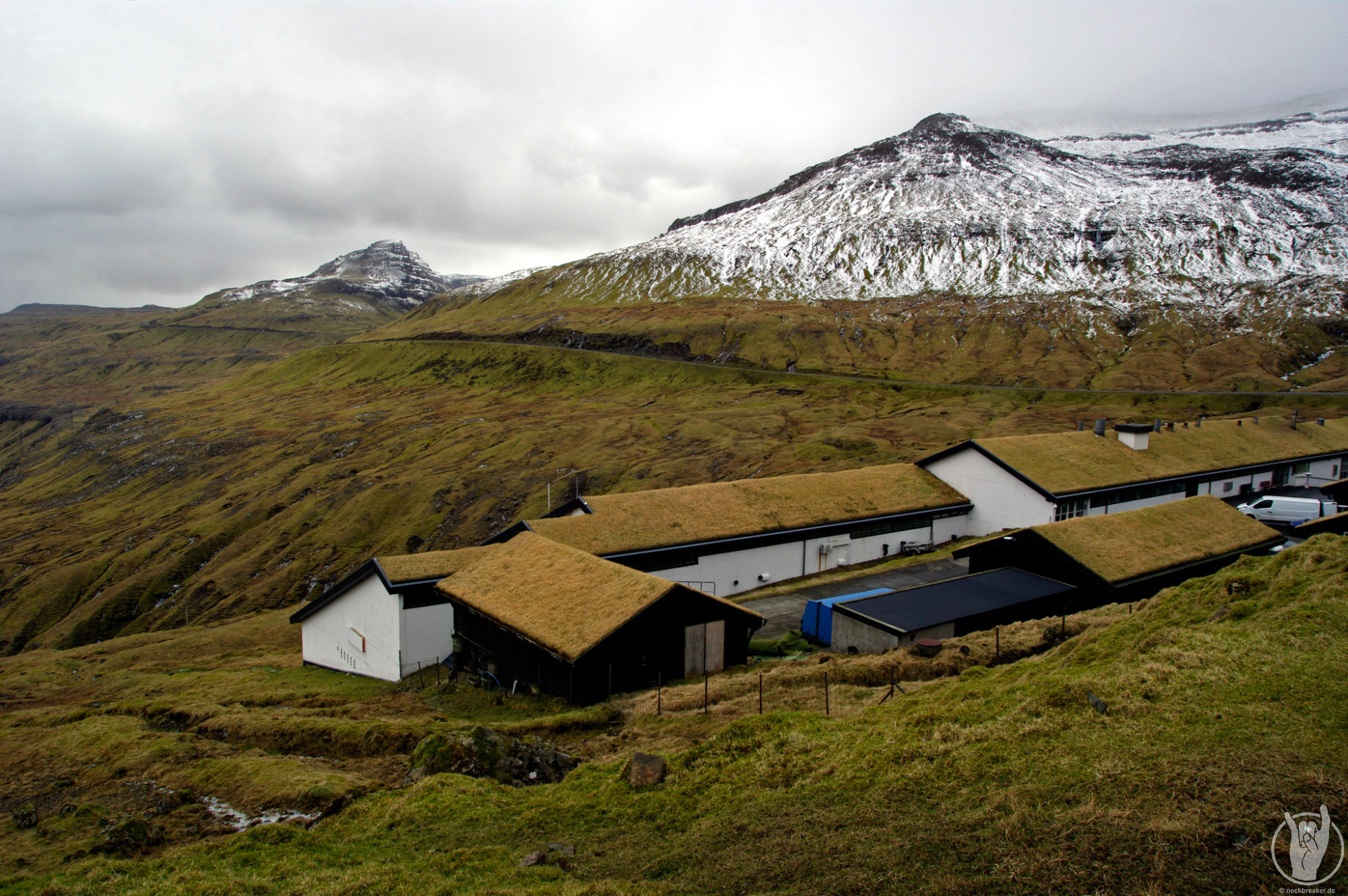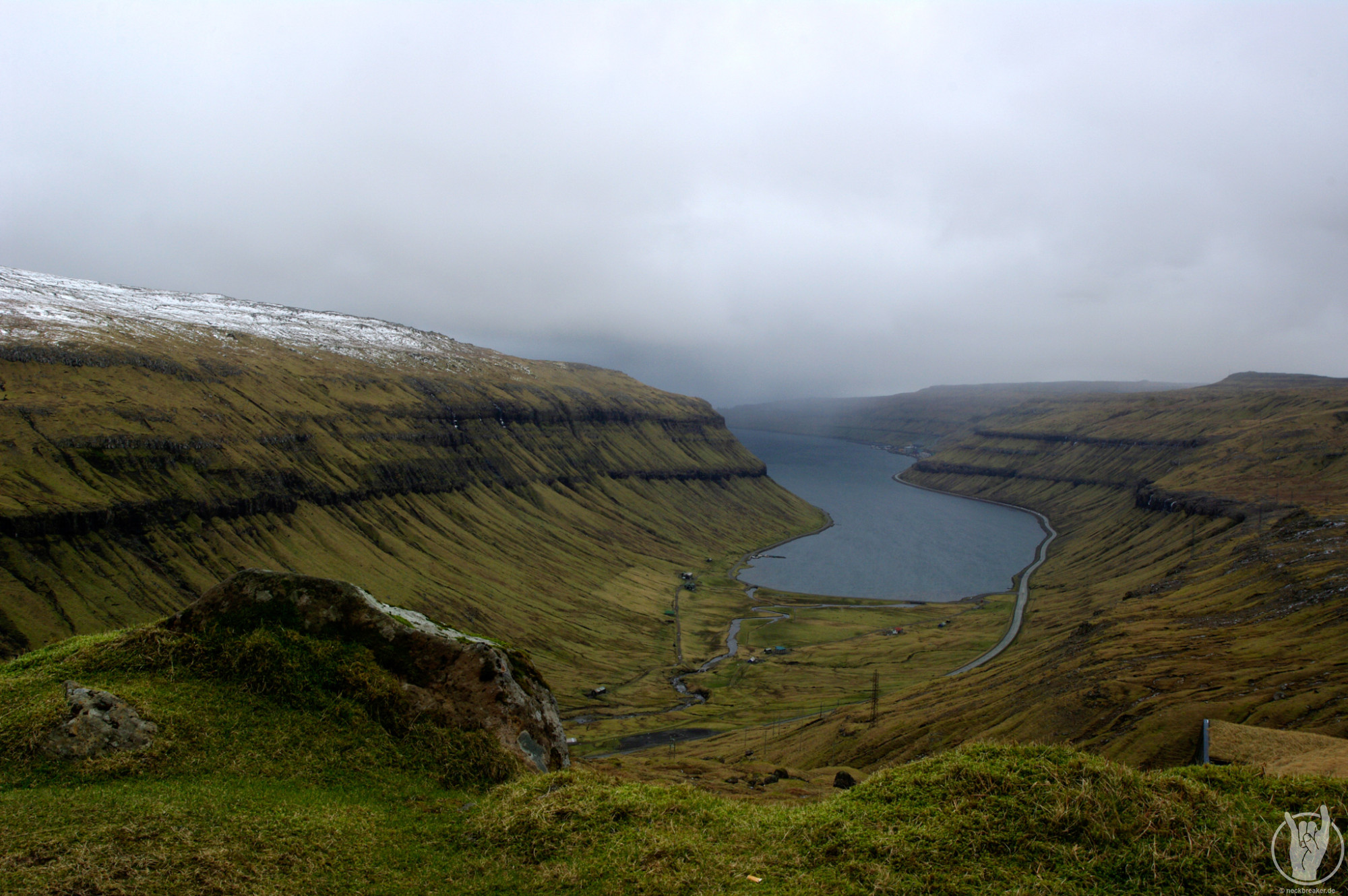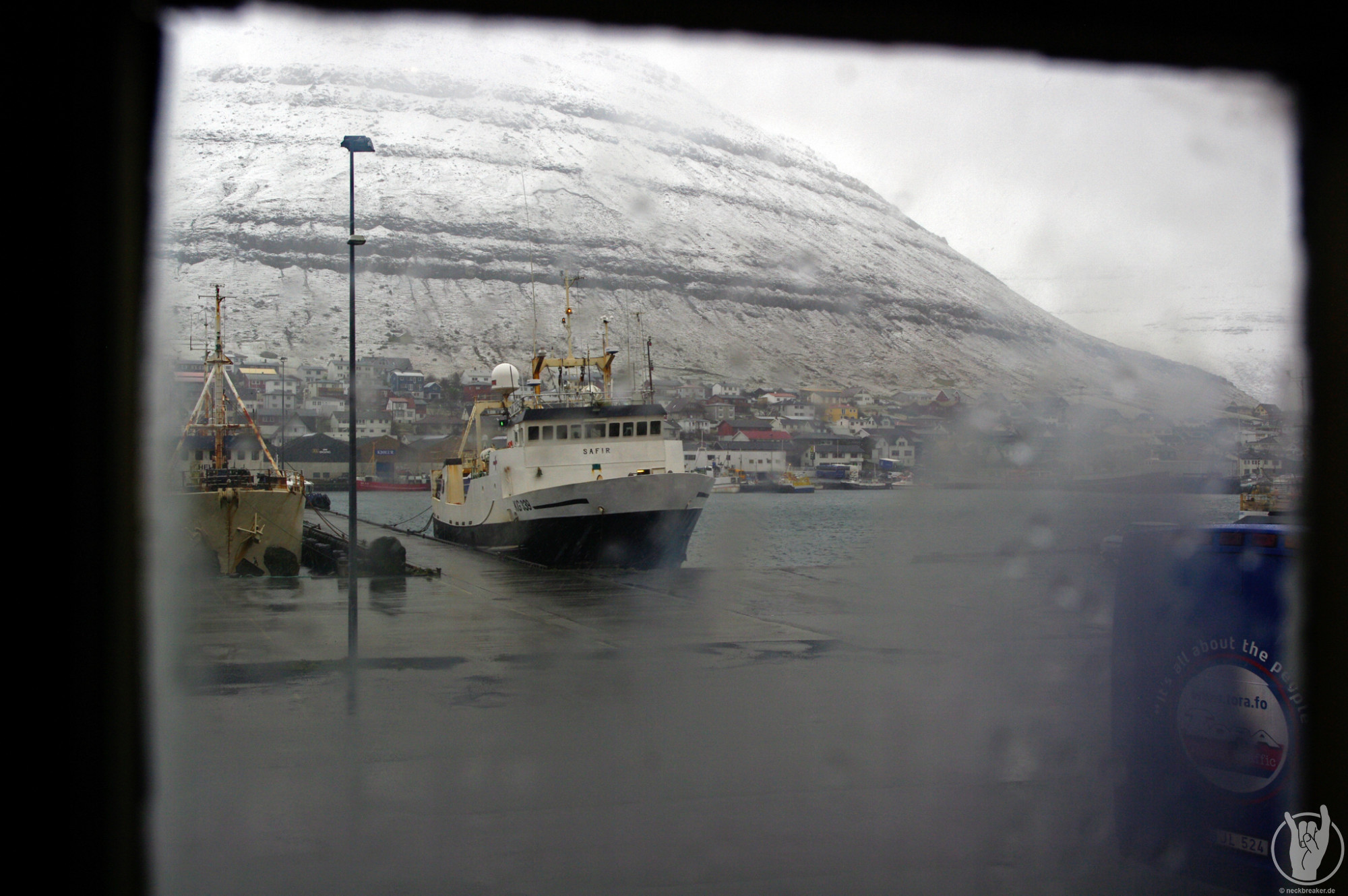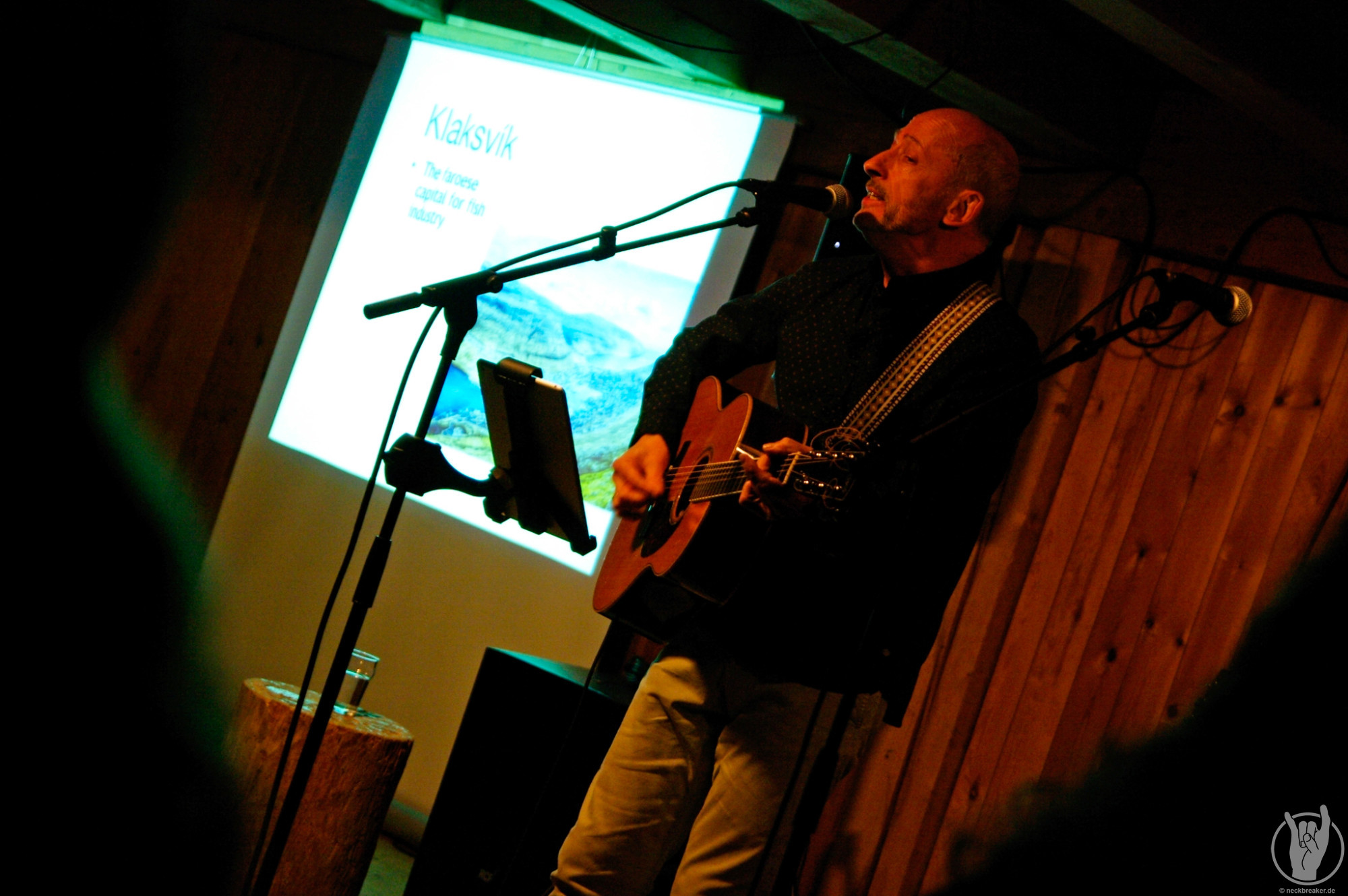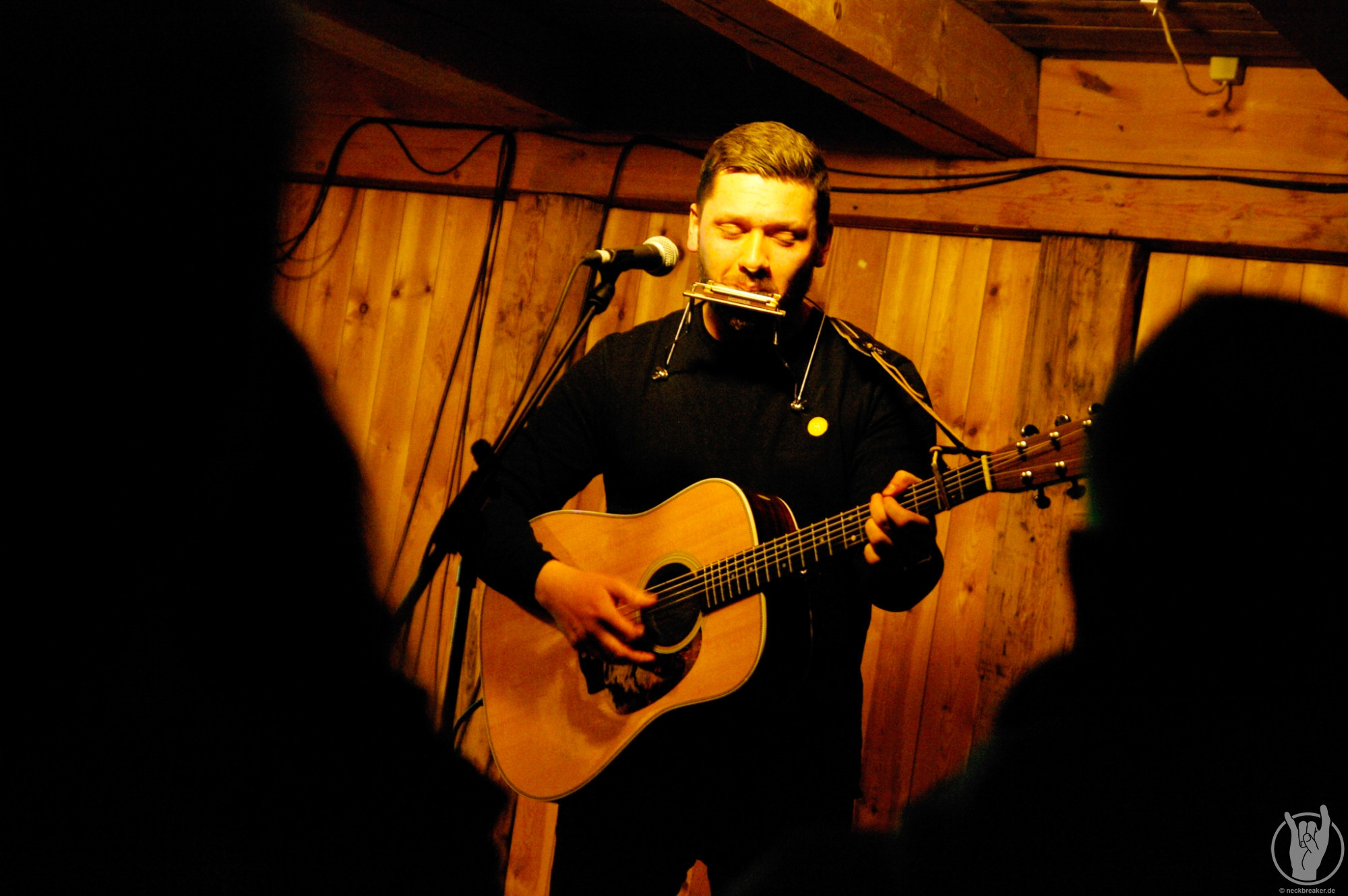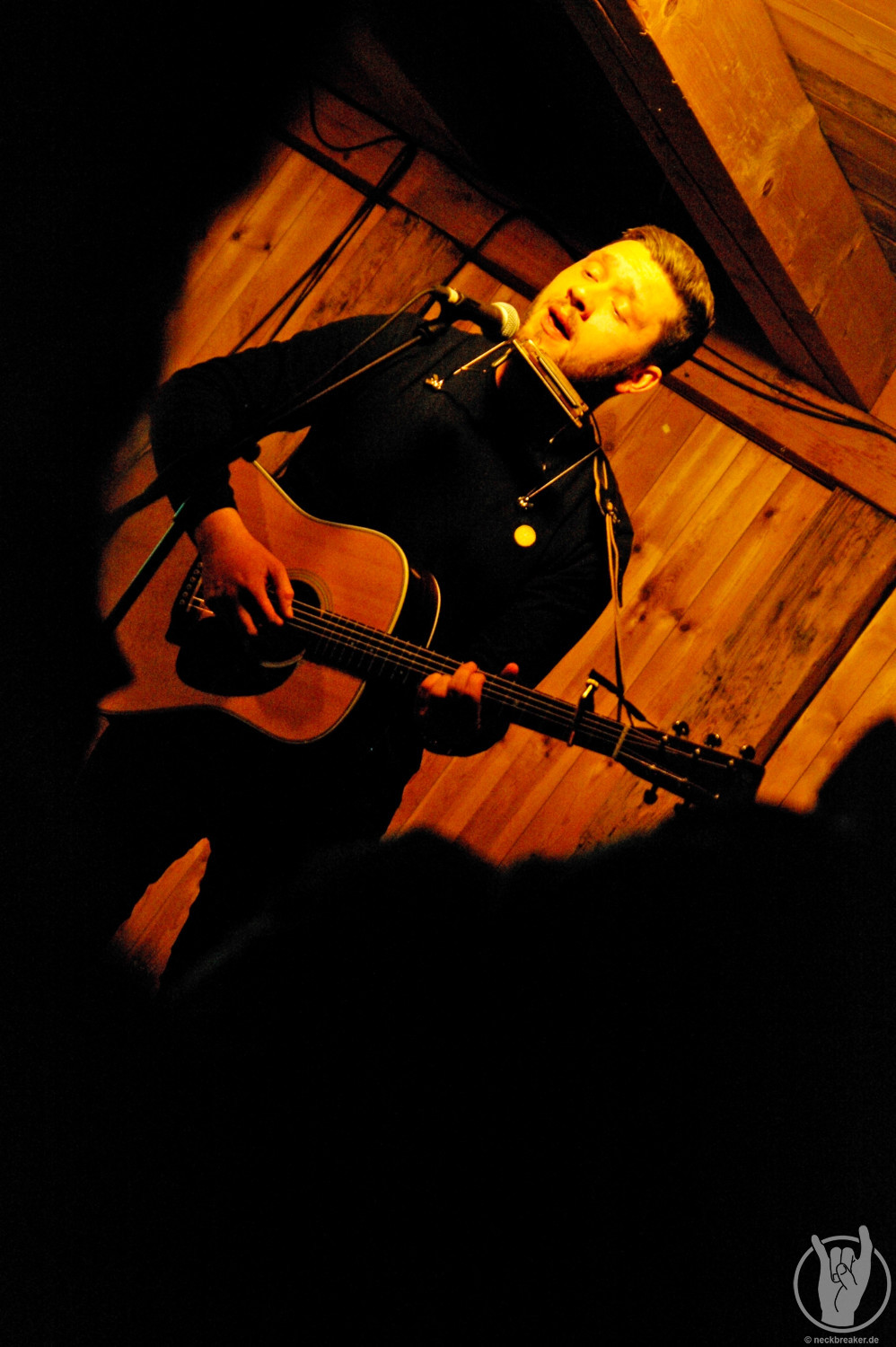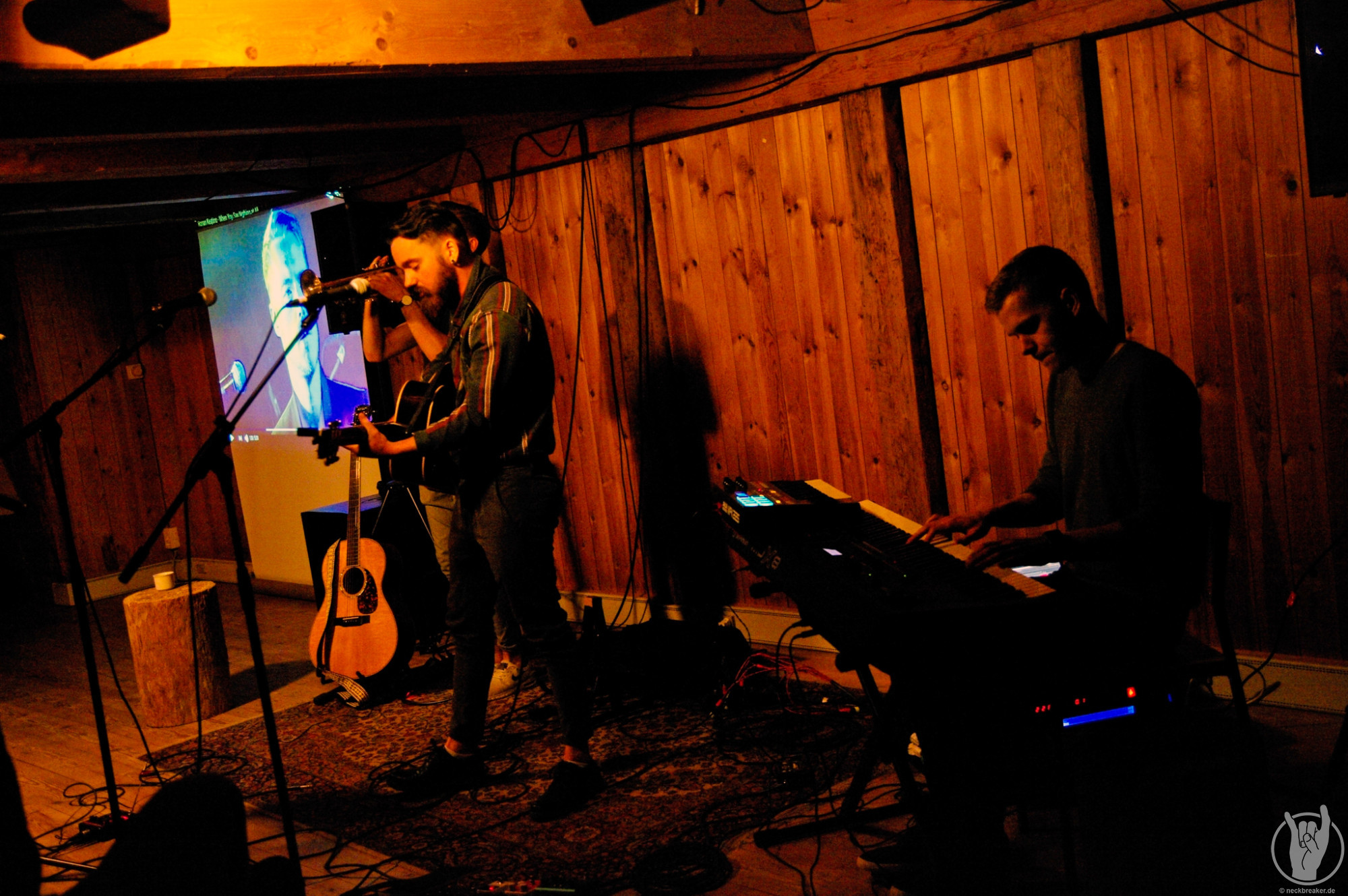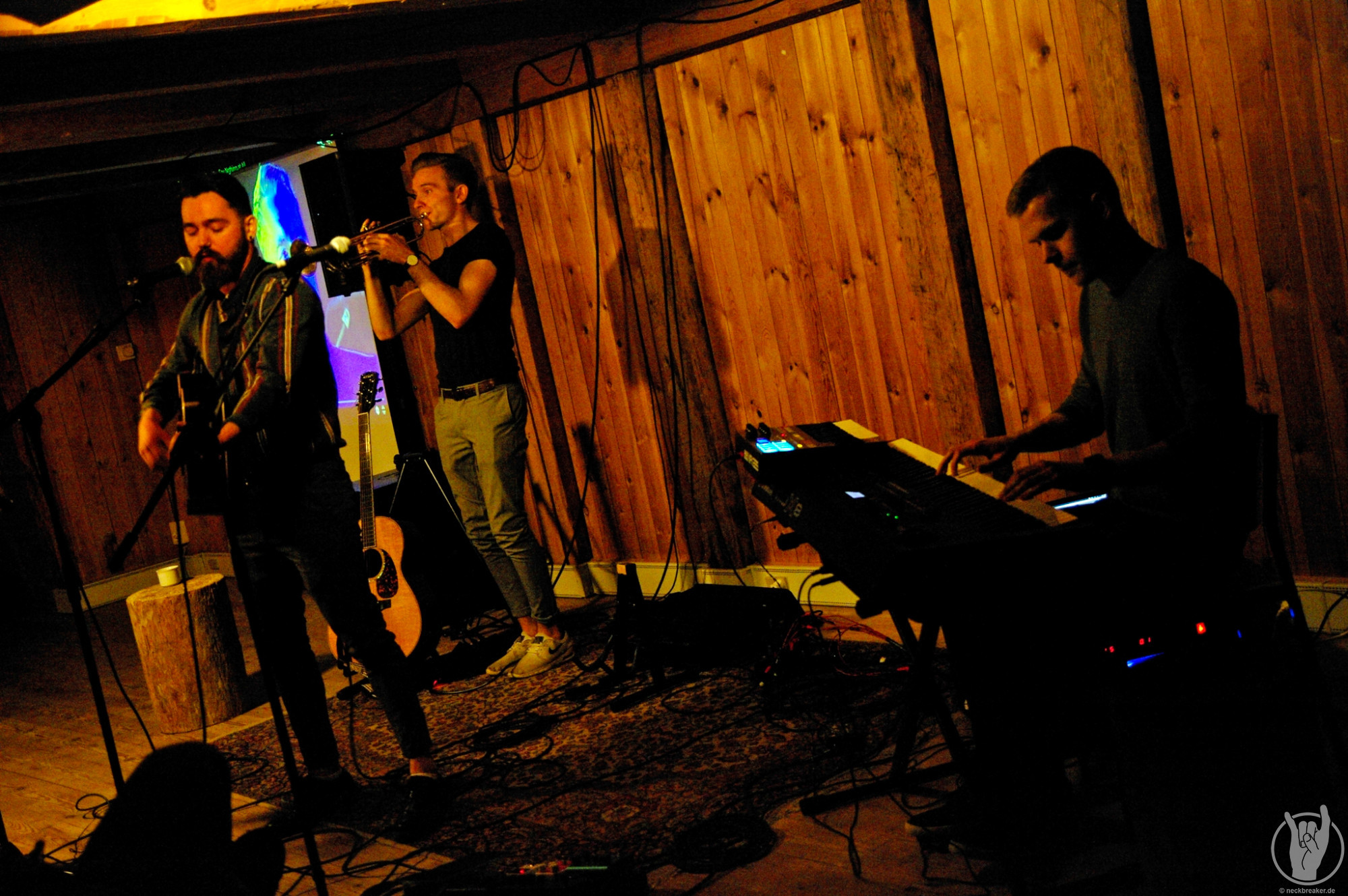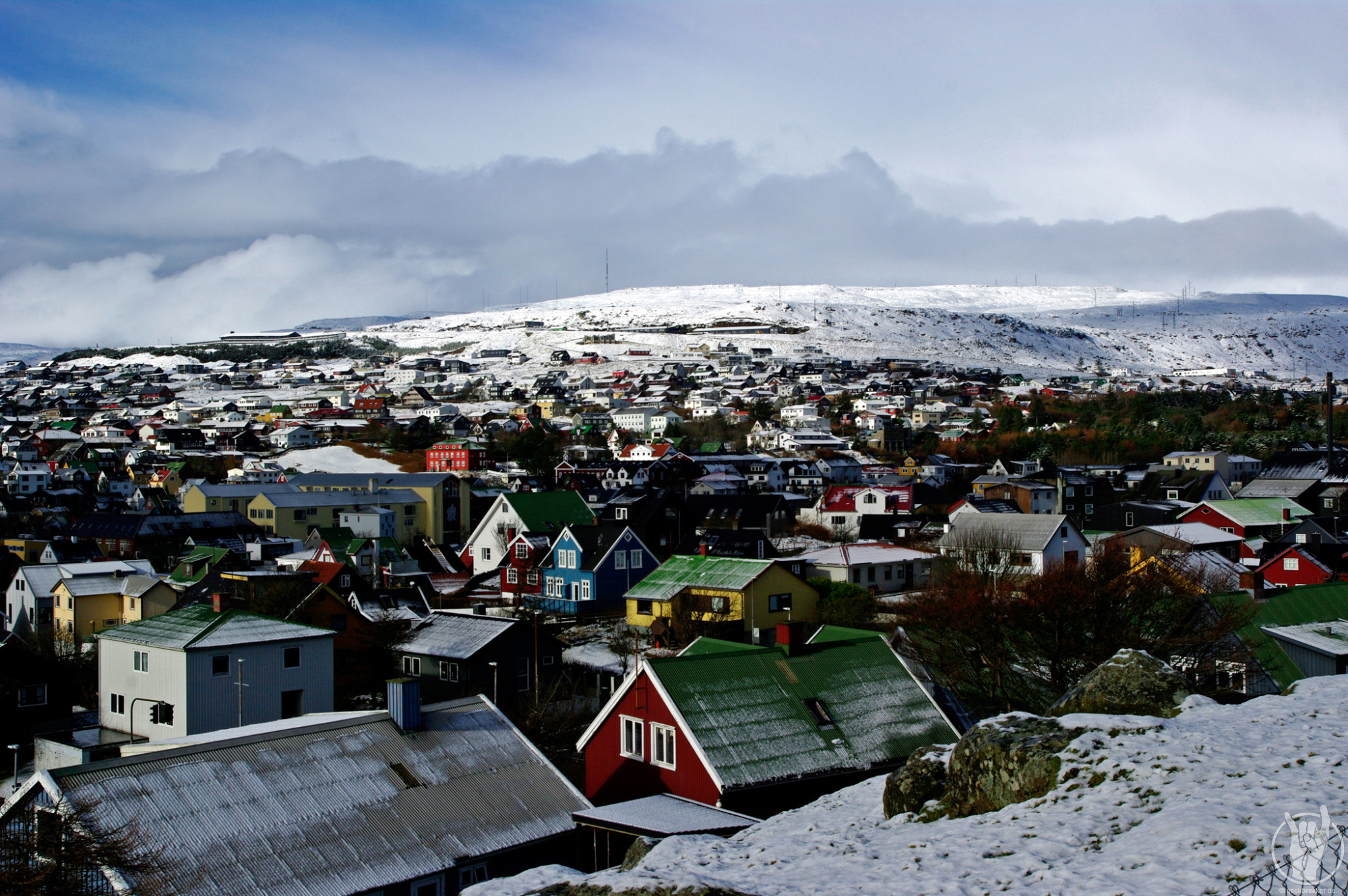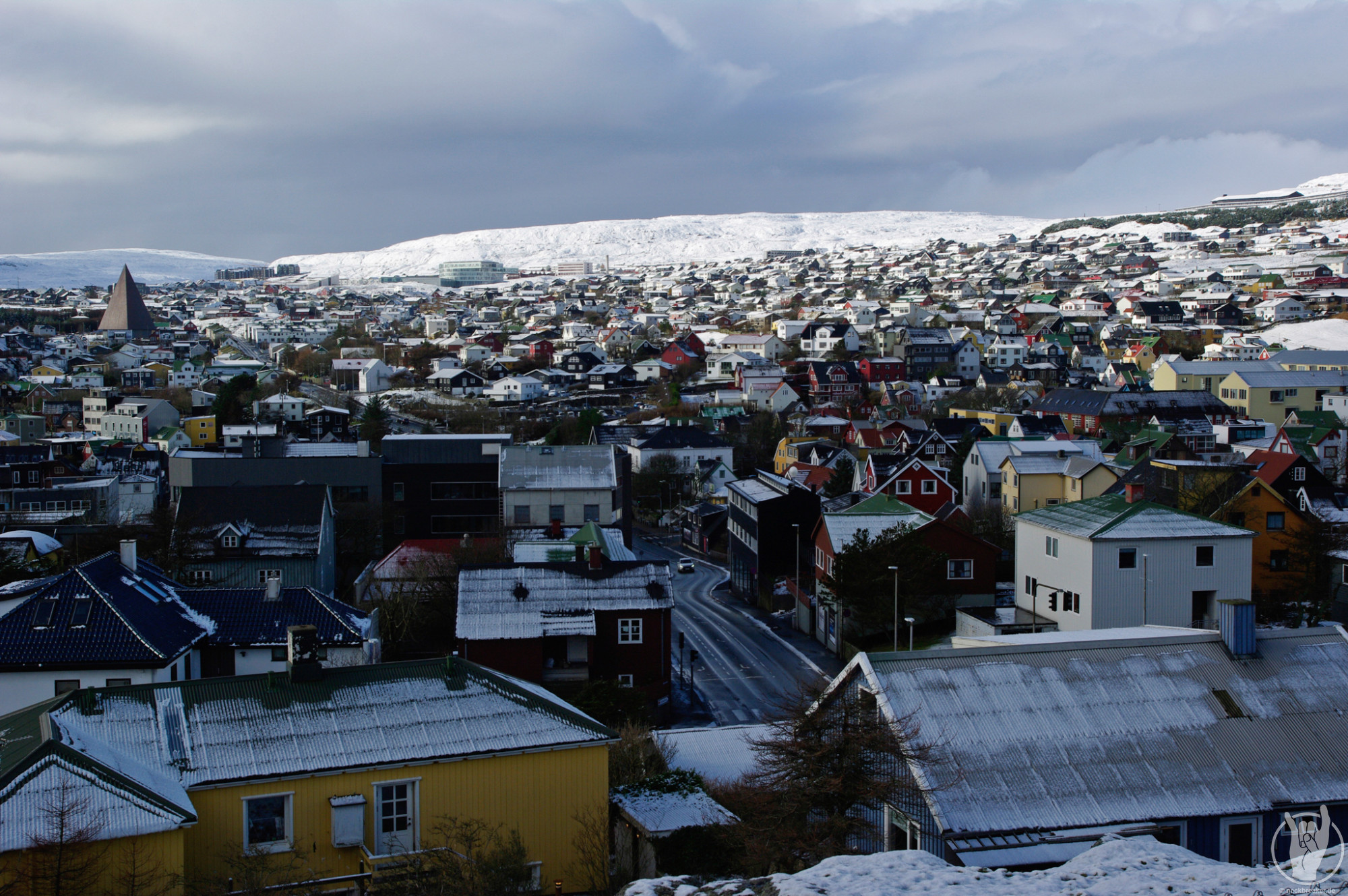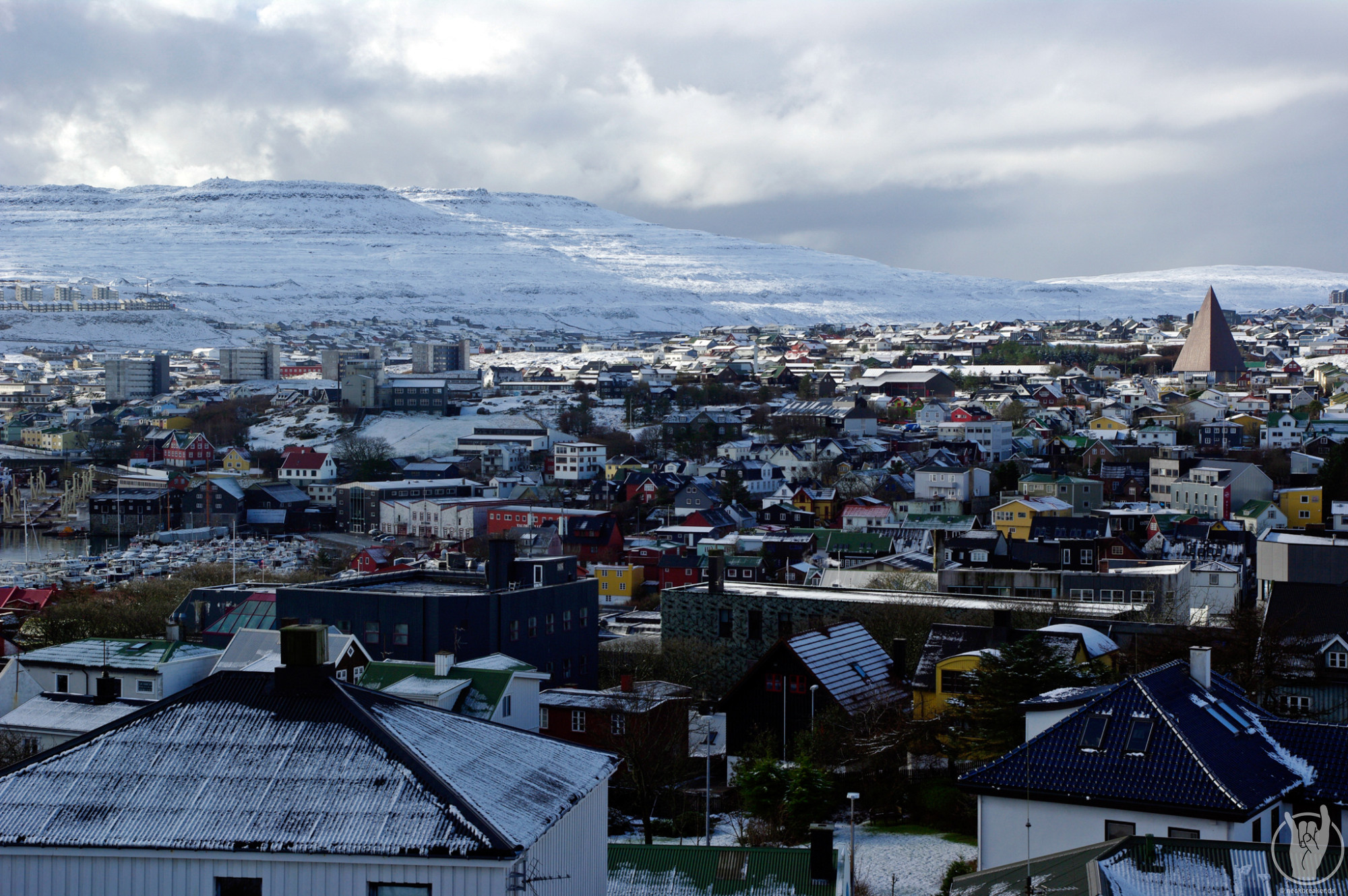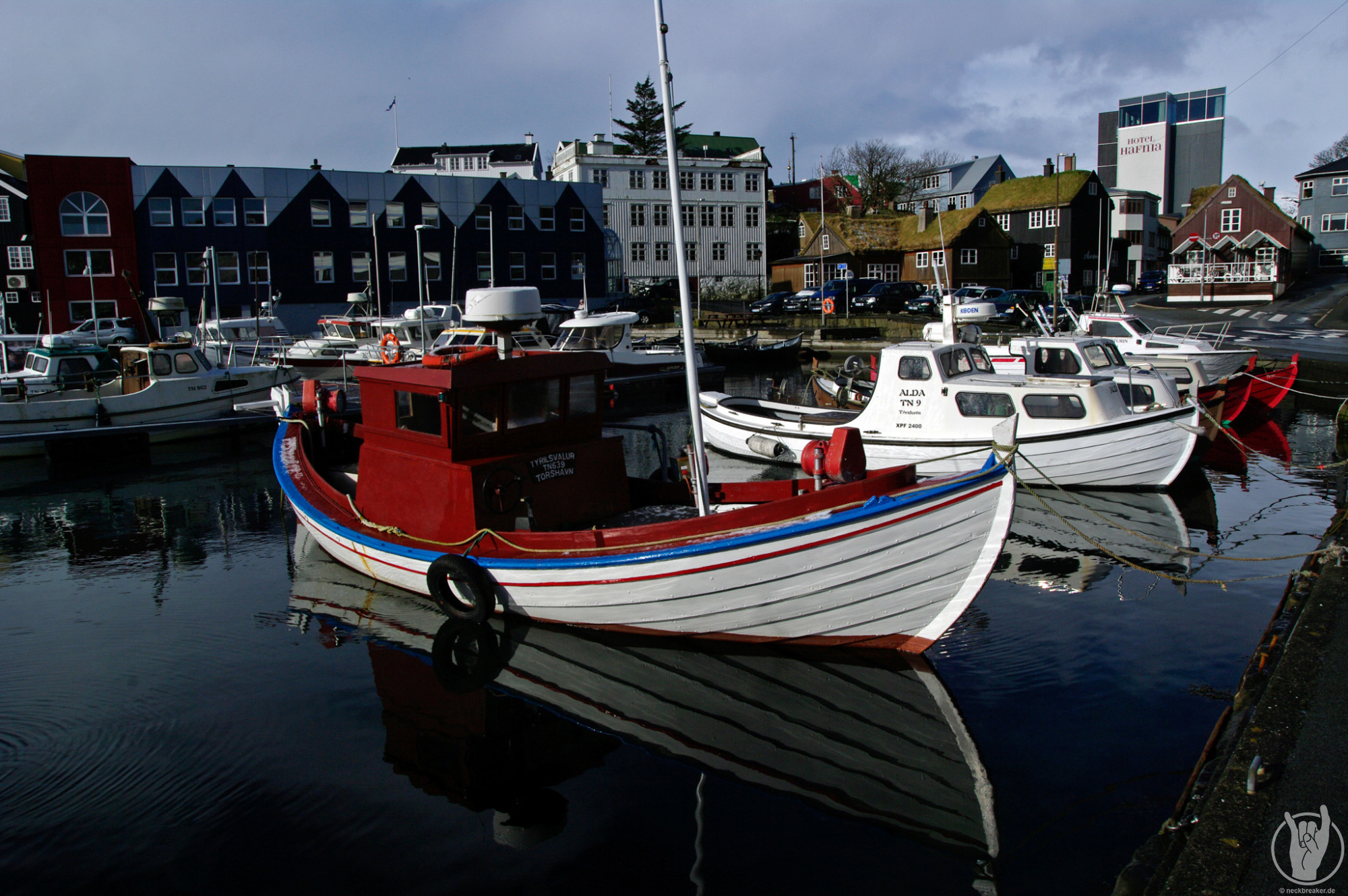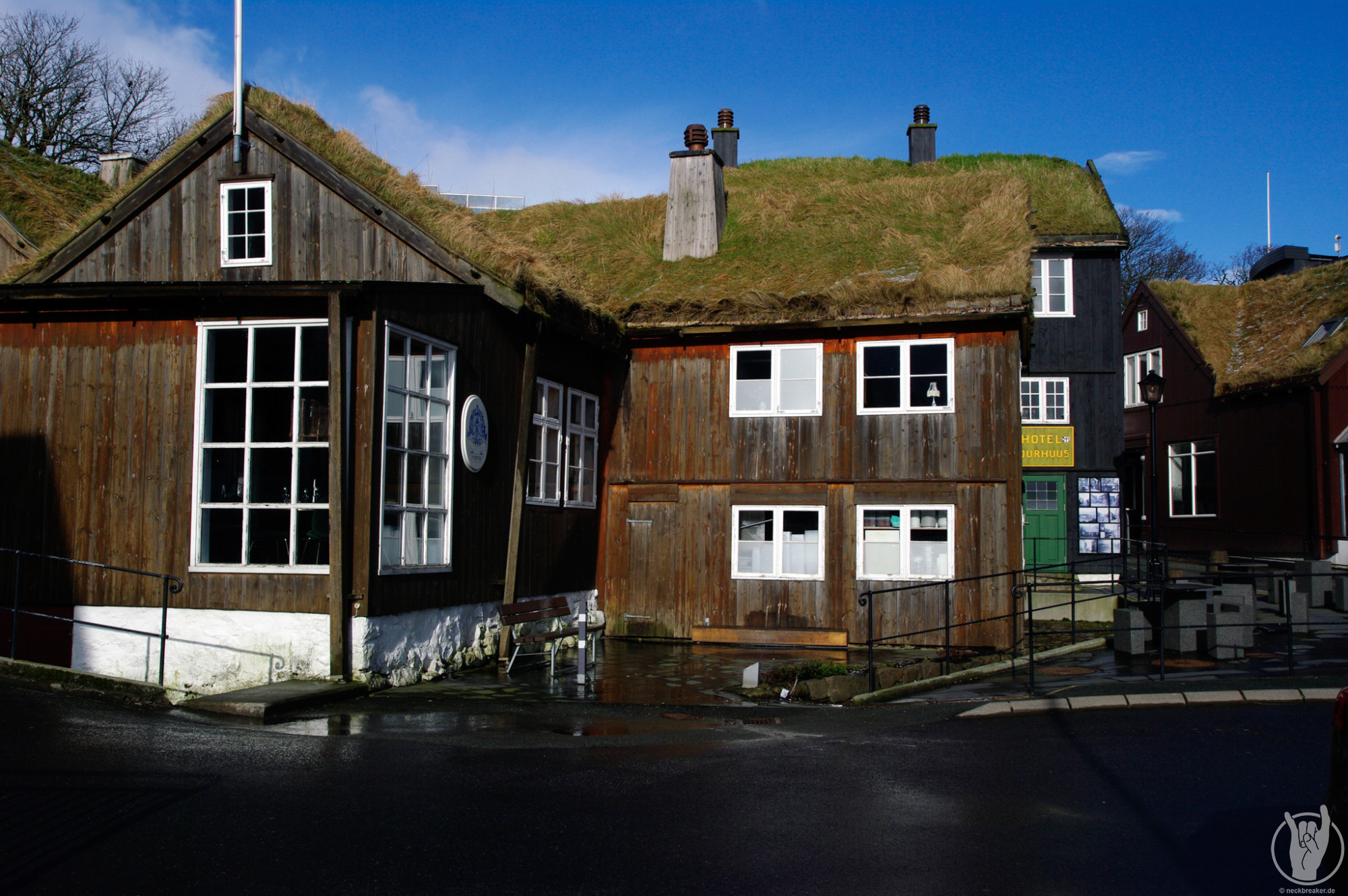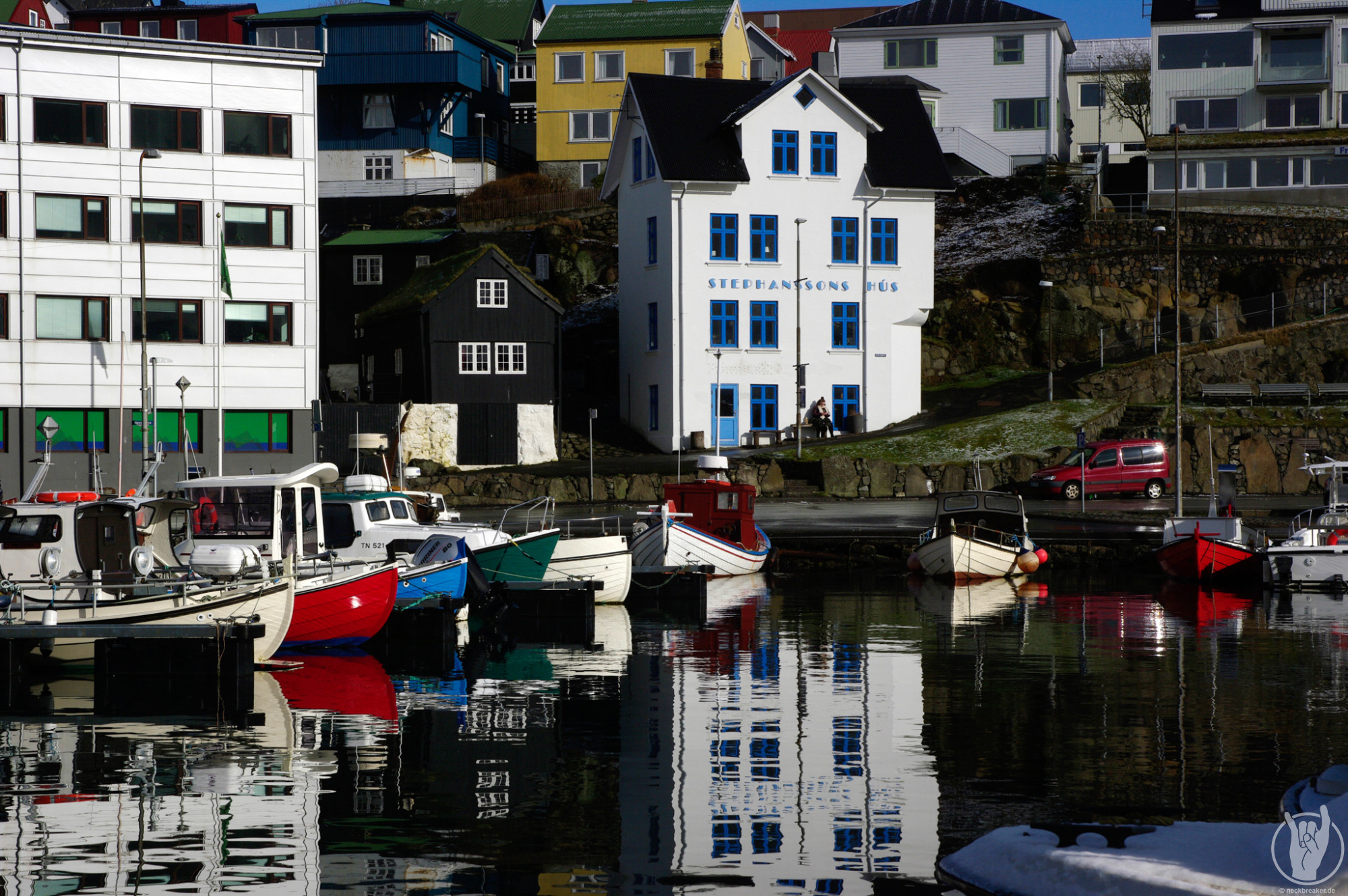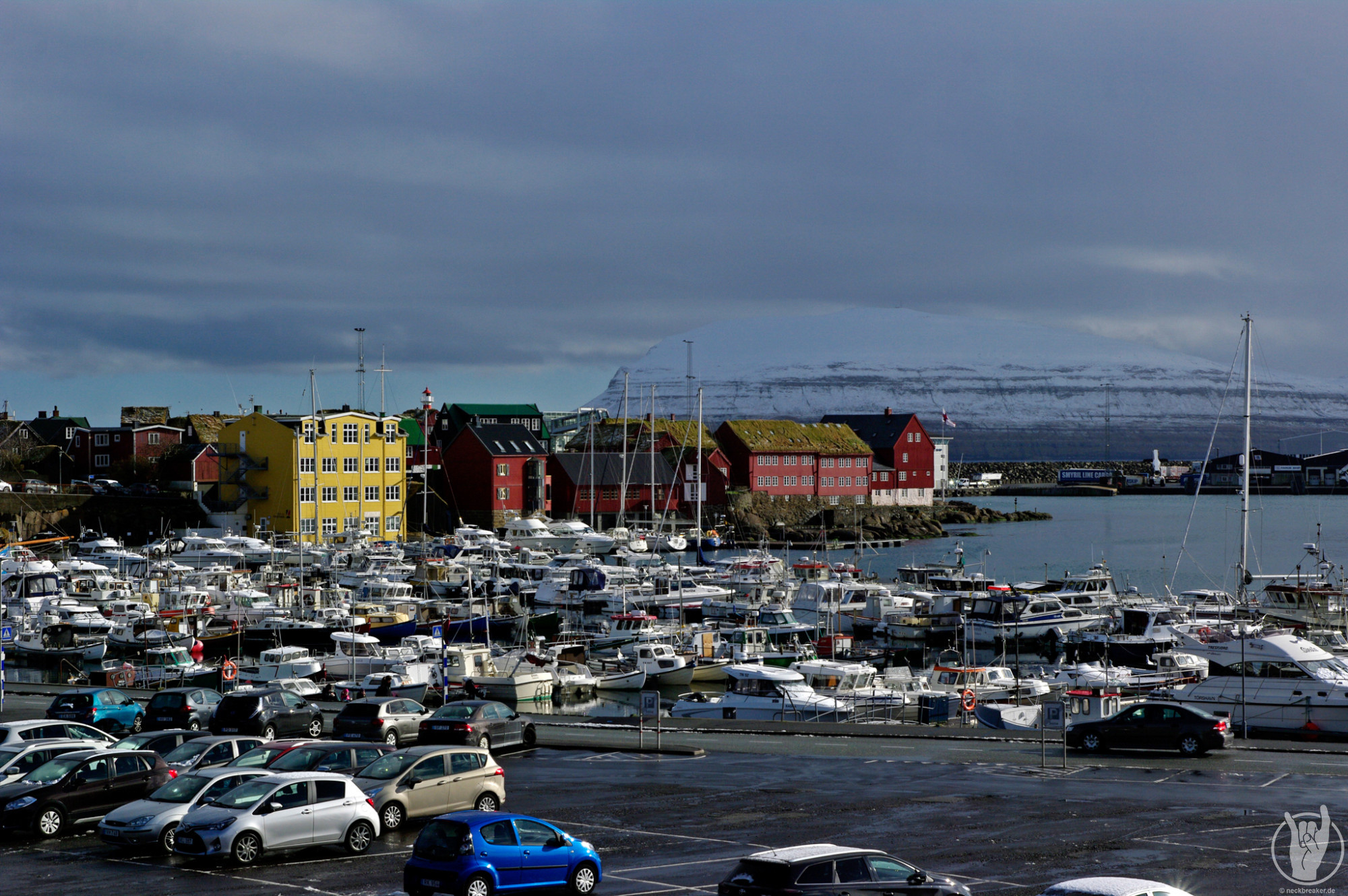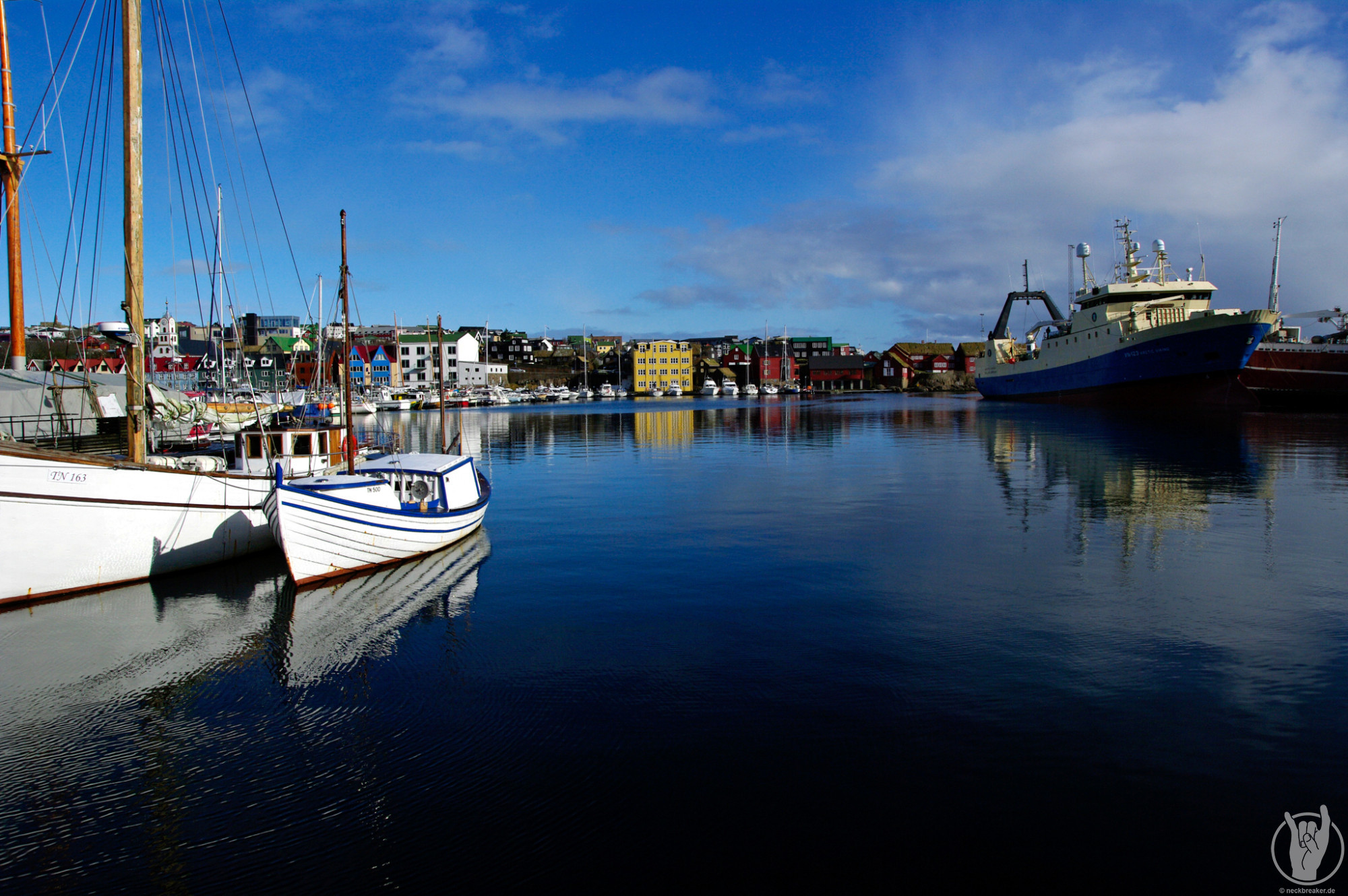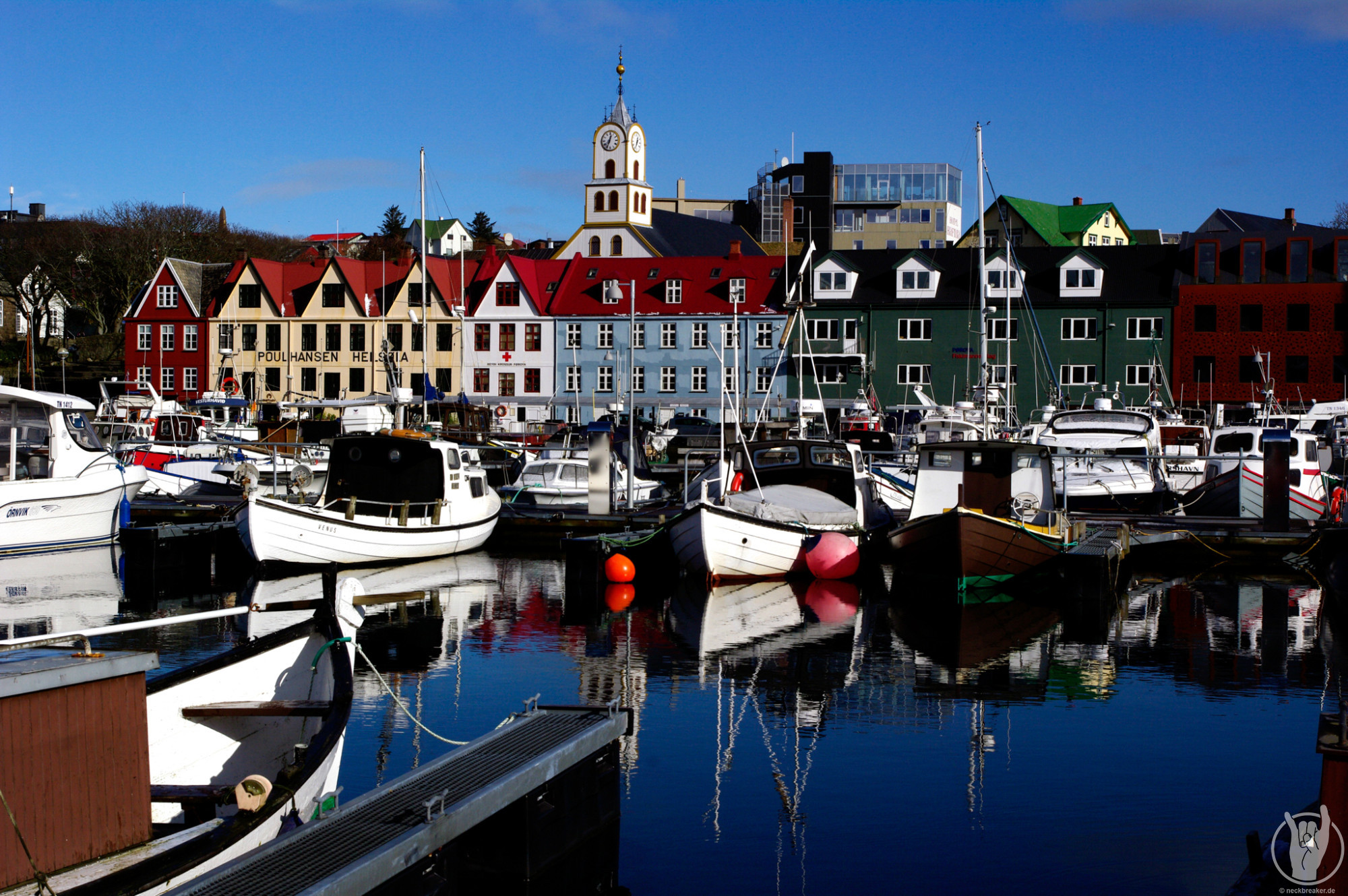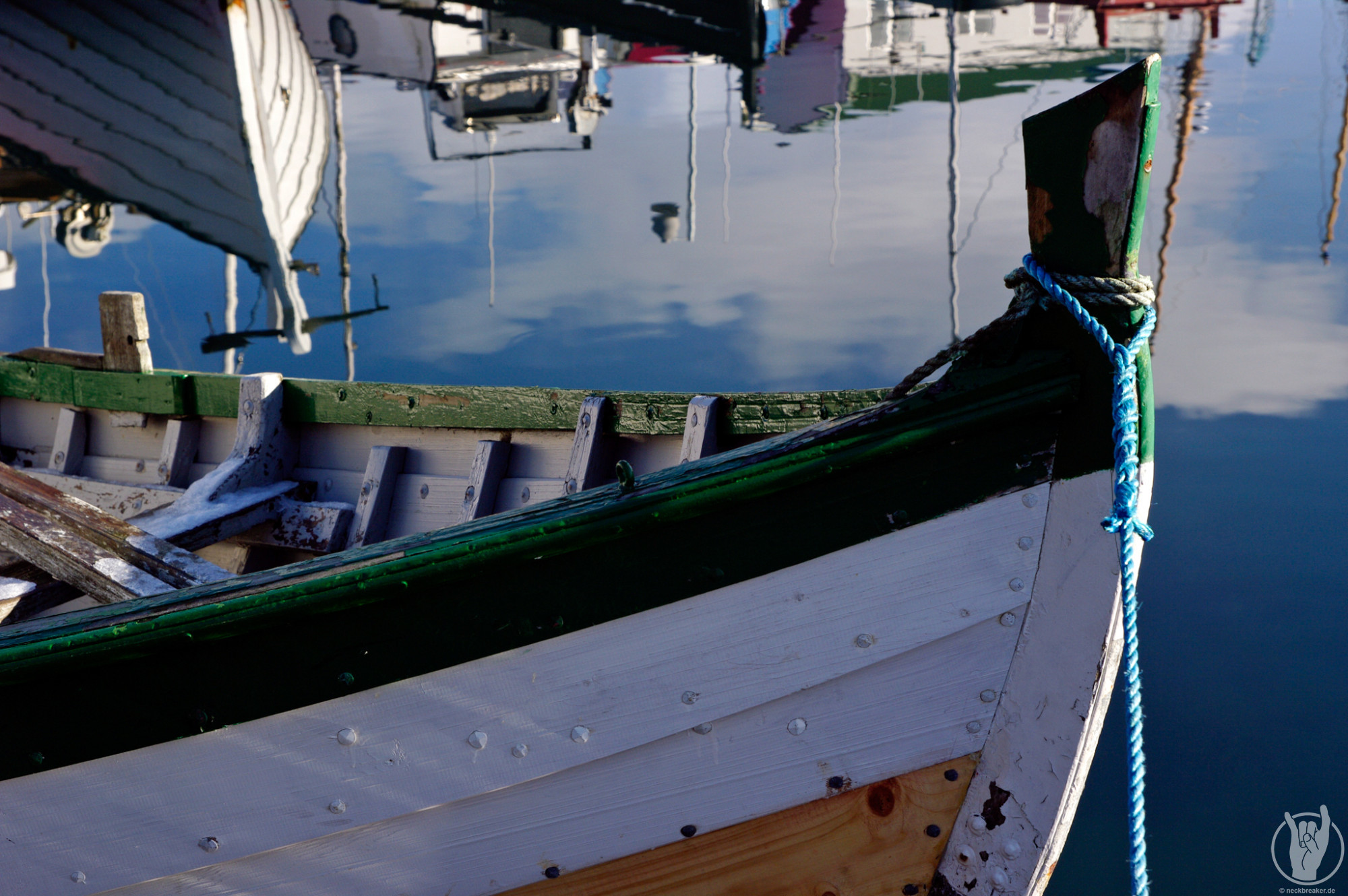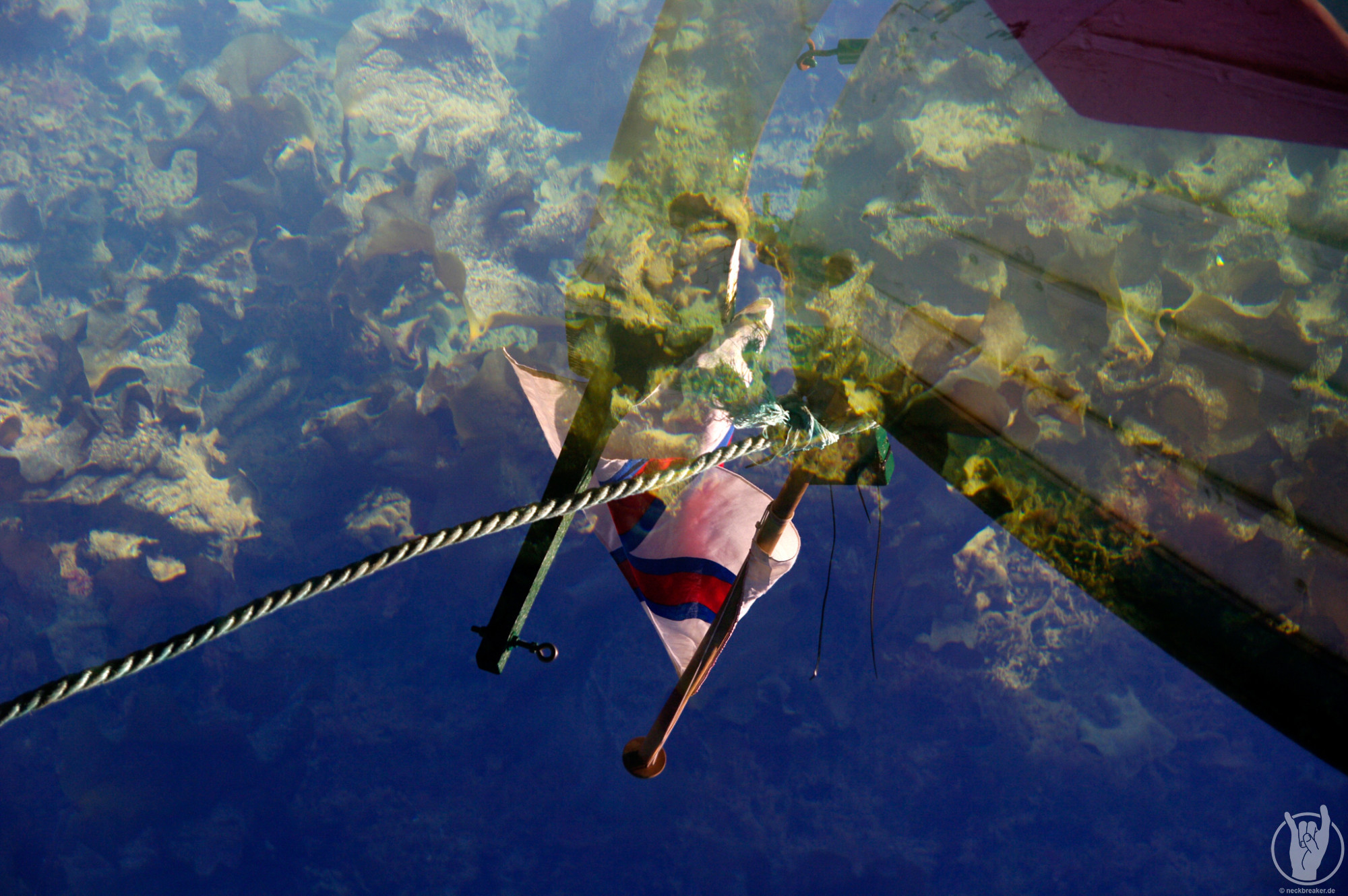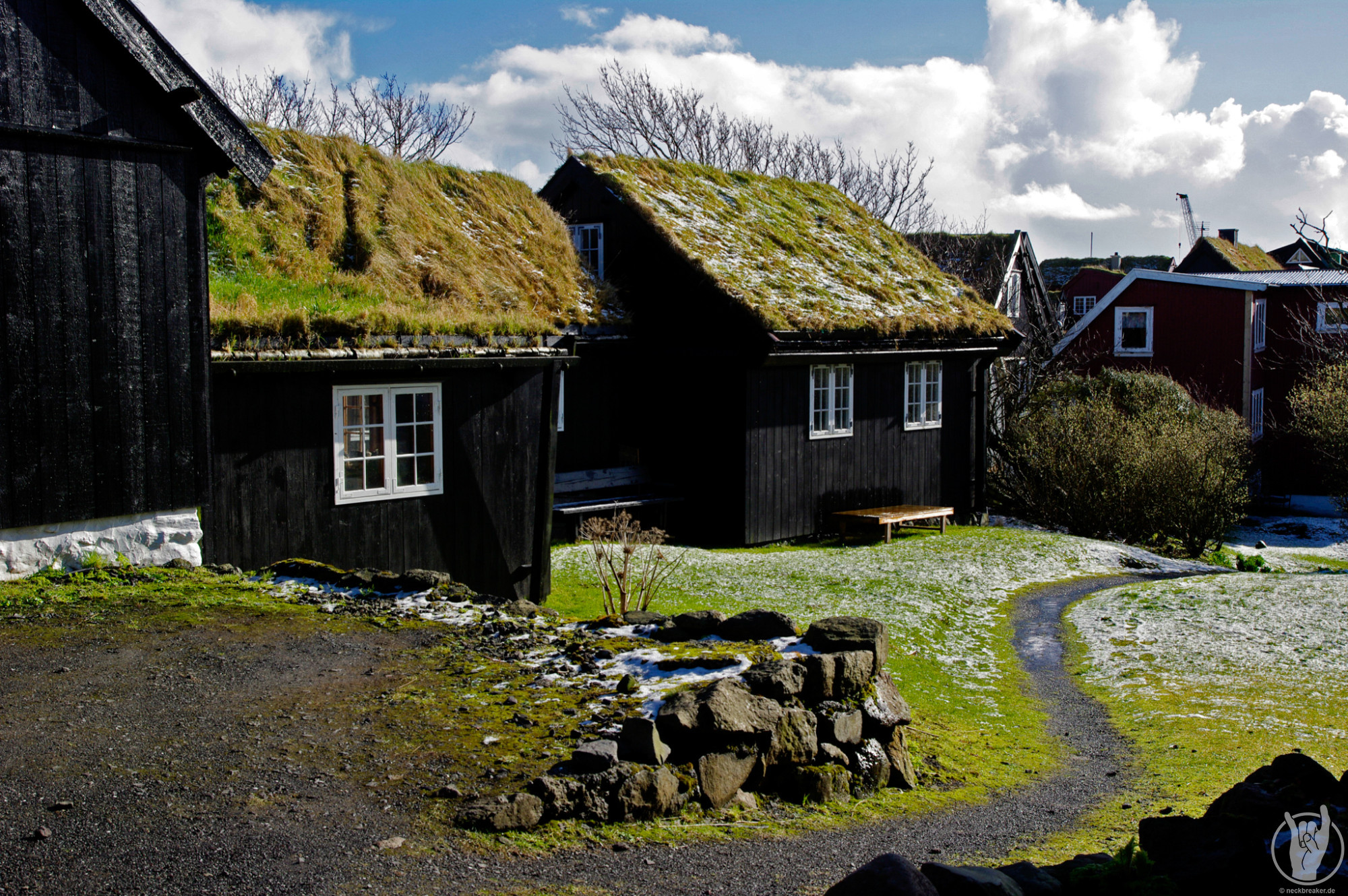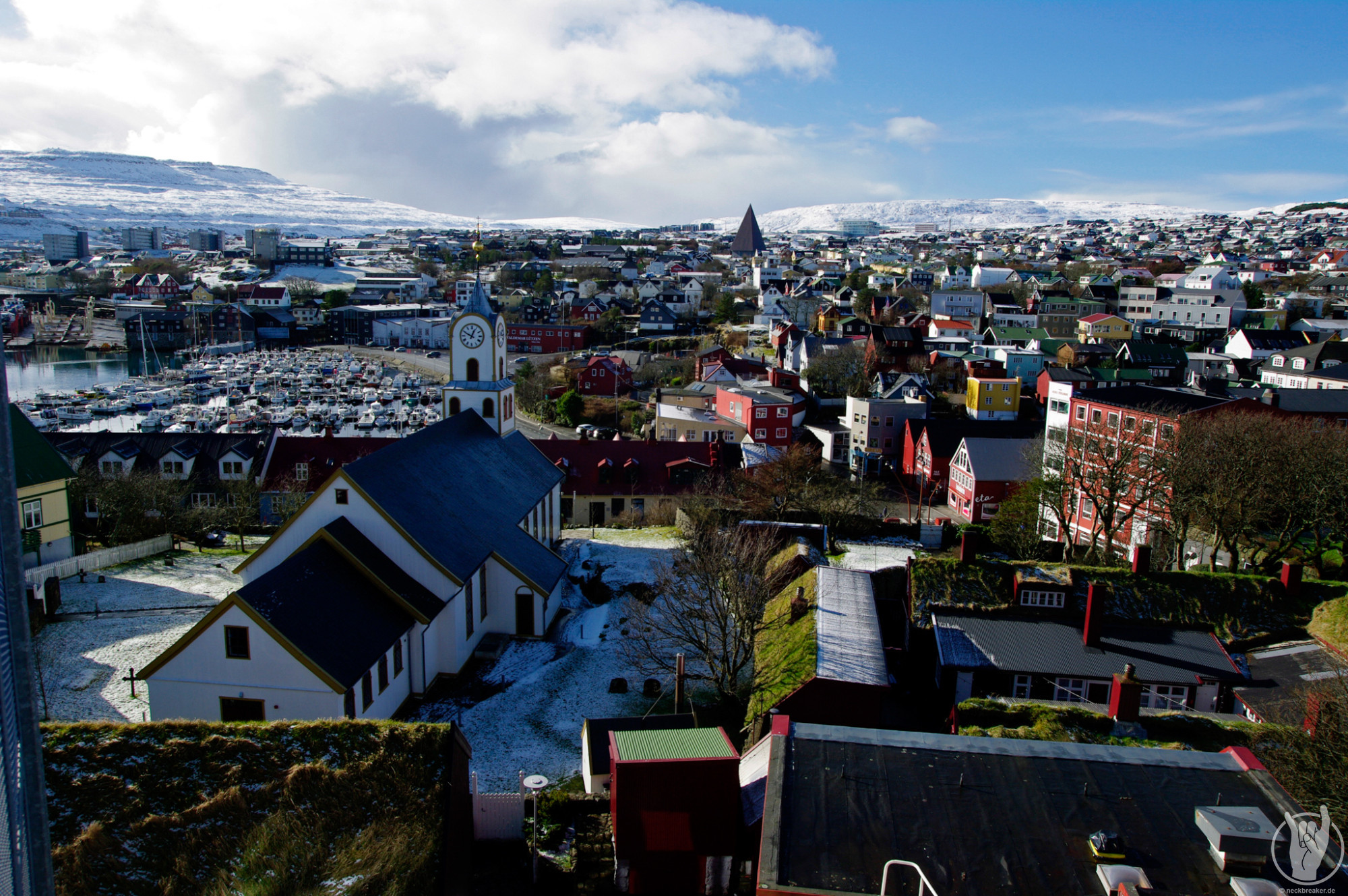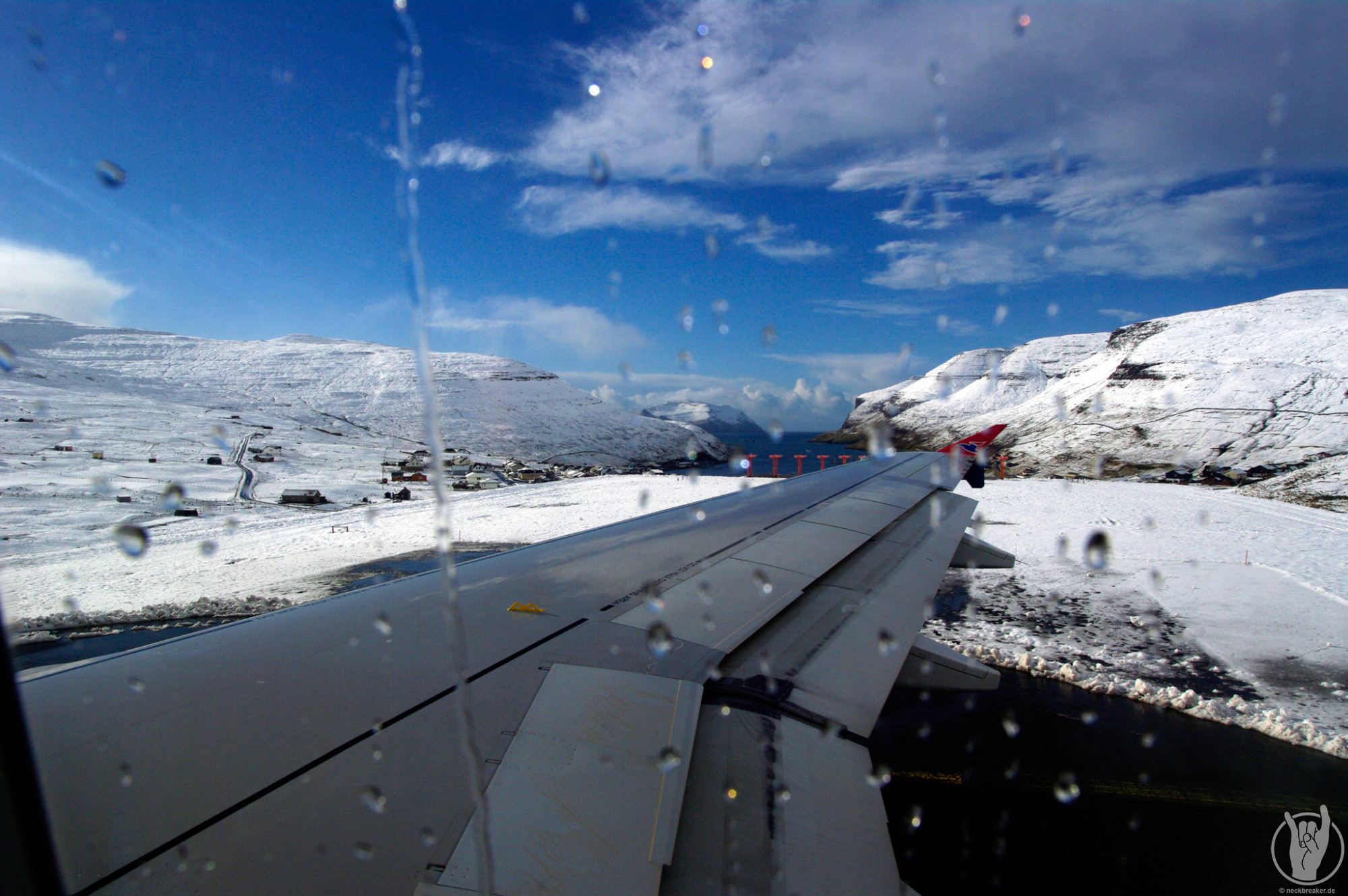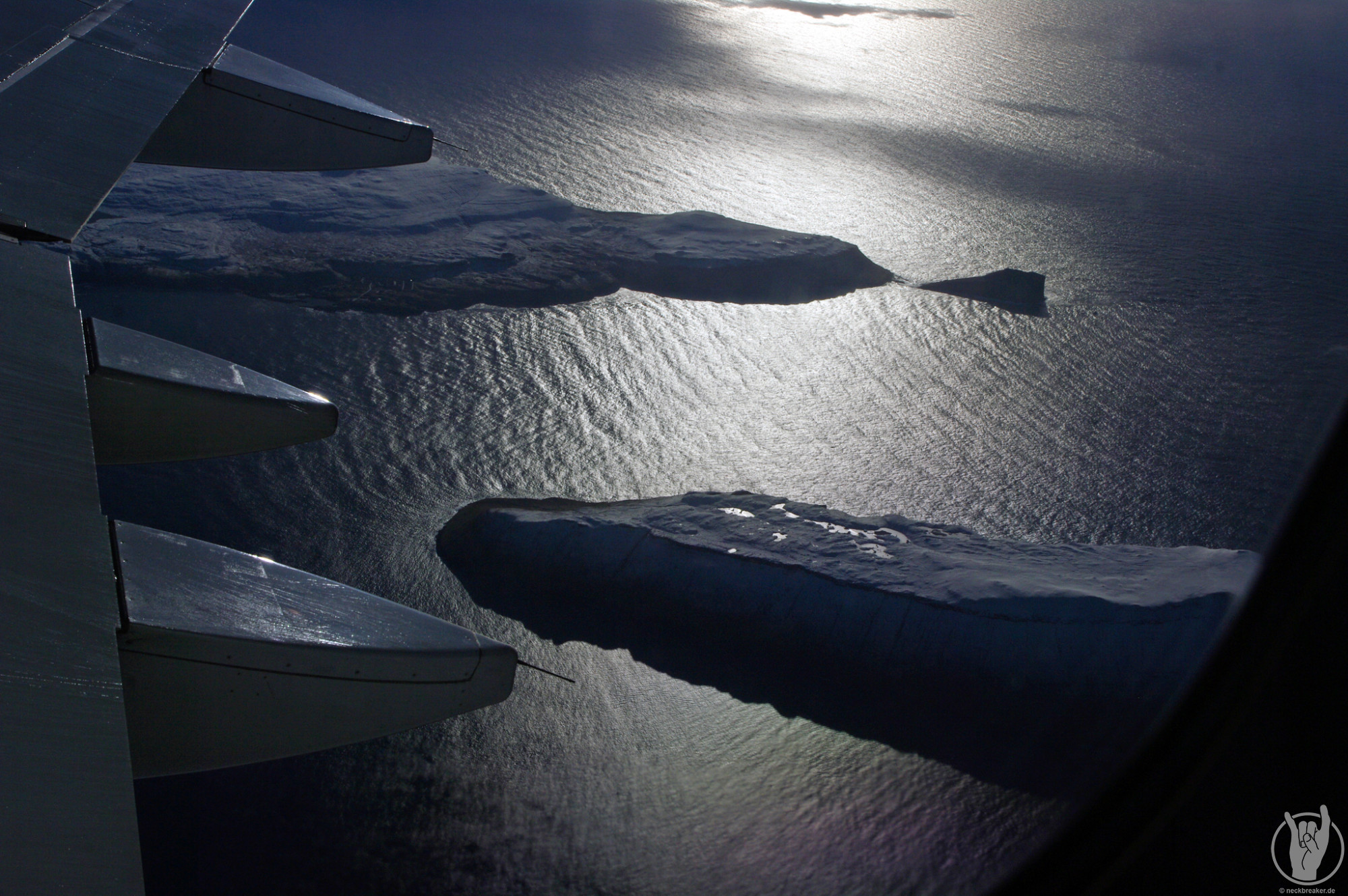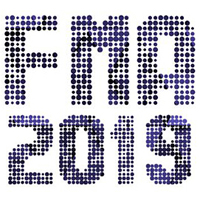 The Faroe Islands are a small archipelago in the North Atlantic, roughly in the middle between Iceland, Norway and Scotland. Its size reaches not even the size of London city and only a small part of the land area is used for agriculture or is inhabited. Only 51.000 people are spread over the 18 islands of which only 17 are inhabited. On these Islands you can find trees only in parks or private gardens, outside of the villages there isn’t a single tree growing. Cliffs rise upright from the sea, some reaching a height of several 100 meters. Steep, stepped, barren mountains tell from the volcanic origin of the archipelago. Thanks to the Gulf Stream the climate is very mild. During the summers, the temperature rarely rises above 20°C, but on the other hand it is also rarely below 0°C during winter. The days of summer are long and bright, while the days of winter are cold and dark. Storms can keep ferries and helicopters from operating so it might happen that you cannot leave your island. Without the ferry or planes you cannot leave the archipelago anyways. So what are you going to do, to kill time on long, dark winter evenings? Music.
The Faroe Islands are a small archipelago in the North Atlantic, roughly in the middle between Iceland, Norway and Scotland. Its size reaches not even the size of London city and only a small part of the land area is used for agriculture or is inhabited. Only 51.000 people are spread over the 18 islands of which only 17 are inhabited. On these Islands you can find trees only in parks or private gardens, outside of the villages there isn’t a single tree growing. Cliffs rise upright from the sea, some reaching a height of several 100 meters. Steep, stepped, barren mountains tell from the volcanic origin of the archipelago. Thanks to the Gulf Stream the climate is very mild. During the summers, the temperature rarely rises above 20°C, but on the other hand it is also rarely below 0°C during winter. The days of summer are long and bright, while the days of winter are cold and dark. Storms can keep ferries and helicopters from operating so it might happen that you cannot leave your island. Without the ferry or planes you cannot leave the archipelago anyways. So what are you going to do, to kill time on long, dark winter evenings? Music.
The Faroe Islands have a music scene which is hard to compare. Measured by the population, the music scene is huge. There is no genre you can’t find there. May it be classical music, Rock, Pop, Hip Hop, Jazz, Blues or Metal. Countless festivals and concerts are held during a year. And here they are pretty innovative. There are concerts held in private living rooms as well as in caves under the islands which you can only access by boat. There are stages of international scale as well as in small clubs and pubs. Many musicians play in more than one band. For metal fans, this isn’t unusual, in the metal scene it is pretty common that musicians play in several bands. But on the Faroes they go one step further and don’t care about genres. You can see the very same musicians on a Jazz evening, at a Pop concert or in a Black Metal band – sometimes at the same evening.
The Faroese are - rightly so - proud of their music scene that is not only very diverse but also of outstanding quality. I am still able to claim that I have never seen a bad Faroese band. Bands I personally don’t like, yes. But a band, that can’t play their instruments, that can’t write songs? No. They even have their own symphonic orchestra. And to this special, small and yet big music scene they dedicate a whole week in March. In 2014 the FAROESE MUSIC AWARDS (Faroese: Føroysku tónlistavirðislønirnar), short: FMA, have been invented where they award the best of the country. But this is just the top of a week that’s running under the name „Spæl føroyskt vika“ – play Faroese week. In radio and TV only Faroese music is played and in the capital Tórshavn every day concerts are held, and to some of them there is free entry.
This year I belonged to a group of journalists, bookers and organizers who have been invited to this week and the FMA to dive deep into the Faroese music scene, learn about Faroese music and meet Faroese musicians. But not only this: Moreover, they organized several trips for us to learn something about the islands themselves as well. The weather god was on our side and we had the best weather for most of the time. Yes, I even got a slight sunburn on the third day.
I wanted to get as much as possible out of my time on the Faroes. Therefore I arrived one day ahead of the others. When I arrive it is raining and storming, the waves smash high against the rocks. This isn’t a weather to go outside. But it’s ideal to do some small errands, buy a Faroese SIM card (as they are no member of the EU the EU roaming rules do not apply here) and visit the Red Cross second hand book store. I spend the evening with a friend so the weather doesn’t matter. The next day I start into the spæl føroyskt week.
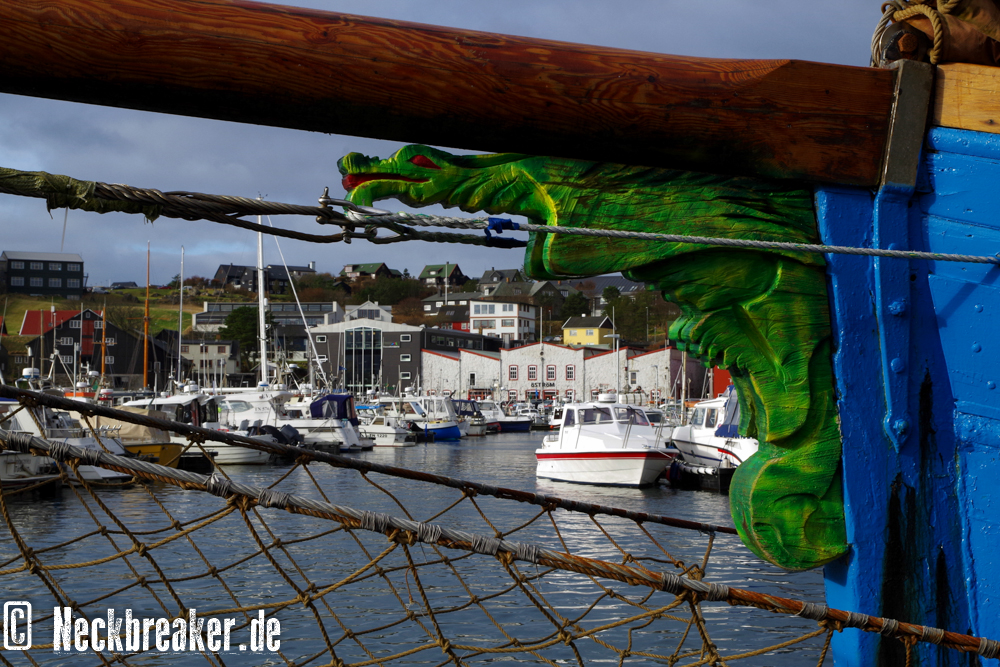
Tuesday, 05.03.2019
The next day the sun is shining from a clear blue sky. It is just the best weather one could wish for. After strolling through the city for a while I take the bus to the ferry terminal Gamlarætt. Exactly when we arrive the ferry “Teistin” makes its way into the small harbour. Note: The Faroese manage what we in Germany are incapable of: Timing different transportation systems. With the “Teistin” I head to Skopun on Sandoy. The waves are pretty high and although I usually don’t get seasick easily, this time I am happy when we finally arrive at the harbour of Skopun. From there I’m starting my hike along the road to the summit of Knúkur. With an altitude of 369 m it is the highest mountain of the island (which is, by the way, the flattest island of the Faroes).
Around 2 km after Skopun a field path branches off from the road. On this I head upwards in serpentines. Until now it is a very easy “mountain hike”. Only the last few hundred meters I have to walk over the field and – of course – climb over a sheep fence. From the summit you have a fantastic view. In the south you can see lined up like pearls on a string Skúgvoy, Stóra Dímun and Lítla Dímun. From west to east you can see Mykines, Vágar, Koltur, Hestur, Streymoy, Eysturoy and Nólsoy. Deep below lies Skopun, looking like a toy city. Even from up here you can see the giant post box that once was the biggest in the world in the village. I was sweating on my way up here, now the wind is blowing so cold that it feels as if my fingers are freezing. I would love to enjoy the view and sun here longer, but it is just too cold and windy.
The way back to Skopun is very relaxing – well, it’s just going downwards. In Skopun I have to find out they deconstructed the public toilet with the scenic name Pisshúsið – now I have to wait until the ferry arrives. Until this will happen I take a short stroll through the village, meeting Faroese dogs and people. It’s very useful you can see Gamlarætt from Skopun, so you can see when the ferry is starting there and you know when you have to go down to the harbour.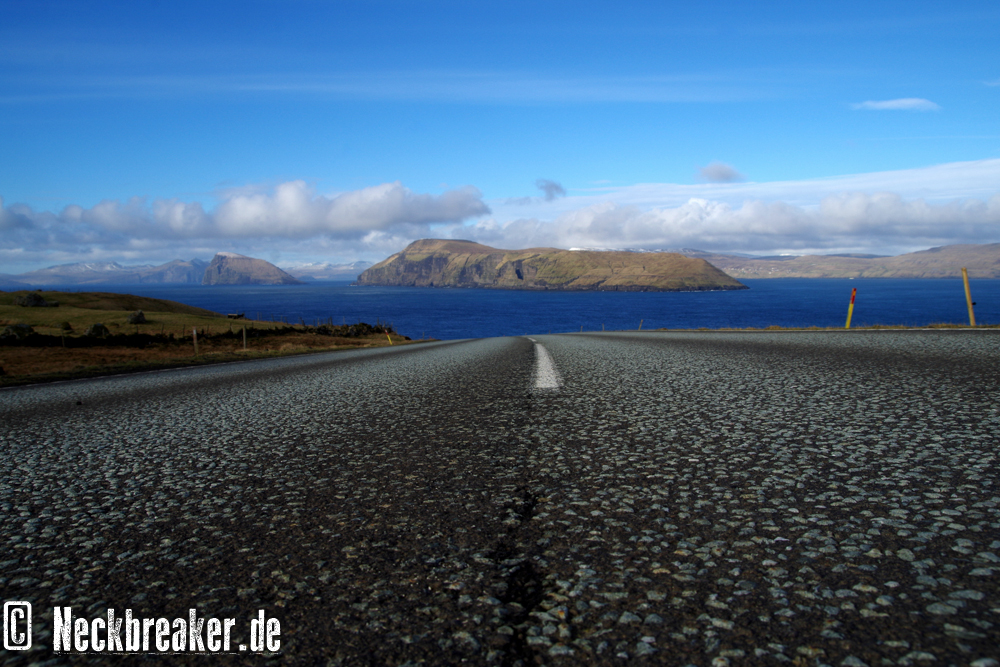
On this evening, at 21:00, we start into our personal music week. In the bar Hvonn, located in the basement of the hotel Tórshavn, a folk concert will take place. Here I meet for the first time some of the other journalists who have been invited to the FMA. Besides the music it’s also nice to chat with colleagues from Germany, Denmark and Greenland. Besides that, I meet my friends Finnur Hansen (who is going to play as well later that evening) and Uni Debess who came over for a beer and enjoy the music.
The introduction is made by Kristian Blak, the central person in the Faroese music scene, then a group of young girls starts playing. In the beginning they, especially the one playing the bass, seem to be very timid. Each one of them is introducing a song with a few words and during their gig they become more and more secure. Especially for a Bulgarian Polka during which the four girls also sing (in Bulgarian!) they receive a lot of applause. In the end, they even have to play an encore. It seems they didn’t expect that, so they just play the Polka again and the audience loves it as much as the first time they played it.
They are followed by another group of girls, obviously together with their teacher. They are accompanied by Kristian Blak on piano. He didn’t have a stool at hand so he just uses - despite being more than 70 years old – a small table as stool replacement. They play some more folksongs, some of them composed by Kristian Blak, for example „Álvastakkur“.
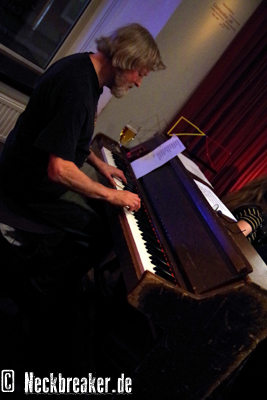
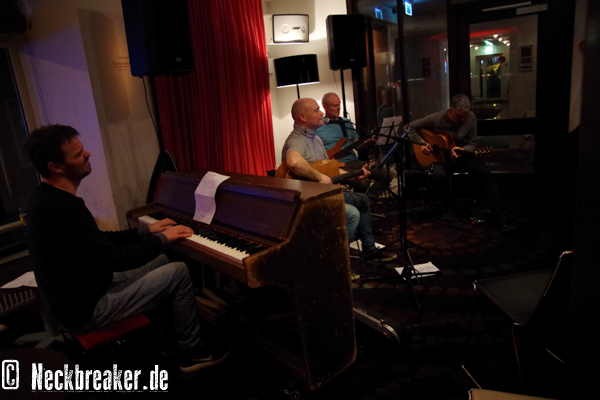
Then Janus Trúgvason and band is playing. First, without band, as during the first few songs it is only him, accompanying himself on guitar. Not before the fourth song the rest of the band is joining him. Finnur Hansen is sitting at the worn out piano that at least on the outside must have seen better times. But somehow most pianos on the Faroes look as if they survived at least several wars. Also the four-piece-band is playing – true to the motto of the evening – folksongs. Among them “Grindavísan”, the only song I – thanks to TÝR – already know.
When the four are done there is another band playing, that wasn’t even announced. But spontaneous happens often on the Faroe Islands. I don’t watch them though, I am just too tired for that today. I chat with Kristian Blak and the newly met workmates. They all arrived today and are therefore pretty tired and so we soon head to the hotel together. It’s a good thing we don’t have to get up early tomorrow.
Wednesday, 06.03.2019
As the official program is only starting at 11:00 today, there is some time left after breakfast for a short stroll through the city. The weather couldn’t be better. At 11:00 we go to Vágar via bus. Normally, when I am at the Faroe Islands, I am also the driver. Now I enjoy not to have to drive myself but just sit there and admire the landscape and nature passing by. And no matter how often you have visited the Faroes – their beauty is breathtaking again and again. In Miðvágur we meet Sølvi Símunarson for the first time. He will accompany us during this week and be our constant contact person. Our first trip is the short hike to Trælanípa, one of the best known viewing points of the country and accessible via an easy hike. We have a local guide who walks that path with us. And here again something typical Faroese happened. Originally we were supposed to have a female guide. But she is stuck on Mykines, as the helicopter, due to strong winds, could not land there. So a geography teacher from Bøur stepped in. This man is burning for geology, nature, and environment protection and it is a pleasure to listen to him. Every now and then he stops to show us some geological characteristics of the landscape.
From the beginning I think the timeframe for the hike is a bit tight. And of course everybody is stopping all the time to take pictures so we walk with a rather slow pace. So when we finally arrive at Trælanípa our guide tells us: “Unfortunately we don’t have time to go up. We have to go back, otherwise we’ll be too late.”. Well... but just sprinting up there and going fast on the way back should be possible? A minute later we’re all standing on top and enjoy the view to the lake that’s named – depending on whom you ask – Leitisvatn or Sørvágsvatn and which seems to float over the ocean. Besides that you have a fantastic view towards the neighbouring islands and even down till Suðuroy, the southernmost island. In the west we can see till Mykines. Pretty late we start the way back. “Well, then Greta has to wait” – typical Faroese. You have to get rid of German promptitude here.
Originally we were supposed to go by foot to the concert location. But as we are so late our guide is just driving us there with his car. He has to do three tours to bring all of us there. Nevertheless we arrive too late at Listastovan (art house) in Miðvágur. The building is a former prayer building that is now being used for concerts as well as adult evening classes. There is especially a lot of room for painting, the floor is covered with colourful stains, paintings are leaning towards the walls. During concerts there must always be a fire-fighter in the room, due to safety reasons. Although “you can just throw yourself out of the windows without dying”. But the acoustics in this room with a wooden barrel vault is excellent. On the Faroes, many things are handled in an easier way and more practical than for example in Germany. The Listastovan has no backstage area so they just made an agreement with a family living close by to use one of their rooms as backstage. They even cook for the playing artists. In the 2017 Faroe Music Awards the Listastovan won the prize for the best initiative – so now we can have a very close look at one of the awards.
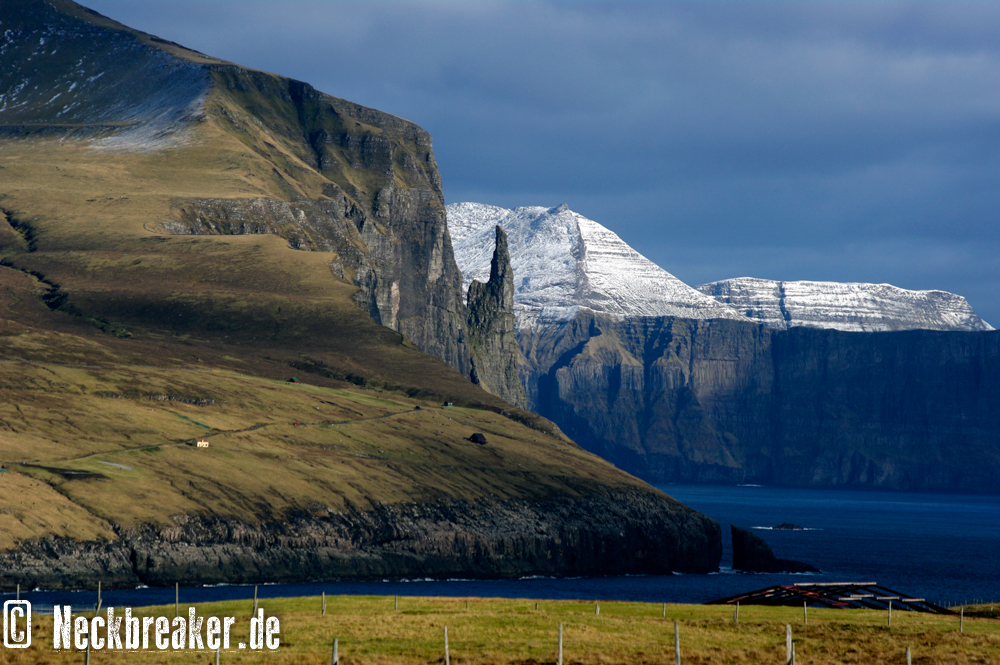
After a short greeting by Mayor Eyðdis Hartmann Niclasen and a little snack the musical part is starting. At first Anna Sofía Jørgensen is stepping on stage. And it really is the first time she plays for a non-Faroese audience. Although she is writing songs since years she just never dared to do it. So now they just pulled her with gentle violence in front of a horde of journalists. On the guitar and also on background singing she is supported by Lea Kampmann who is also a well-known solo artist and who is nominated in this year’s FMA in the category “female singer of the year”. In the beginning Anna Sofía seems to be pretty nervous and shy. The first song she is presenting is “Smile” by Charlie Chaplin. But after that she continues with own material, among it a piece she wrote when her father was diagnosed with cancer. The outcome is a deeply moving, sad goodbye song. After three songs there’s a change and now starts Greta Svabo Bech.
Back in 2011 she was nominated for a Grammy and she still is the only Faroese musician who ever achieved that. She also plays three songs for us and is accompanying herself on guitar, keyboard and synthesizer. In socks she’s sitting on stage, looks a bit confused, pressing the wrong button every now and then, regulating the microphone – and singing fantastic. She’s starting with the heavily synthesized “Shut Up & Sing”. To every song she’s telling a short story. So she realized lately, that one of her songs got a whole new meaning thanks to the Brexit. With “Circles” one of her most known pieces she is ending her gig. And along the way she confirms one of the clichés about the Faroe Islands: She and Anna Sofía are related, cousins of which grade they don’t even know. According to Greta her mother has 80 cousins – “it is hard to keep track”.
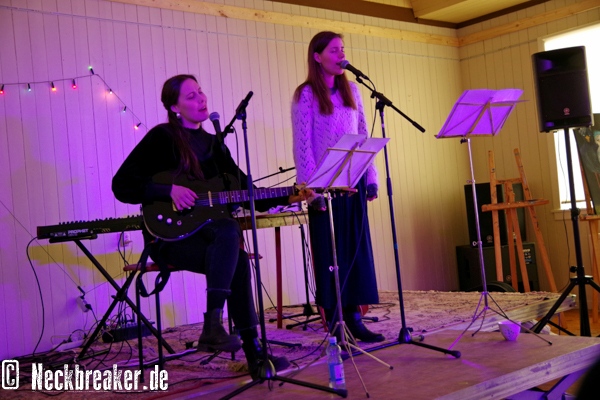
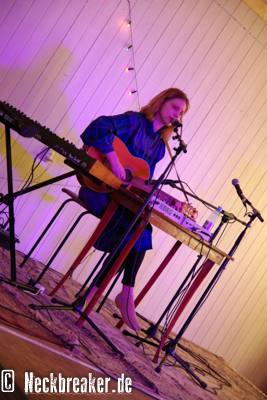
After that we head to Kálvalíð. It is the oldest stone house of the Faroe Islands and was inhabited from medieval times until the 1960s. It became especially famous because it was the home for the widows of the priests. Among them the famous Beinta, whose literary monument was set by Jørgen-Frantz Jacobsens novel “Barbara” which made her known beyond the Faroes. We are guided through the tiny house which only contains two small rooms and a cow barn. Here we’ve been told many interesting things, for example that the building hasn’t always been standing were it is situated today. During its life it was three times deconstructed and rebuild again until it was finally build up at its current place. Inside the house you can find many historical tools, some of them are demonstrated for us. So we get a very interesting insight into what the everyday life on the Faroes looked like up until the early 20th century.
Because we wasted time everywhere (but there is so much so see and hear!) we arrive a lot later in Tórshavn than it was originally planned. Six of us decide to have a quick snack at the famous Fish & Chips at Vaglið. And while we are standing there, waiting for our food with the lovely smell of chip fat making its way into our noses we realize: We will now attend to a classical concert and smell like chips. As Nuka from Greenland says: “Always remember: You are representing your country!” I think we will manage that very well tonight...
At the classical concert my prophecy becomes true: It is much harder to find the entrance than the building itself. The concert tales place in Finsen, the former primary school in Tórshavn. We sit in the former assembly hall which is decorated with many pictures from the Sjúrðar kvæði (the ballad of Sigurd the dragonslayer), made by William Heinesen, the great Faroese author and sculptor. You won’t find pictures of this concert because it was so silent in the hall that the sound of the moving mirror in my DSLR camera would have sounded like a drumbeat. Sometimes the optics have to suffer to save the acoustics.
The first piece played was a duet for violin by Kari Bæk, after that a song for solo guitar by the Faroese composer Sunnleif Rasmussen whom we also met during this week. Due to recent occurrences the song “Danza Del Altiplano” by the Cuban composer Leo Brouwer was also played. Namely Leo Brouwer turned 80 last Friday. The interpreter proudly announces that while Leo Brouwers birthday was celebrated in many countries, the Faroe Islands had been the only one in which a whole concert took place where solely songs by Leo Brouwer were played. Through this, a little piece of the Caribbean found its way to the North. But the highlight of the evening was Beethoven’s string quartette No. 4 op 18, presented in a wonderful way by the Faroese musicians.
Normally, this day would end with the concert but I head to the Blábar, a rather new jazz and blues bar, together with Kristian Blak for a short, spontaneous interview (which you soon can find here). While having a beer we talk about Kristian’s musical work. The beer is a big one and actually the evening is still young and actually I wanted to start with my text tonight. But now I am drunk and tomorrow we have to get up early. So I decide to go to sleep and go to bed early (for the only time this week).
Thursday, 07.03.2019
Today we have to get up early. Already at 08:15 we meet to go together to the ferry “Smyril” which will bring us to Suðuroy, the southernmost island of the Faroes. Our group is heading for the cafeteria – but no, I can’t do this. We are unbelievable lucky with the weather, the sun is shining – I have to go outside. Besides this you have a wonderful view over the city as long as the ferry is in the harbour because the ferry is much higher than most buildings. At 08:45 we start our two-hour journey to the south.
When we leave the sheltered area between Tórshavn and the island Nólsoy off the coast the ship starts rocking pretty heavily. Although the Smyril is a rather big ship one can feel the movement of the waves very well. The waves are so high they even reach the lowest external deck. Those who tried to enjoy the view from there rethink this action. But further up one can sit down, sheltered from the wind and just enjoy the ride. Thanks to the sun it’s not really cold outside and also the movement of the waves is easier to stand outside. Later one of our group tells me that she has just been laying down because she felt so ill. She missed a lot. We sail past a wonderful landscape in the sun. The cliffs rise high out of the sea, white crests dance on the waves and when the wind blows them into thousands of small drops we see little rainbows. It’s just beautiful.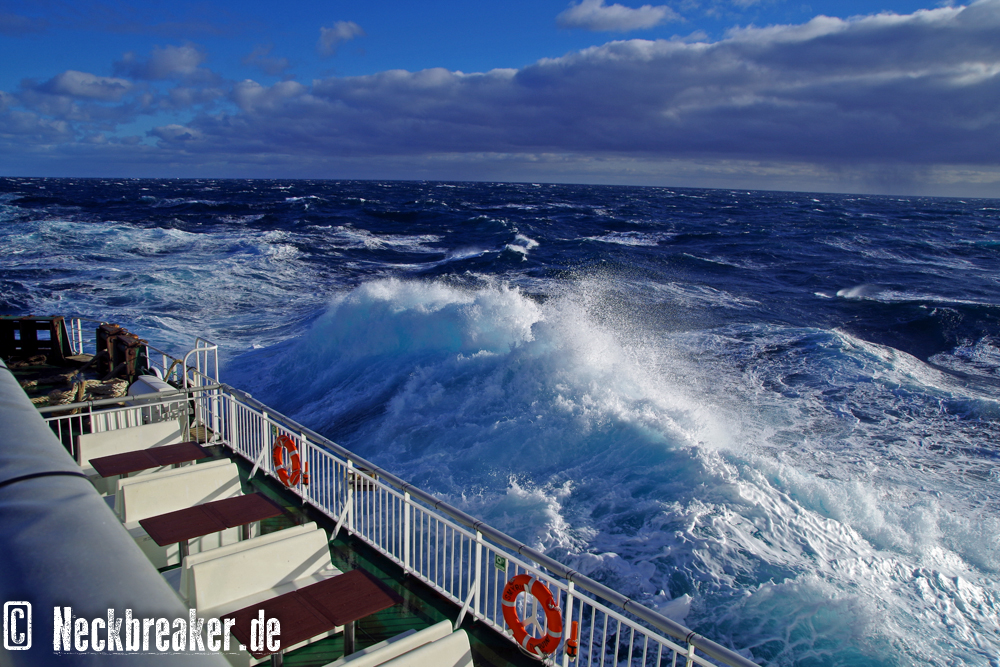
But not so nice things happened as well. My good camera decides, just on this trip, just before the Faroese Music Awards, to commit suicide. Something is wrong with the mechanics of the mirror. So from now on I can only use my old camera. And at the FMA I realize that it is not compatible with my good objective. So from now on I can only deliver pictures of lesser quality. Sorry for that.
A bit late because of the high waves we reach the ferry terminal Krambatangi opposite to Tvøroyri, the main city of the southern island, at 11:00. From here it’s just a stone’s throw to our first station. The old salt storehouse who could hold 10.000 tons of salt was built in 1938 by C.G. Jensen. In October 1941 it was hit by a German bomb in an air raid. The roof was destroyed but the huge girders were still standing. Only a storm in 1944 could finally bring it down and destroy the building nearly completely. But it was rebuilt and used until the early 80s. After that it crumbled more and more and became a ruin. A beautiful ruin, as Ólavur Rasmussen, who tells the story of the building to us, says, but – a ruin. Only a few years ago people started caring about the elegant building again renovated it and turned it into a cultural site, where theatre plays, concerts and many more take place. The whole thing was given a very simple name: “Salt” – no translation needed.
After this short introduction there’s now a concert for us. At first, my friends Pól Arni Holm and John Áki Egholm play. I visited John on Monday and only while talking we found out we’ll meet again today as on the official program only Pól Arni is mentioned. The two play acoustic versions of three HAMRADUN songs for us. First there is “Útlegd” which can be found on the last , self-titled album and after that two new songs which will be on the new album. That will probably be released in September. Pól Arni tells a short story about every song, explaining its history, what the song is about where it comes from. “Útlegd” for example is written from the point of view of Snæbjørn. This Snæbjørn once committed a minor crime but during the sentencing he killed one of the bailiffs and was thus sentenced to death. He managed to flee into the mountains where he lived a few years until he fled to Scotland. It is said that even today some descendants of Snæbjørn are living on Suðuroy. The second song is „Grimmer Går På Gulvet“, the last one is „Síðsta Løtan“. I, personally, prefer the rockier band versions of the songs, but also in the acoustic duo version the songs sound very good.
After the concerts everybody wants to interview Pól Arni and I as well take a few minutes to throw some questions at him. Among other things he’s telling me how difficult it can sometimes be to make new versions of the old Faroese ballads, the so-called kvæði: “Yes, there are loads of melodies and for one of the melodies we played today I called around some of the older guys who do the Faroese dance - they heard about it, but they didn’t know the tune. They have forgotten it. But luckily there was a Danish woman up here in the Faroe Islands in the 60s. There’s a book where she has written down all the notes. So that is one source to get these songs alive again, these notes.”
The second artist on stage is Eyðun Nolsøe. He is one of the best known songwriters on the Faroe Islands and played in the well known band FRÆNDUR. He as well is playing three songs for us. He starts with “Mítt Land”, a piece he wrote because he thought that the Faroese were not united enough. The lyrics are a bit similar to the national anthem – it also bears nearly the same title. “Hvíta Flóki” is the next song and the last one is an relatively new one. „Á Tíni Slóð“ is from the still current album „Dagur Legst At Degi“, released in 2017. After some minutes to talk to the artists we already have to say goodbye because now it is time for our next, most important station: Lunch at Café Mormor in Tvøroyri. The others are served fish soup, I as a vegetarian get a delicious sandwich. Along with this: beer. Of course Faroese beer.
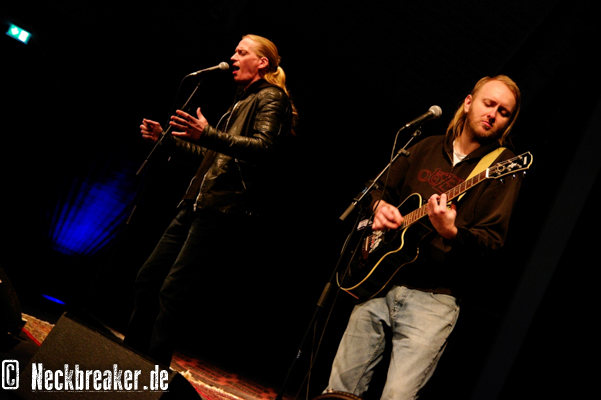
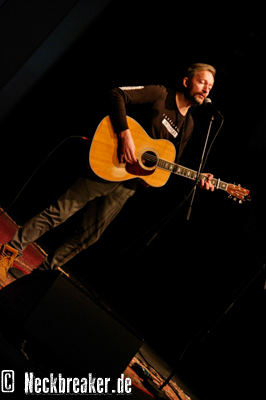
After that we head for the big island tour. Our bus driver and guide, a retired sailor, stops for the first time already after a few hundred meters. He shows us the boat house of the rowing club where he is a member. So we get to see some more than 100 years old traditional Faroese boats in different sizes. The next stop is Vágur (not to be mistaken with the island of Vágar) where we have the possibility to cast a short look at the steep cliffs at the western end of the village. Through the tunnel we head to Sumba, the southernmost village of the Faroes. Again we take a short stop at the harbour – the sailor is drawn to the sea again and again. It is always fascinating to see how much effort is necessary to build a save harbour on the islands. And during winter they still have to bring the boats into boathouses high above the sea. And even there they are not always save. Our guide tells us that one or the other boat house has been torn down by a heavy winter storm in the past. Hard to imagine in the nice weather we have today.
Now we head to the southernmost point of the Faroes, Akraberg. It is said that once Frisians lived here. Today there are only a few houses standing and there’s also the lighthouse. And of course sheep. Before the lighthouse was automated the lighthouse keepers lived there with their families. Here we have a nice view as well. Southwards there is nothing to see than the vast, open sea; only 250 km further you will meet land again in Scotland. We don’t have so much time to look around here and we take the old mountain road on the way back. During nice weather – like today – it offers fantastic views. That’s also new to me. I have been driving that road several times last summer – but always in the thickest fog. So now I stop for the first time at the cliff line Beinisvørð, which I didn’t do last summer. Only a few meters from the street the cliffs fall steep and deep into the sea. Deep down below us we see two stakkur, that’s what they call sea stacks here. They look tiny from above. Birds fly past us, some sheep run away from us and the view over ocean and island is breathtaking. And of course everybody has to take a picture of one of the very few warning signs you see on the Faroe Islands.
Back in Vágur we stop at Café Bakkin where we get a snack with waffles everyone can improve him/herself with sweets like rhubarb marmalade (my favourite!), chocolate cream, cream, nuts and fruits. As drinks there is coffee and tea that is often drunk with milk here, like the English do it. Again we aren’t the fastest and suddenly we realize that we have to hurry now if don’t want to miss the ferry. As the last passengers we jump on the ship that takes off shortly afterwards. John is also taking the ferry to Tórshavn and together we dedicate ourselves to the rosé. I don’t know if that is the reason or if I just don’t tend to get seasick but also now, inside the ship, I don’t mind the waves. This does not apply to all members of our group.
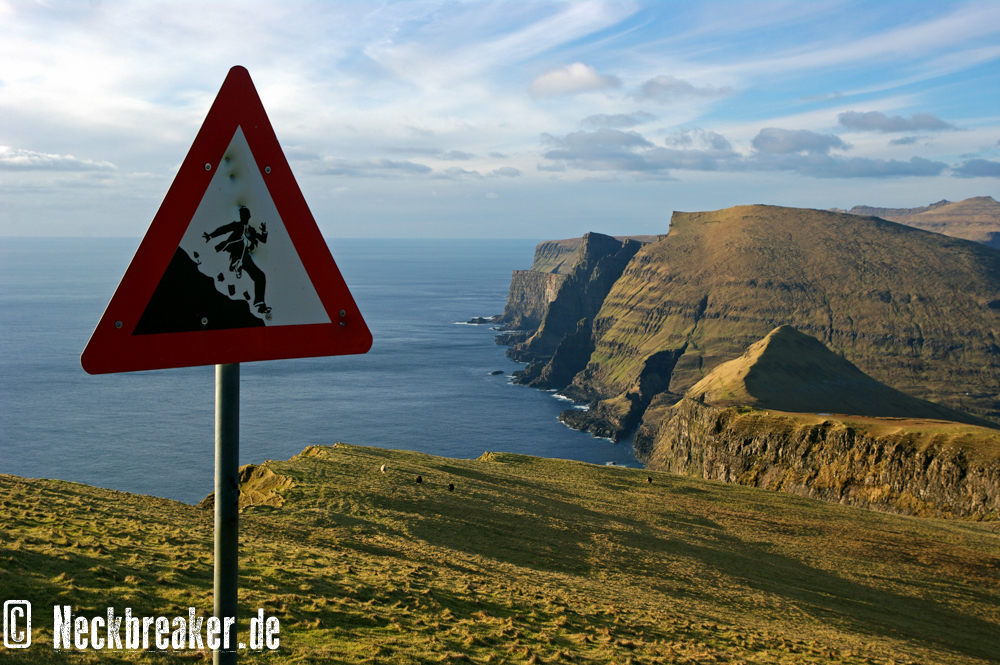
Back in Tórshavn we head without stopping to the next concert. In the Blábar they hold a Jazz concert for us. First, the Duo Agnar & Herluf plays on contrabass and guitar and they proof how silent one can play. I’m drinking a coke with ice and I don’t really dare to drink as you can hear the ice cubes clinking so loudly that it disturbs the music. For that reason there are no pictures of the two. The camera would have just been too loud.
Subsequently we see YGGDRASIL in one of their many line-ups. Kristian Blak introduces the band and mentions that usually two of the members are Icelandic and “you really shouldn’t have more of them in a band”. As always, Kristian likes to talk and he talks a lot and introduces the first song, “Hugin”, a piece from the 1982 album “Ravnating” (raven ting). Behind the stage is a screen were they show pictures of ravens while they play and Kristian Black on piano mimics raven calls. But Kristian Black wouldn’t be Kristian Blak if he wouldn’t have explained to us beforehand how ravens call in different countries. Because not only humans speak different languages, ravens do it as well. Then we listen to a song from Greenland and in the end they play a song about Geronimo, where Kristian is singing like an American Indian.
Now it’s time for the PAULI POULSEN TRIO to enter the stage which in fact is just an emptied out corner in the bar. The owner of the bar, Rógvi á Rógvu himself, is sitting at the drums and smiles all the time. Normally I try to avoid Jazz because I consider this genre as being too exhausting to listen to. But the Pauli Poulsen Trio is playing a pretty cool version of Jazz which I like.
The last act of the day is my friend UNI DEBESS. And here as well something typical Faroese happened. Actually he was announced together with Rógvi á Rógvu (right, the owner is again sitting at the drums) as Blues Duo. But when he realised his uncle who originally doesn’t belong to the PAULI POULSEN TRIO his here tonight and has his bass with him he asked him spontaneously to play with him. And so we’re going to see a Blues Trio instead of a Blues Duo. We now hear a few songs some might already know, like „They Call Me The Breeze“ by B.B. King, as well as some covers Uni Debess published on his solo record „Regards To The Roots Vol. 1“ like „Boom Boom“ by John Lee Hooker, „Black Magic Woman“ by Peter Green and „Pride And Joy“ by Stevie Ray Vaughan. Uni’s long talking about Bob Dylan ends in the conclusion of the rest of the band that Bob Dylan has written 16 albums while Uni only managed to write one song in Bob Dylan style. Which is very entertaining for the audience. They also build in a drum solo. And of course “Sugar Mama” should not be missed as this song was ranking pretty high in the Faroese charts last year. Uni is not only accompanying himself on guitar, he also plays harmonica every now and then. I would have loved to listen to him way longer. I just like Blues a lot more than Jazz. But every evening has to come to an end.
However – not mine. As I haven’t met Uni since July last year we start talking after the show and as things are, more and more people join in the conversation and all of a sudden we are the remaining six people in the bar. Owner Rógvi á Rógvu is giving out drinks for free, gives is new album, that has just been released, two times to me (“They gave me 1000! What am I supposed to do with 1000? I wanted 300!”) and in the end I have to taste his homemade chilli schnapps. Wow, that is burning several times! At 01:00 I leave the Blábar just to end at the reception of the hotel where I talk until 02:30 with the night porter who is another friend of mine and I haven’t seen him since 2015. Because of the good weather I try to get some night pictures afterwards but I don’t succeed. Of course, at that time during the week all lights are shut down. So I fall into my bed at 03:00. Luckily the program tomorrow will start a bit later.
Friday, 08.03.2019
Today is the day with the least program. But therefore it’s going to be a long evening. Only at 11:30 we have to be at the Nordic house, the Norðurlandahúsið. We just walk there by foot through the park. At first, we get a guided tour through all rooms. Here they have rooms for art exhibitions, an own room for the Faroese chain dance (but it is not danced during lent) and of course the big hall where tomorrow the FMA will take place. People here are already working hard to prepare everything. Also the history of the building is explained to us. The Nordic House belongs to a series of Nordic houses all over Scandinavia. In the building materials from all over Scandinavia have been used. The steel girders and the glass are from Denmark, the floor is made of Norwegian granite, the walls are covered with Swedish wood and the visitors sit on chairs from Finland. The roof construction origins from Iceland, while the grass itself comes of course from the Faroe Islands. Therefore it fits perfectly into the landscape. For this reason the Nordic house is not only interesting for people with cultural interest but also for people who are interested in architecture.
After the guided tour there is a brunch for us and nearly all meals – unusual for the Faroes – are vegetarian. And organic, as they point out more than once. As we today only have one further date according to the program we have plenty of time to enjoy the fantastic view from here and to talk with the people from the Nordic house as well as from the G! festival. Some of us go to the city for sightseeing purposes, some use the time for working and I use the free time to visit the author whose book I am translating right now because we have to talk about some things.
In the evening at 18:30 our next date begins. We meet in the restaurant Katrina Christiansen which belongs to the hotel Hafnia for the Meet & Greet where we meet many of the officials for the first time, among them for example the moderator of the FMA, Rólant Waag Dam. And some journalists arrived only today as well.
After the meal we all head to the Reinsaríið, where a pre-FMA concert takes place. This isn’t a concert especially for us, it is open for everybody to attend and the room is well filled. The first band playing is SISSAL. The young artist is nominated as female singer of the year in this year’s FMA. She just released an album and because of this we only get to hear songs from this album, like the calm “Drifting”. Like so many Faroese musicians she is introducing each song with some information about origin and meaning of it. For example when she was attending a festival that became victim to a storm and when she drove past the festival area the next day, everything laid in ruins. Only a lonely chair was still standing and appeared to watch the scenery. She immediately felt the need to write a song about this situation and so “A Lonely Chair With A View” was born. But my favourite is the dark and a bit dull “Secrets”. Sissal has a fantastic voice, but I think her stage acting could be a bit better. She appears, especially at the beginning, a bit shy. But all in all she’s presenting very quiet, pleasant, handmade pop music, which deserves to be heard.
The next artist is introduced to us as “the cultic voice of the islands from Gøta“. I have never heard of LYON. During the first piece he is accompanying himself on the piano and I think: This voice sounds a bit strange somehow. The next song is “Juliet”, yet unreleased, and here Lyon Hansen accompanies himself on guitar. And here I fall for him. What a voice! Yes, in the beginning it sounds a bit strange. Or better: special. And exactly that is what makes his voice so attracting. He differs positively from other singers and that makes him memorable. And he as well is telling short stories between the songs. But with a decent sense of humour so the audience is laughing again and again. For example when he talks about a holiday trip to Cornwall and while all his friends wanted to take a swim he felt much more comfortable to be on the beach together with his guitar. From the last album, the self-titled debut, he plays “Sister” for us, before we get to hear many new songs. Among them an a cappella song about death (and he also masters the a cappella), a slightly psychedelic song about an ape that was shot into space and a piece named “Scenes From Dreams II”. It is really a pity that LYON was only allowed to sing so few songs, I would have loved to listen to him much longer.
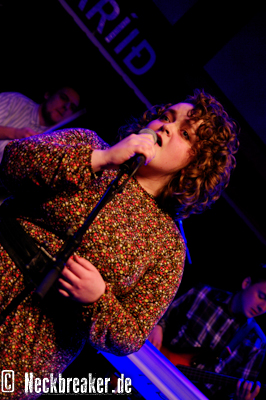
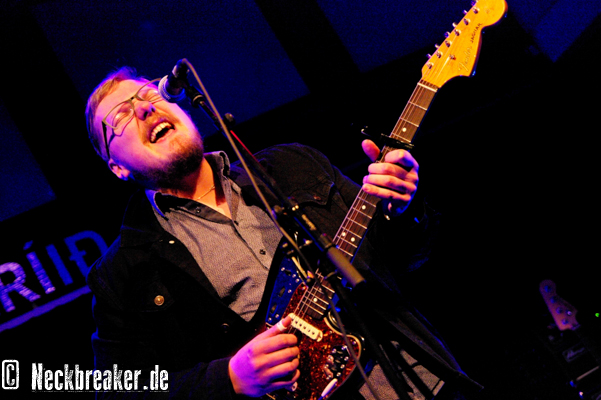
Fróði Bjarnason Joensen, who’s releasing his songs under the moniker FRODI BJARNASON is the next one. He opens with “Scandinavia”, a song he released half a year ago. The likable young man is – like the others before him – introducing nearly all of his songs. They often have very short names, like “Winter” or “Diary”. Besides that you notice something typical Faroese here: some of the musicians who were playing with SISSAL can be seen again. Many Faroese musicians play in different bands that may very well play different musical styles. With “Where My Home Is”, a beautiful singer/songwriter song Fróði’s gig ends. All in all I really liked this gentle pop rock with singer/songwriter tendencies. Also, Fróði’s voice is really nice. To him I would as well have liked to listen longer to.
As the last band of the evening plays DANNY & THE VEETOS. The name is not unknown to me, but I never really looked into their music. Officially the band contains 8 members but today only 4 of them are on stage. They offer us a world premiere as they will only play songs from the new, soon to be released album and which have never been played live before. From the band’s name I would have expected something wilder, to be honest. Singer Danny Baldursson lives his music and is moving every second; during one of the songs he and the trumpet player hit an extra drum with drumsticks that glow in the dark, which is a nice show effect. But that doesn’t change the fact that in the end DANNY & THE VEETOS just play more or less ordinary pop music that only becomes a bit special thanks to the trumpet. The band is nice, and nice to see – but it’s not knocking someone’s socks off.
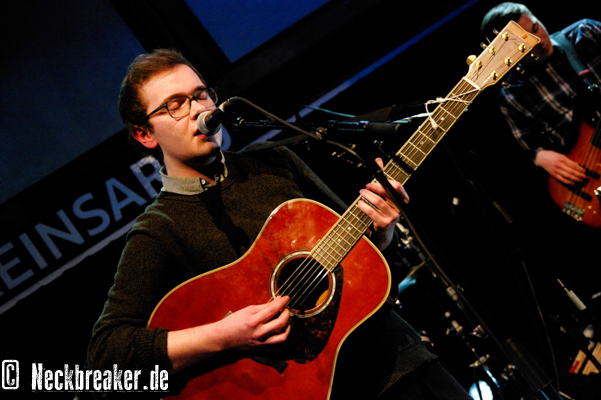
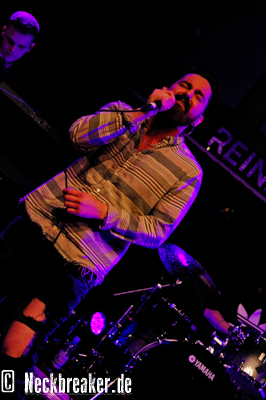
And then another typical Faroese thing happens. Today is International Women's Day. It was celebrated massively in Tórshavn, there was a demonstration in the afternoon and now there’s a concert where only female artists will play. The concert (as well as a photo exhibition) is taking place in Perlan, right next door to Reinsaríið, so we only have to get out of one door and slip into the next. The typical Faroese thing: people are flexible and think practical. The women celebrating themselves just wait with their concert until the one in Reinsaríið is done. Because everybody there knows that, people do not hesitate, and nearly the whole audience and nearly all musicians head over to the next club and celebrate the female artists on a late night concert. And while the musicians on the first concerts pampered us with English announcements, the women don’t care about that and do the announcements solely in Faroese. A bit bad for my colleagues who don’t speak Faroese but luckily I understand nearly everything.
First on stage is GRETA SVABO BECH whom we already saw two days ago. A Faroese friend of mine said that Greta always looks a bit as if she was just nearly run over by a car – in a very artistic way. And that’s really kind of true. On stage she always looks a bit puzzled, as she’s sitting there in socks (also typical Faroese – many Faroese musicians don’t wear shoes on stage), every now and then pushing the wrong button and ruining her own announcements (I think “whoops, sorry!” where her most common words). But musicwise she is just fantastic. She starts with “Invisible”, a song she worked on together with the project THE BLOODY BEETROOTS of the Italian electro producer Sir Bob Cornelius Rifo. After that we hear the “Brexit-Song” and “Circles”, both of them have been presented to us in Listastovan as well. As last song she plays her current single “All My Bones”, which I really like. And just as it starts being fun, Greta is done with her gig. A pity.
FRUM is different than other Faroese musicians we experienced until now. Jenný Augustudóttir Kragesteen, the woman behind the project FRUM, sees herself as a holistic artist who not only creates music, but also music videos that are art projects in themselves and most of the time contain artful dancing. I have already seen her on last year’s G! festival where I liked her pretty much. Today she’s sitting in total darkness, is nearly invisible and the only optical attraction is the same video sequence from her video to the song “Let it”. That is a bit disappointing because she has done so many videos which would have been worth showing. She as well - I think – is playing some new songs before she’s playing “Beat” as her last song (there’s a video to this song on YouTube, too). She is also talking a lot between the songs – although she thinks at the same time that she is talking too much (No, you’re not.). Many of her songs she sings while kneeling, working at the synthesizer. She has many fans in the audience and three of them don’t refuse to dance to her songs although the room is literally packed with people.
The last artist is the one with the biggest fan base – measured by the volume level. JASMIN is a very young artist who on the Faroes first attracts attention by her look. And then with her voice. Wow. I was very curious to see her because I kind of liked those of her songs I listened to beforehand. Or, more precisely, I like Jasmin’s voice. She has an enormous souly-bluesy voice for such a young woman that pulls nearly everybody under her spell. Unfortunately you cannot say the same about her songs. They’re not bad, but in the end, they’re just pretty ordinary electronic pop with a souly touch and the lyrics are typical teenager girl lyrics. Only her incredible voice is changing everything. I am pretty sure that when she is a bit older and writes a bit more grown-up songs she can become really big. Live she’s celebrated already now. She has a big fan base; every single announcement is cheered and screamed to. Today she plays among others “Remember”, one of her best known songs (while she at the same time resigns to play “Baby Blue”) and as closure she plays “Any Other Night”, a brand new song she wrote just two weeks ago. The audience goes crazy over her gig so she has to play an encore, which is “I Can Move”.
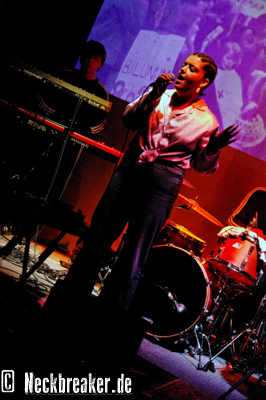
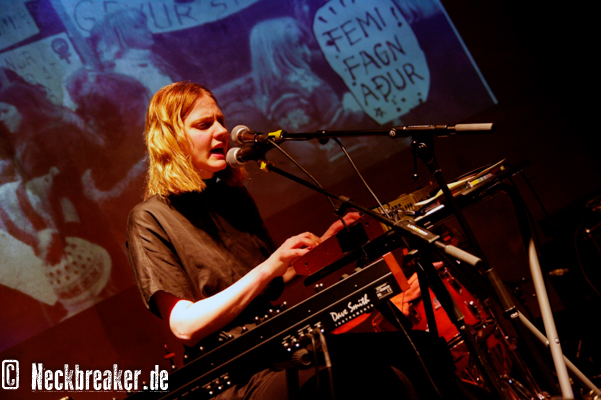
In the meantime it is well after 01:00, the day was long and many of us head back to the hotel. Tomorrow will be a tight program as well.
Saturday, 09.03.2019
Today is the big day! This evening the prices will be awarded. But first there is still some musical program for us. The first station is the record store Tutl in the pedestrian area in Tórshavn. Immediately after I received the invitation I expected this to be one of the program points. But it’s really worth it. Tutl means “whisper, mumble, twaddle” and it sounds like the sound of waves dancing over rocks. Tutl is the name of the record store of the islands. It is not the only one, there are one or two other shops that sell CDs as well, but Tutl is THE record store. And Tutl is the Faroese label. It was founded already back in the 70s by Kristian Blak, the father of the Faroese music, of whom all Faroese musicians speak with respect although they of course do some nicely meant jokes about him.
Kristian is telling us about the history of the label and the record store (more about that can soon be read at Neckbreaker), spiced with funny episodes like “and then they didn’t want us anymore in the shopping mall because we had long hair”. As a bonus we are allowed to take a whole lot of Vinyls and records with us. Kristian Blak explains that they work with a partner where it costs the same, no matter if they order 300 or 1000 CDs. So they order 1000 most of the time. Which also explains the many, many CDs Rógvi á Rógvu was complaining about (see Thursday). Kristian is a natural born entertainer and although we surely are 45 minutes or even longer in the store we still feel that we didn’t hear everything. By far. In the end, everybody is also buying a few albums of his/her own choice but our next guide is already there and hurries us to the bus. We are late, once again.
Now we head to Klaksvík, the second largest city and fishing capital of the Faroes. We choose the more scenic route along the old island road. On the highest point there is still snow on the road (they do not clear the road up here). Along the way our guide tells us what we see left and right of the road. Above the former NATO station, that now is a prison, we stop to take some pictures. Who is planning to become a criminal anyways should do so on the Faroes (but only minor crimes, dangerous criminals are sent to Denmark). The jail here has no fence (where would you go anyways?), but a mini golf course and one of the most beautiful views of the islands.
Today we are not lucky with the weather. The further north we get, the more it rains and when we arrive in Klaksvík it’s even snowing. We drive to the Spaniastova, one of the oldest buildings of the town. Once there was a grocery store in the building and a lot of the furniture from that time is preserved. At the same time it is a modern cultural centre where they organize – among others – concerts. And so today there is a concert for us.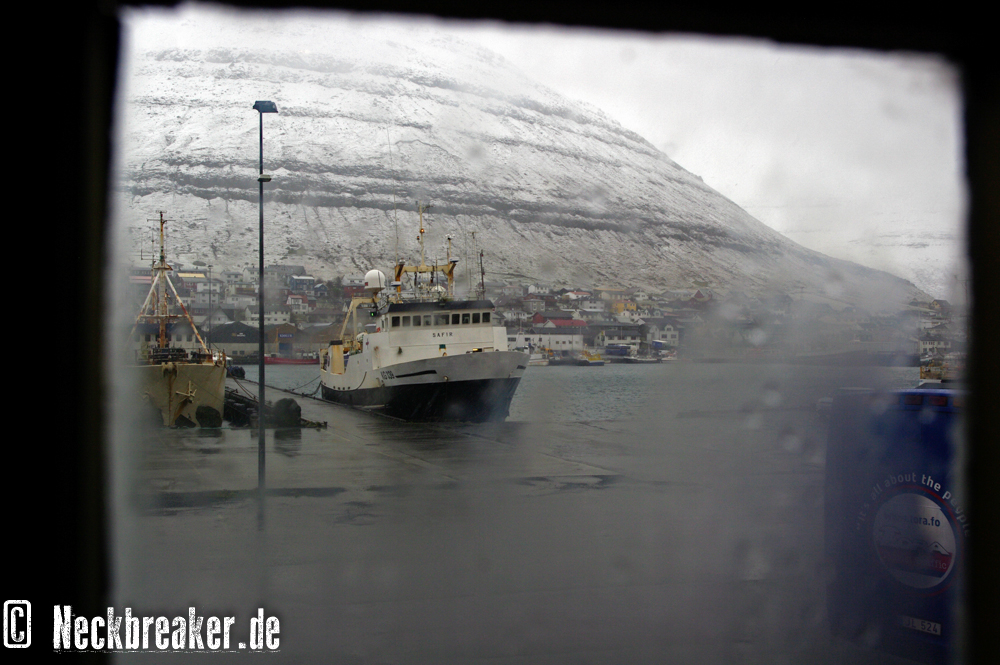
But first we are greeted by the mayor of the city who tells us about the history of the city as well as the history of the Summar Festivalur which takes place every year in August. Many of my colleagues have heard of it before but when he asks who has been there I am one of only a few who raises her hand. It’s interesting that the festival origins in a sporting event, that is to say a rowing competition. The responsible people of the city thought it was a pity that the people went home right after the competition and didn’t stay to celebrate. So what was needed was an idea to keep the people in the city. And thus, the idea for the festival was born.
In the beginning, they had to fight pretty trivial problems like the traffic jam in Leirvík because the subsea tunnel to Klaksvík didn’t exist back then and everybody had to take the ferry. And also Germans had been indirectly involved in the evolution of the festival. The SCORPIONS only agreed to play on a stage of international scale. So they build a stage of international scale back in 2007 – and it got destroyed at the last day of the festival by a storm. But Faroese people don’t let a storm stop them and the festival kept growing. Every year big international names like WESTLIFE, CLIFF RICHARD, TOTO or ROXETTE play here. This year the festival will take place from the 08.-10. August. So who is going to travel to the islands around this time should consider attending the festival as well. With a smile they answer the question, if the festival has brought any changes for the locals: There is a significant rise of the birth rate every year 9 months after the festival.
Regarding the music we now listen to Rani Nolsøe, brother of Eyðun Nolsøe, whom we saw Thursday. As well as Eyðun he became known as a member of the band FRÆNDAR. He plays three songs for us, one of them about the Faroe Islands, one about the summer and another one. Rani sings and accompanies himself on guitar. He plays beautiful singer/songwriter music, but I have to admit he doesn’t leave a permanent impression.
Second comes Hans Andrias Jacobsen. He as well is not unknown on the Faroes. Back in 2012 he won the Planet Awards for best new solo artist. Hans Andrias impresses with his beautiful, smoky voice. He is presenting Songs from his still current album “Vision” from 2016. In „Haze“ his voice stands out extraordinarily. He finishes „Wasteland“ with an end that will be remembered for quite some time. He leaves, still singing and playing harmonica, the room. In the beginning we thought he will come back to receive the applause – but no. He stays hidden. The mayor comments with “Elvis has left the building!”.
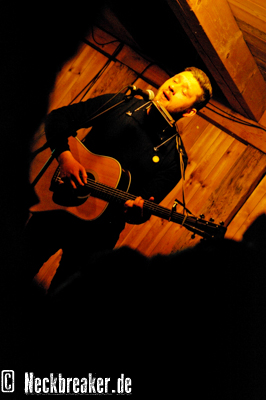
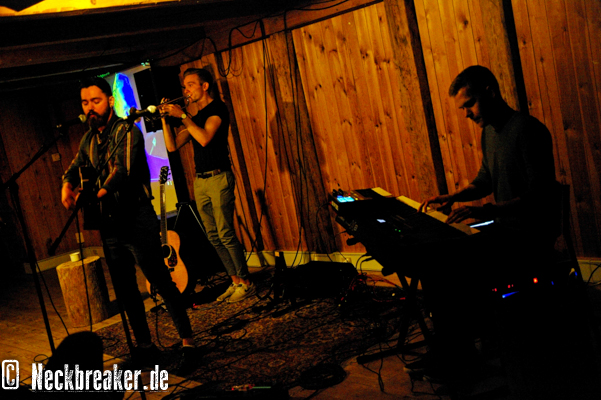
Bu we will not yet leave the building. Now we’re going to hear a (more or less) acoustic version of DANNY & THE VEETOS. Slowly we get the feeling that they especially want to – for whatever reason – sell this band to us. And I mean – they are all nice people, but the music really isn’t that thrilling. At least there is some musical variety. Yesterday they played only new songs; today it will be old ones as well. Among them a song with Faroese lyrics, named „Stúr Ei Meir“ from their latest album “Hint Of Melancholy”. And to “Why Am I Running?” (I guess that’s the name of the song), we all have to sing along the chorus. Well, it is fun – but they couldn’t convince me with this gig neither.
After a short snack – fish soup again – we head back to Tórshavn, this time on the fast route through the tunnel. A few hours remain to eat a bit and to prepare for the Faroese Music Awards. What it was like to be there you will read in a separate article. (Anne)
FMA 2019 - Die Woche davor (Fotos: Anne)


















































































































































